After waking up at the Apollo Hotel, we had breakfast in the restaurant and headed via train to Rotterdam and boat to Kinderdijk, a UNESCO World Heritage Site featuring historic Dutch windmills. After, we returned to Rotterdam where we saw the city’s unique cube houses and had dinner at the Market Hall.
Morning
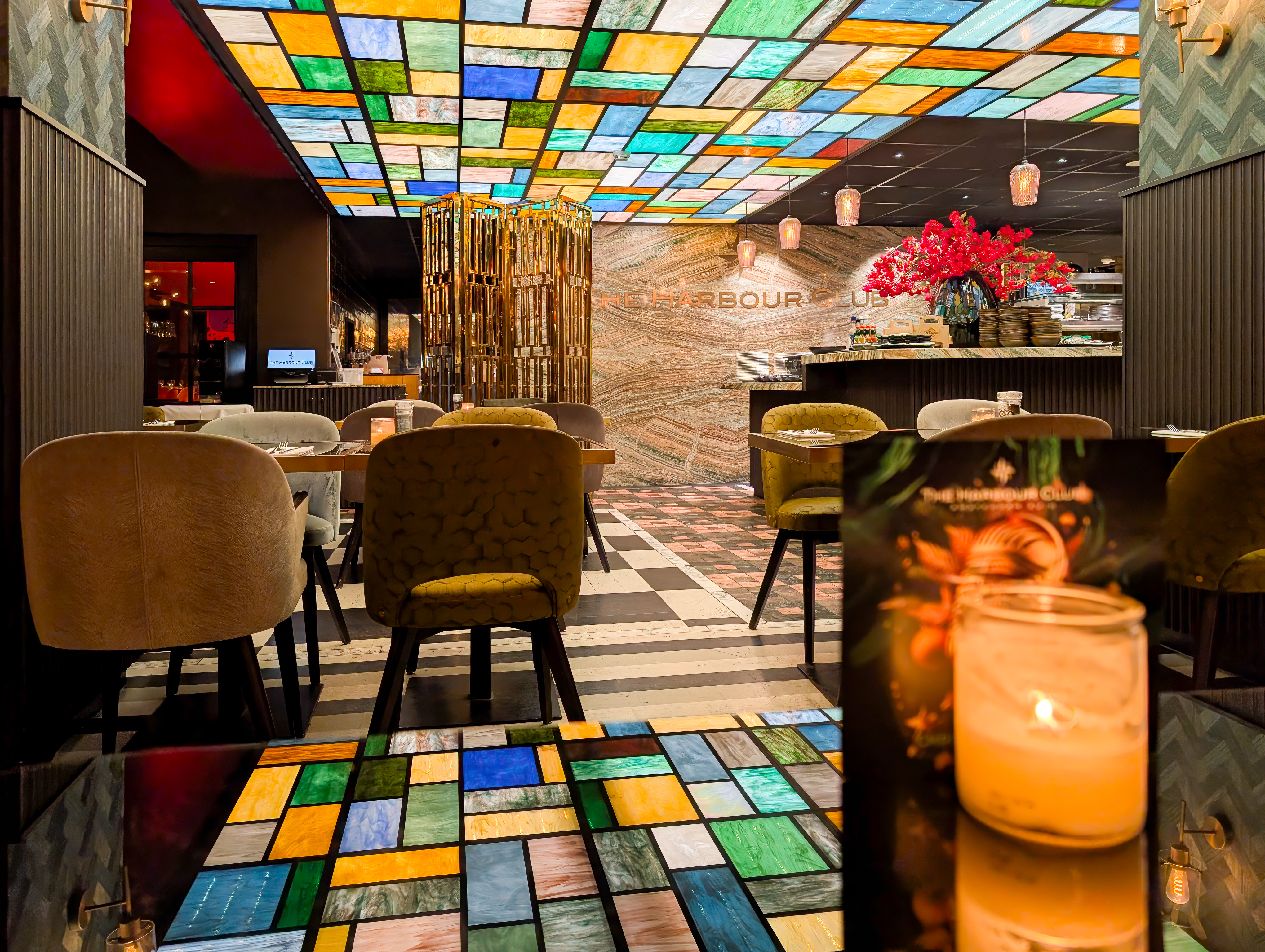
Yesterday morning, the restaurant at the Apollo Hotel was short staffed when breakfast began at 6:30am. Today, they did not have any issues and hot items were available immediately when we arrived just after opening time.
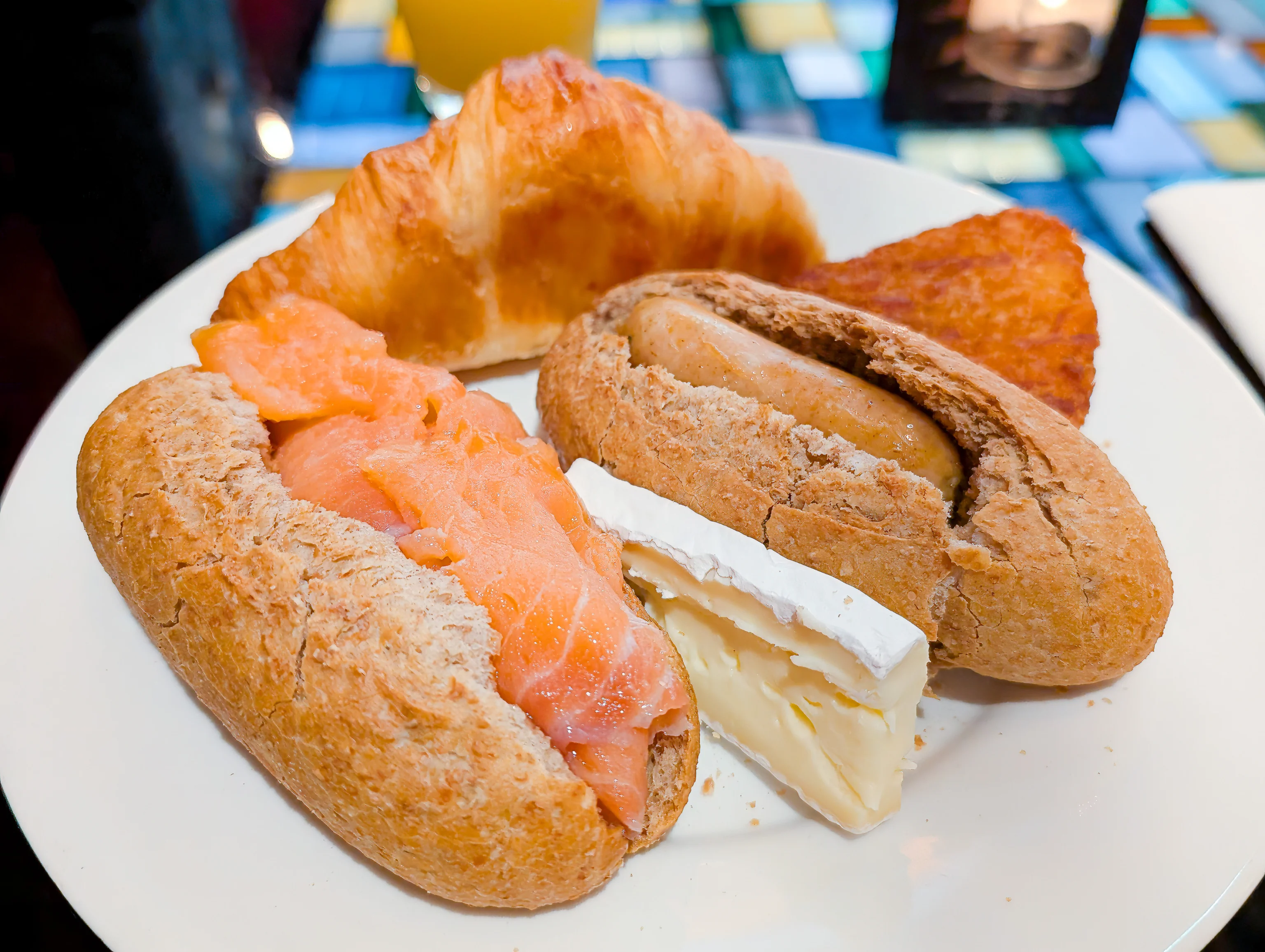
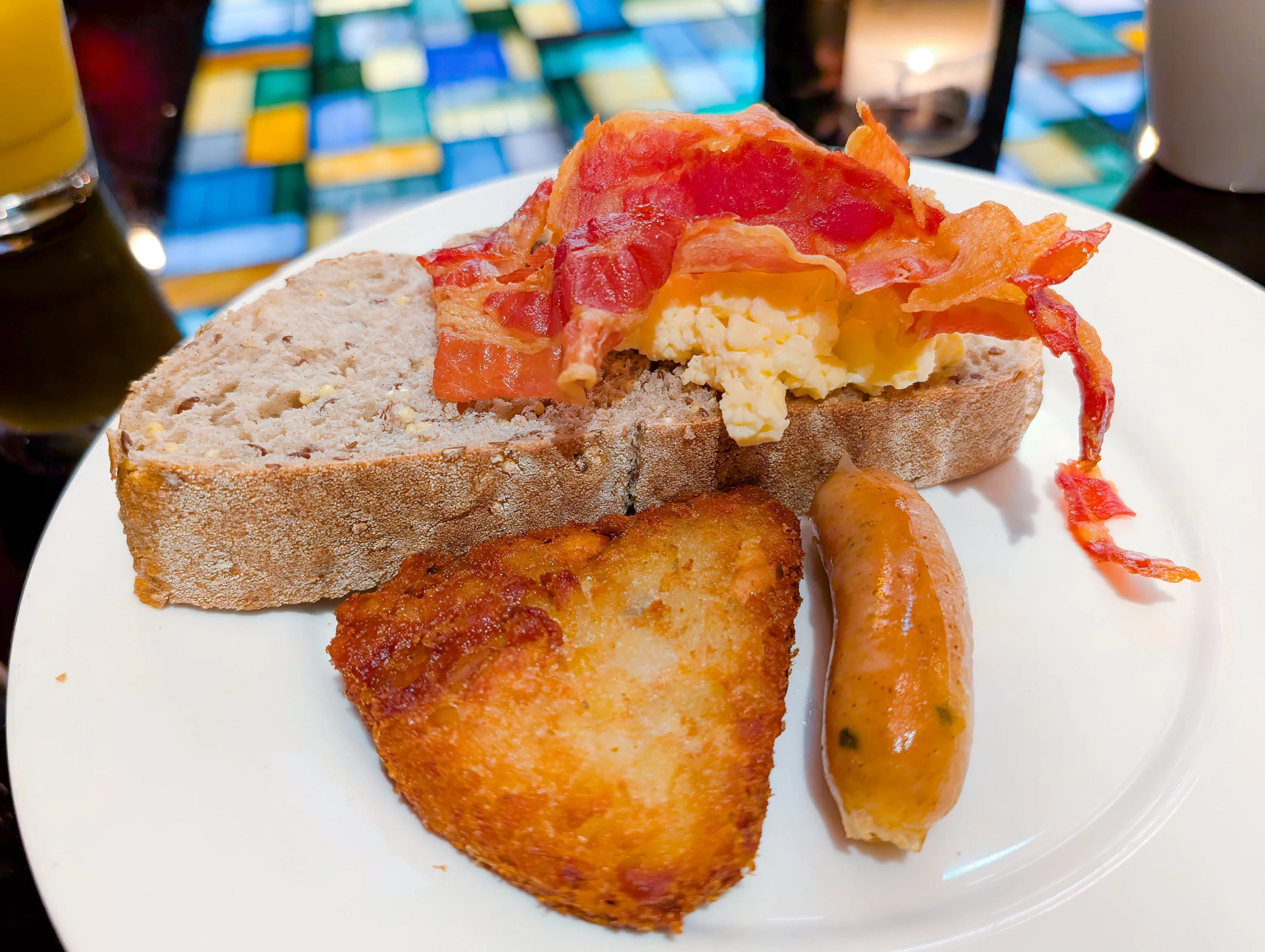
The breakfast items available today were the same as yesterday. The bread items were all very good as well as the smoked salmon. The eggs are mediocre quality, slightly better than what you’d get at a Fairfield Inn or similar in the US. The bacon was better than yesterday but unfortunately still hard but not crispy.
After breakfast, we took tram line 5 from Gerrit v.d. Veenstraat to Amsterdam Zuid. We walked one block from the tram station to the train station where we took the next train to the Schiphol Airport station. From the airport, we took an Intercity Direct train to Rotterdam. Intercity direct trains require a supplemental fare between Schiphol and Rotterdam and run non-stop between the two stations. We tapped a supplemental fare pole at Schiphol to add it to our trip, which is definitely the easiest way to buy it.
Rotterdam Shipping Quarter
After arriving at Rotterdam, we took the metro to Leuvehaven, a station near the Nieuwe Maas, the largest river that runs through Rotterdam. This area is the Scheepvaartkwartier (Shipping Quarter), also referred to as Nieuwe Werk (New Work).
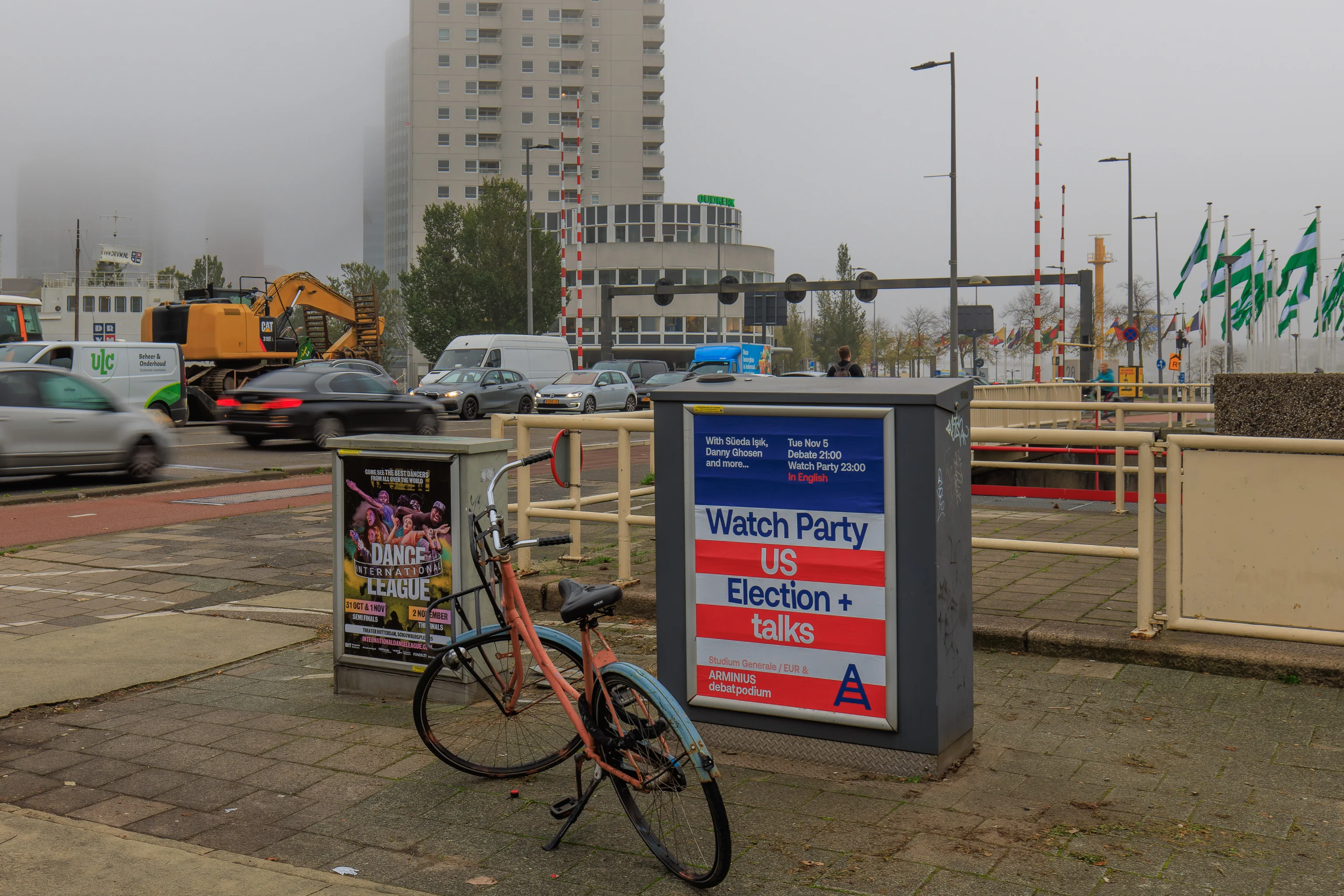
After we crossed the street to get to the river, we noticed this sign for a US election watch party! Not sure if this would be considered news or comedy!
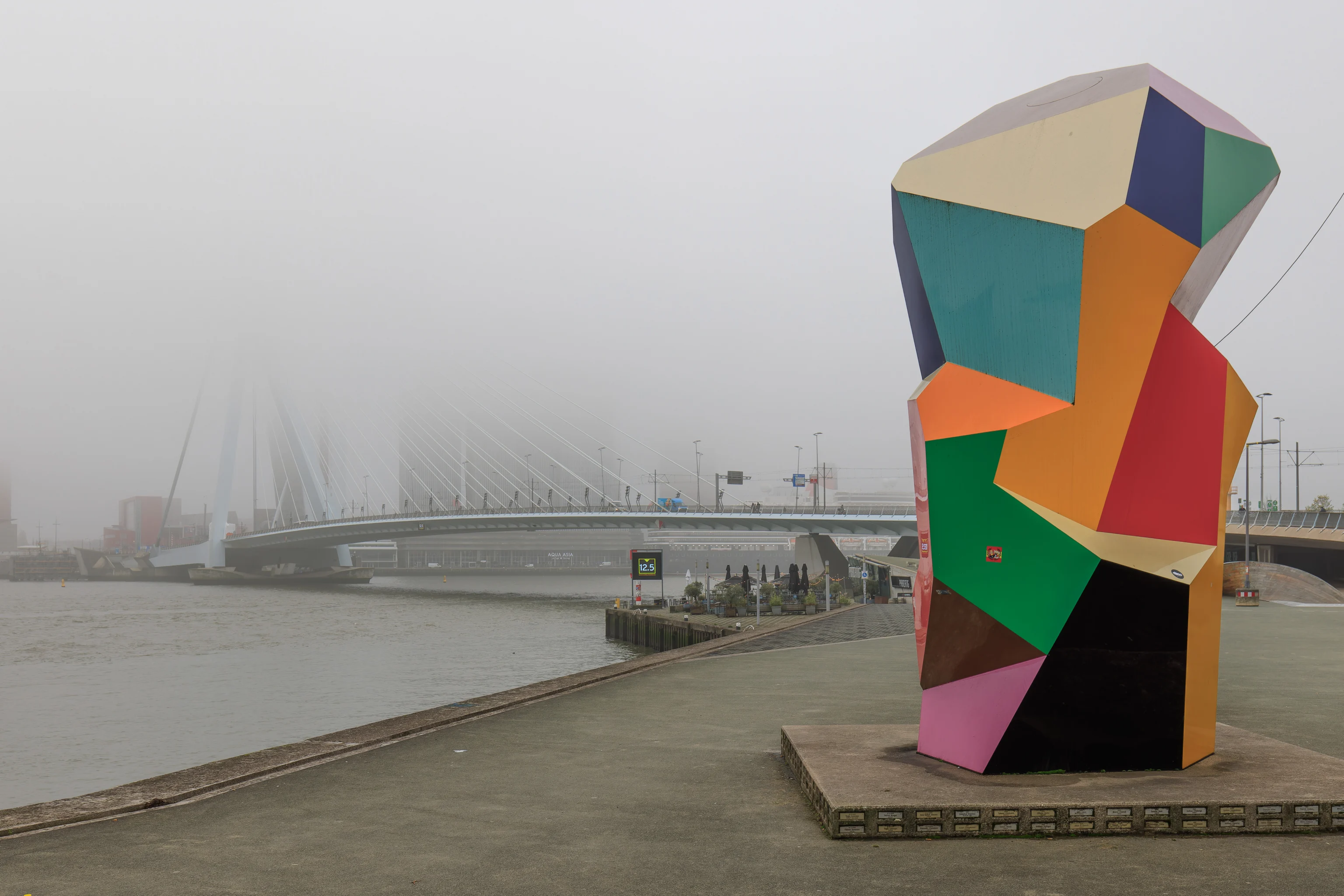
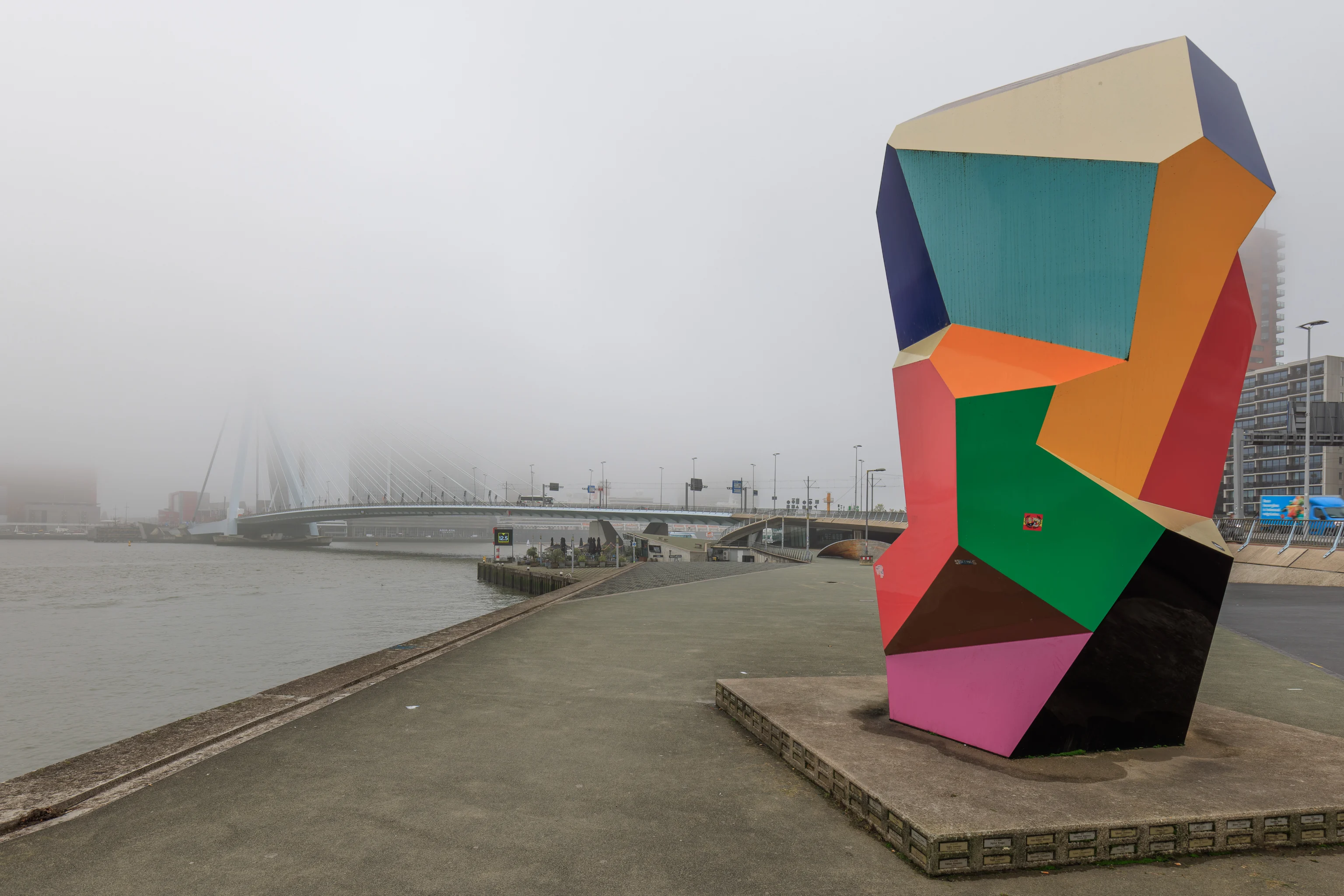
This colorful geometric sculpture is the Marathonbeeld (Marathon Sculpture) by Henk Visch in 2001 and was created in honor of the 20th Rotterdam Marathon.
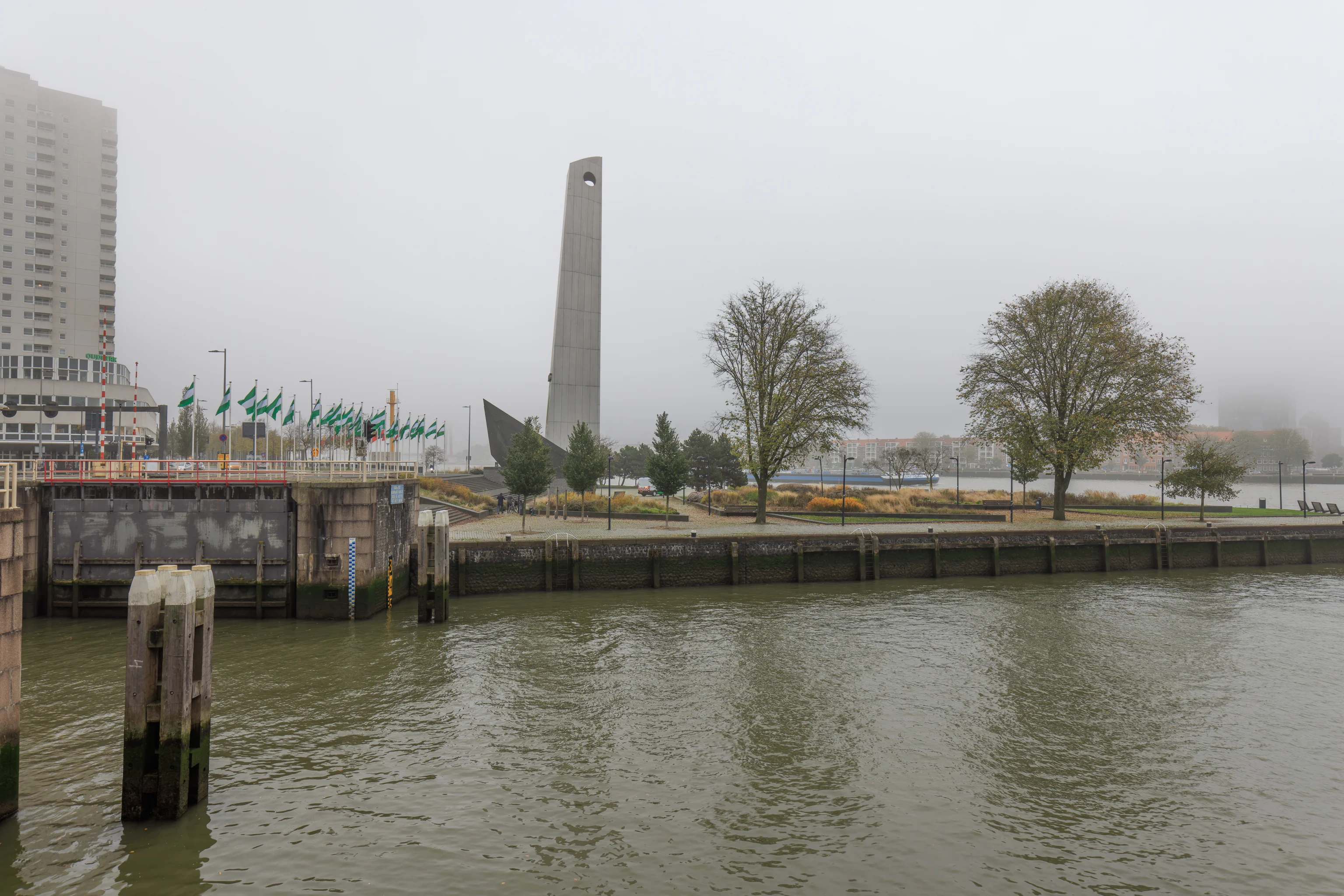
This tall sculpture, on the other side of a canal to the east, is De Boeg (The Bow), referring to the bow of a ship. It is formally the National Merchant Navy Monument and was constructed after World War II.
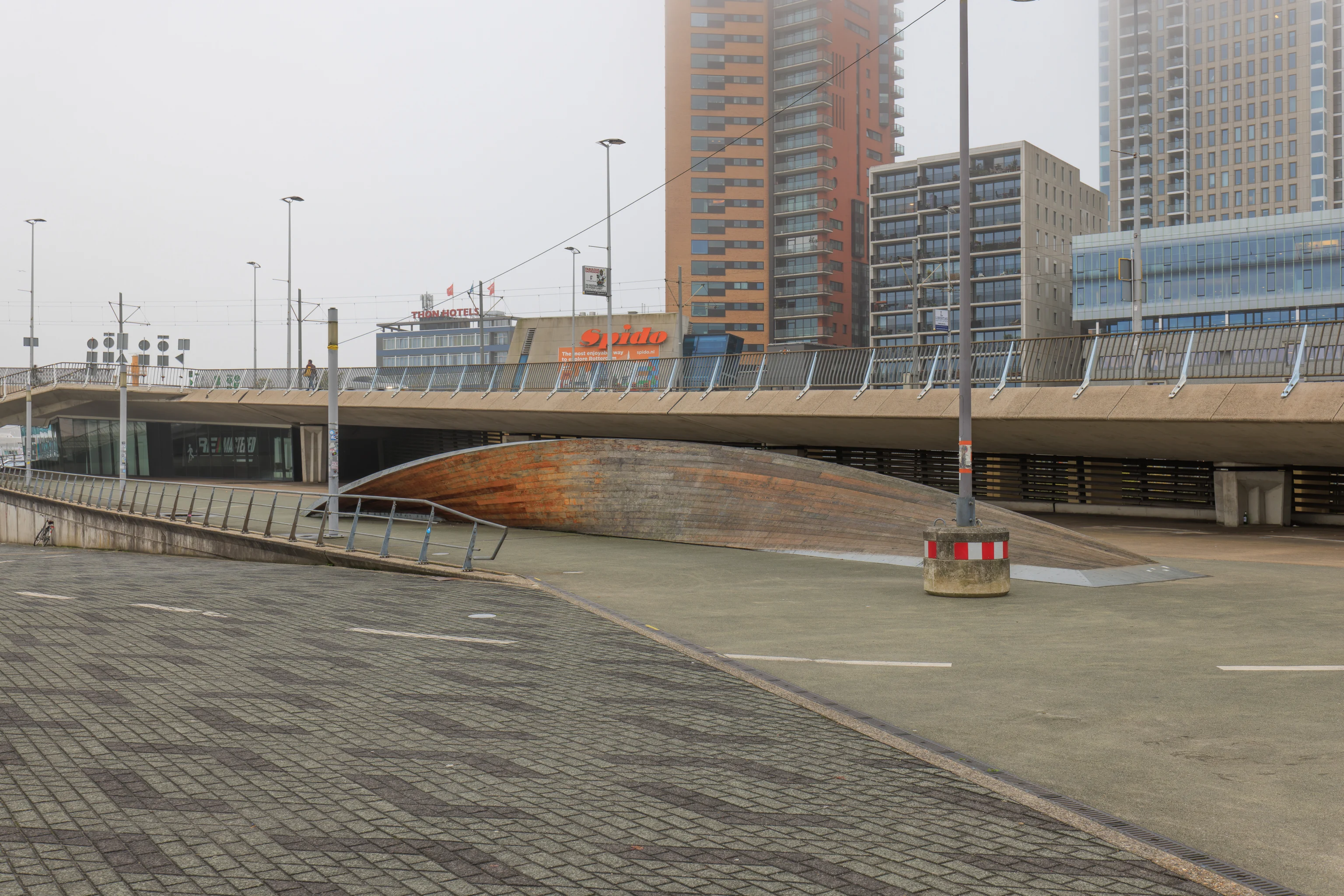
This wooden sculpture, which kind of looks like the overturned hull of a ship, is Twist & Shout by Martand Khosla in 2013. It is designed to be something that can be skateboarded.
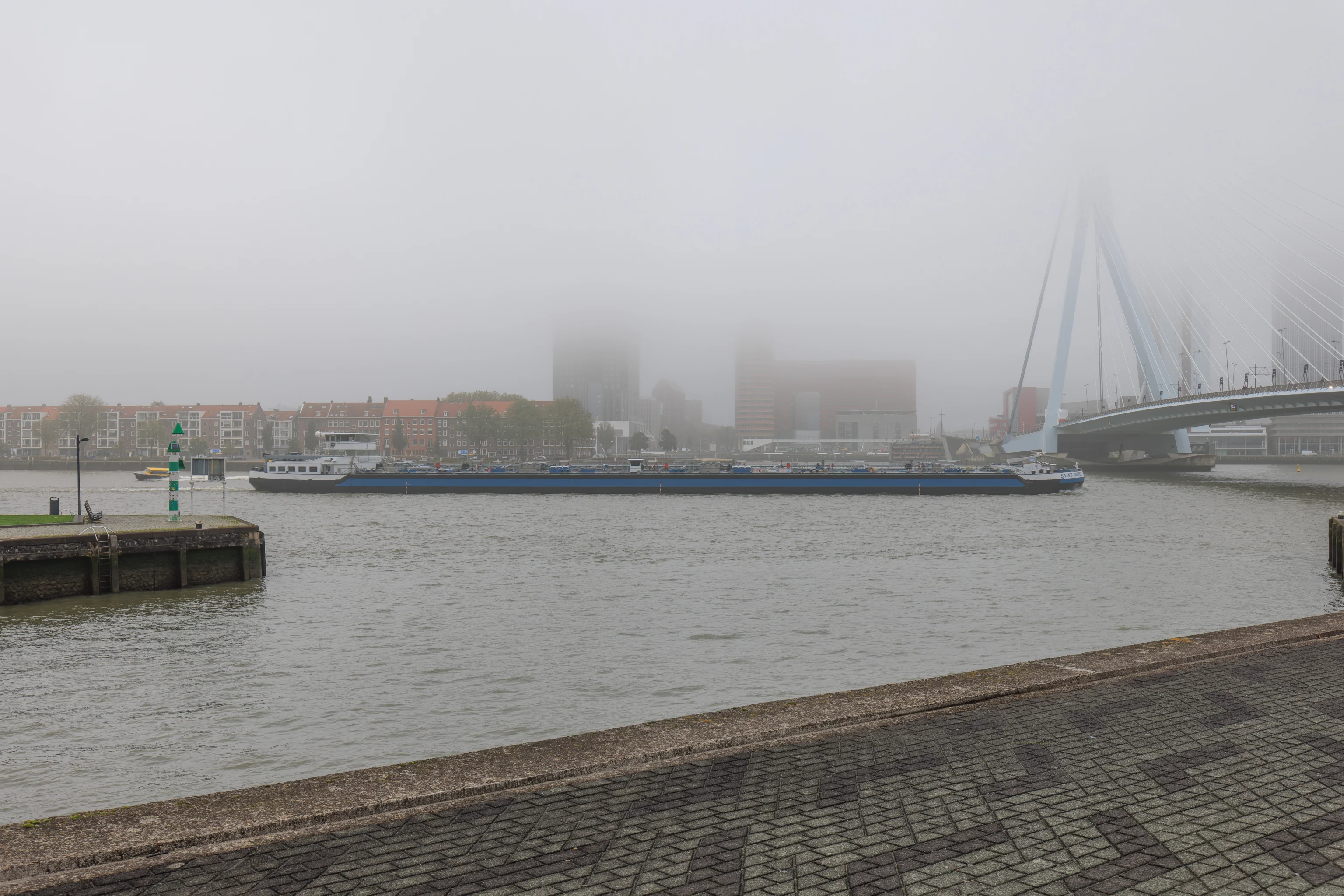
Unfortunately, the weather did not look good. The bridge in the background is the Erasmusbrug (Erasmus Bridge). It has an interesting modern design, though that wasn’t really visible as it was mostly obscured by fog!
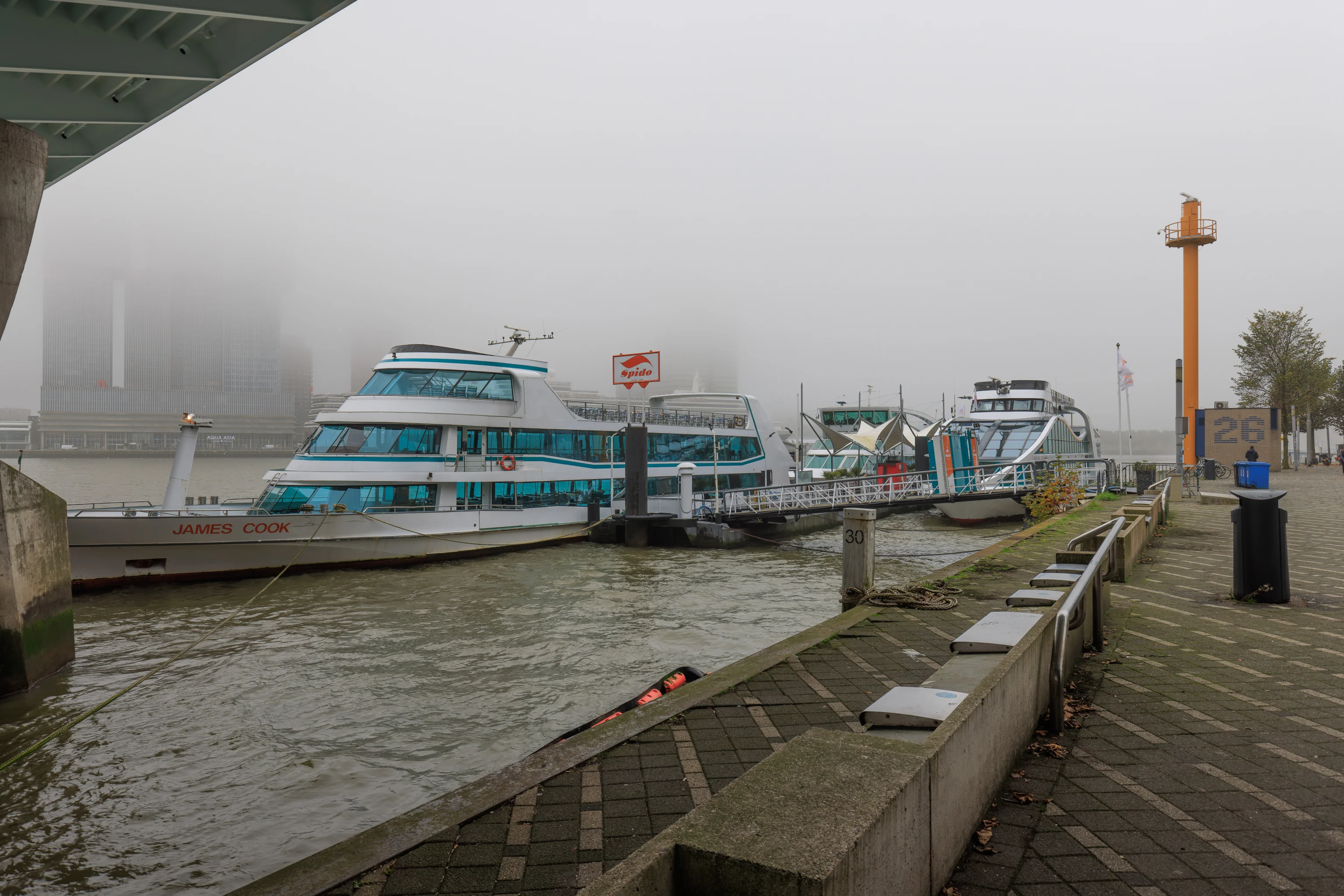
We walked under the bridge by the river. There was a pier just beyond the bridge, although, these were not the boats we were looking for.
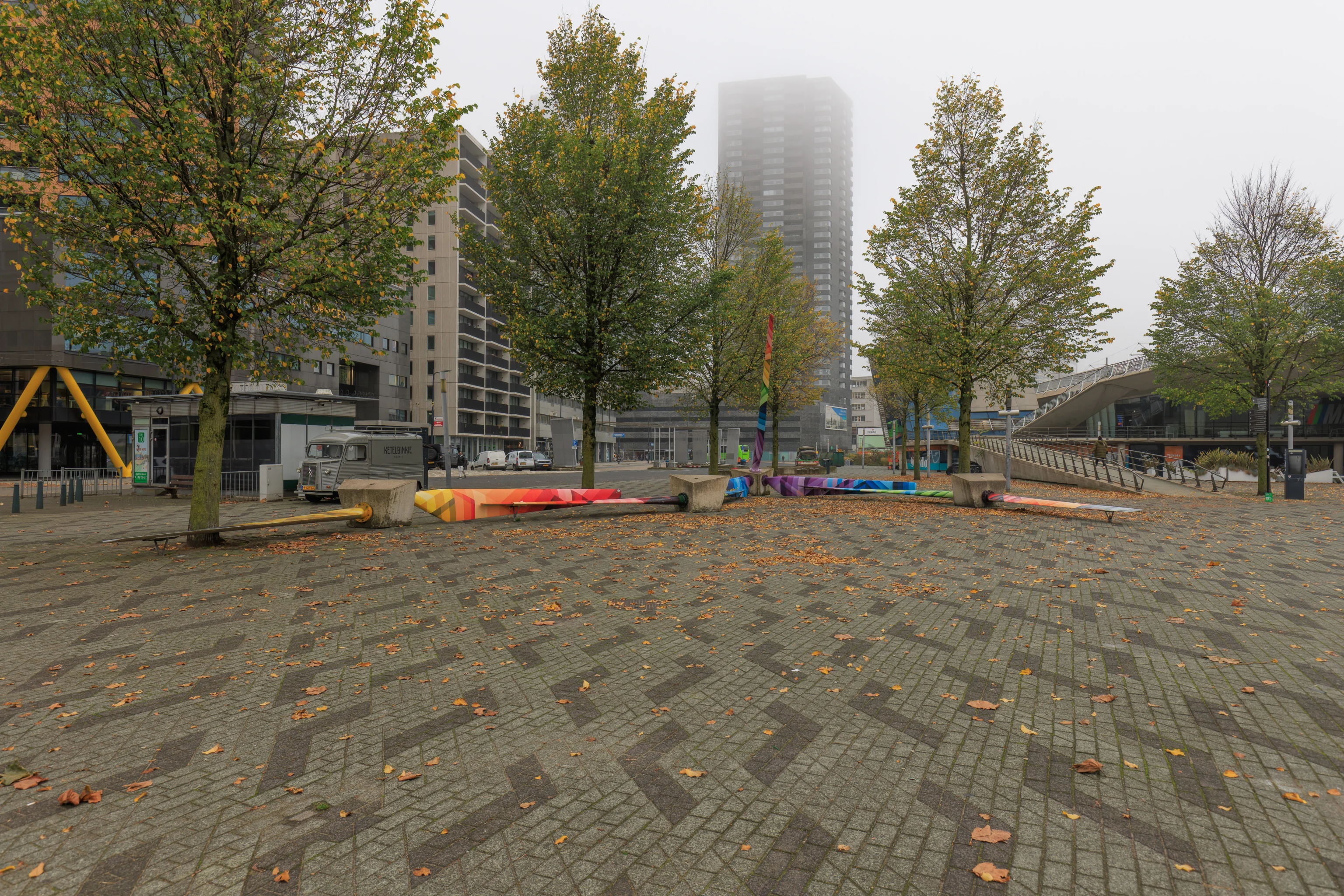
There was some more art next to the bridge. The colorful objects are wind turbine blades which seem to have been converted into benches!
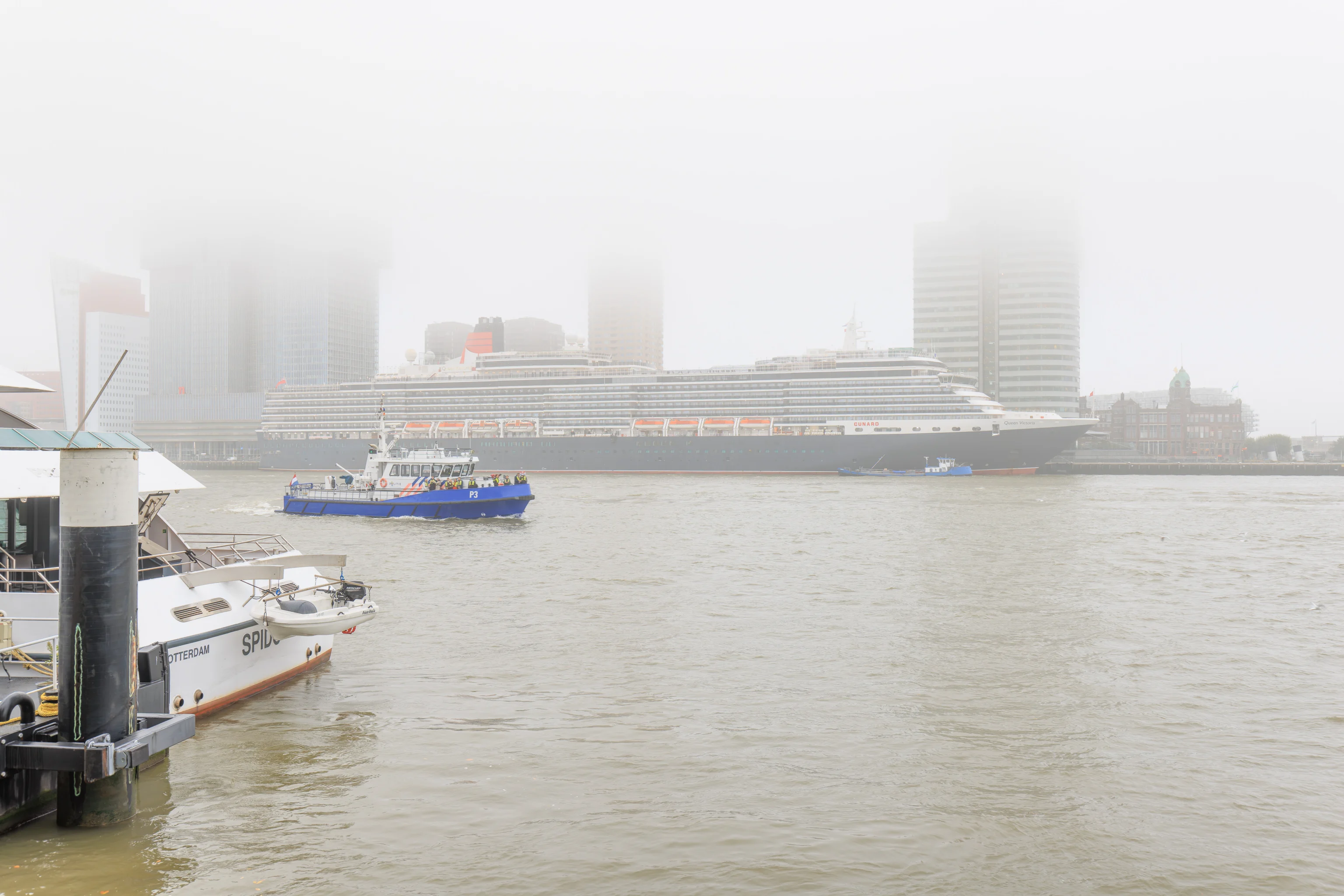
We were about 40 minutes early for the next ferry to Kinderdijk. We decided to walk around a bit by the river until then. We noticed a large ship on the south side of the Nieuwe Maas. It is the Queen Victoria.
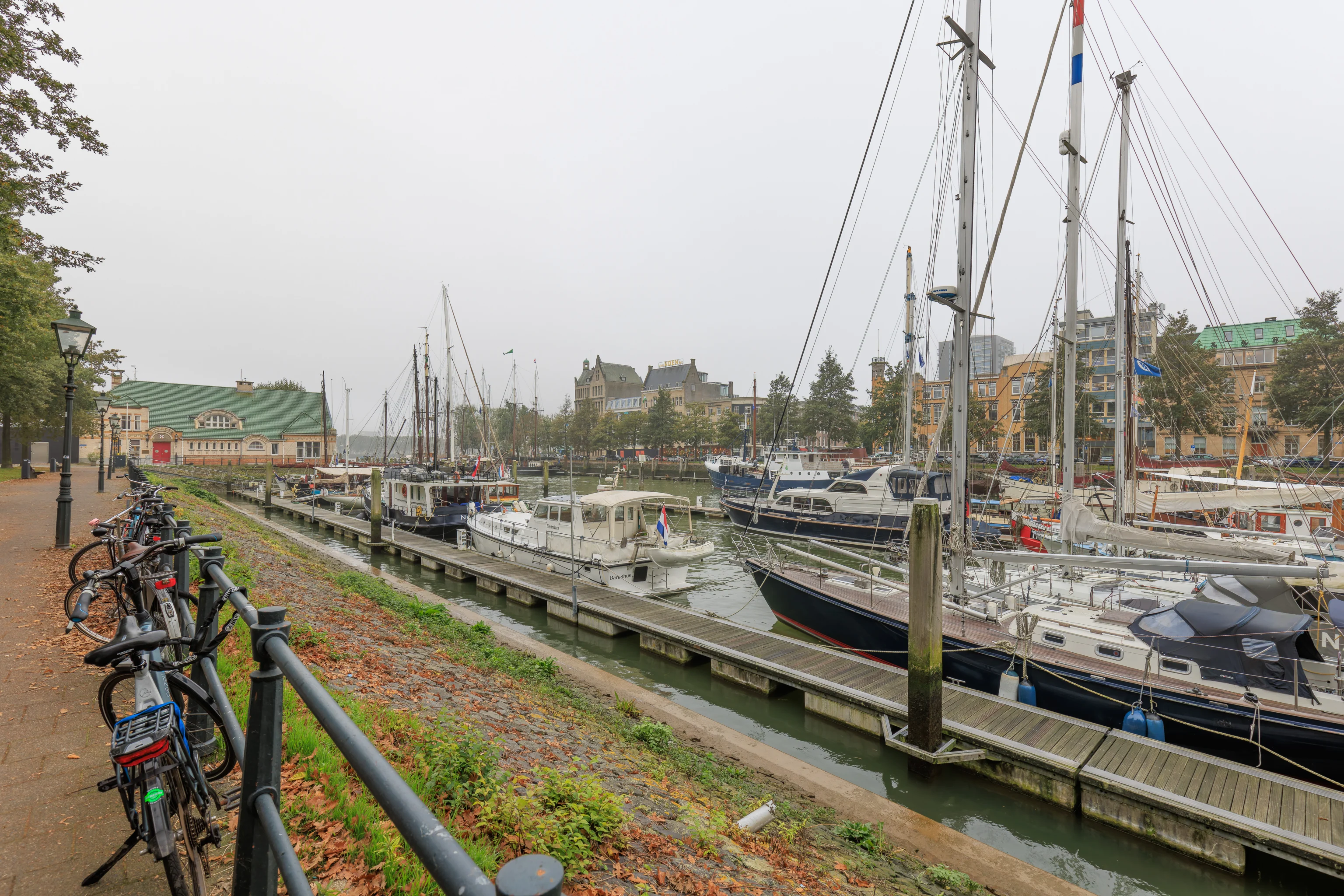
We continued walking to the southwest until we reached a small marina.
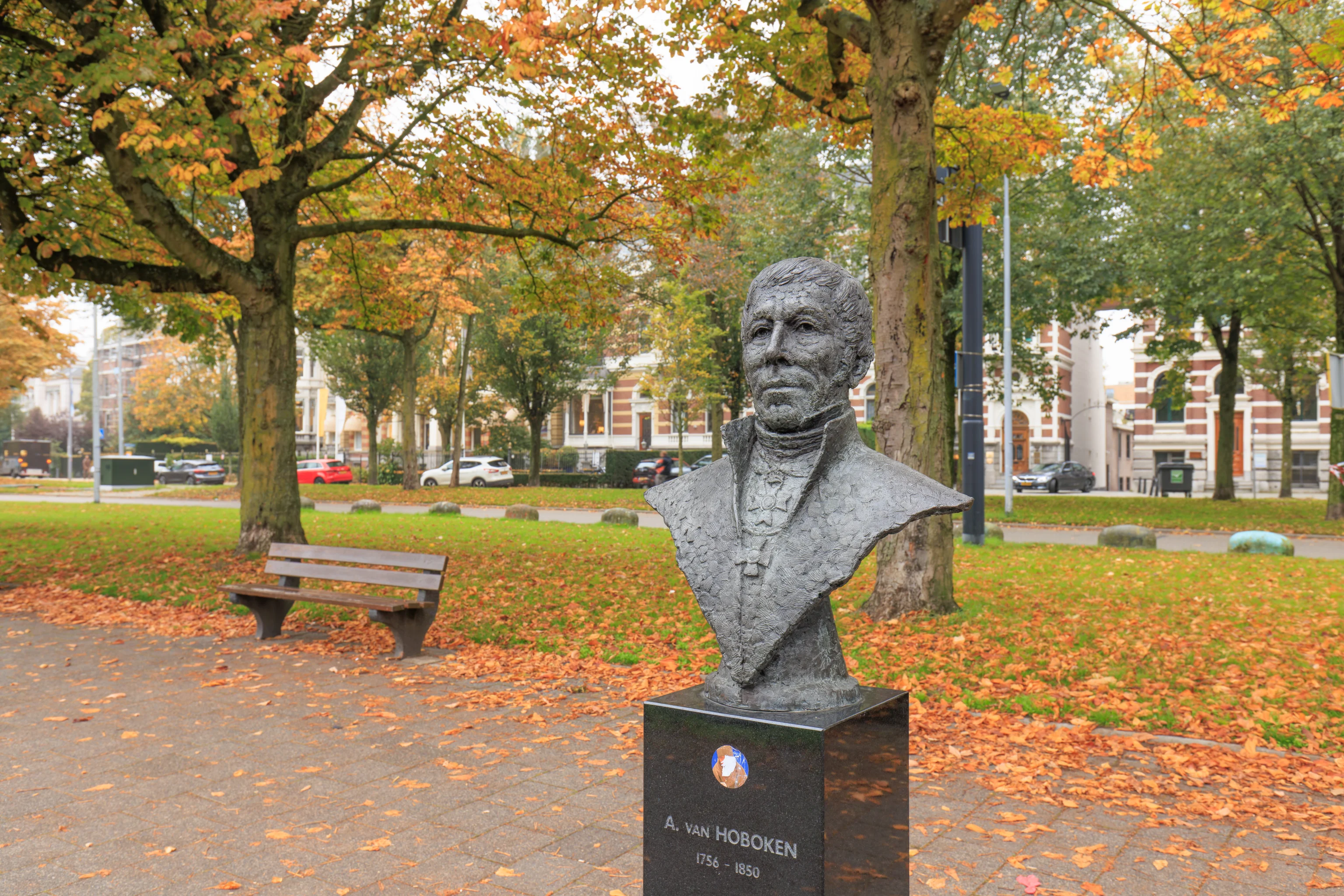
We noticed this statue of A. van Hoboken. It was a familiar last name but there is unfortunately no relationship to Hoboken, NJ. This statue is one of five statues here of people who were important to the city of Rotterdam.
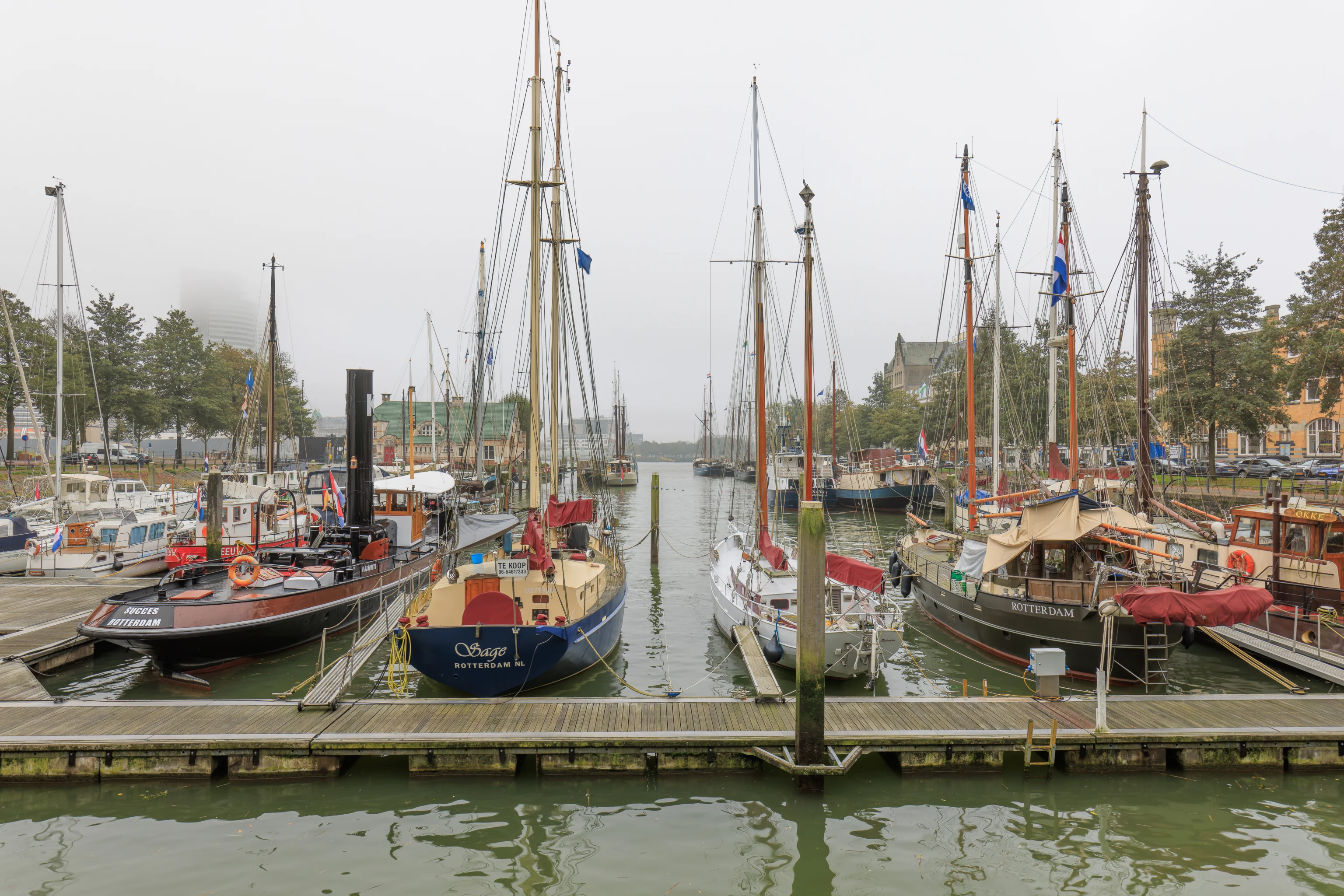
This was as far as we walked. There is quite a variety of boats here.
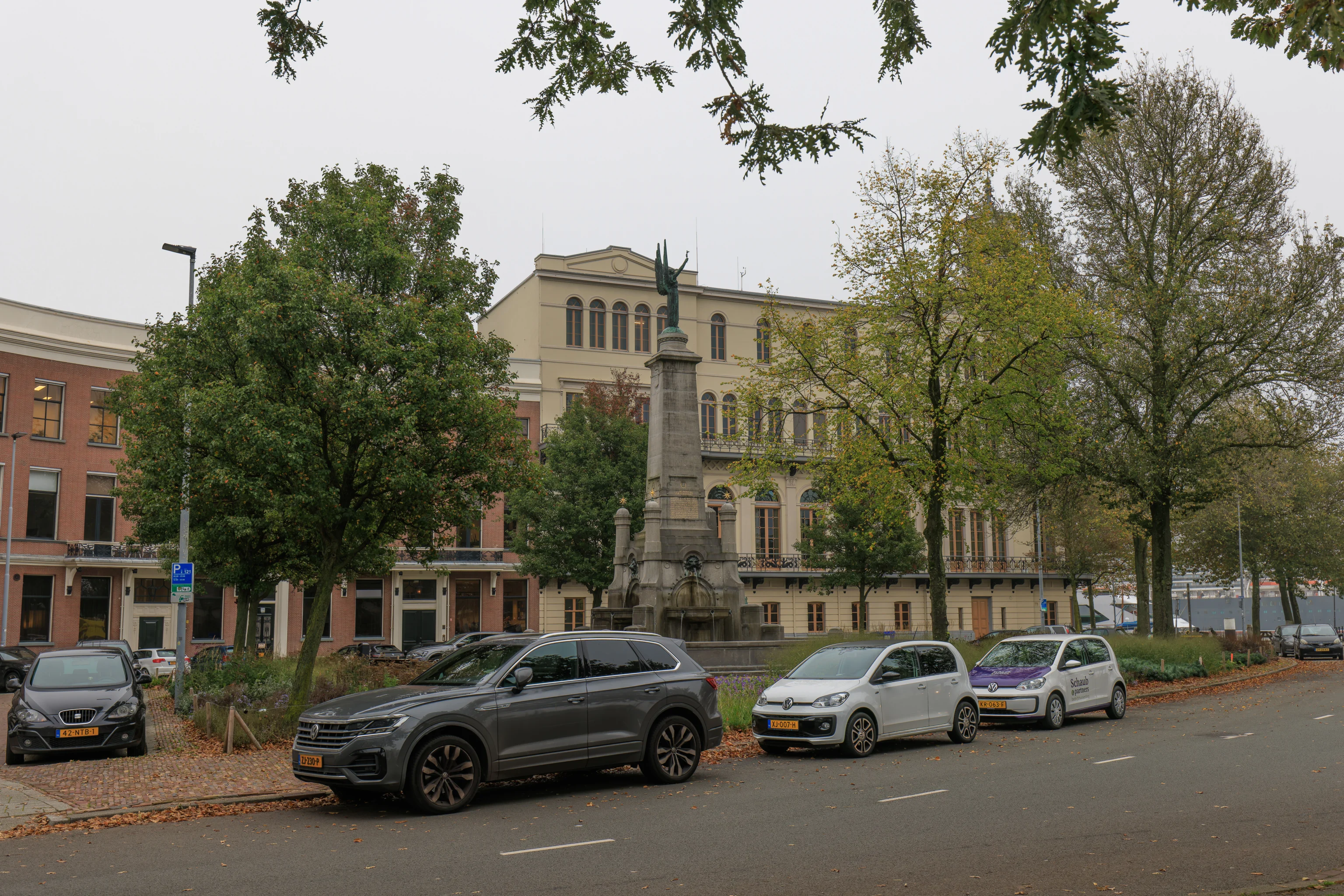
We noticed this monument on the other side of the road. It is the Caland Monument, dedicated to Pieter Caland who designed the Nieuwe Waterweg, a canal here in Rotterdam.
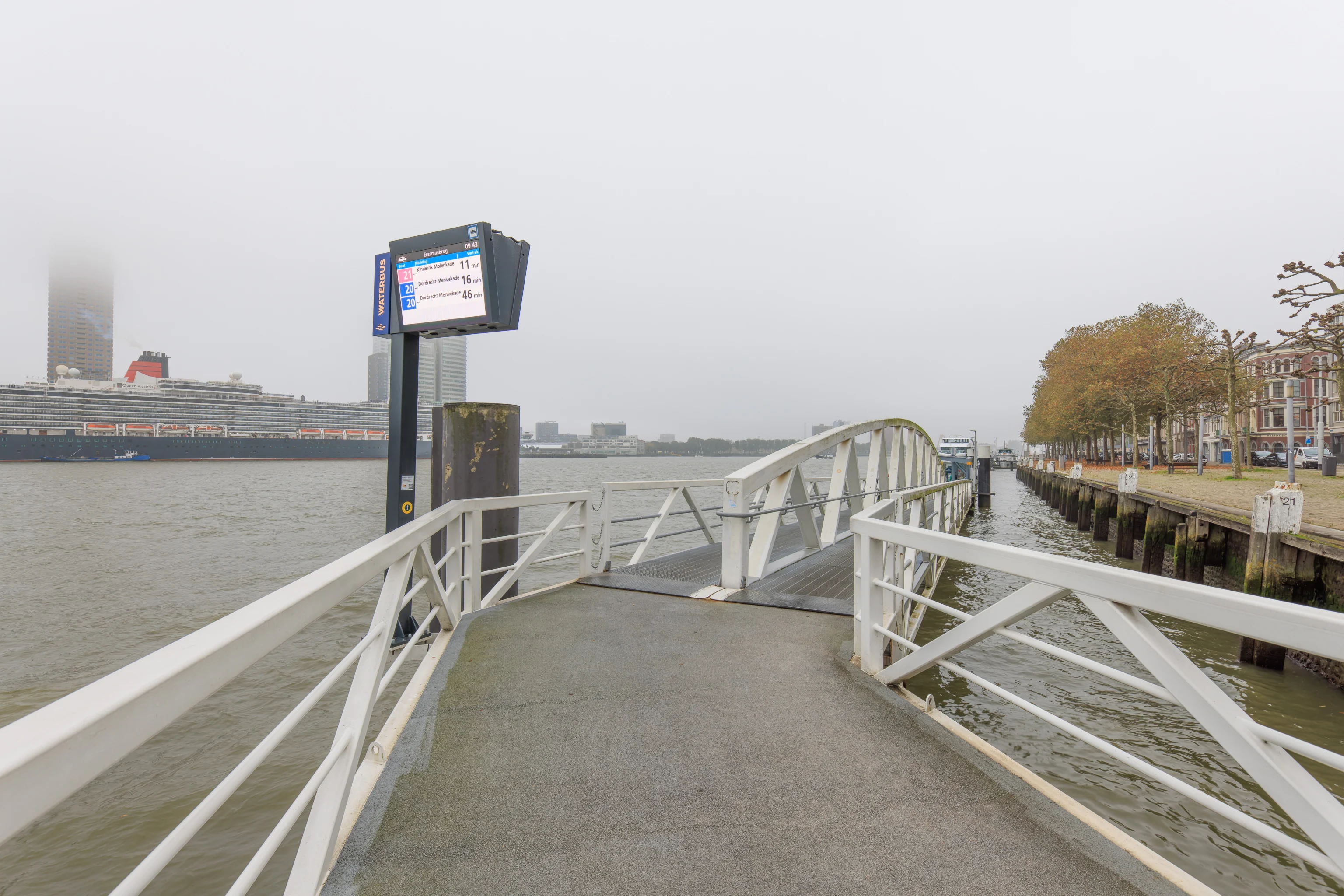
We returned to the ferry pier with 11 minutes to go before the departure of our ferry on route 21.
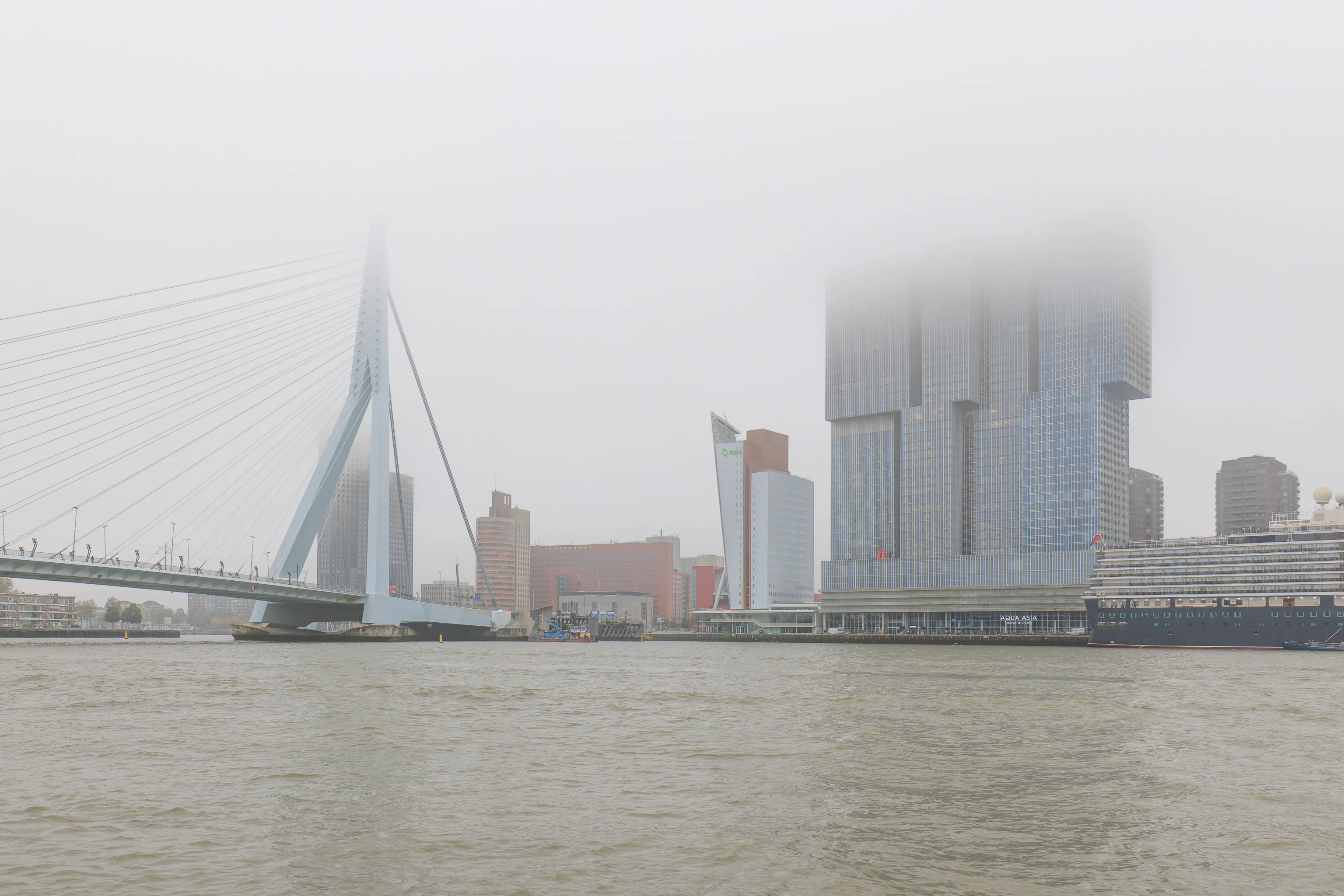
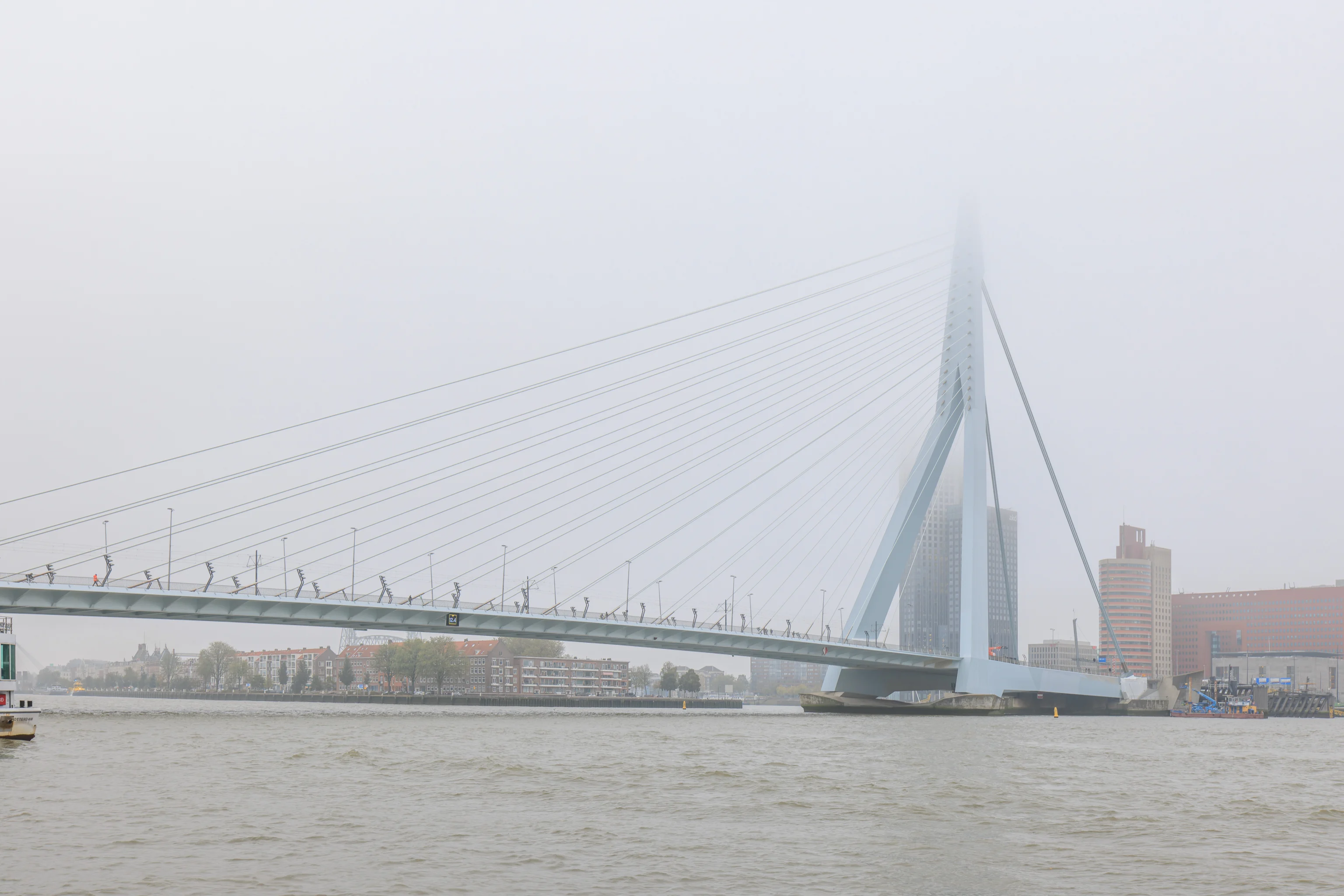
Although it was still pretty foggy, we could at least see further than when we first arrived here!
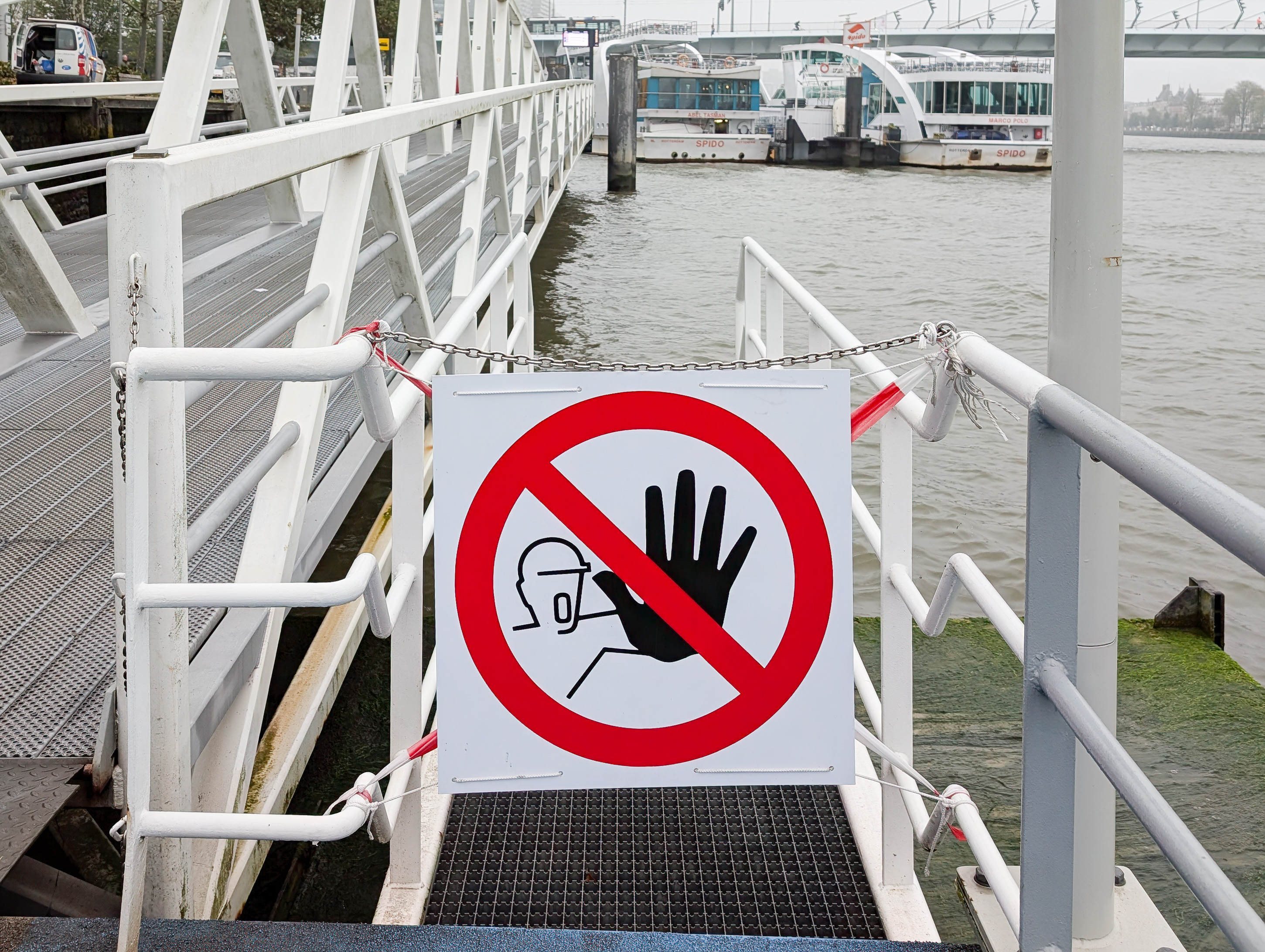
We spotted one of these amusing non-standard but yet sort of standard do not enter signs on the pier.
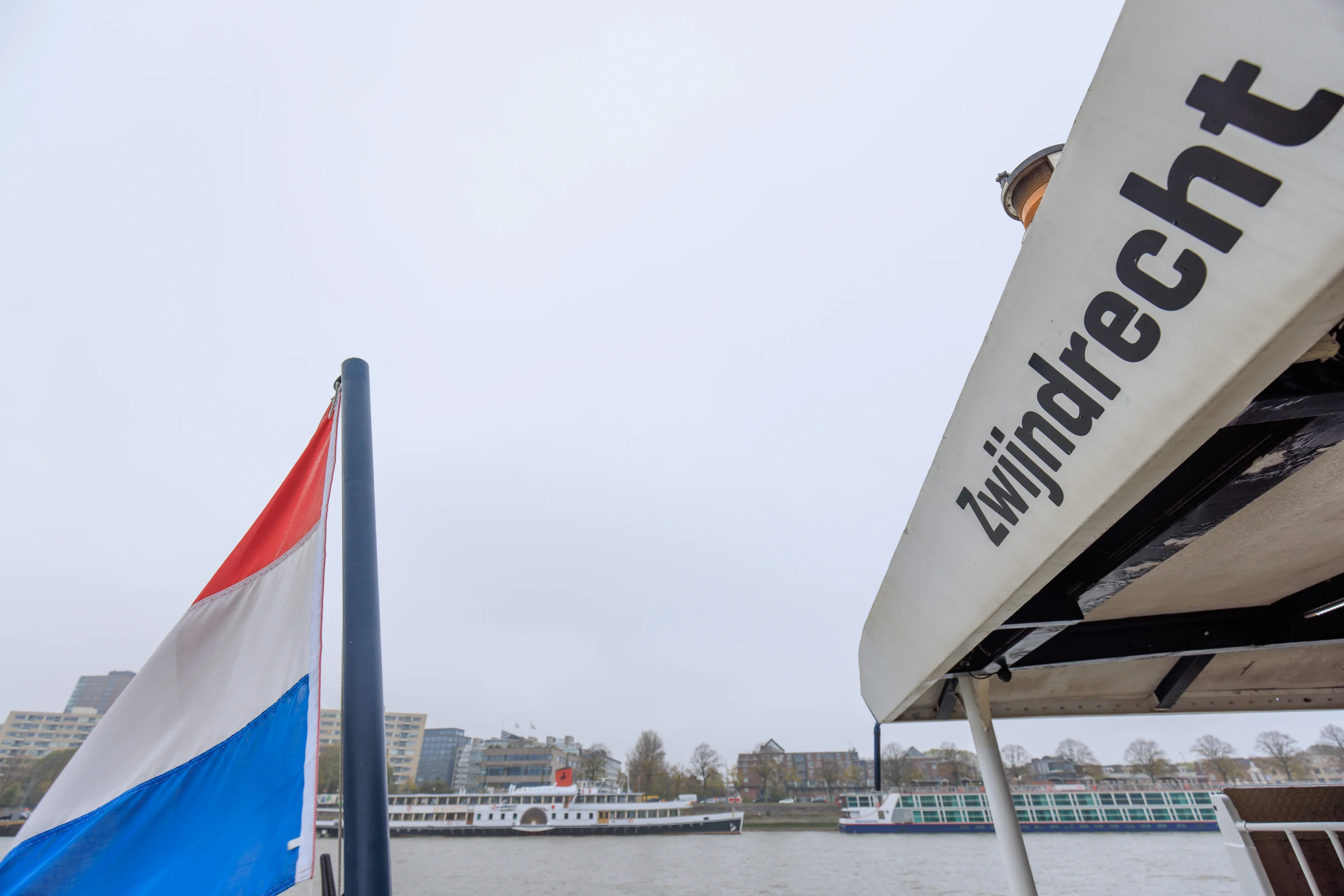
Soon, the ferry arrived. There weren’t very many people on board with each group easily able to get their own row of seats.
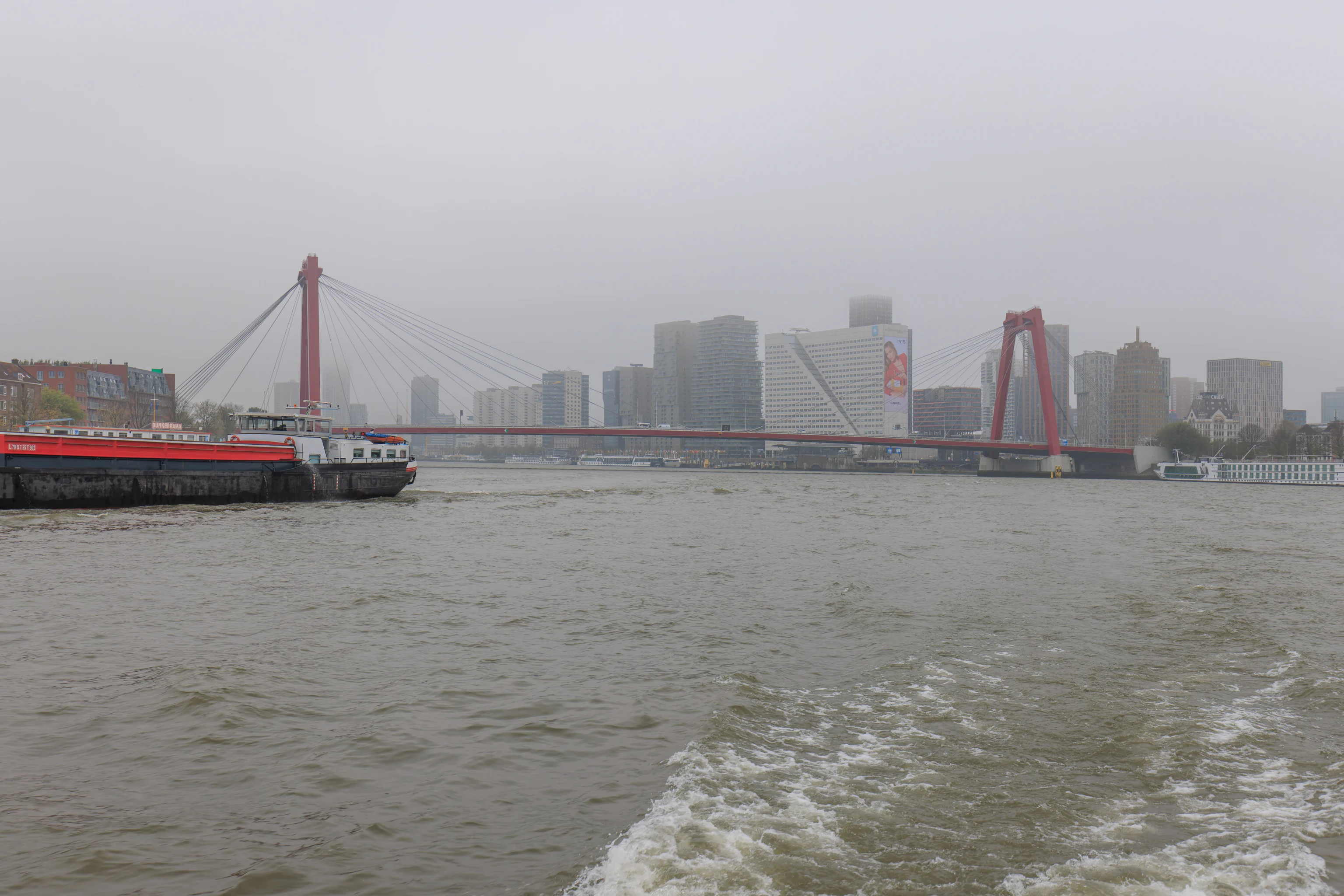
We quickly left Rotterdam behind, passing under the Erasmusbrug and this bridge, the Willemsbrug.
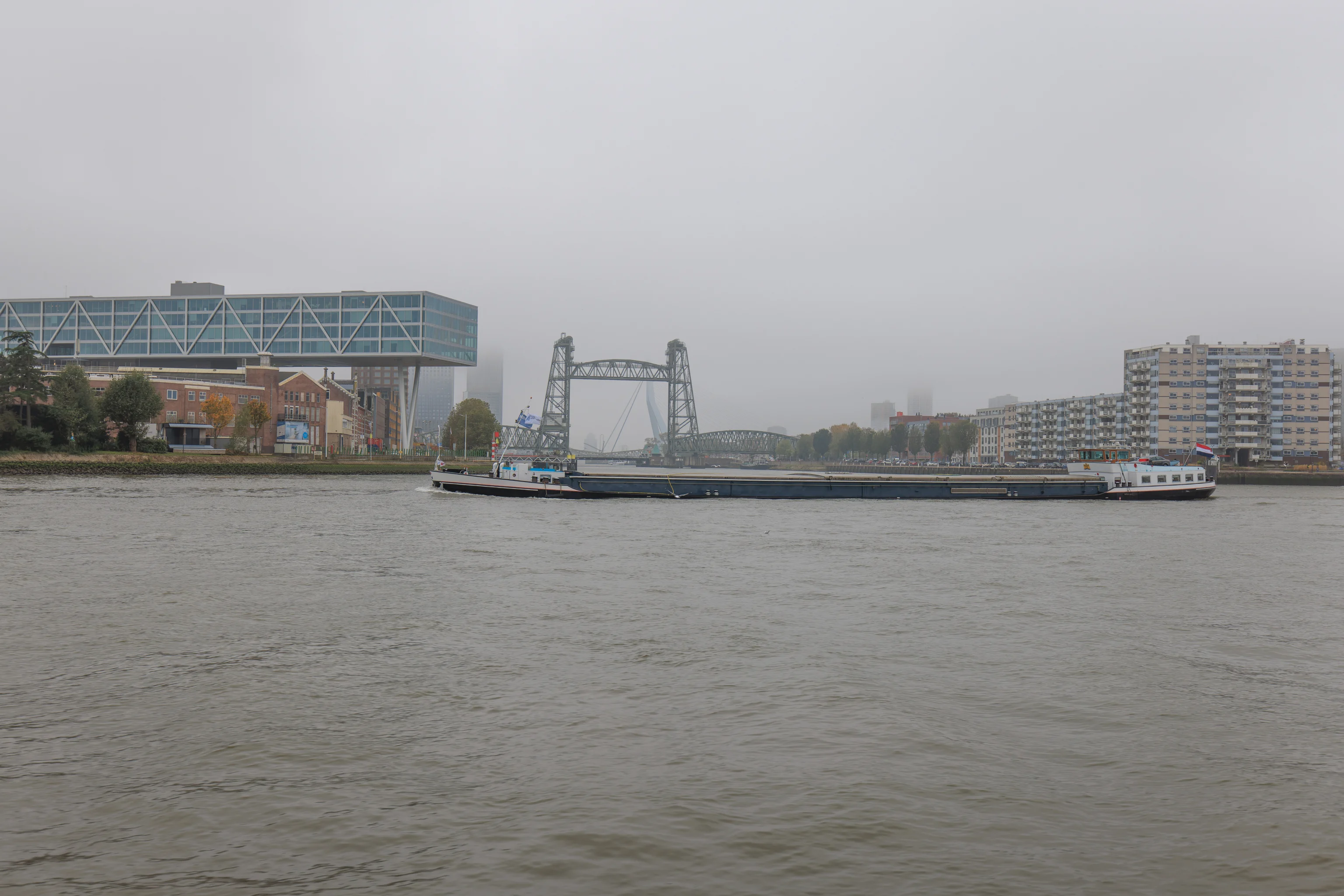
We passed by an interesting building to our right. It looks like a building built atop other buildings below.
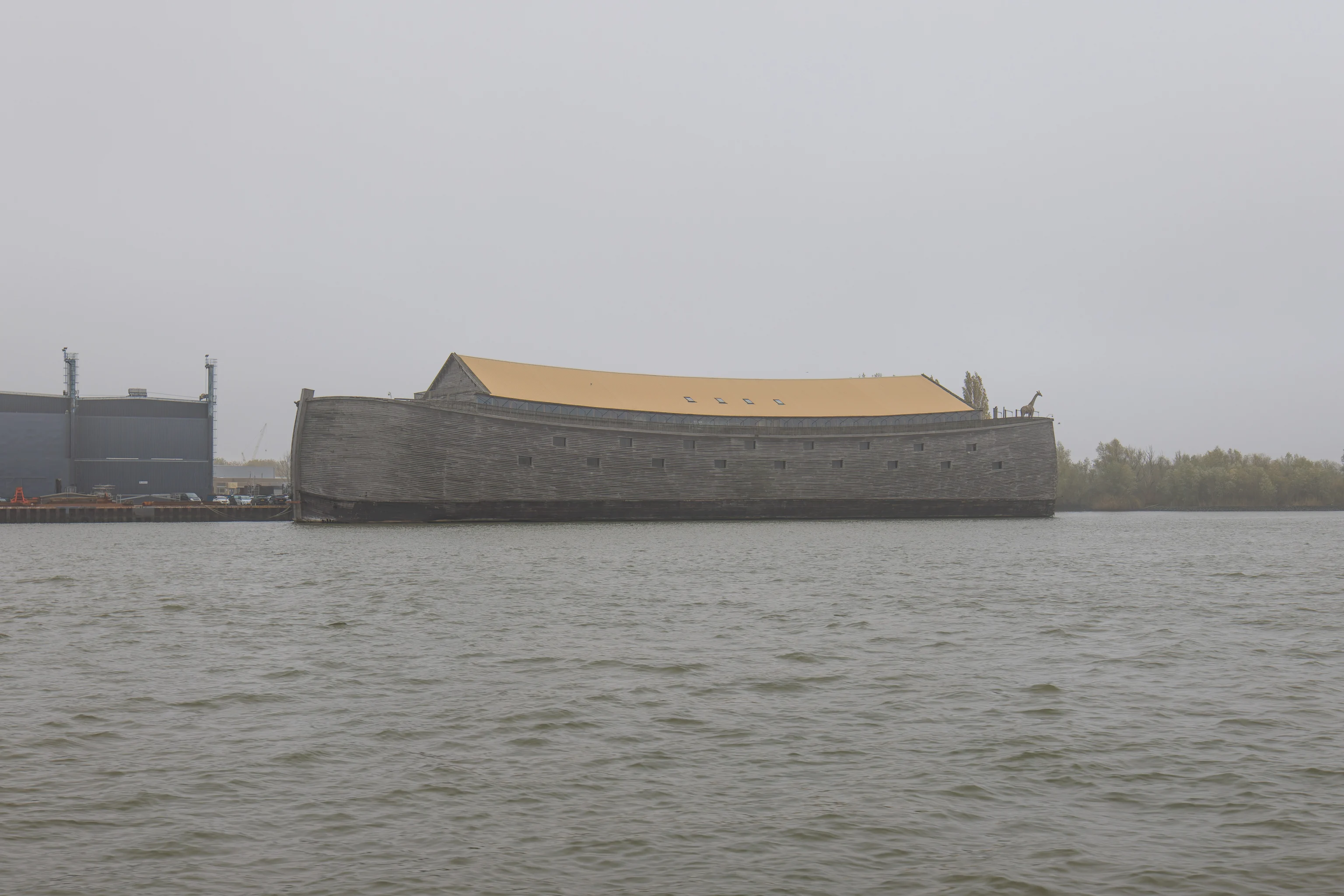
We also passed by a very unexpected sight to the left. It looks like an ark, as in, Noah’s Ark. It is apparently Johan’s Ark, a full scale model of what the creator, Johan Huibers, believes the ark would have looked like. The ark is currently for sale.
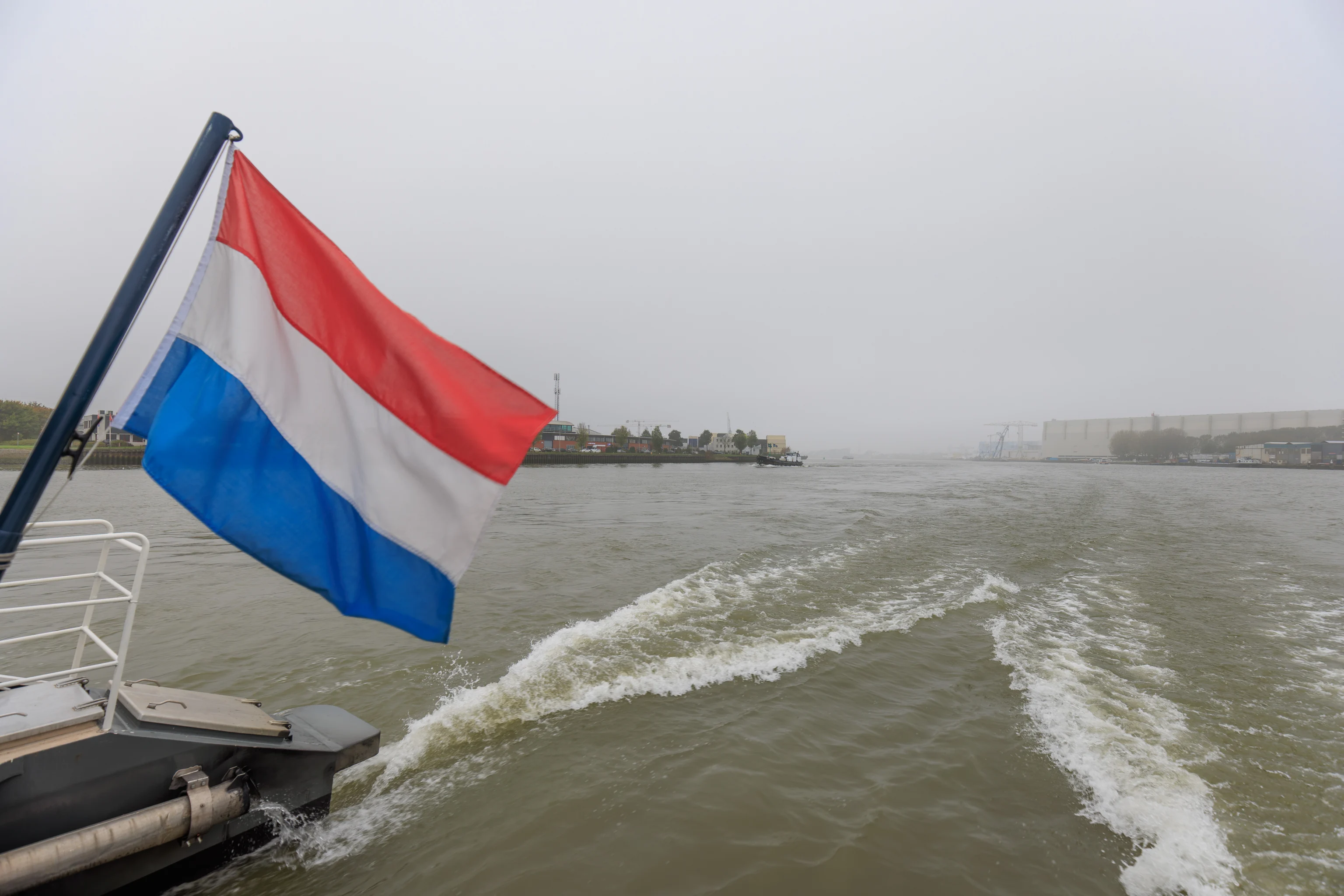
The ferry continued on to the east. We did make what seemed like an unscheduled stop at Ridderkerk, a pier near Kinderdijk.
Kinderdijk
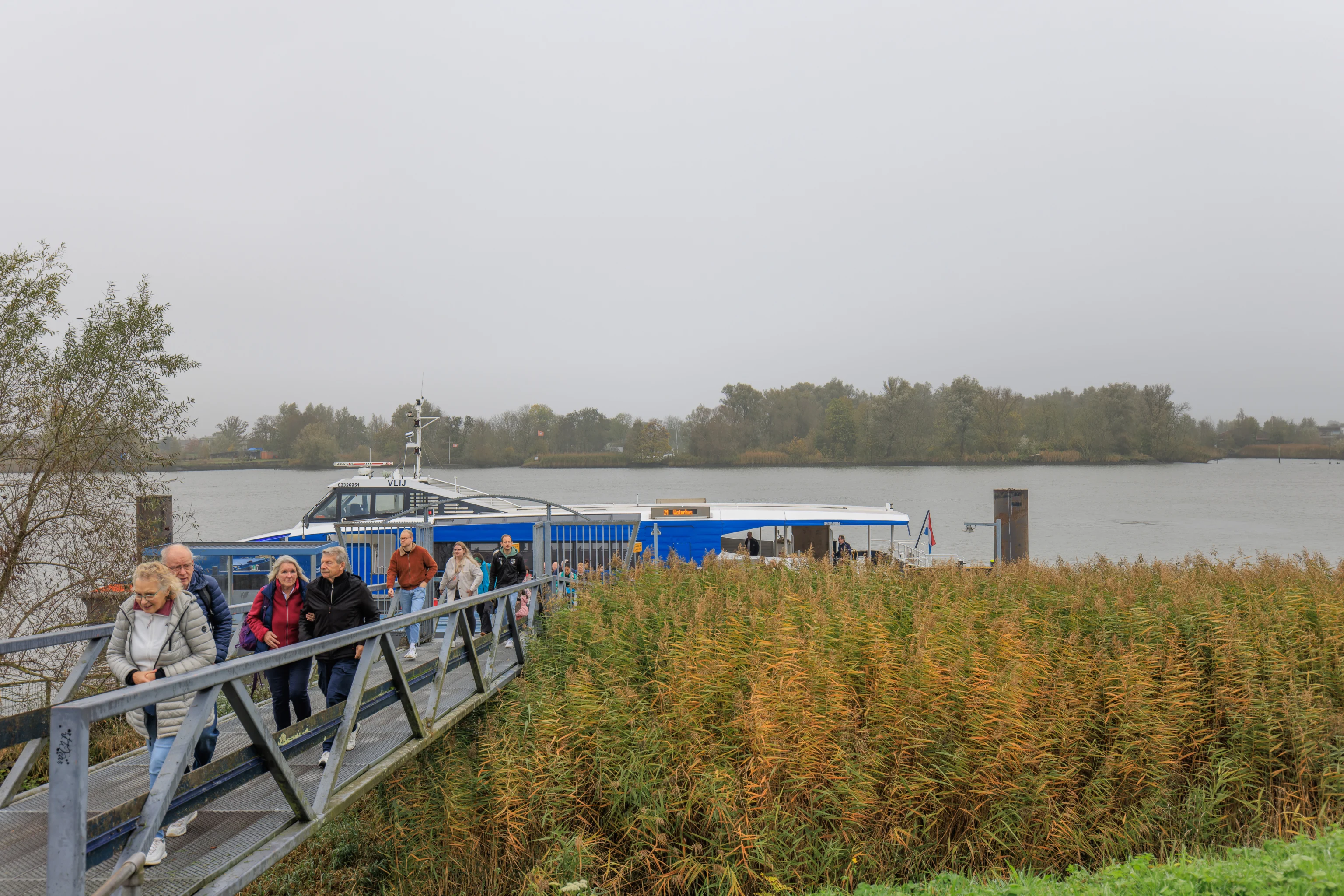
The trip to Kinderdijk took about 50 minutes.
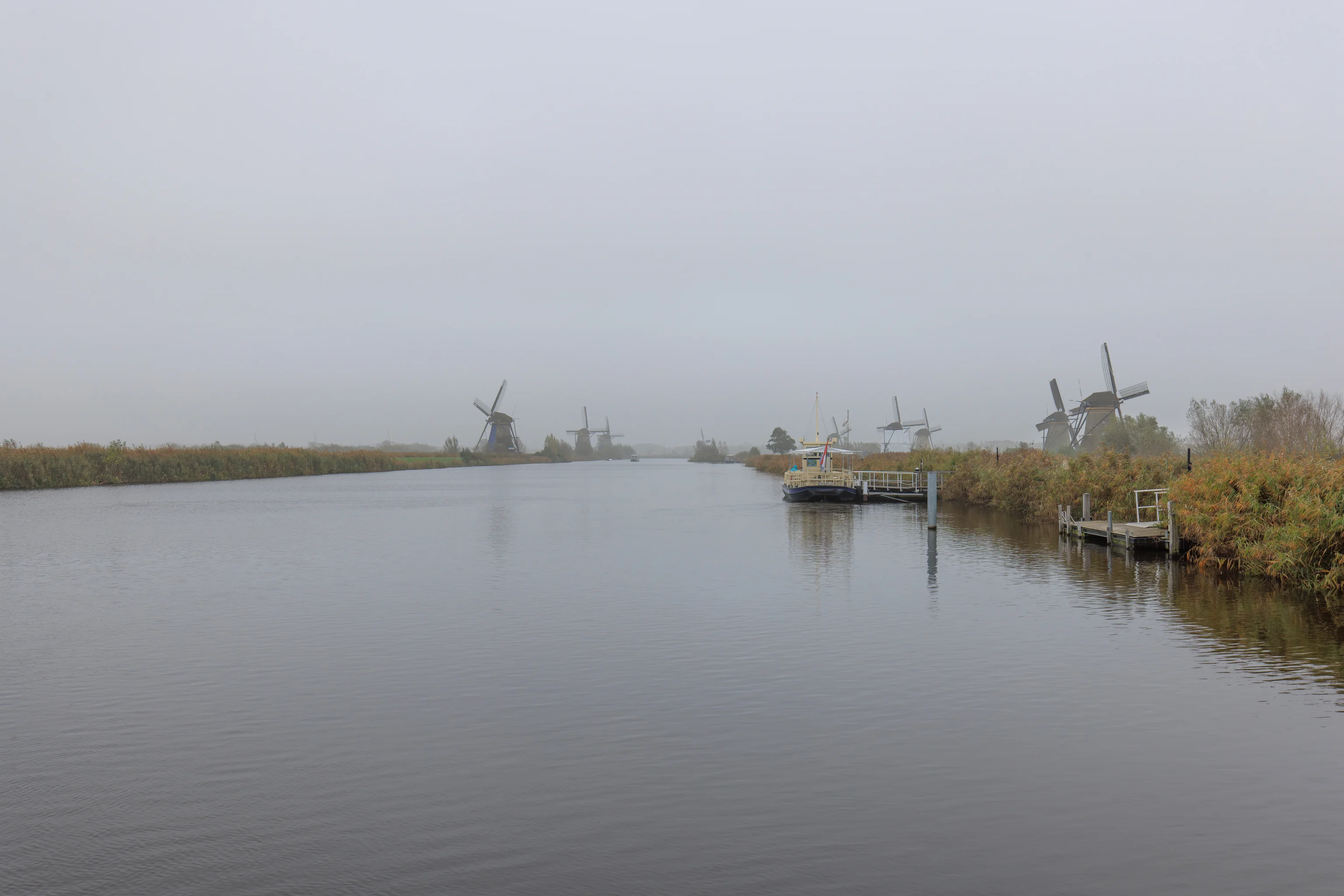
We had already purchased tickets online so we headed right in. The tickets mainly allow access to the museum windmills and Kinderdijk’s tour boats. One undocumented benefit is that they also allow free use of the bathrooms at the gift shop and cafe.
The ticket office, visitor center, gift shop, and cafe is all in one building at the northwest end of Kinderdijk. From here, we could see a number of windmills to the south along a canal.
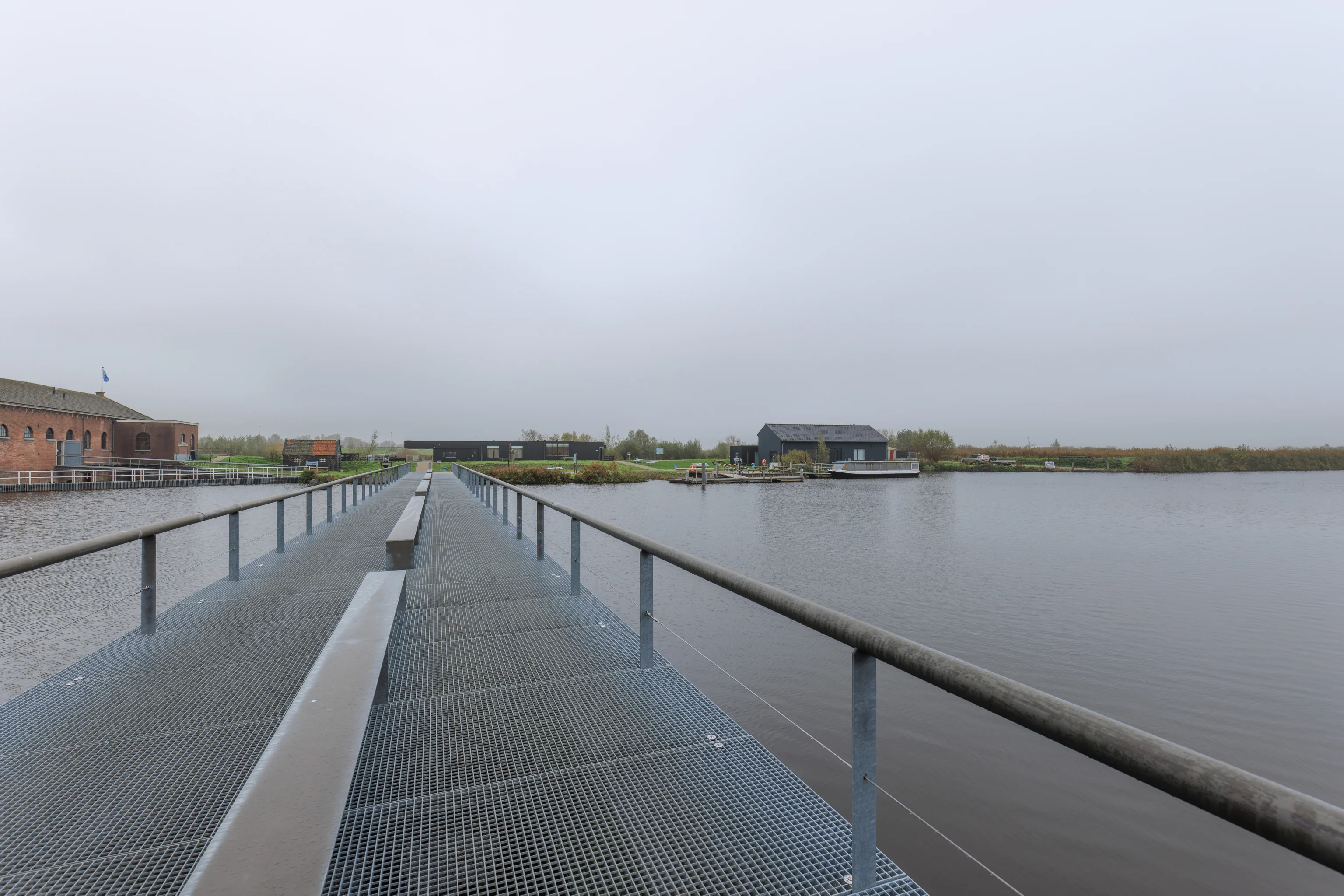
This modern pedestrian bridge crosses over the canal to provide access to a few museum buildings.
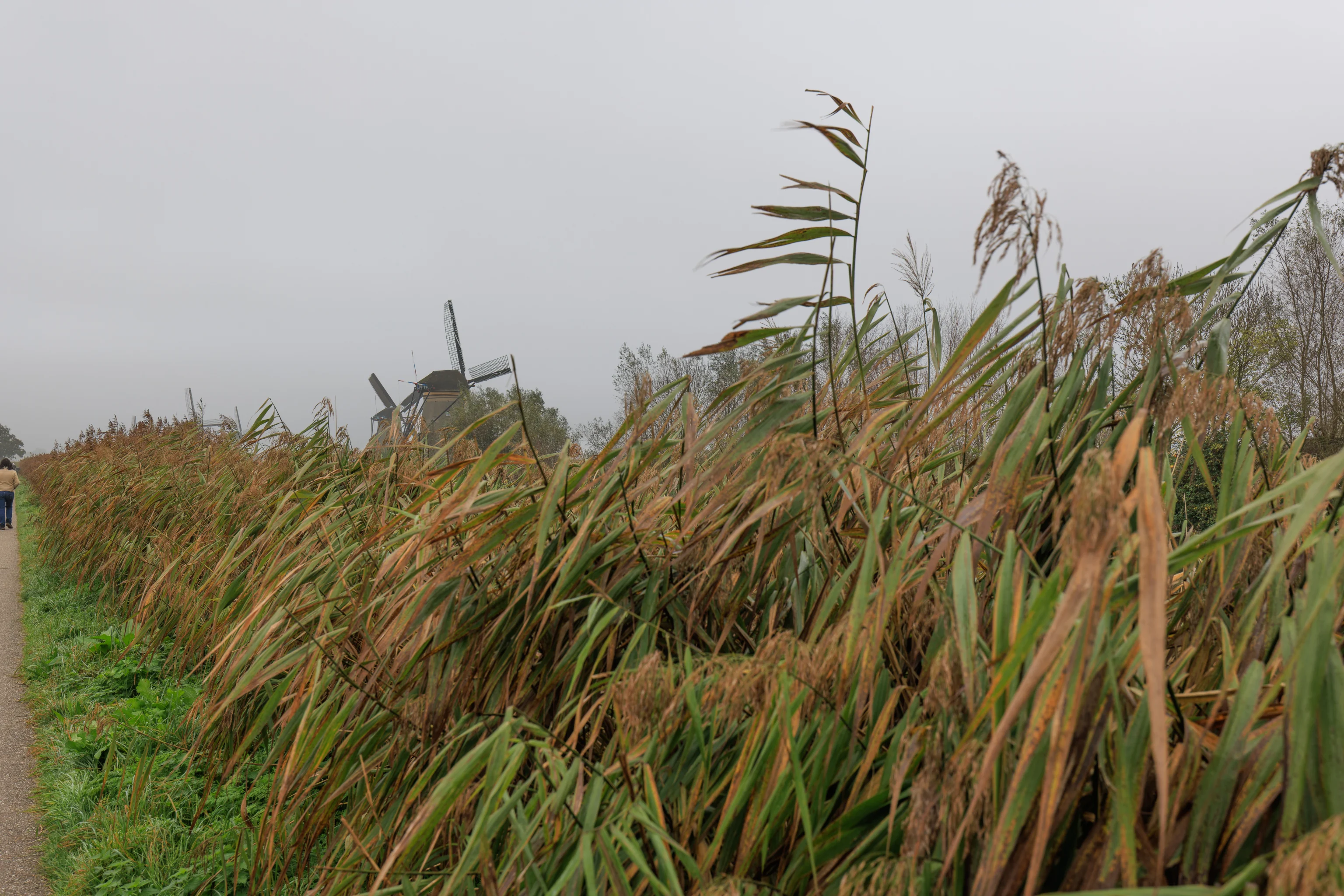
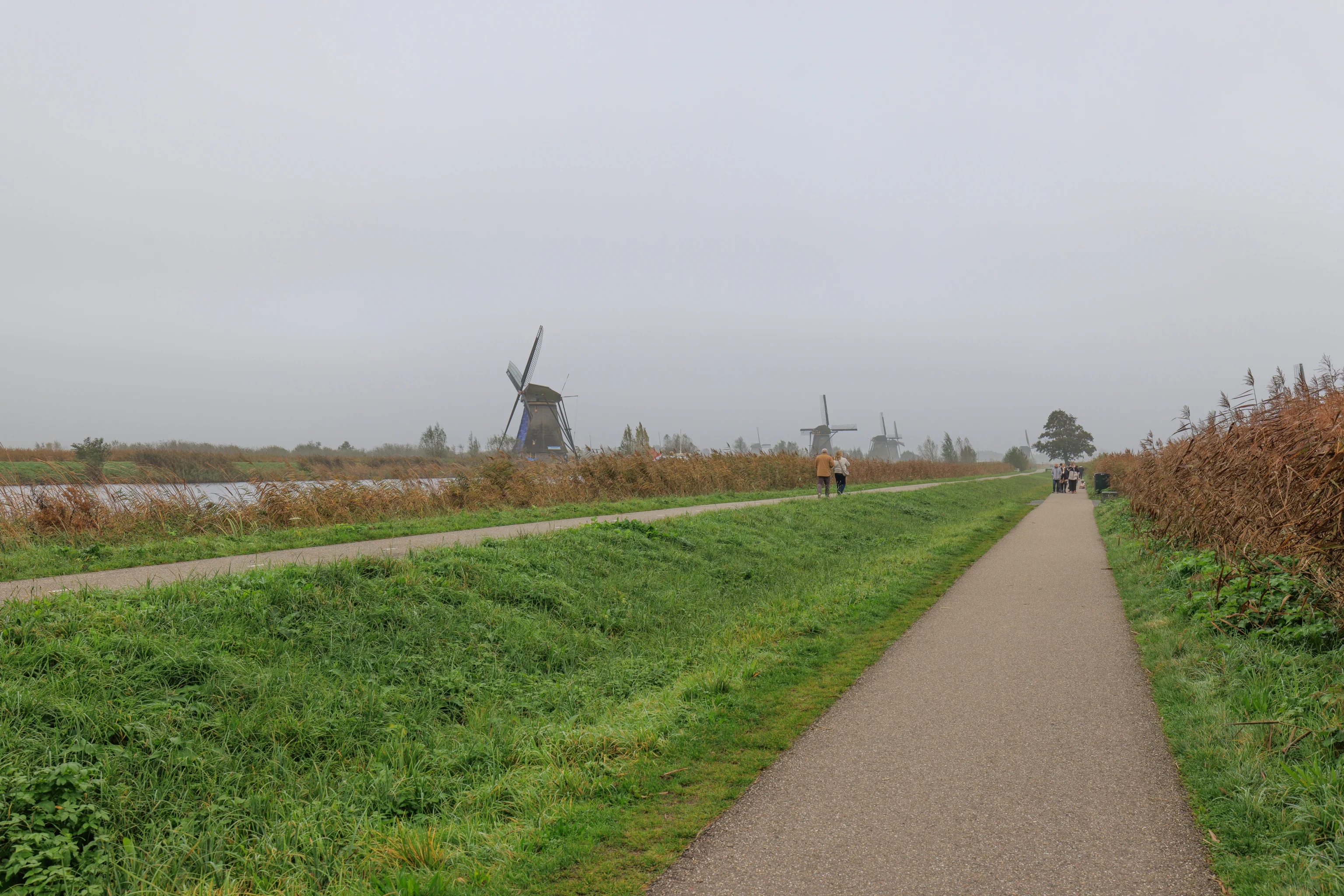
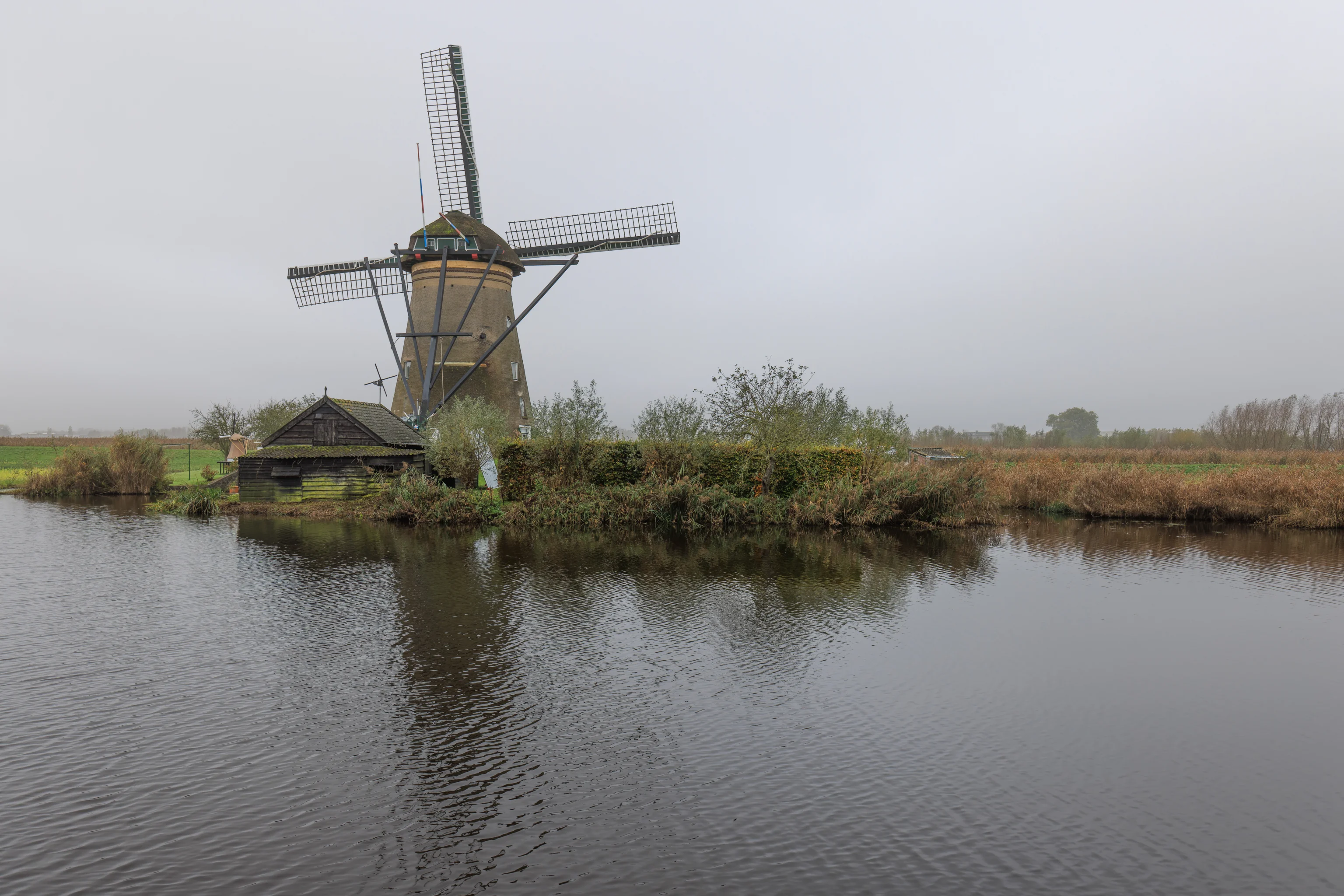
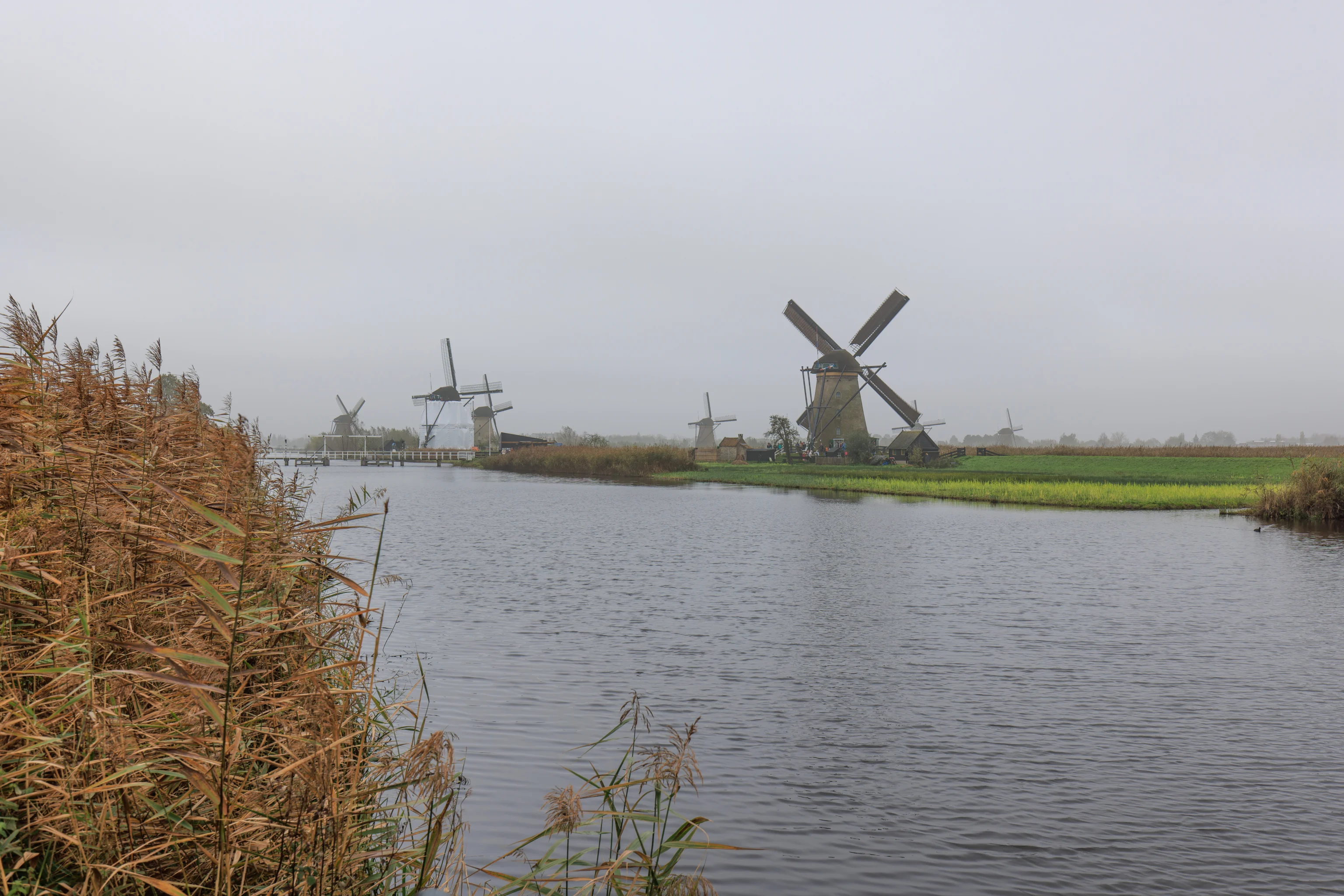
Rather than cross the bridge, we started walking to the south along the canal. The path is actually a narrow strip of land between a the main canal, the one the bridge crosses over, and a narrower parallel canal on the west side. This path that we are walking on seems to be named the Molenkade Nederwaard, while a parallel path on the other side is the Molenkade Overwaard.
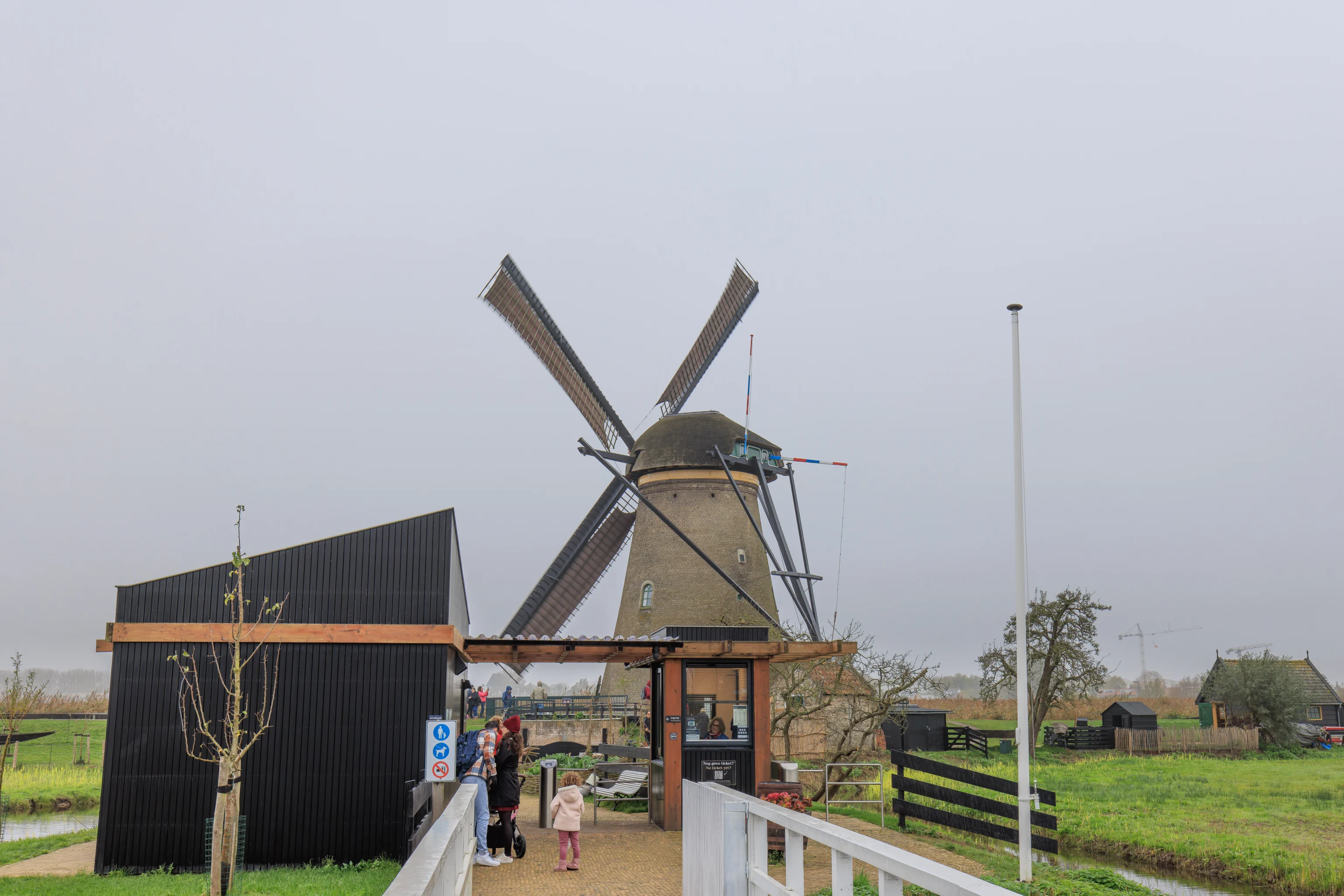
There are two windmills that can be visited. The first one we came across is this one, the Nederwaard Museum Mill, built in 1738. It is also referred to as Nederwaard #2. The windmills here are numbered from north to south. The southwest side of the main canal is Nederwaard and the opposite side is Overwaard. There is a small entry gate at the west end of a small bridge leading to the windmill.
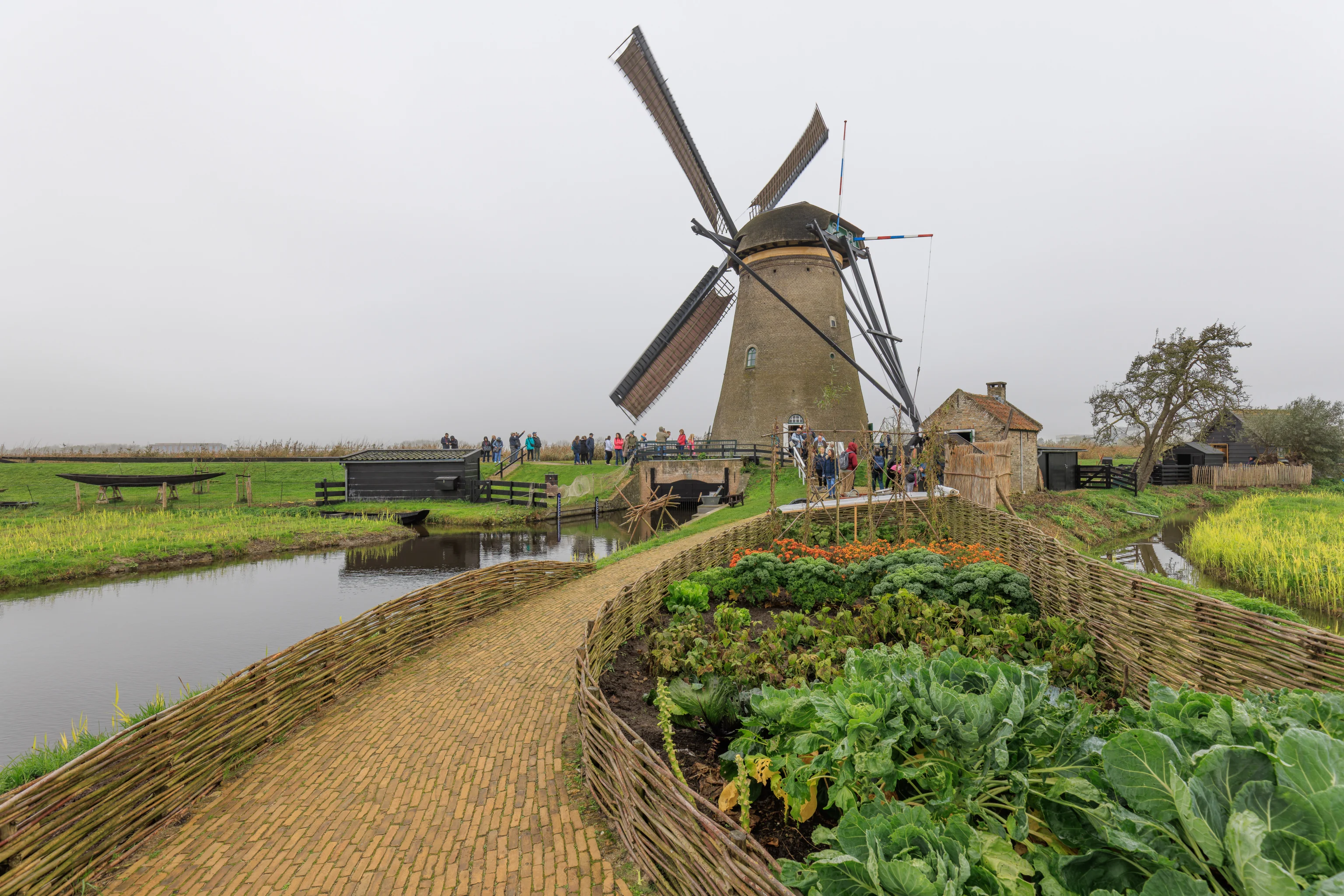
There is a small garden on the path leading to the windmill.
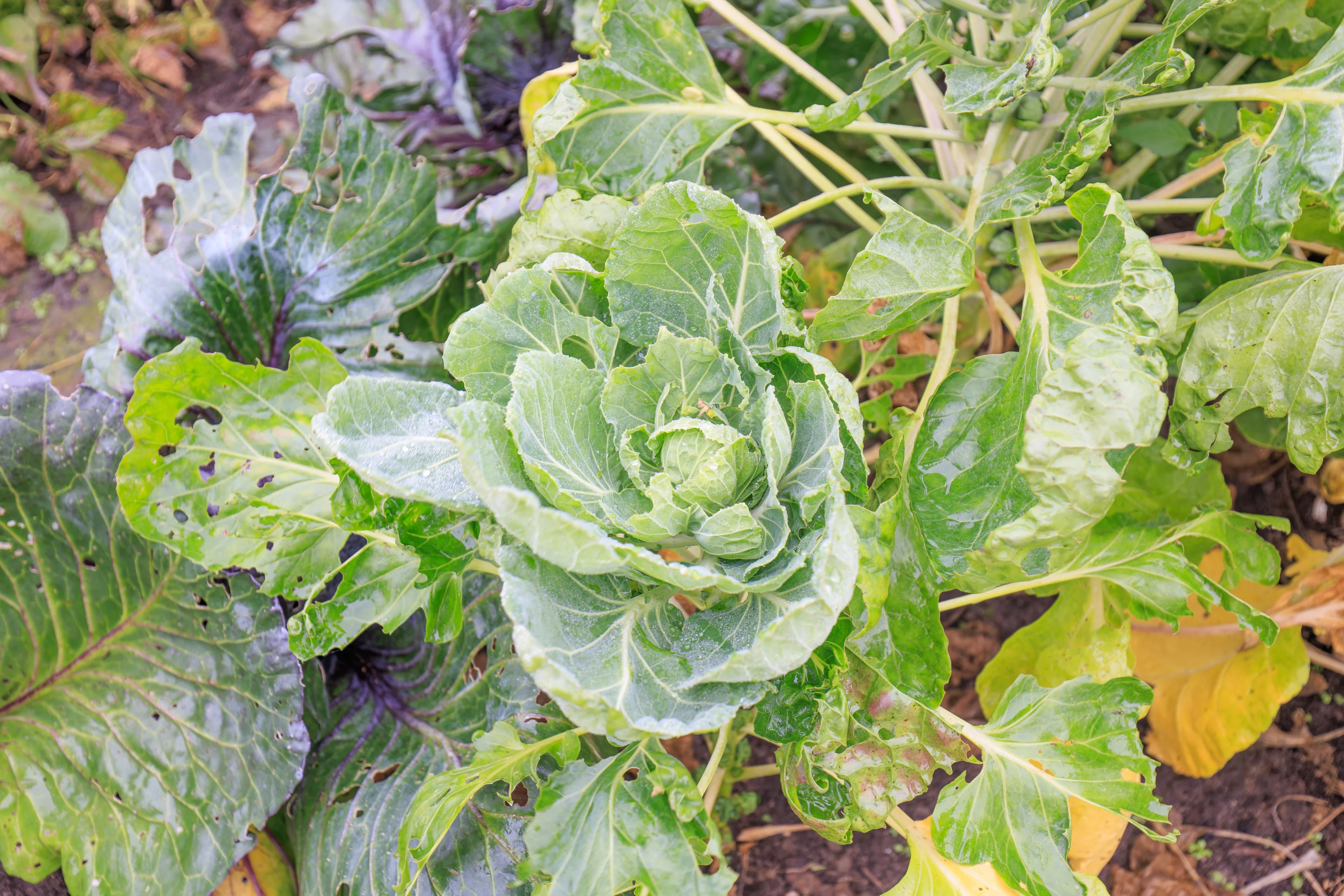
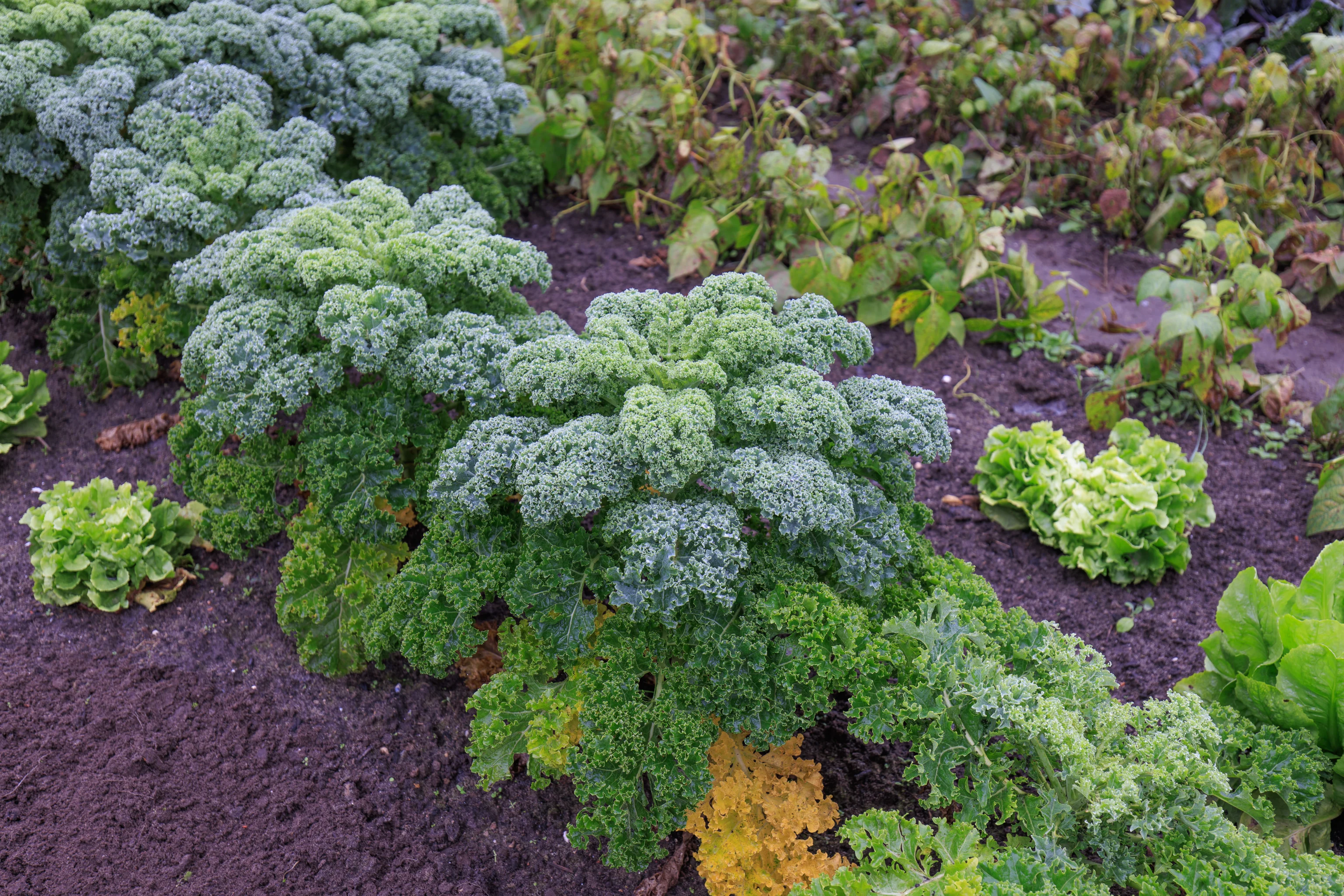
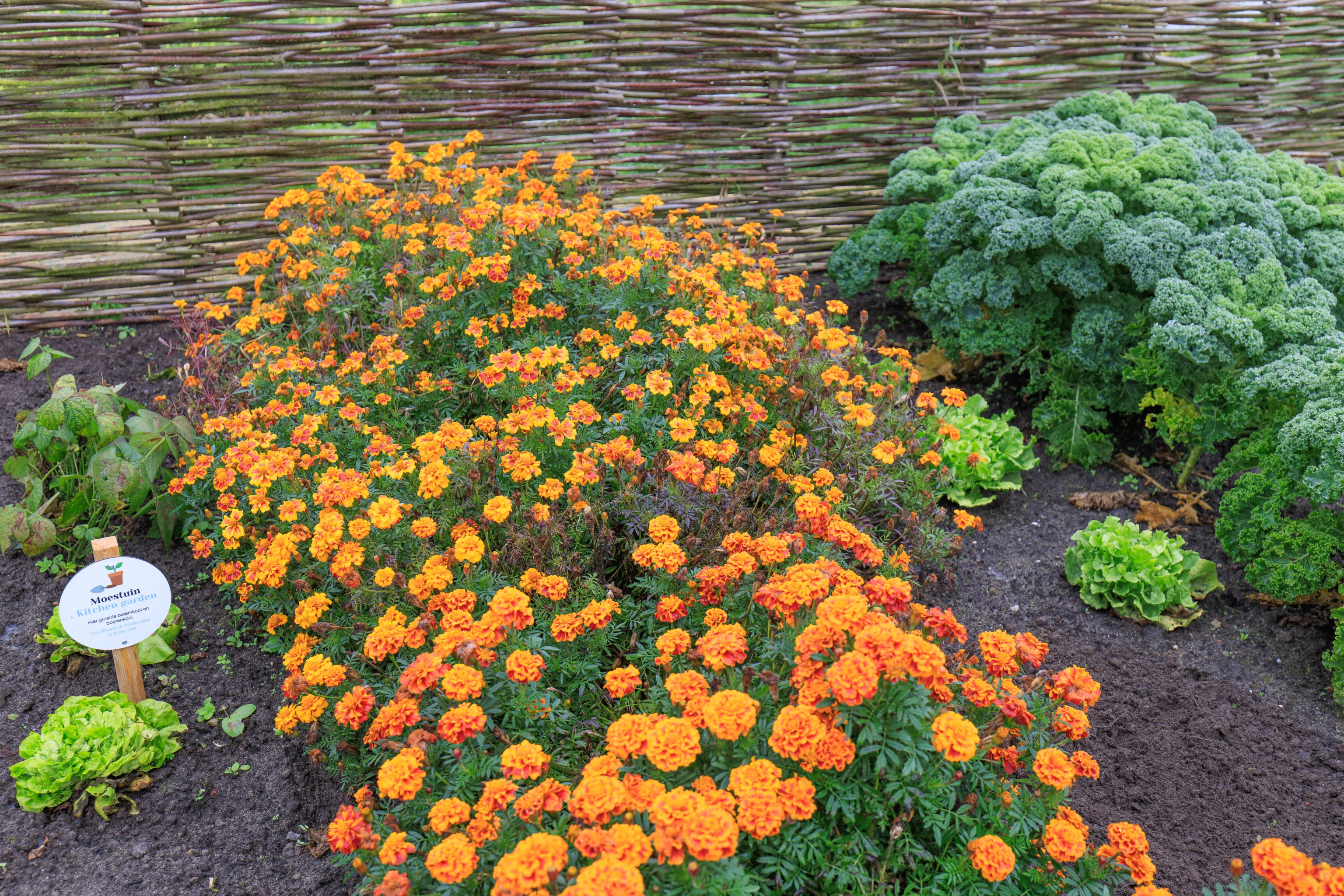
The garden had a variety of plants.
We recorded a short video of the Nederwaard Museum Mill slowly turning in the wind. The way this particular type of windmill works is that the upper portion, which visually appears darker than the rest of the structure, can be rotated to ensure the windmill is facing the wind. There is a large wheel, kind of like a ship’s wheel, which is the mechanism for the windmill operator to manually rotate the windmill.
We didn’t see any signage that explained this mechanism, however, there are apparently Dutch style windmills in Illinois as well as a website, Illinois Windmills, that explains how they work.
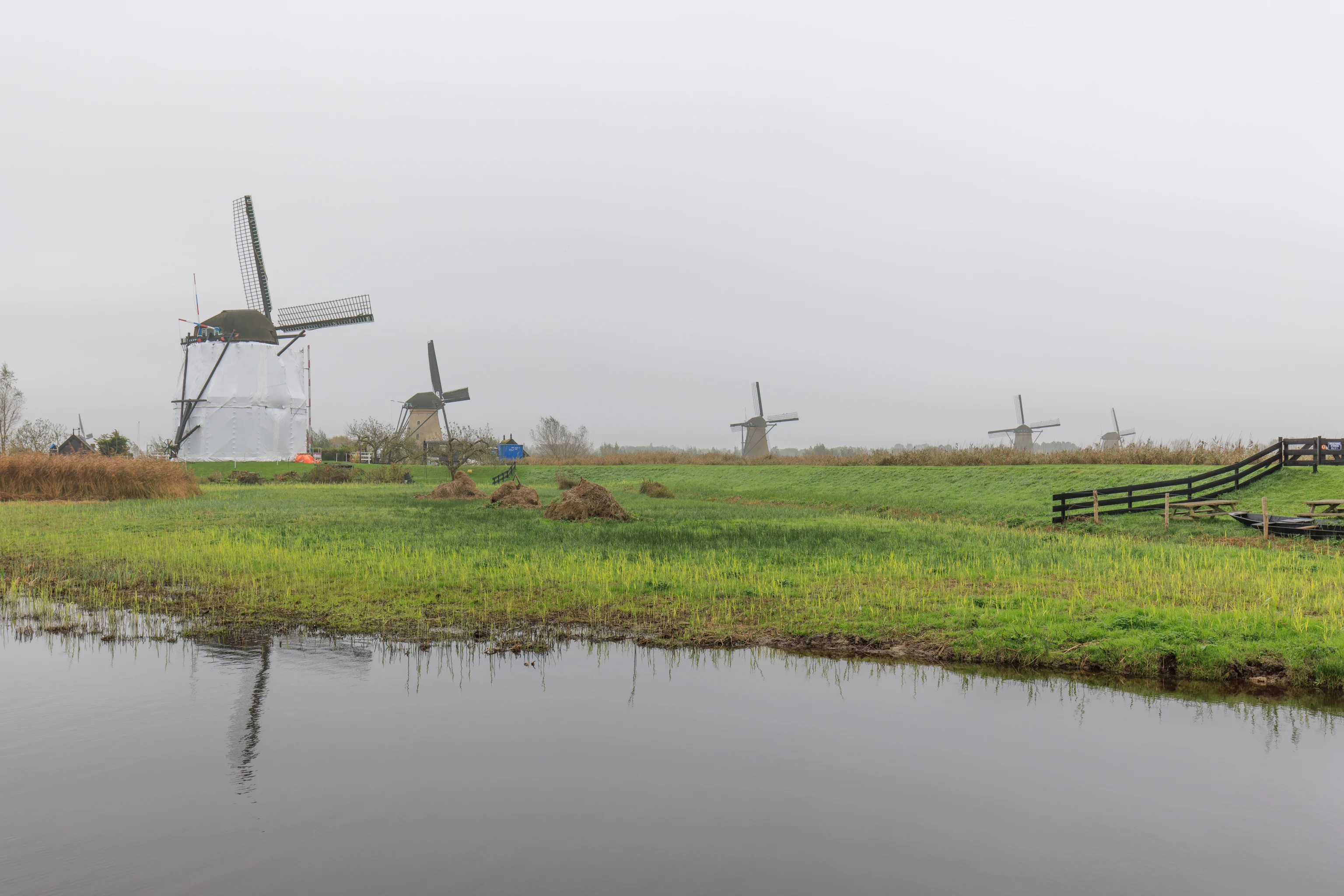
We could see other windmills to the southeast.
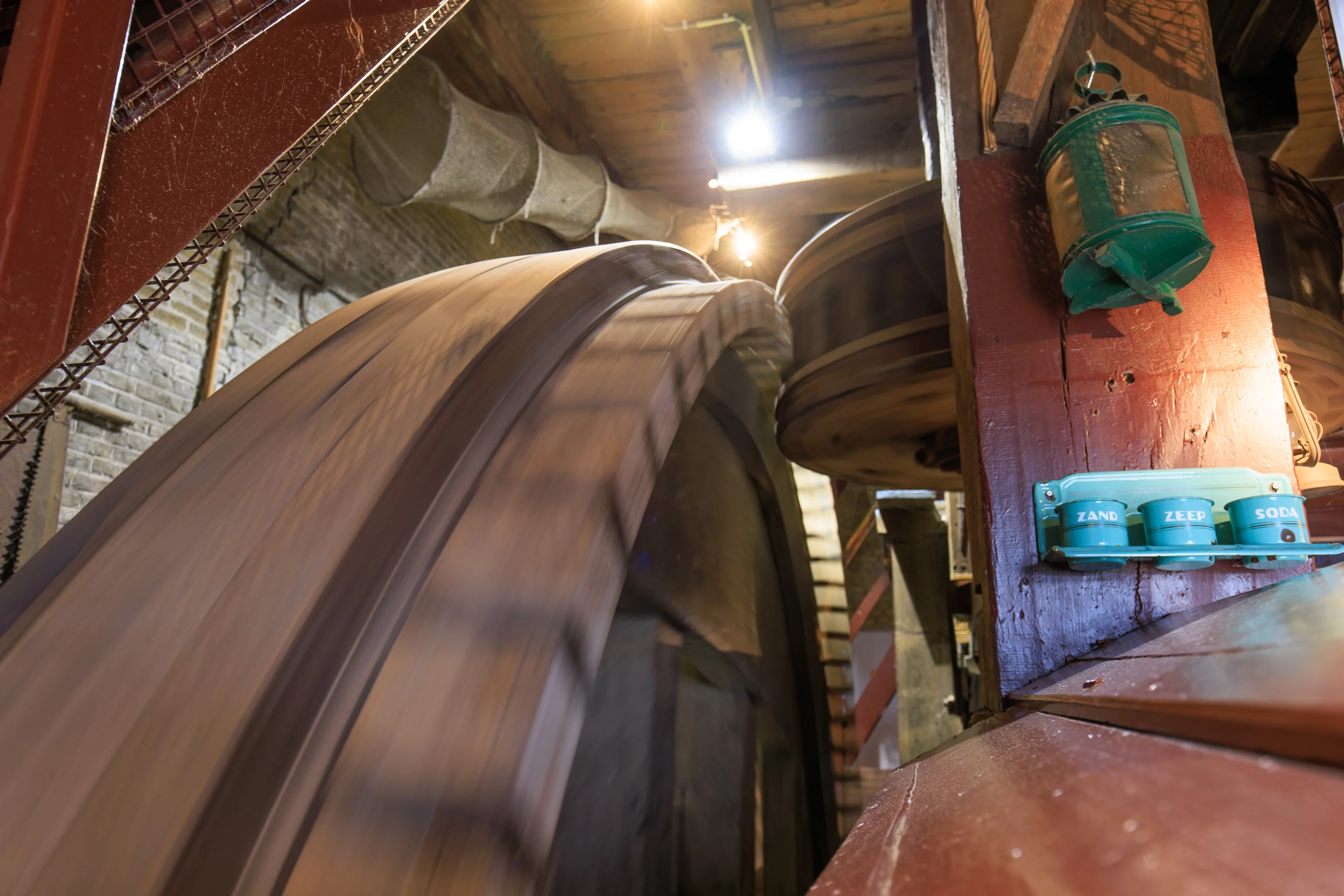
The ground floor of the windmill is filled with this internal gear mechanism which transfers rotational energy from a central shaft to a perpendicular wheel. The windmills of Kinderdijk were used as water pumps for a system of canals in the area. We didn’t see the actual water pumping mechanism here in the windmill but there is a channel of water that seems to run under the windmill to another canal on its opposite side.
We recorded a short video showing the lower gear in action.
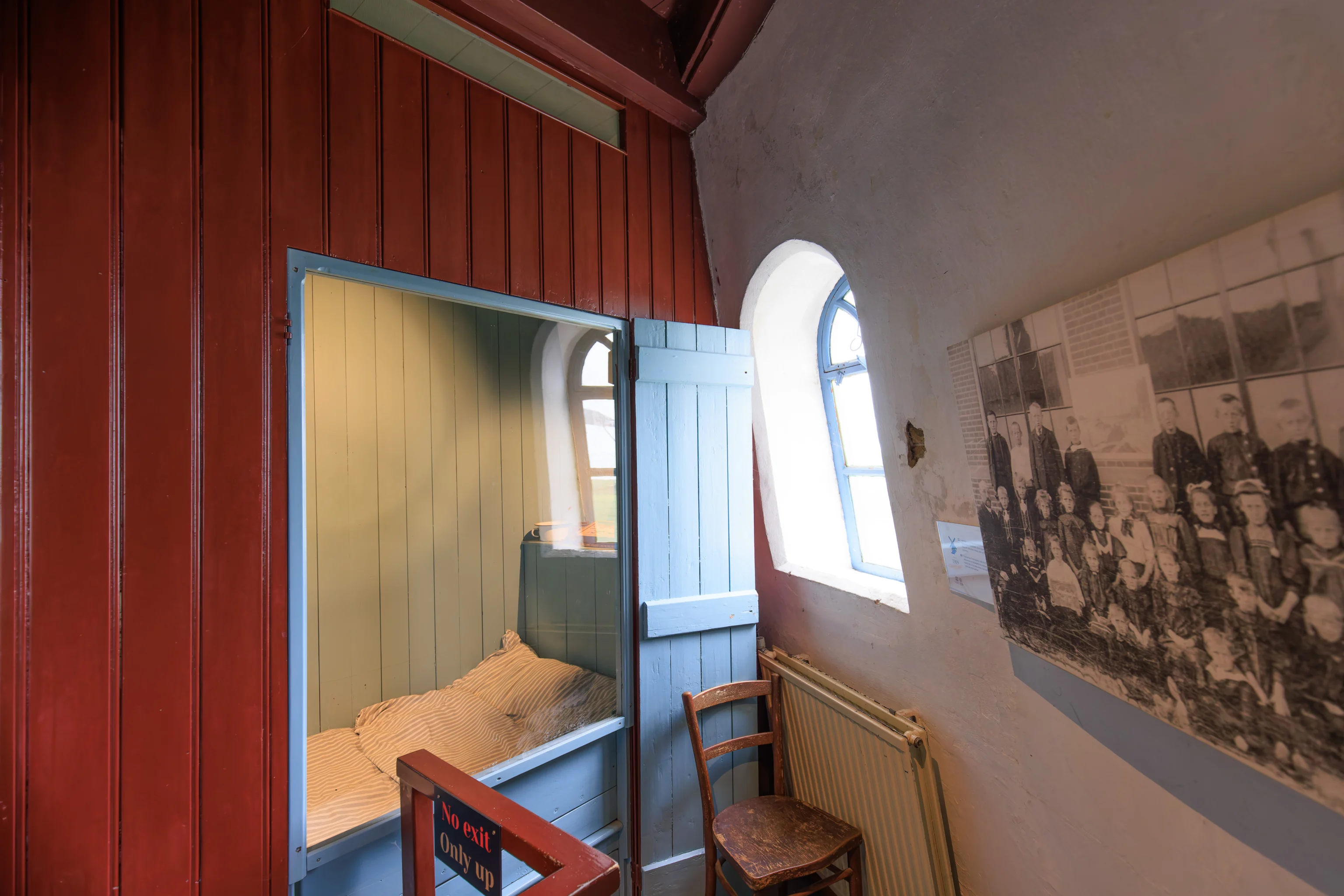
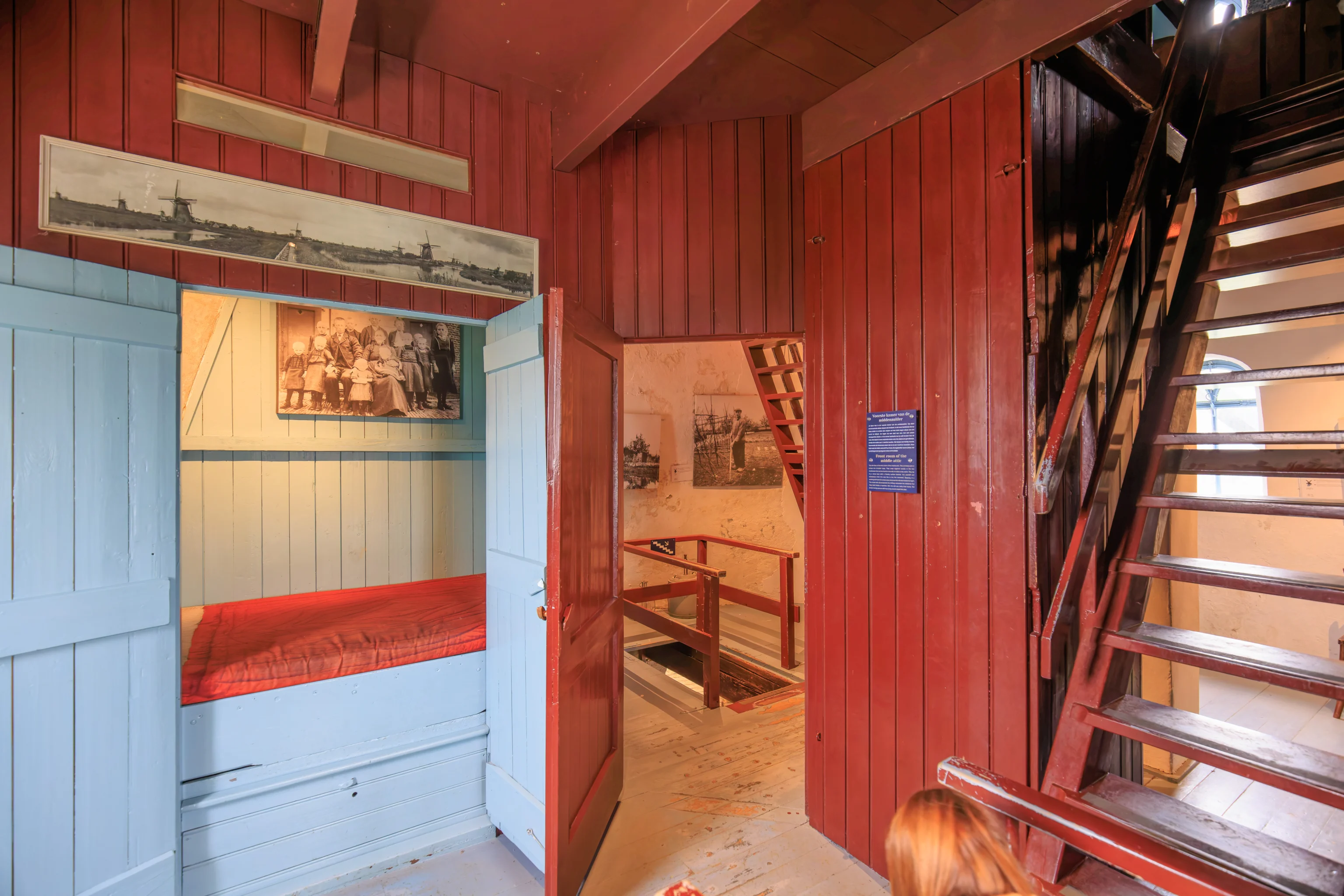
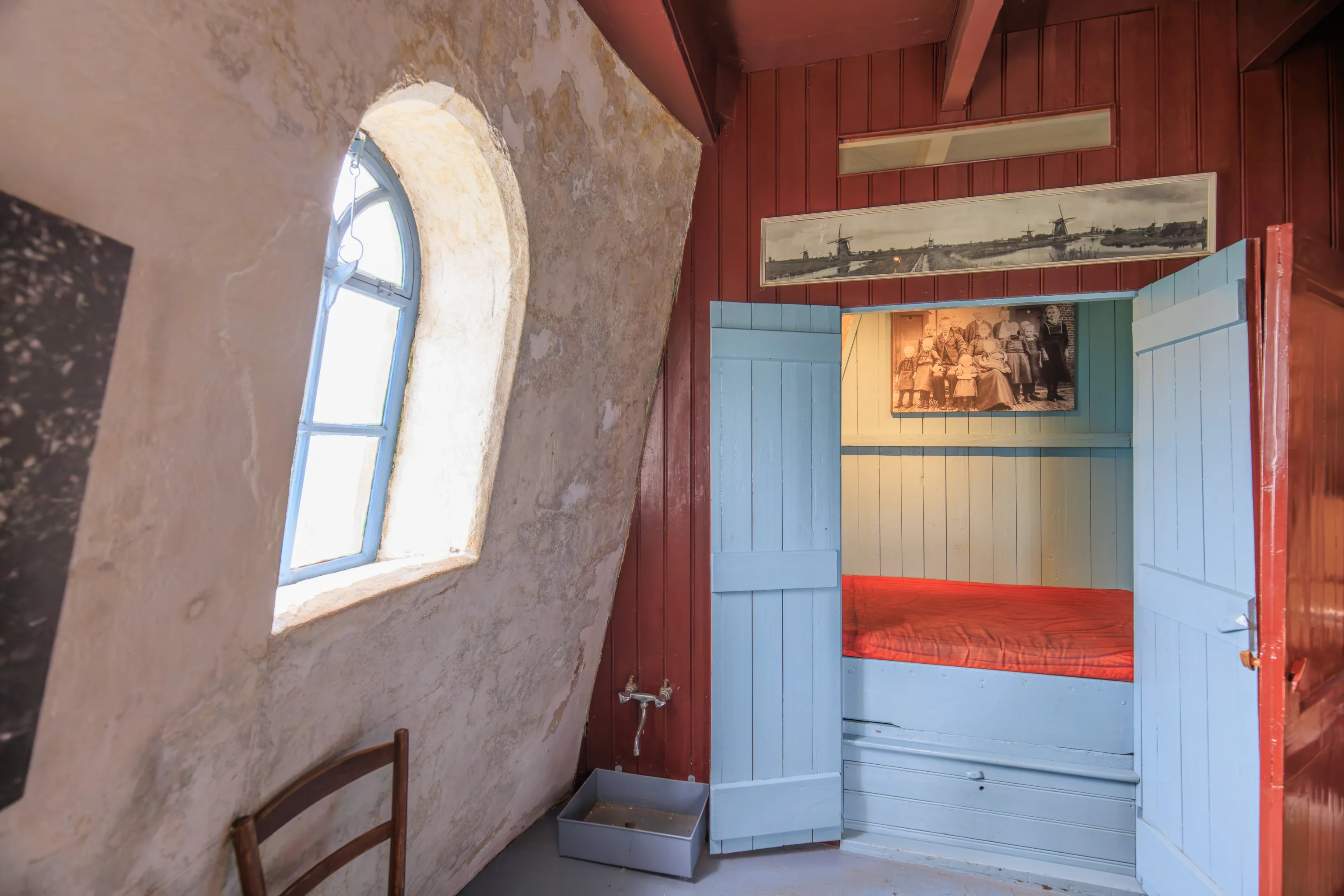
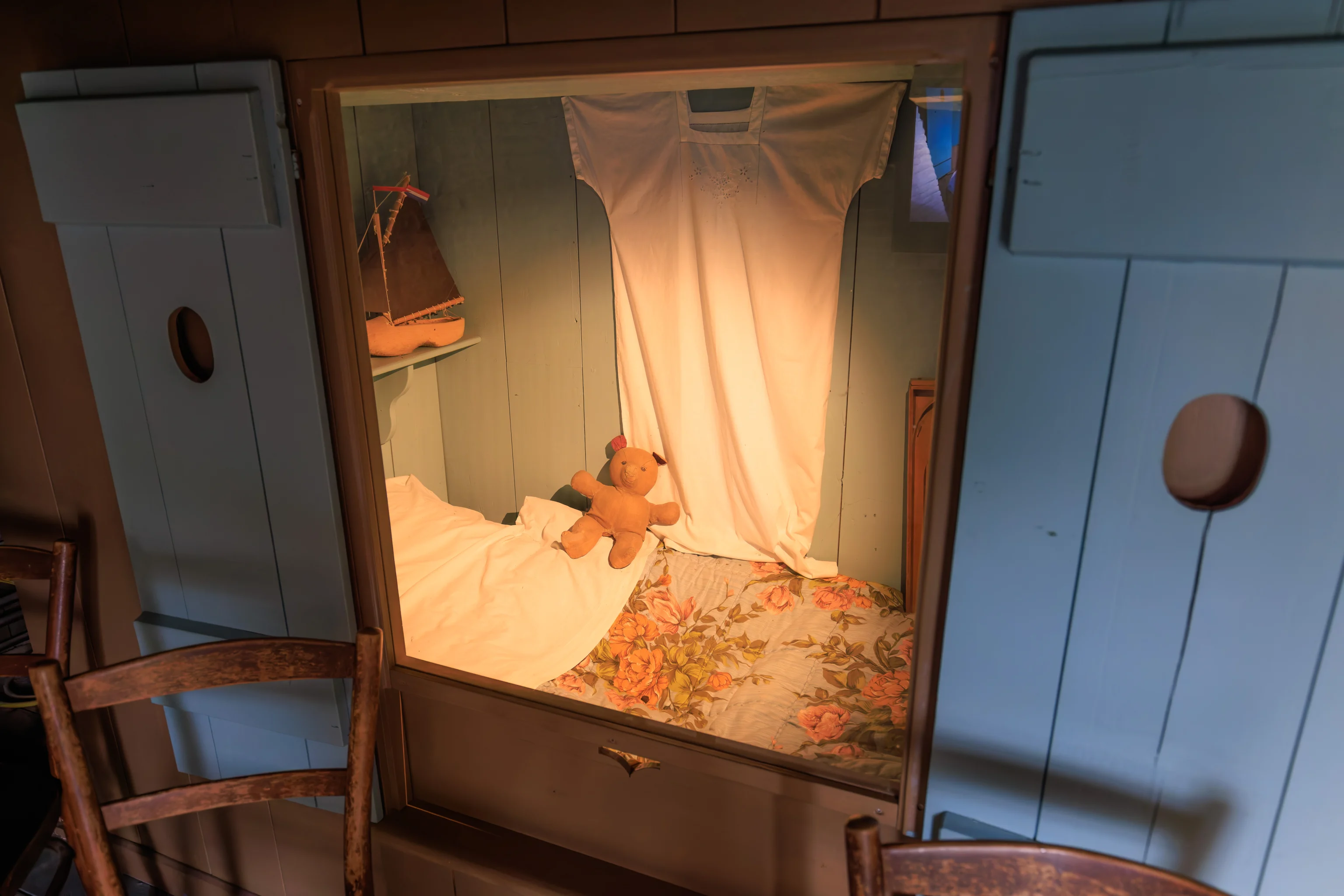
The Dutch windmills are also homes for the families that operate them. Here at Kinderdijk, they would have received a small salary to operate and maintain the windmill but also would need to supplement their income by other means such as farming or fishing.
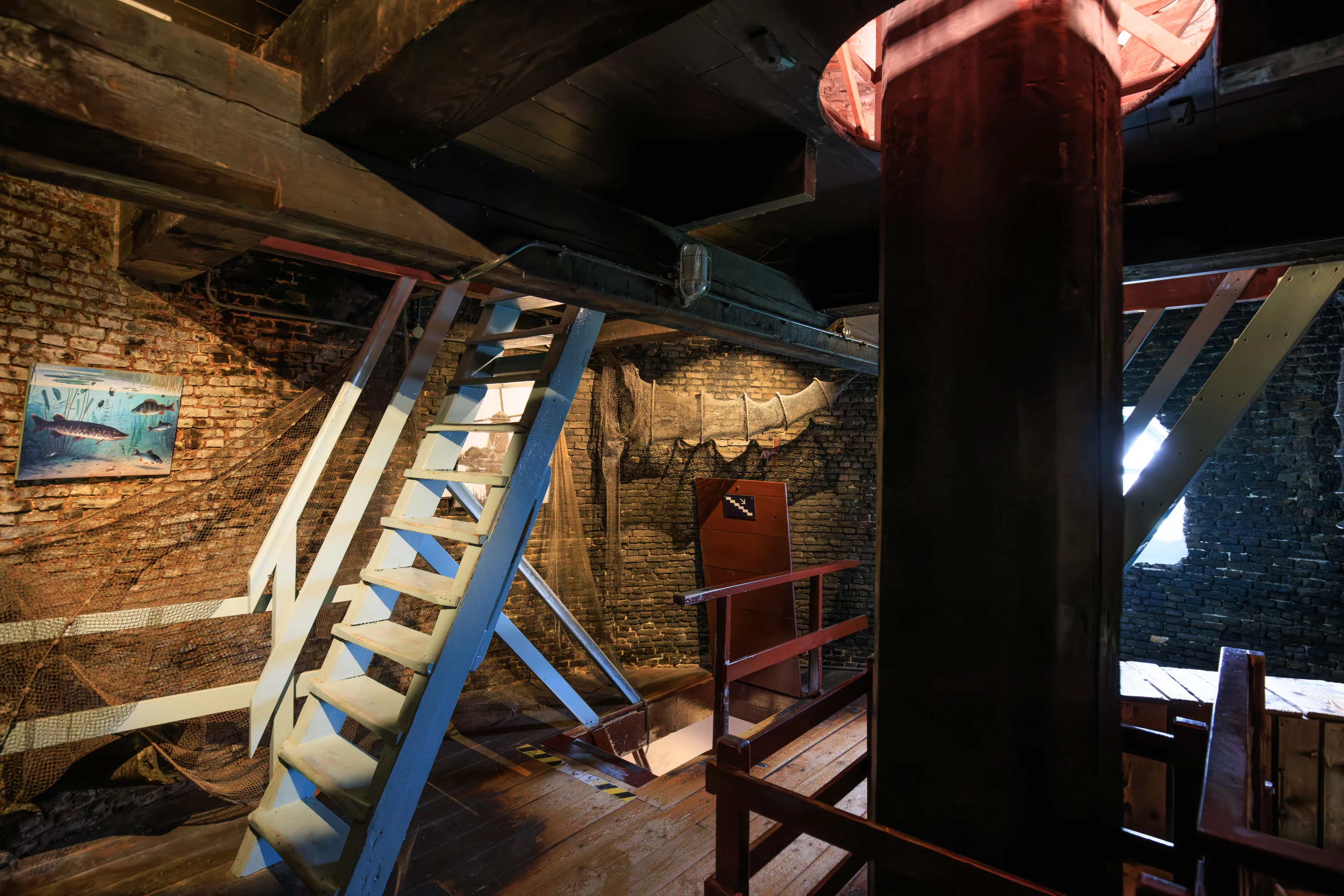
Each floor is accessed via steep stairs.
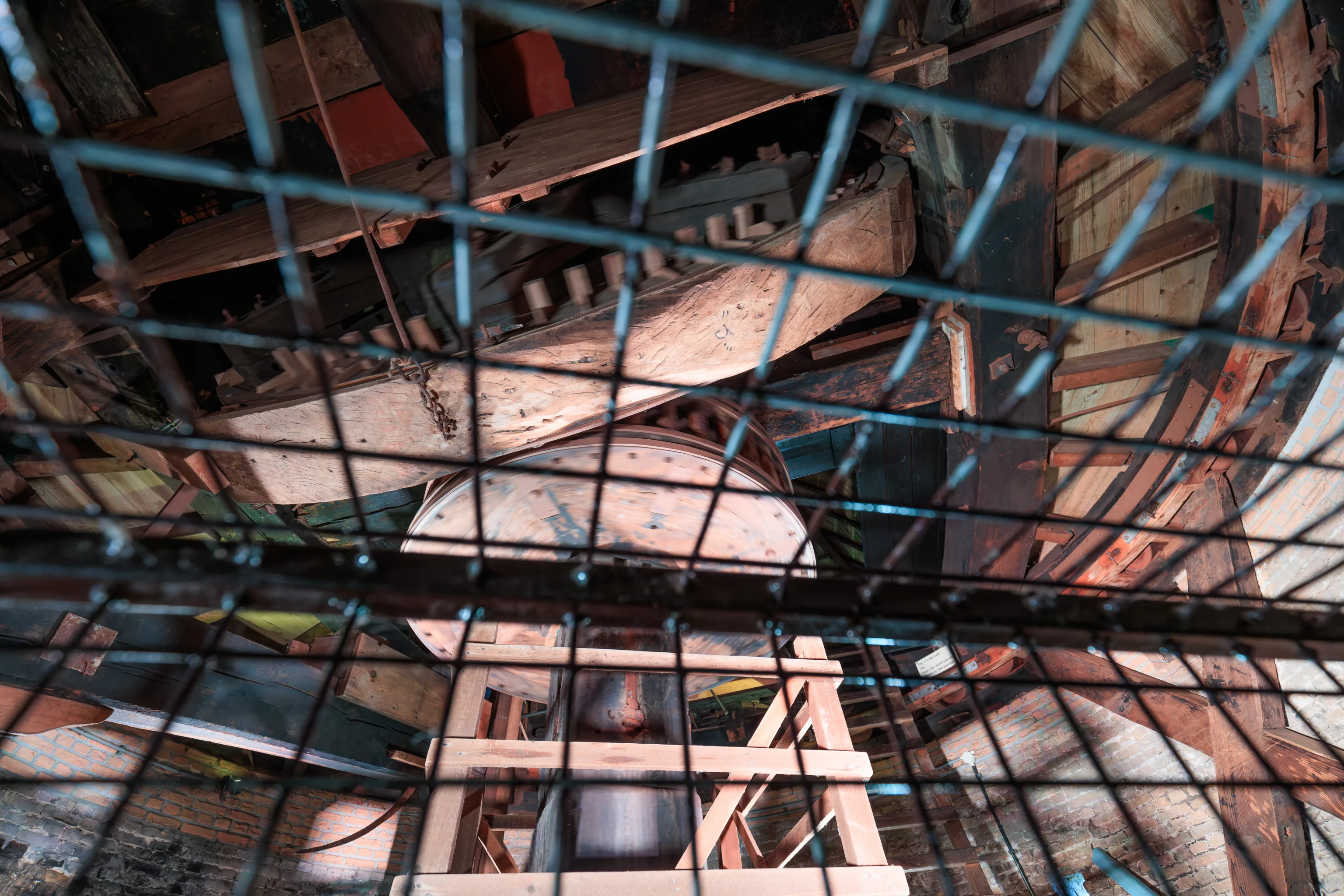
The top floor isn’t accessible, however, can be seen through wire fencing that prevents visitor access. This gear up top is similar to the gear on the ground floor in that it is causing a perpendicular change in rotation.
We recorded a video showing the gears turning.
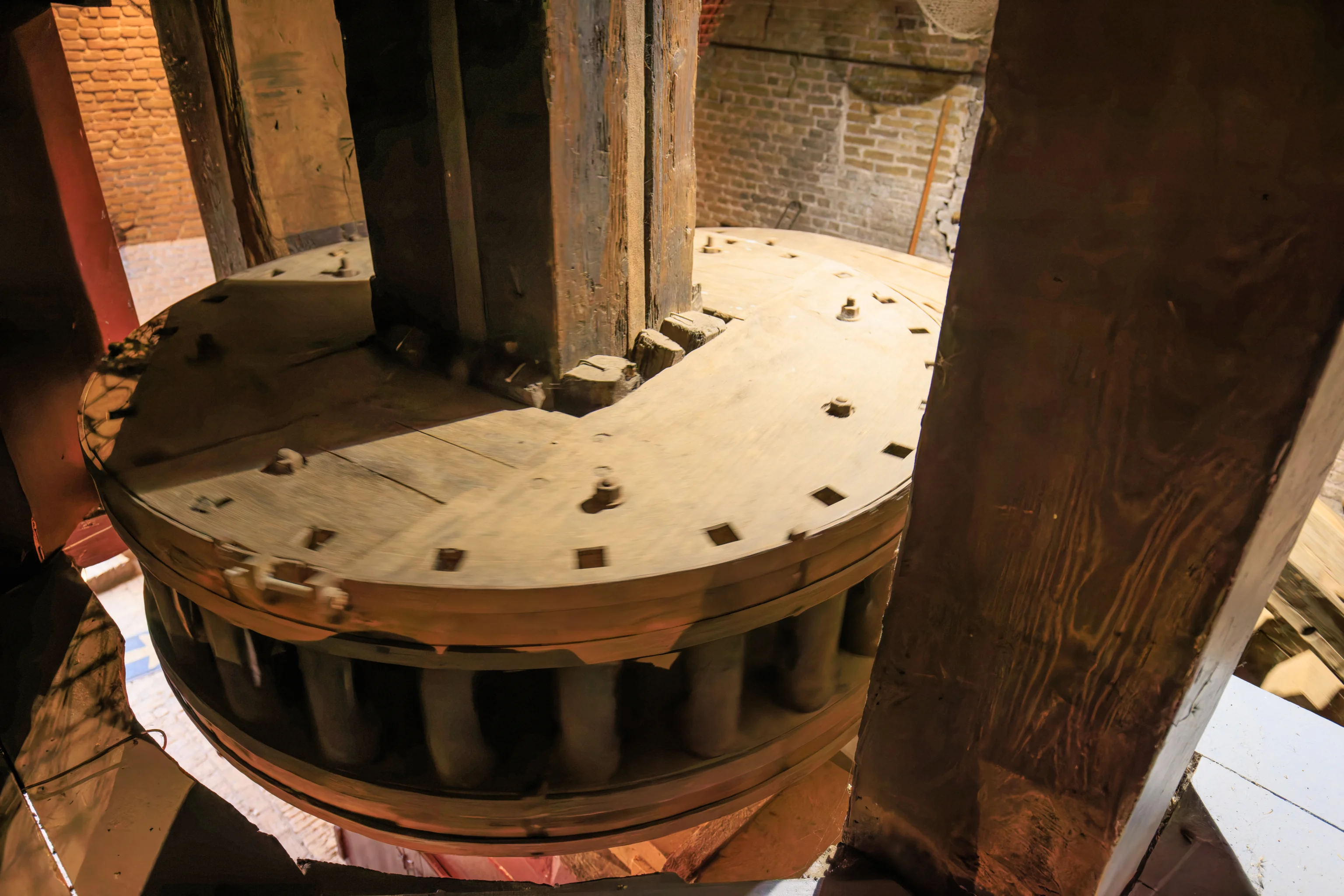
The lower gear, as seen from the second floor of the windmill.
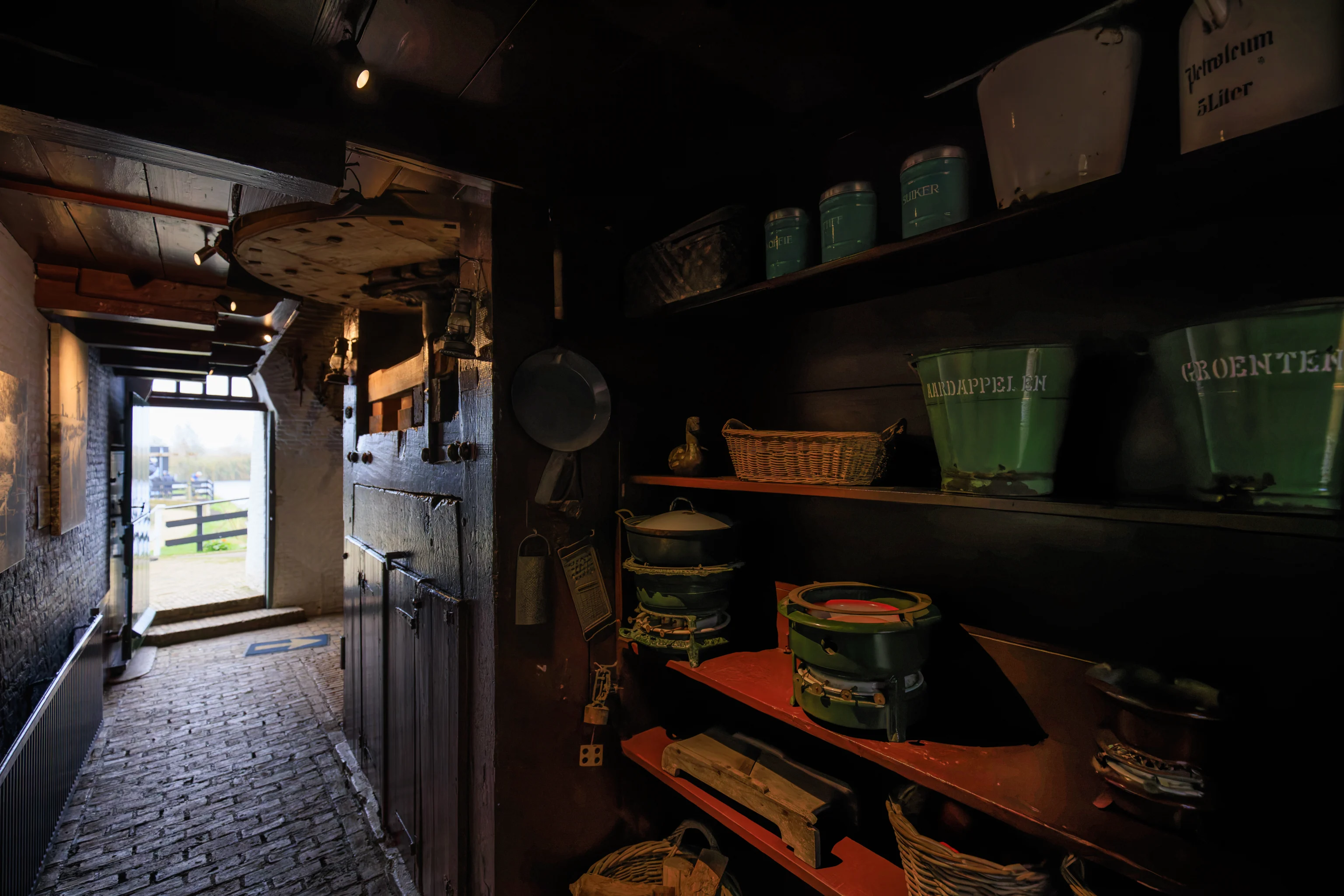
There seems to be a smaller gear here near the exit, though only a bit of it is visible.
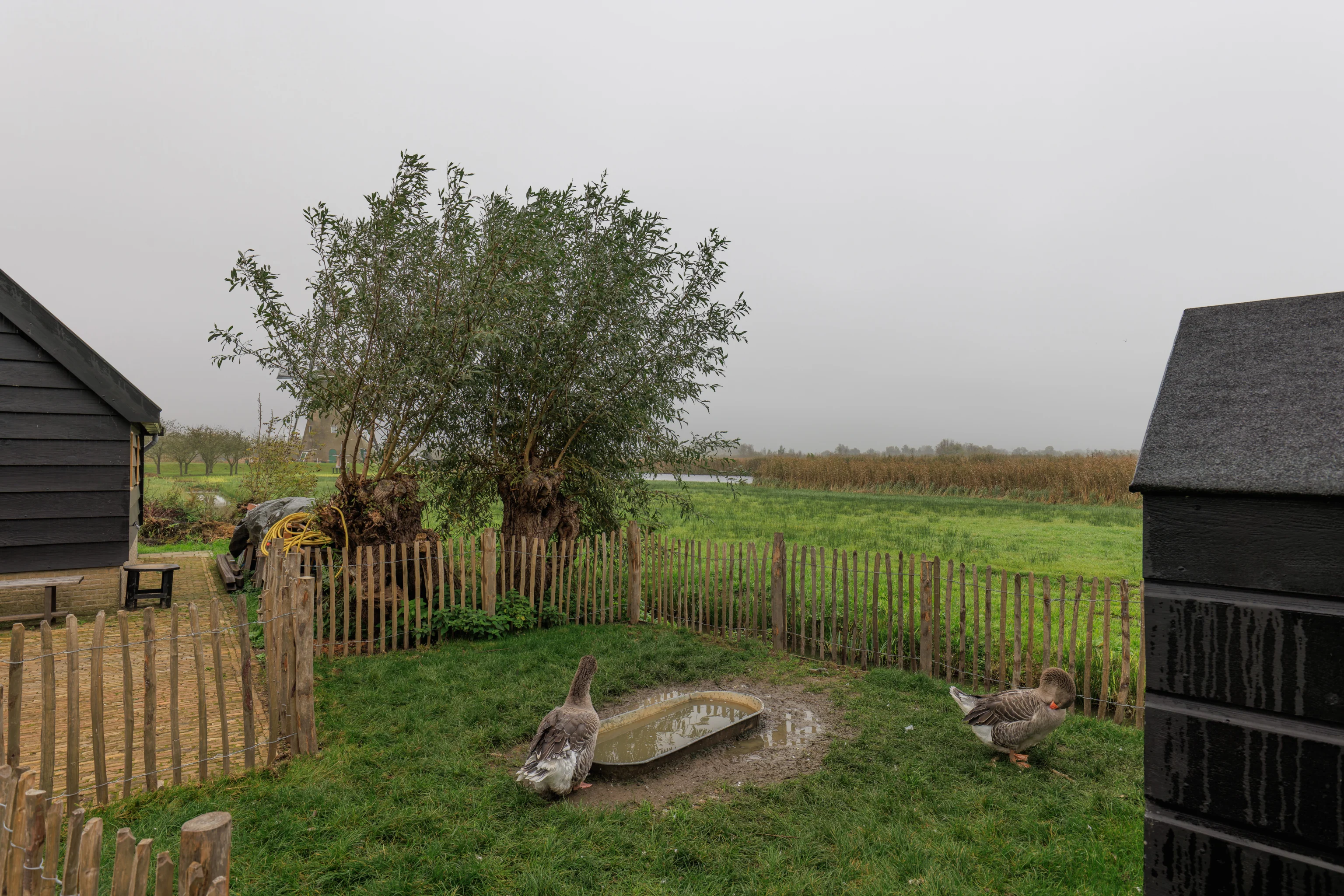
There was a small fenced in area next to the windmill with two rather large geese! They seem to be Greylag Geese, a species present in Europe and Asia.
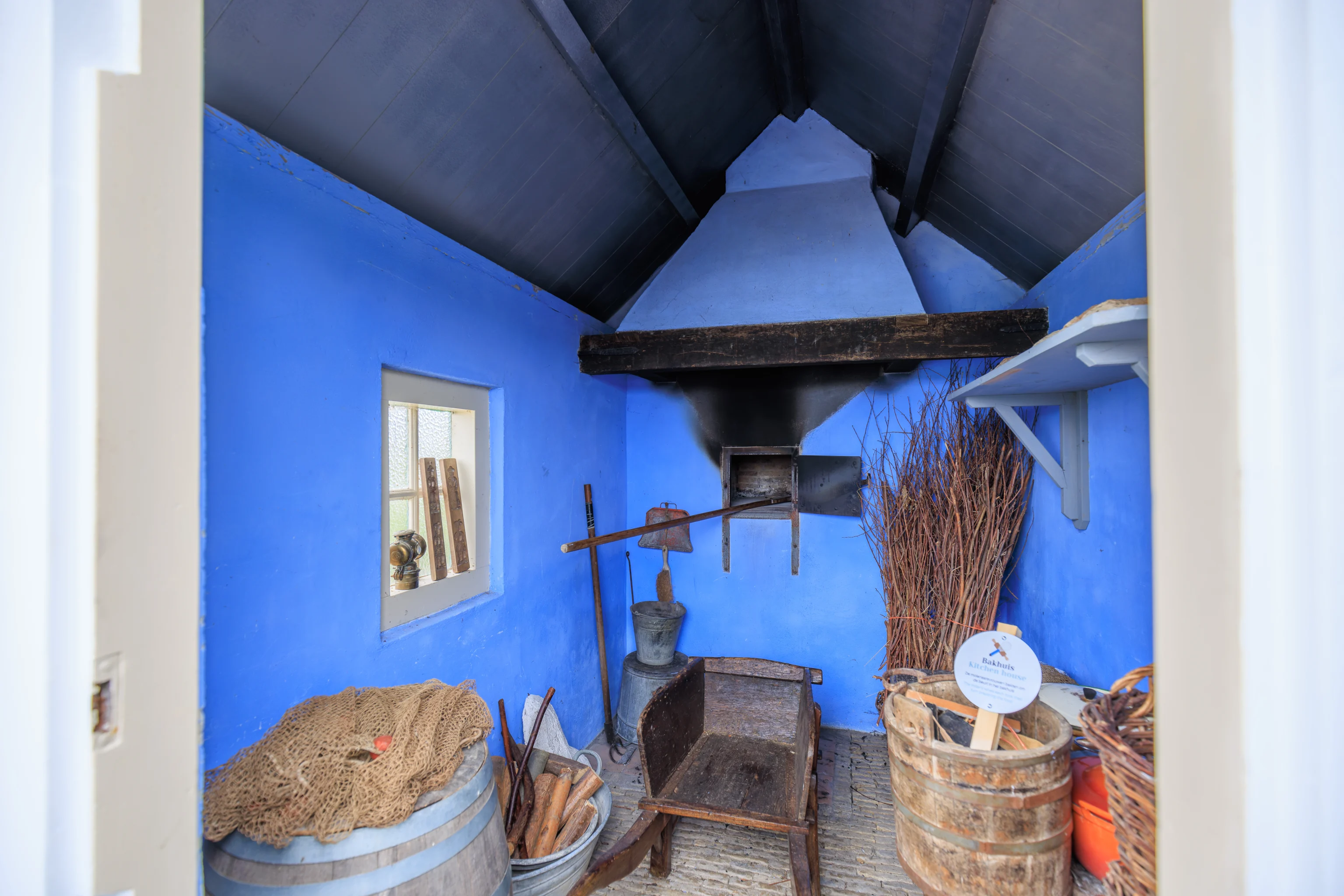
There was a kitchen in a separate small building next to the windmill.
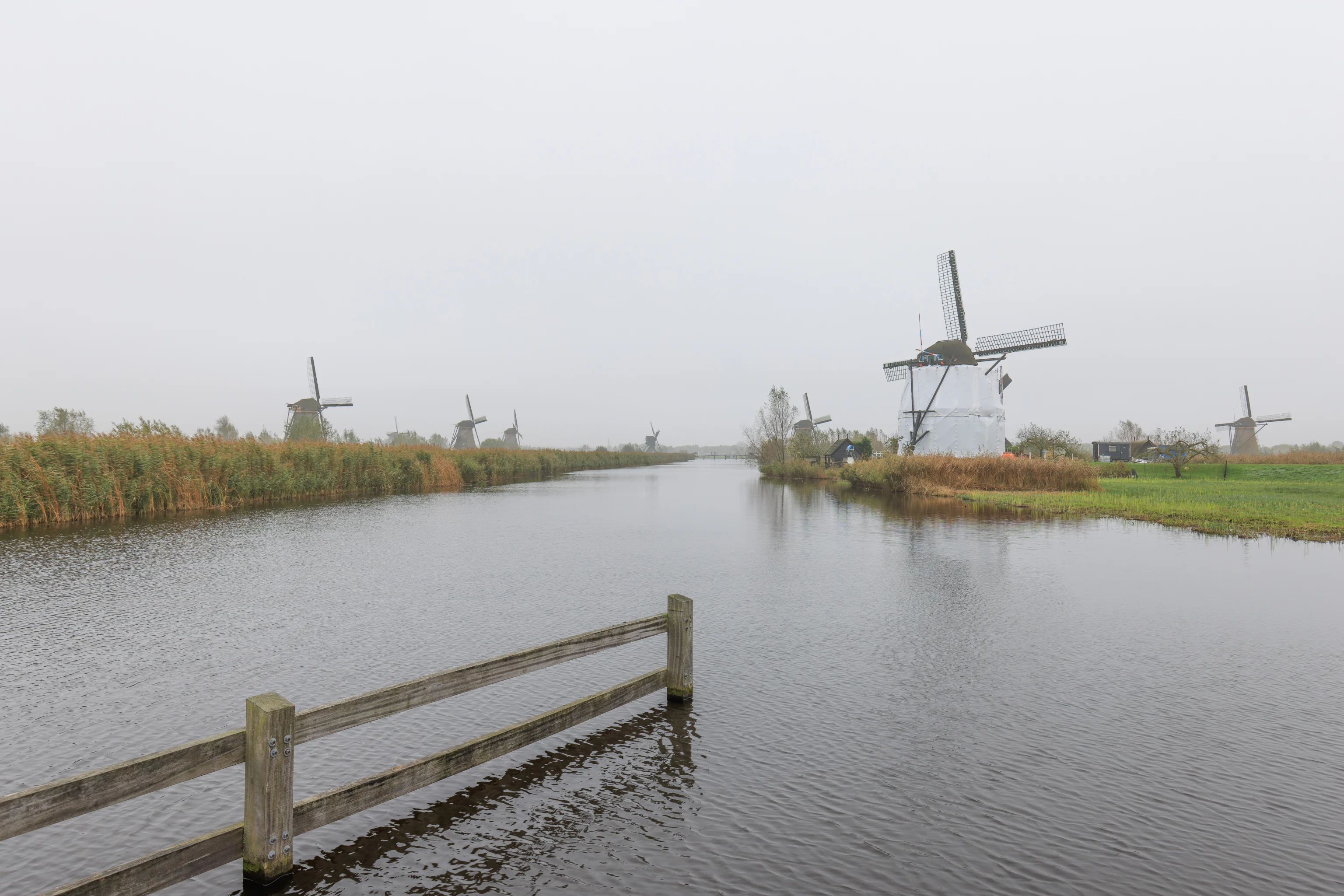
The view to the south from the bridge that goes over the canal between the windmill and Kinderdijk’s main path.
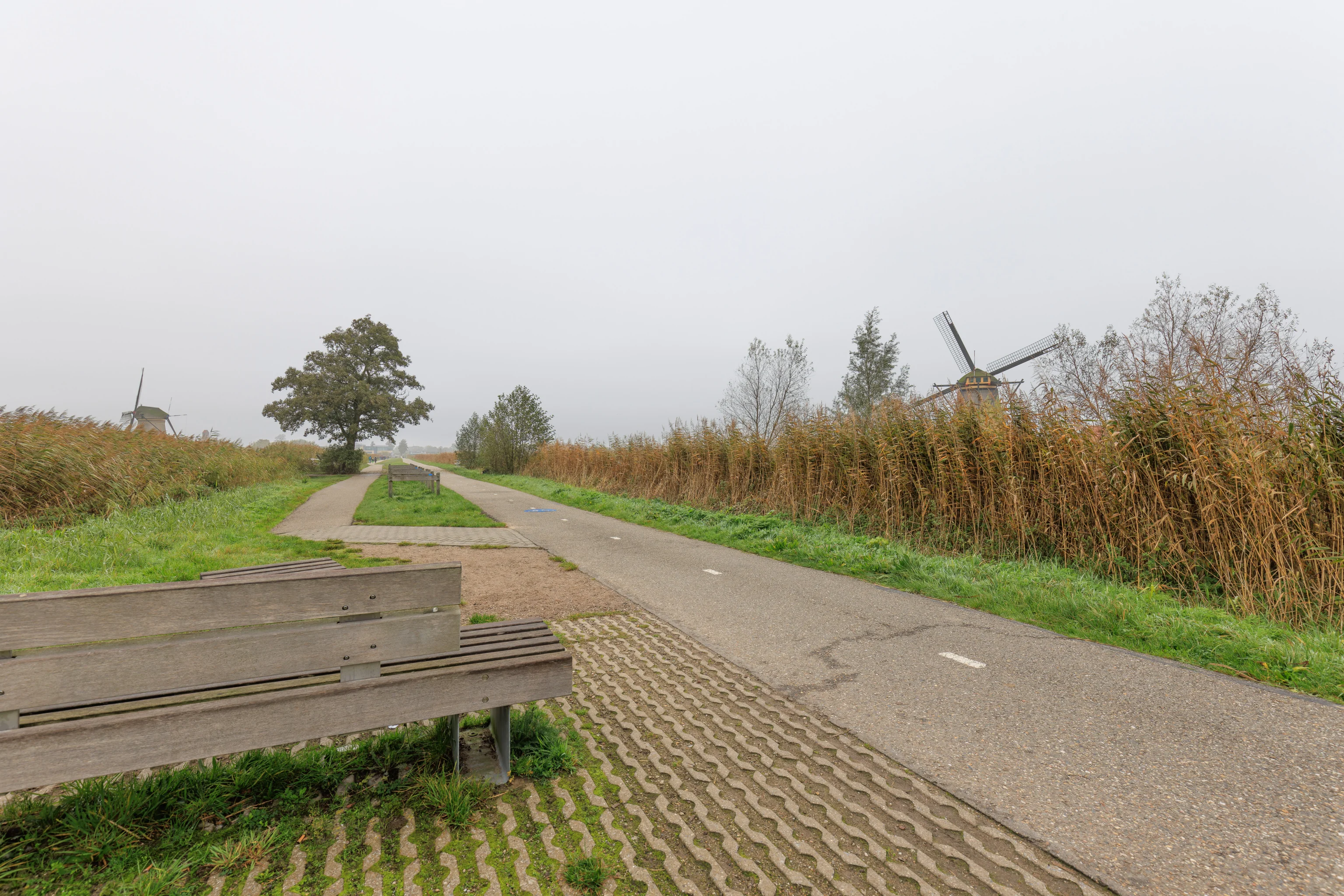
There were some benches on the path near the windmill.
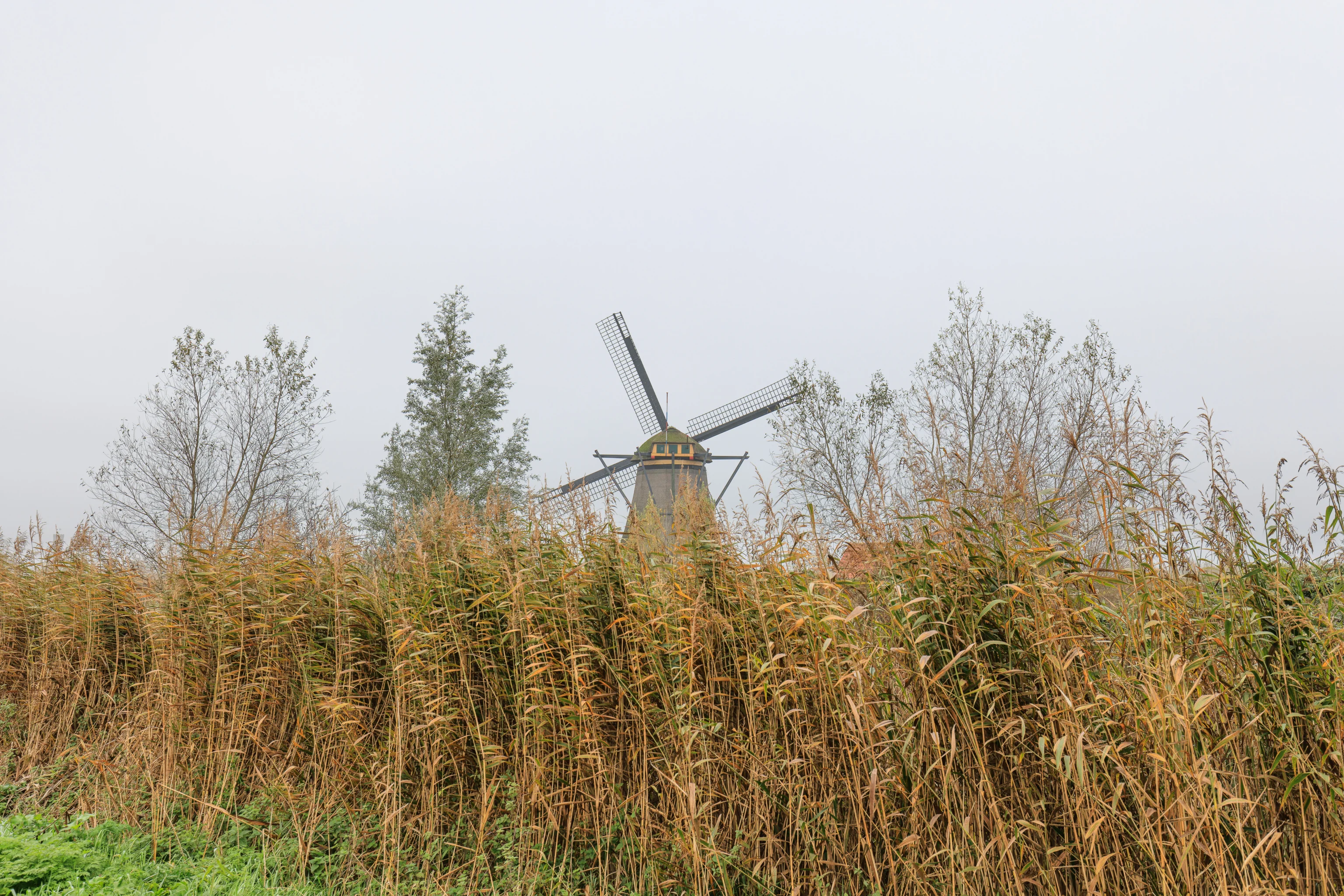
This windmill, on the east side of the main canal, is Overwaard #1.
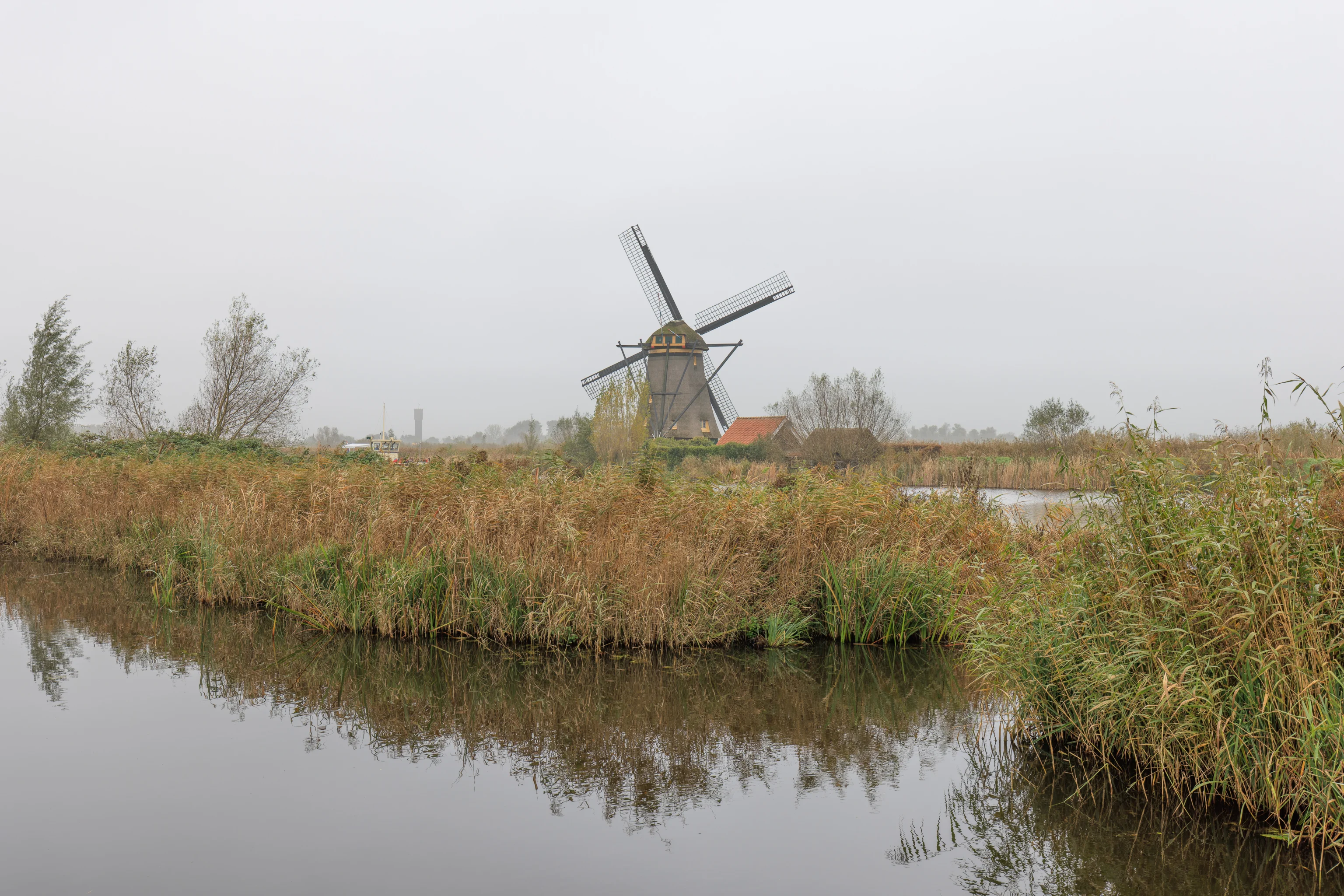
There are two narrow islands in the main canal near the Molenkade Nederwaard. One of them is pretty short but the other one is rather long.
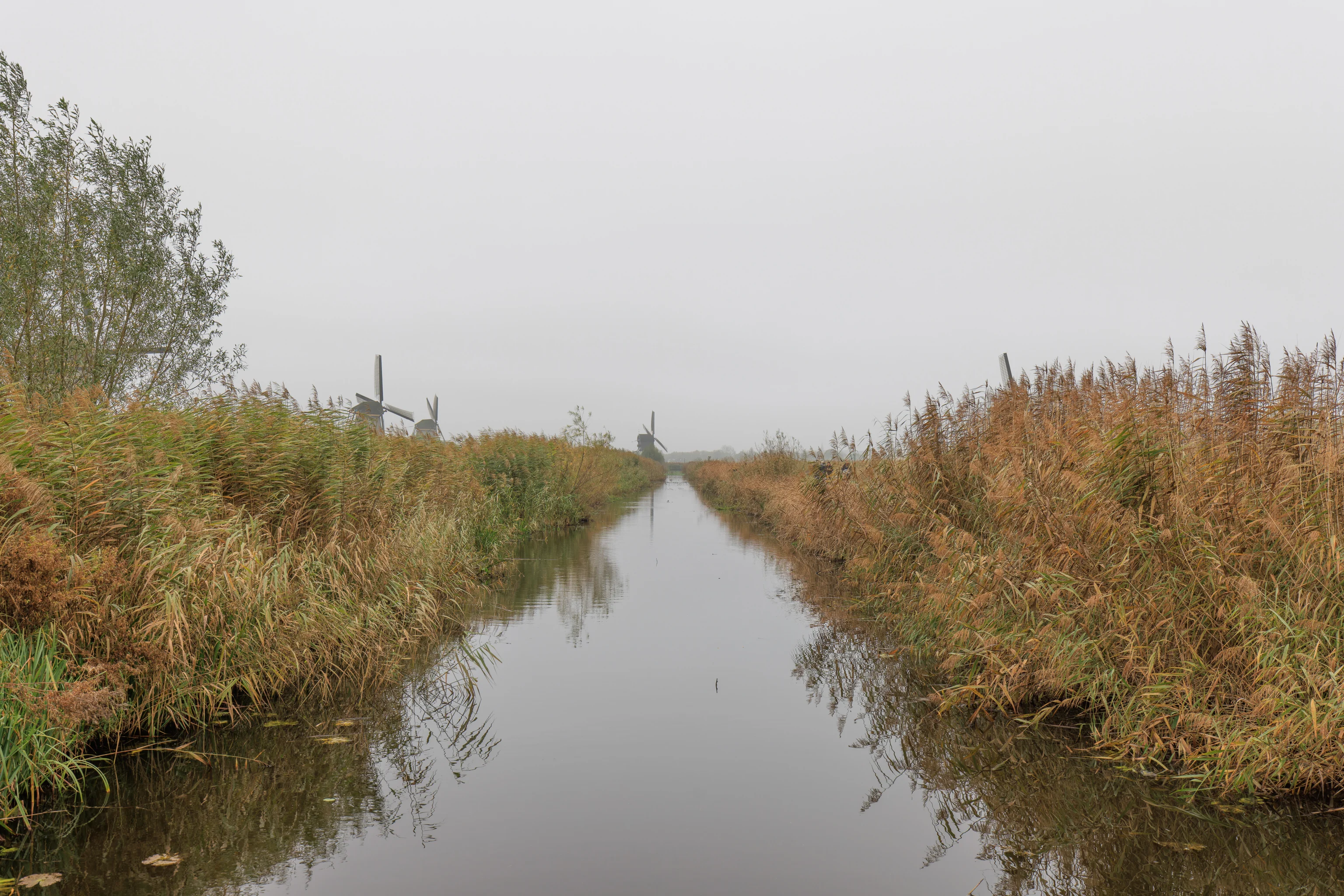
The long narrow island is connected to the path by bridges on either end. This was the view to the southeast from the northern bridge looking down the narrow channel formed by the island.
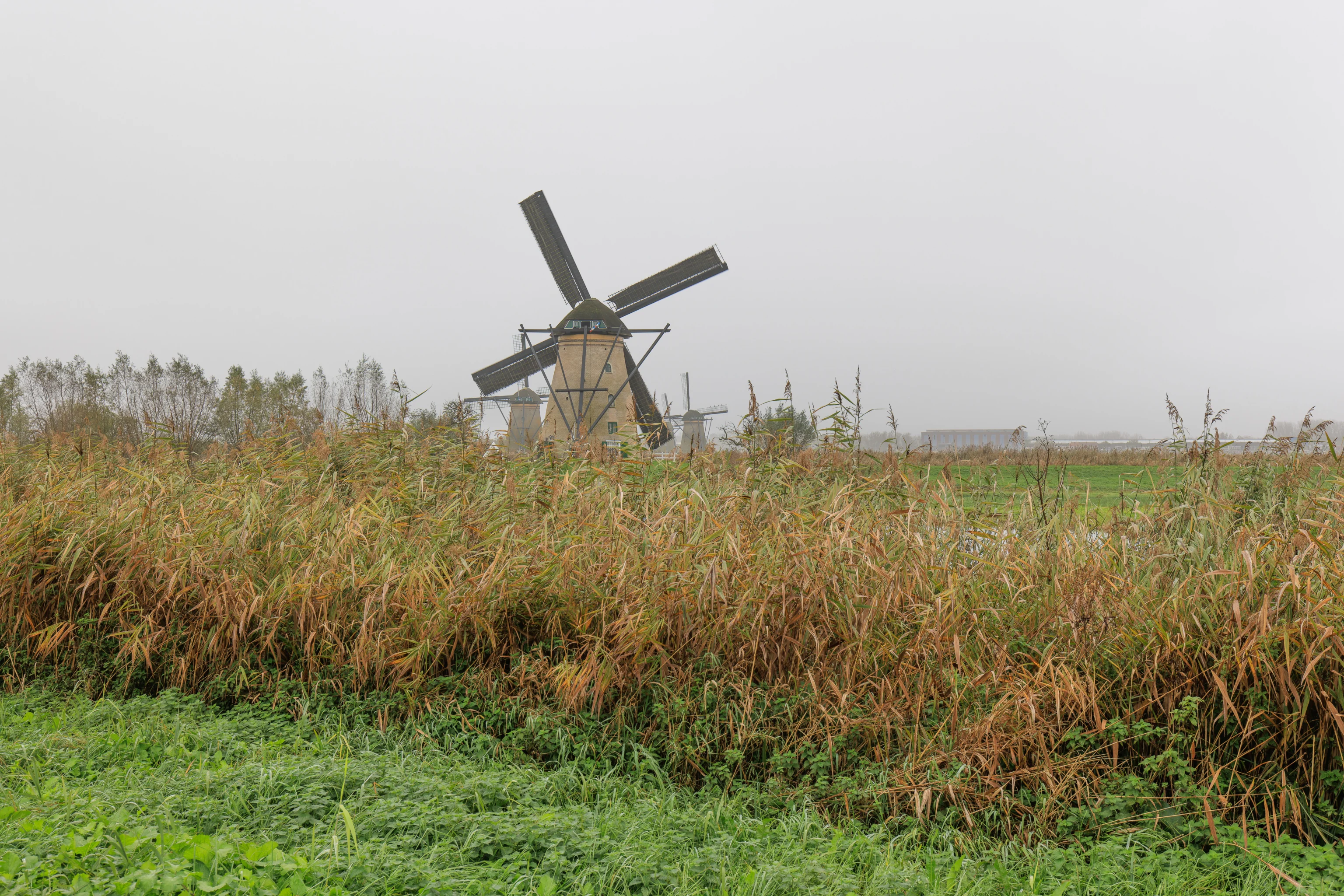
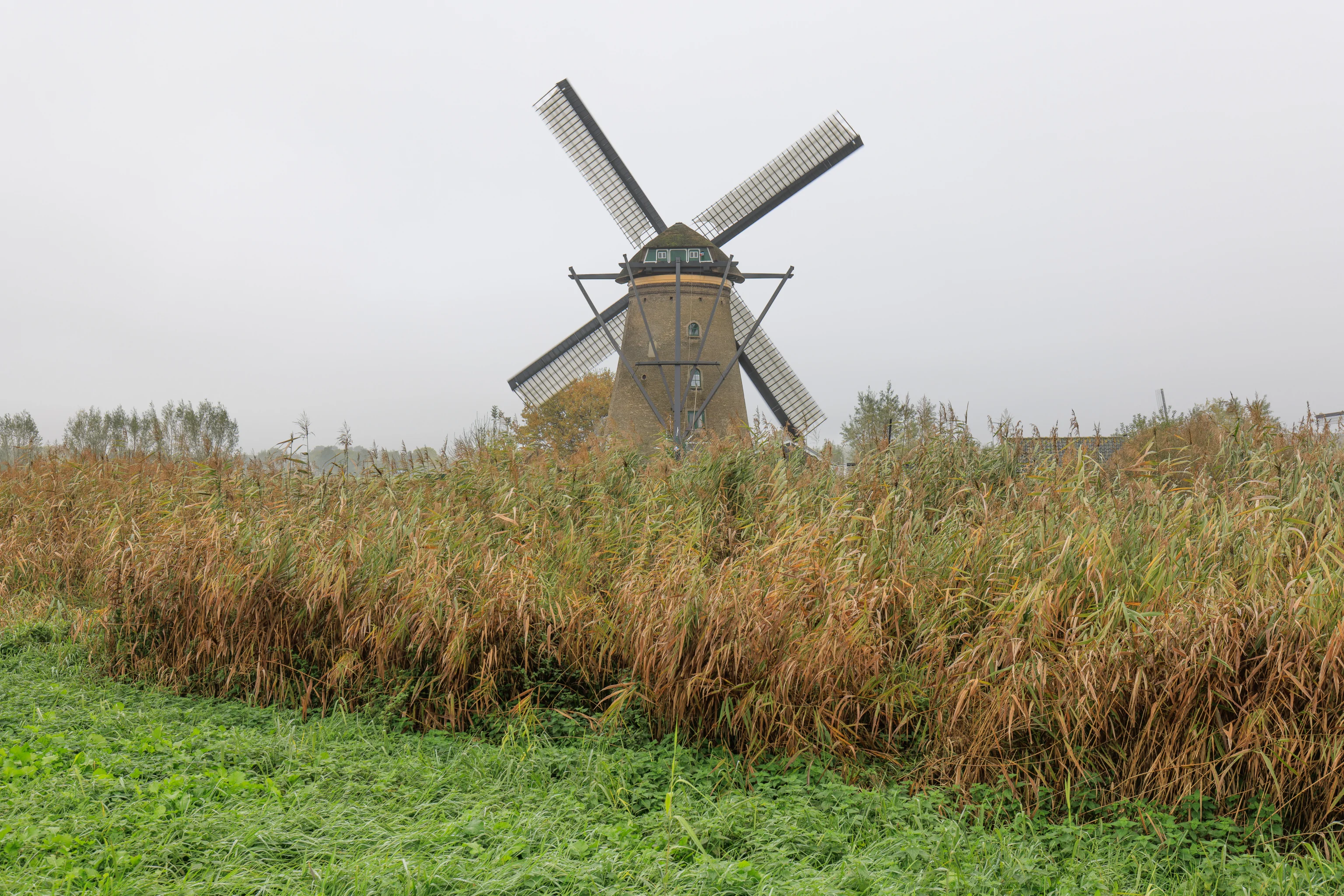
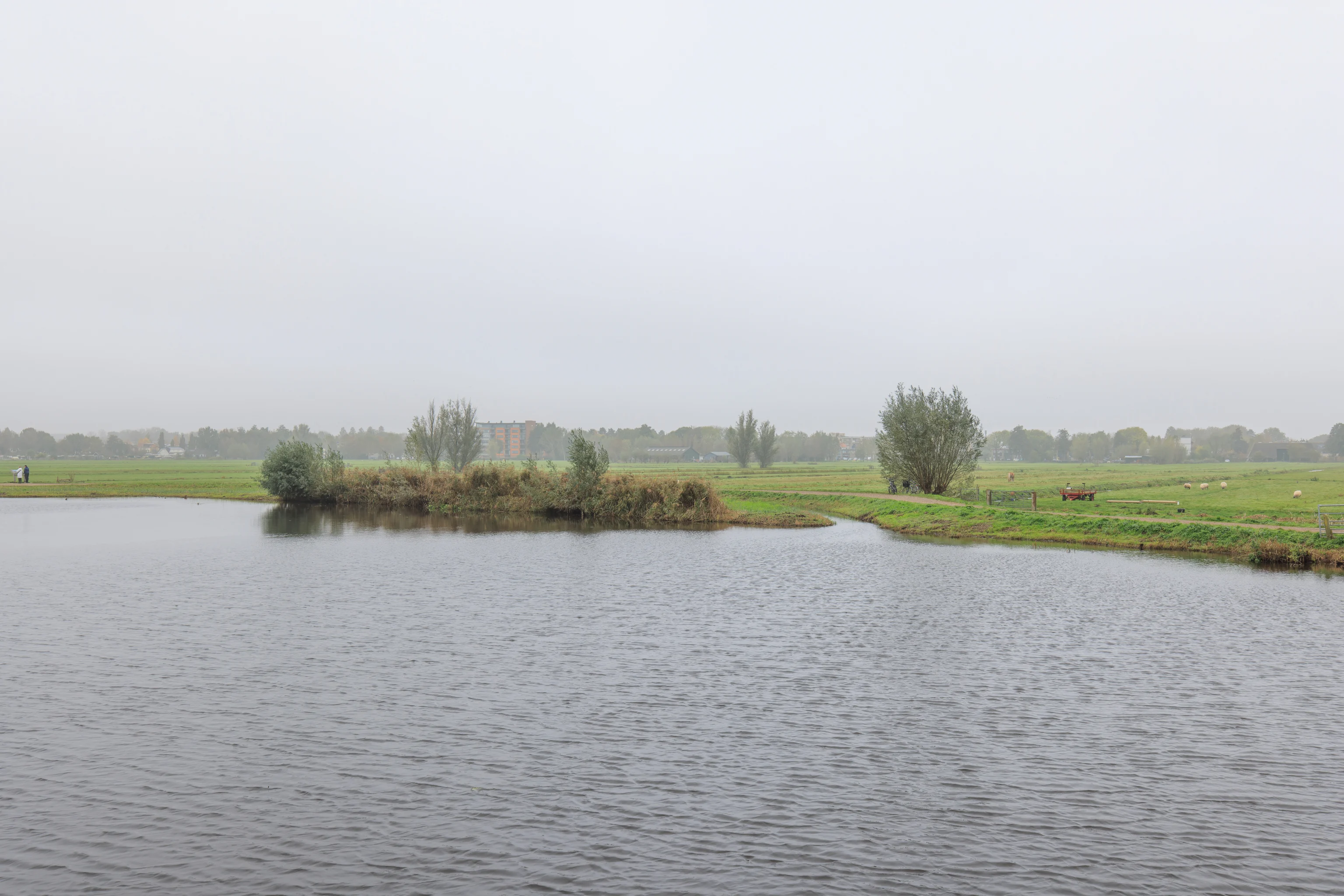
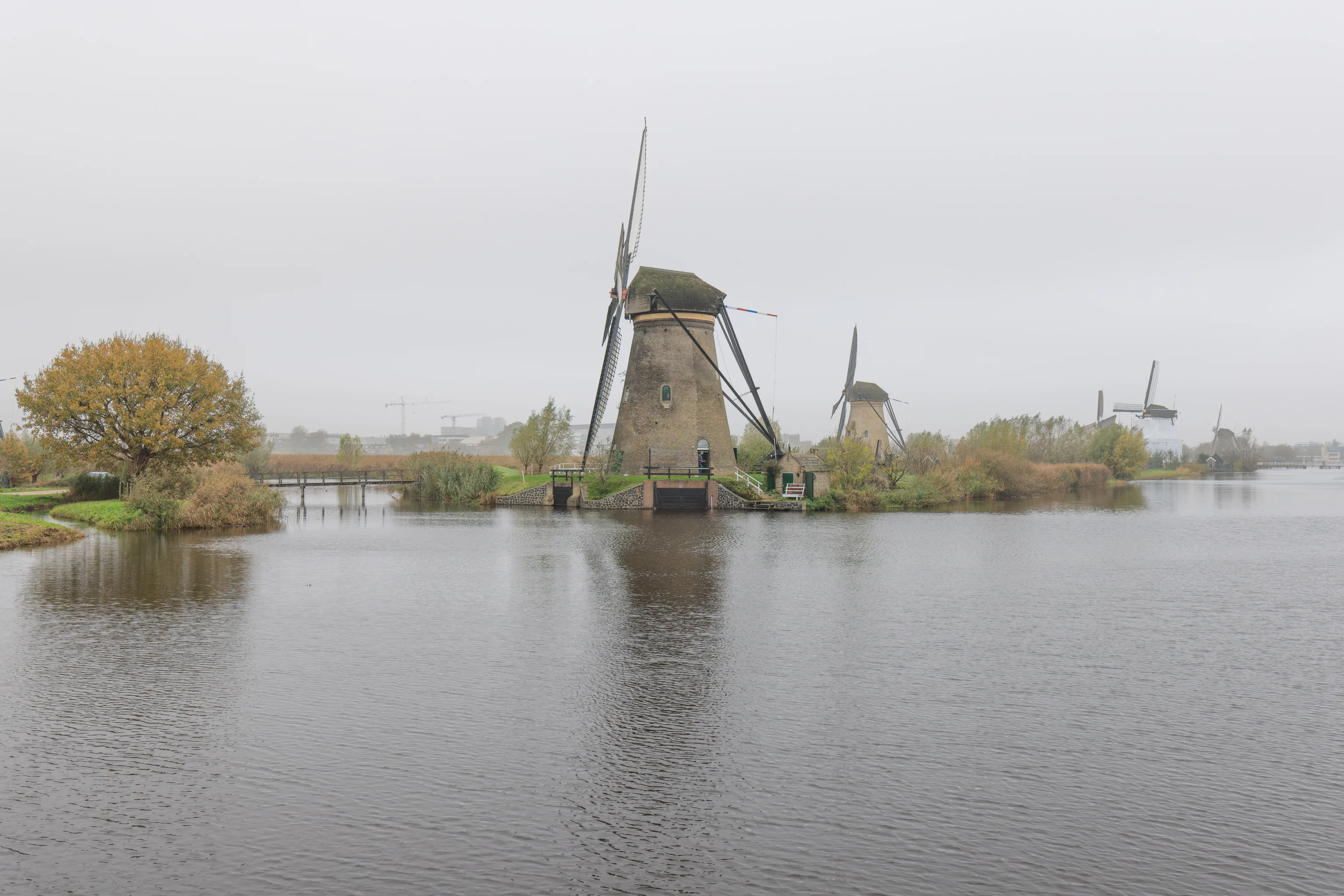
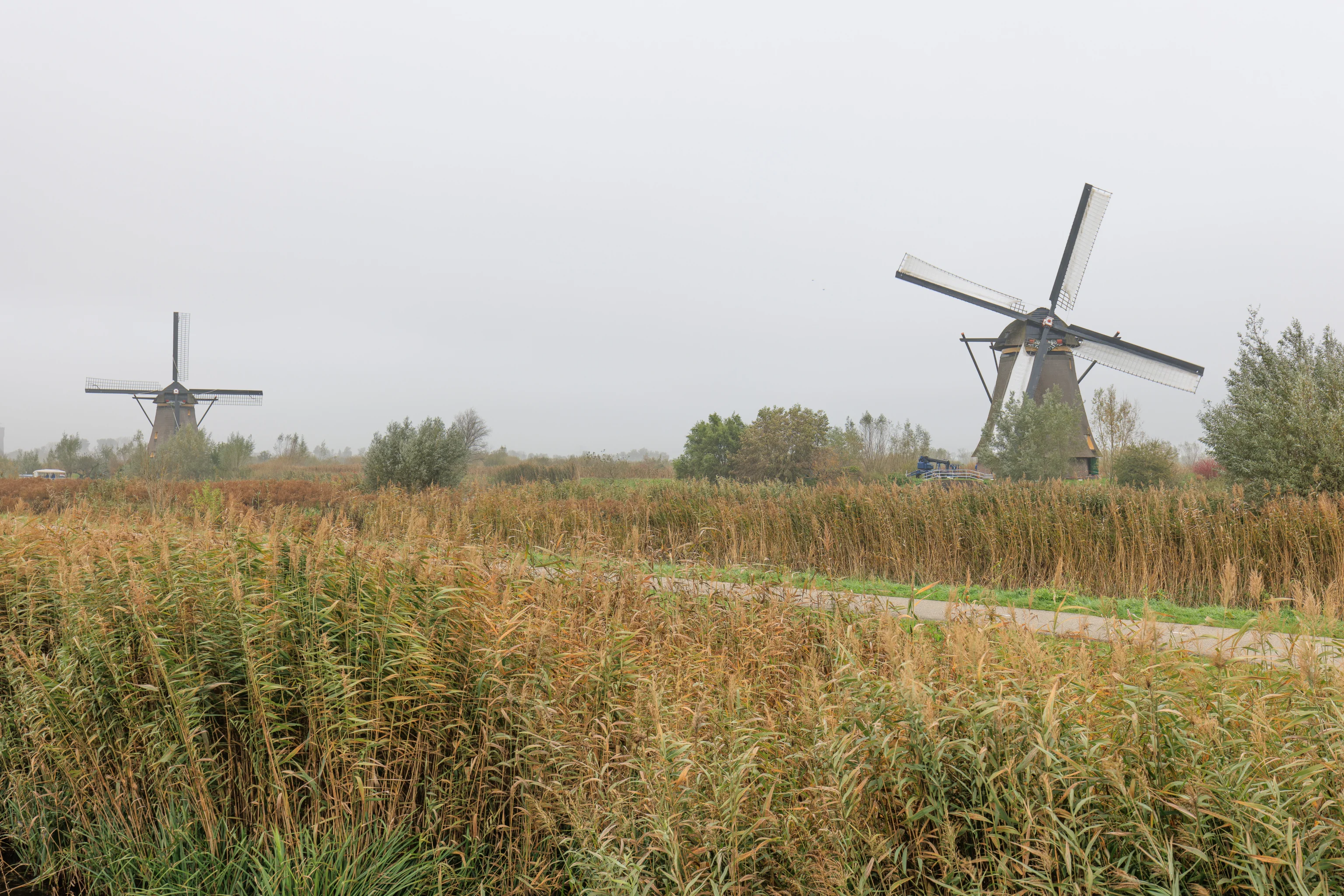
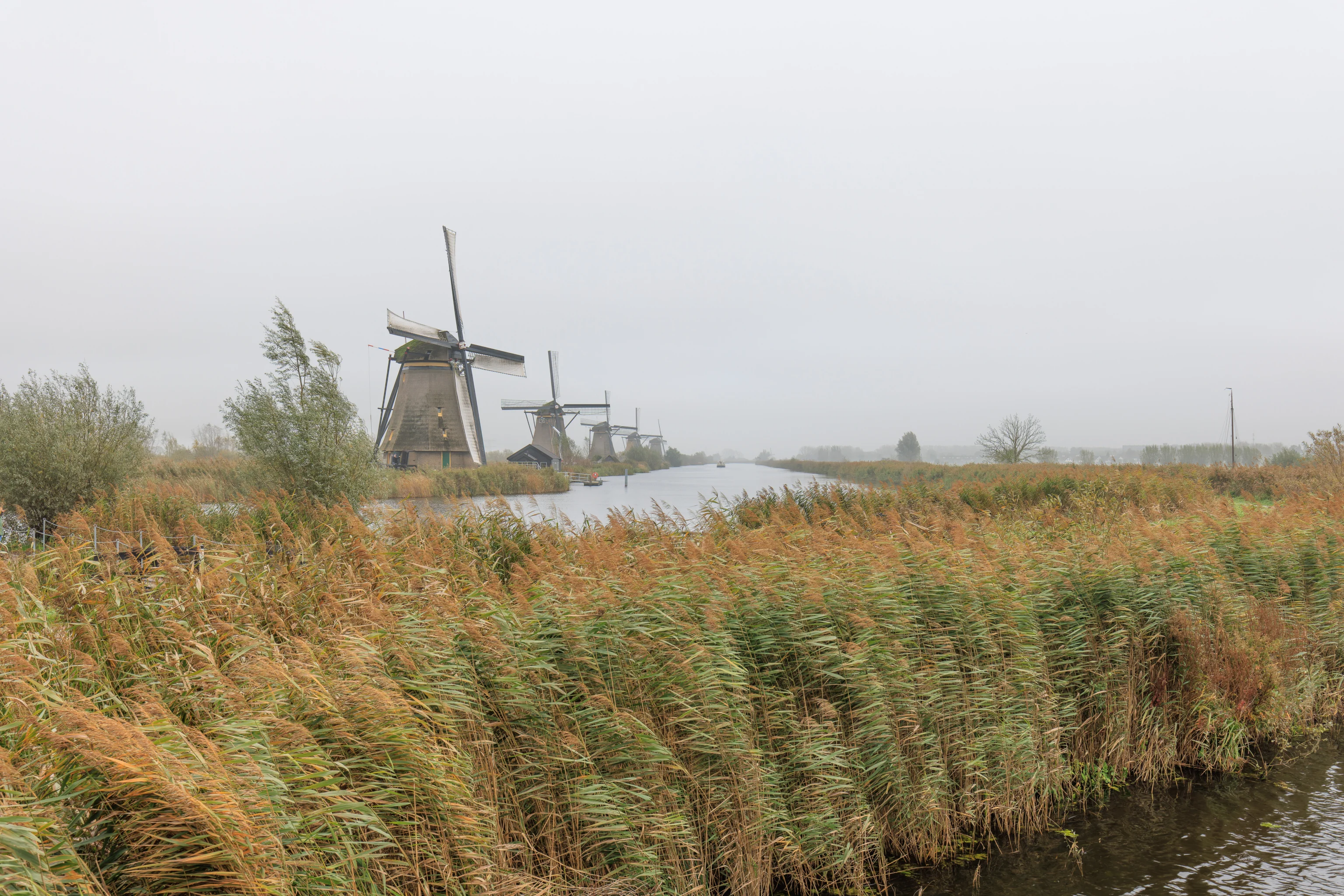
We continued walking to the south until we reached a bend in the main canal as well as a junction and bridge.
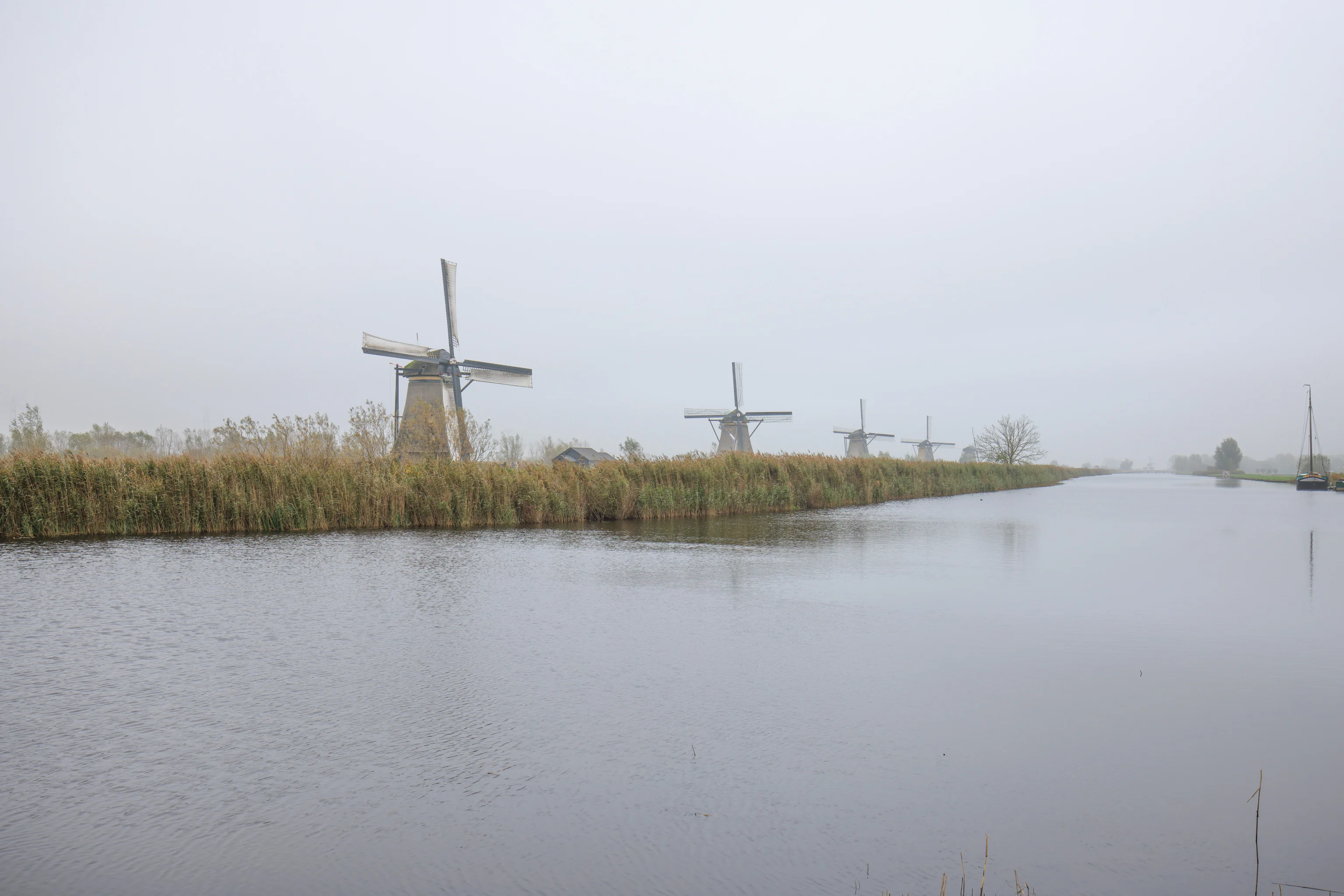
The view to the southeast from the bridge over the canal on the Nederwaard side. The grassy land in is actually the continuation of the path we were walking on with the main canal on the other side. The terrain here is extremely flat so the grass is obscuring the main canal. The five windmills on the left are Overwaard #4 through #8. There is another windmill far off on the horizon where the canal makes another turn. It is the Kortlandse Windmill.
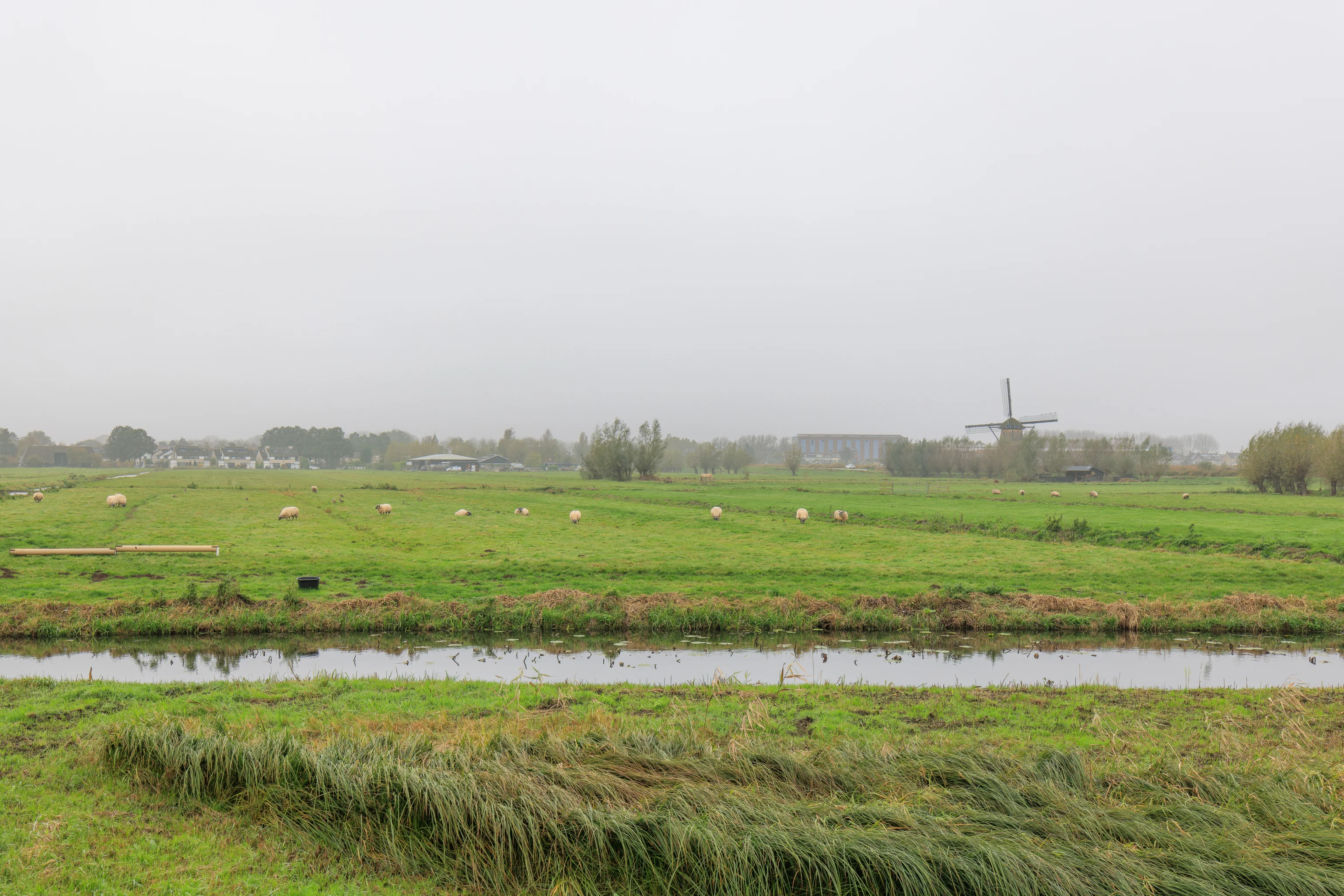
After crossing the bridge, it is possible to walk in either direction. We turned left to go southeast to the Blokweer Museum Windmill. The area to the south is farmland and is currently being used mostly for sheep.
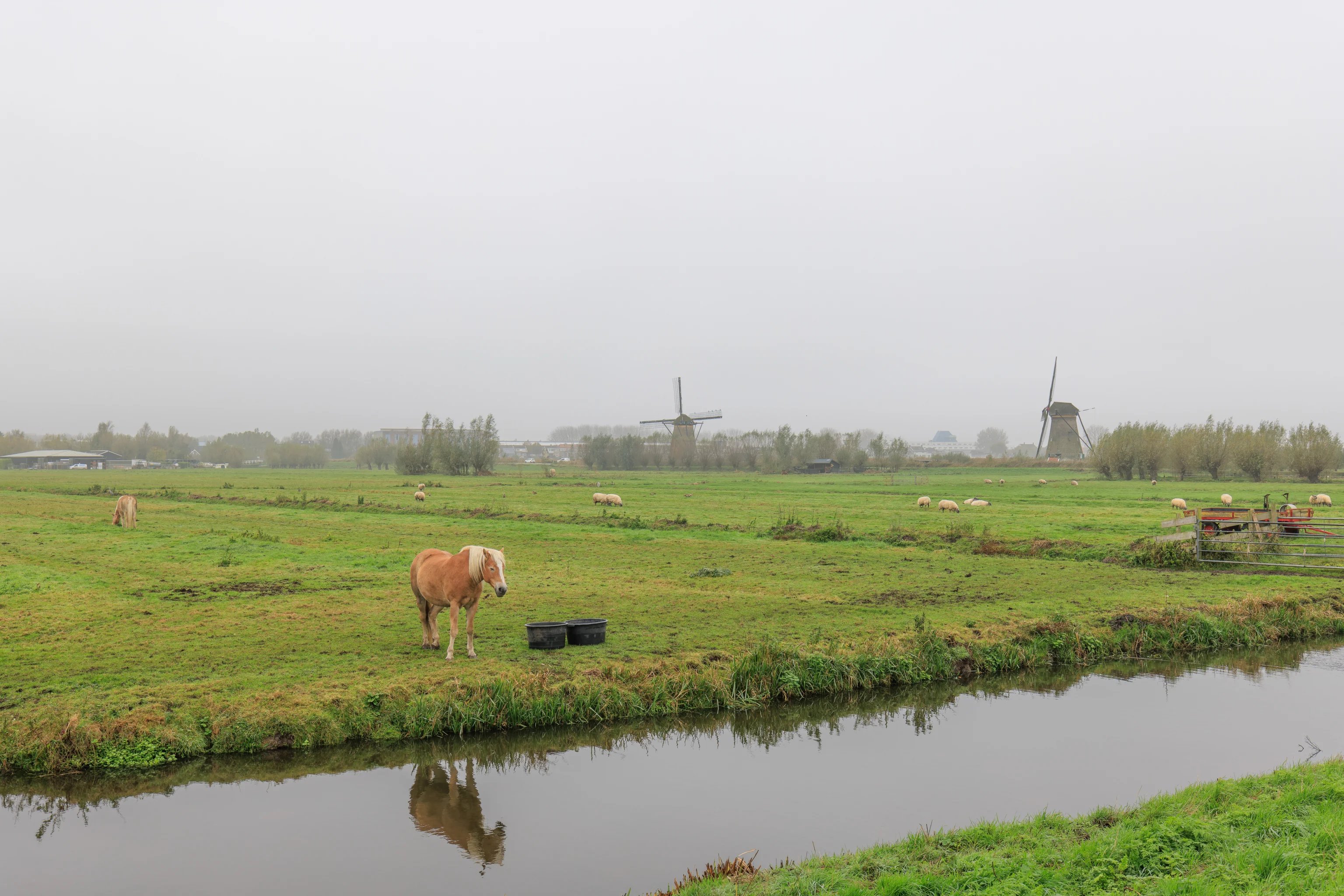
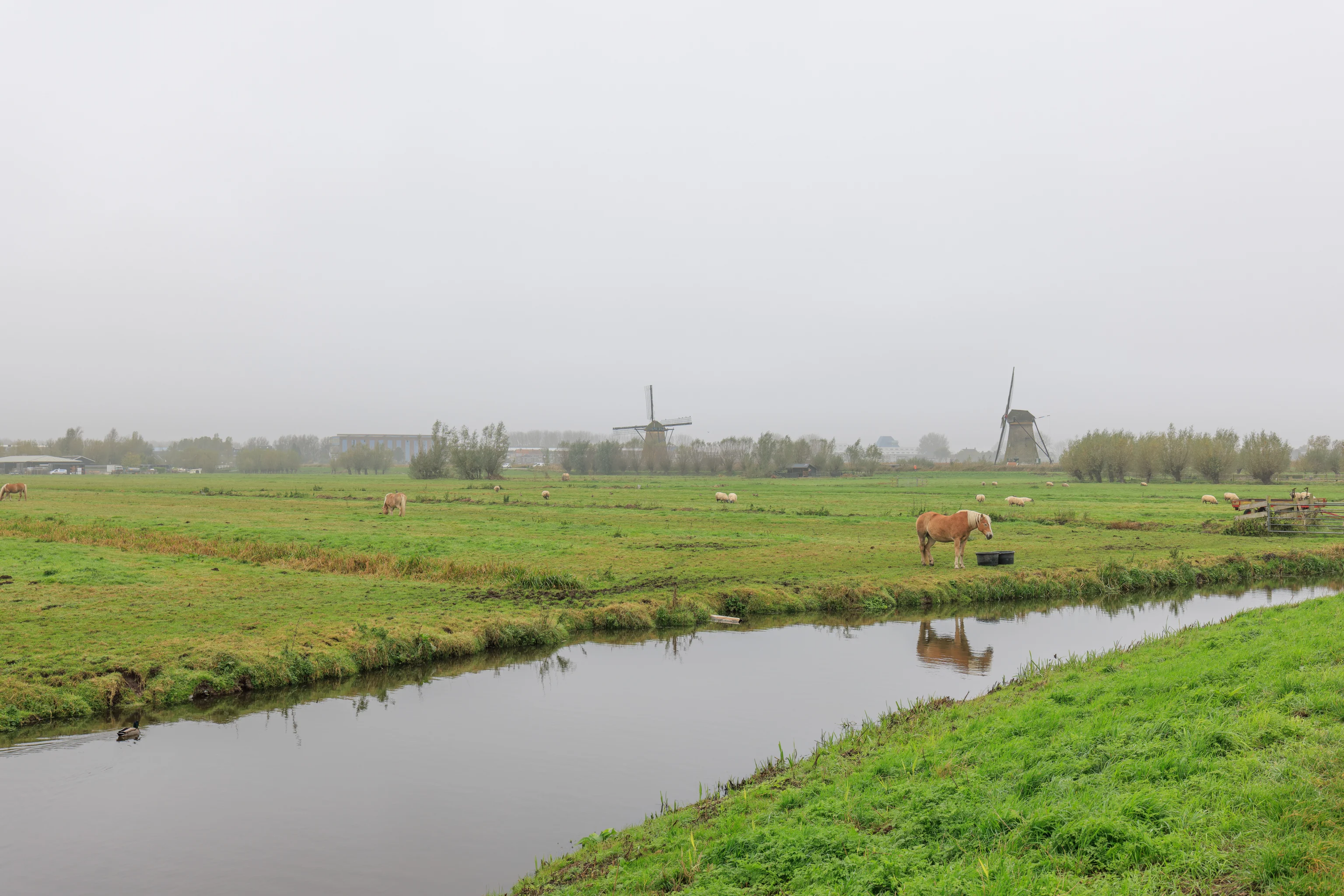
We also spotted a horse. It mostly just stood there, nearly motionless.
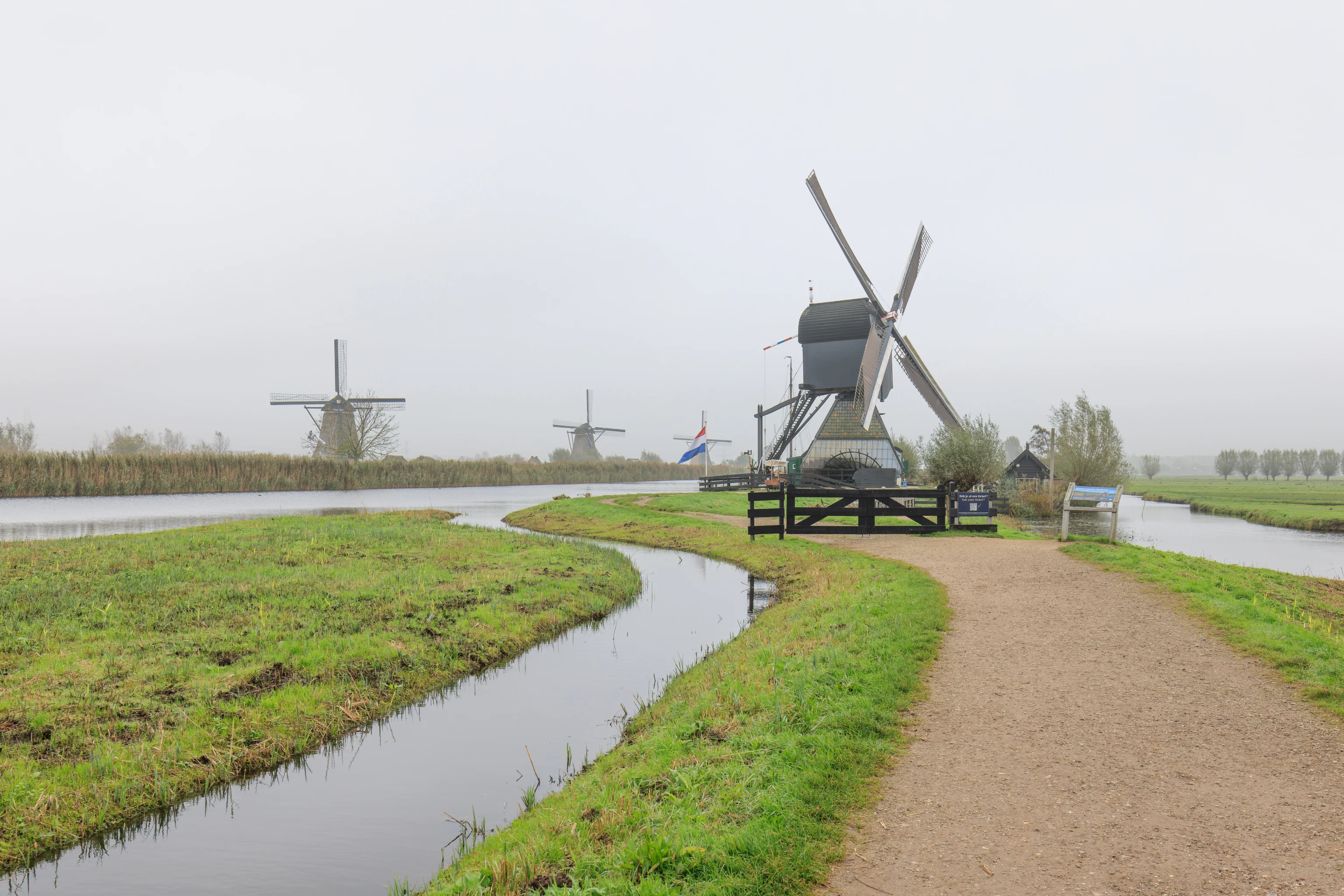
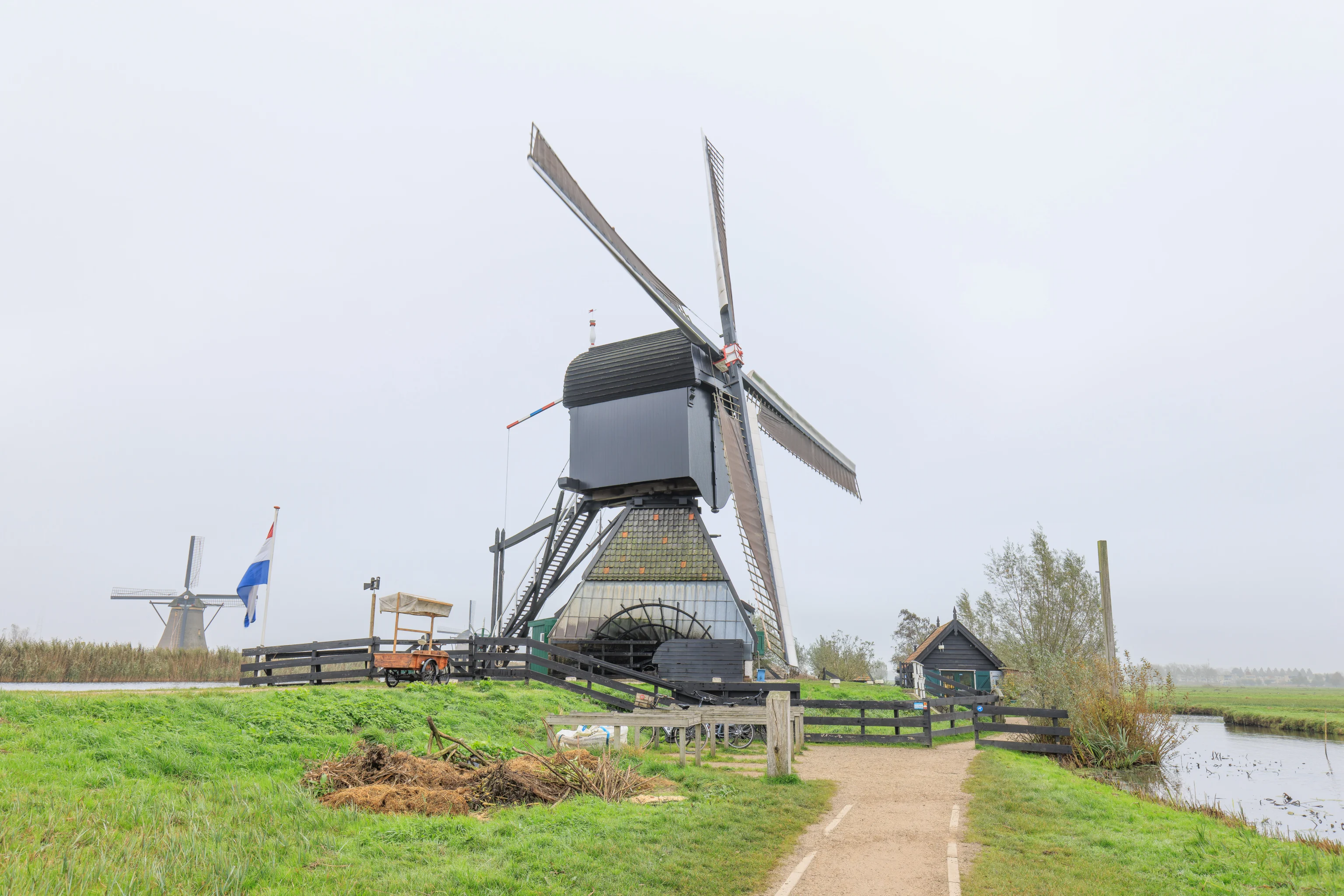
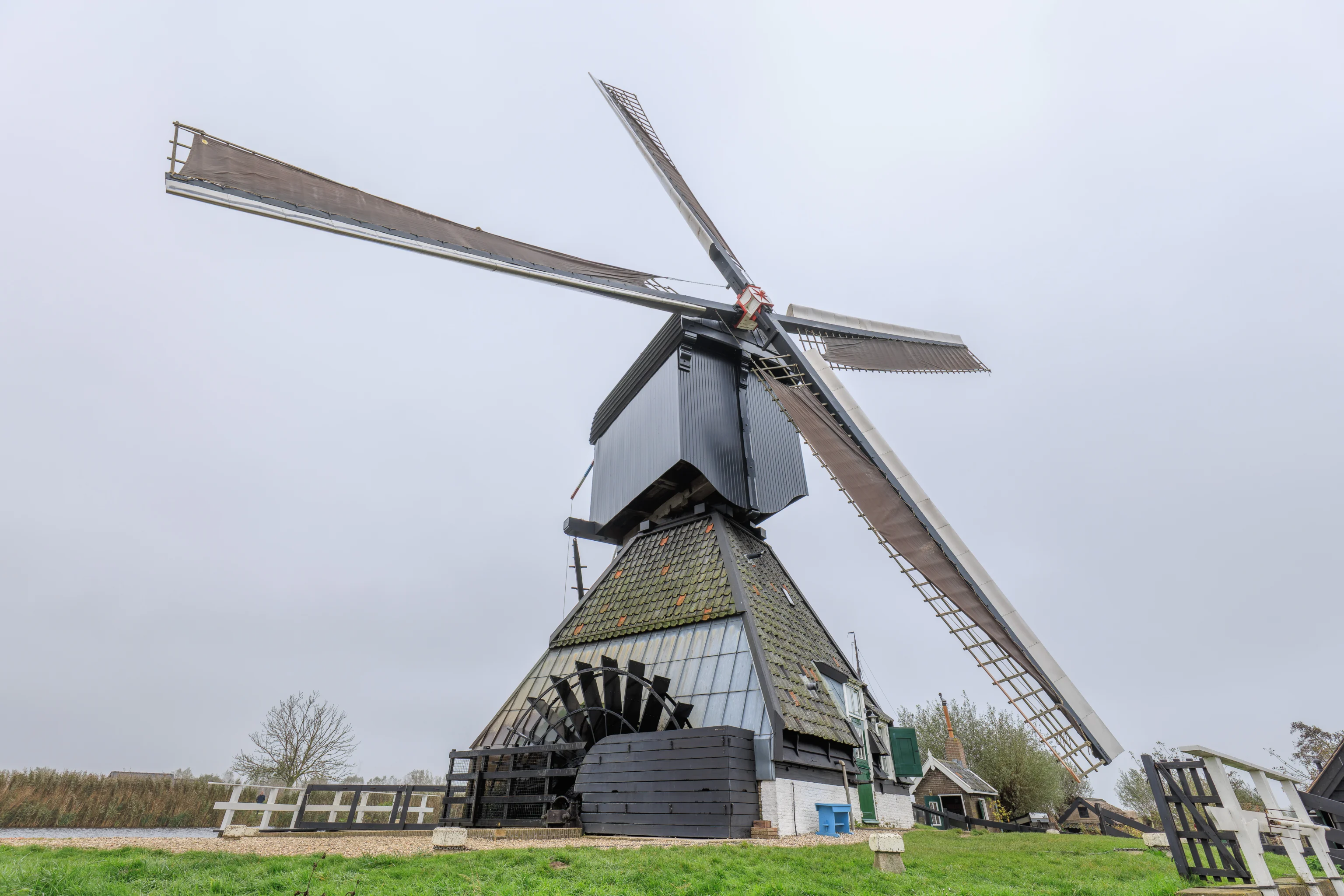
We continued walking to the Blokweer Museum Windmill. It is of a different design from most of the other windmills that we saw here. This one has a pyramid base with a large rotating upper section.
This is, unfortunately, a bit of a shaky video of the windmill. None of the video stabilization software we have access to would work on it, likely due to the huge rotating windmill arms! The wind had increased since we first saw the windmill from afar and it was moving at a pretty good pace.
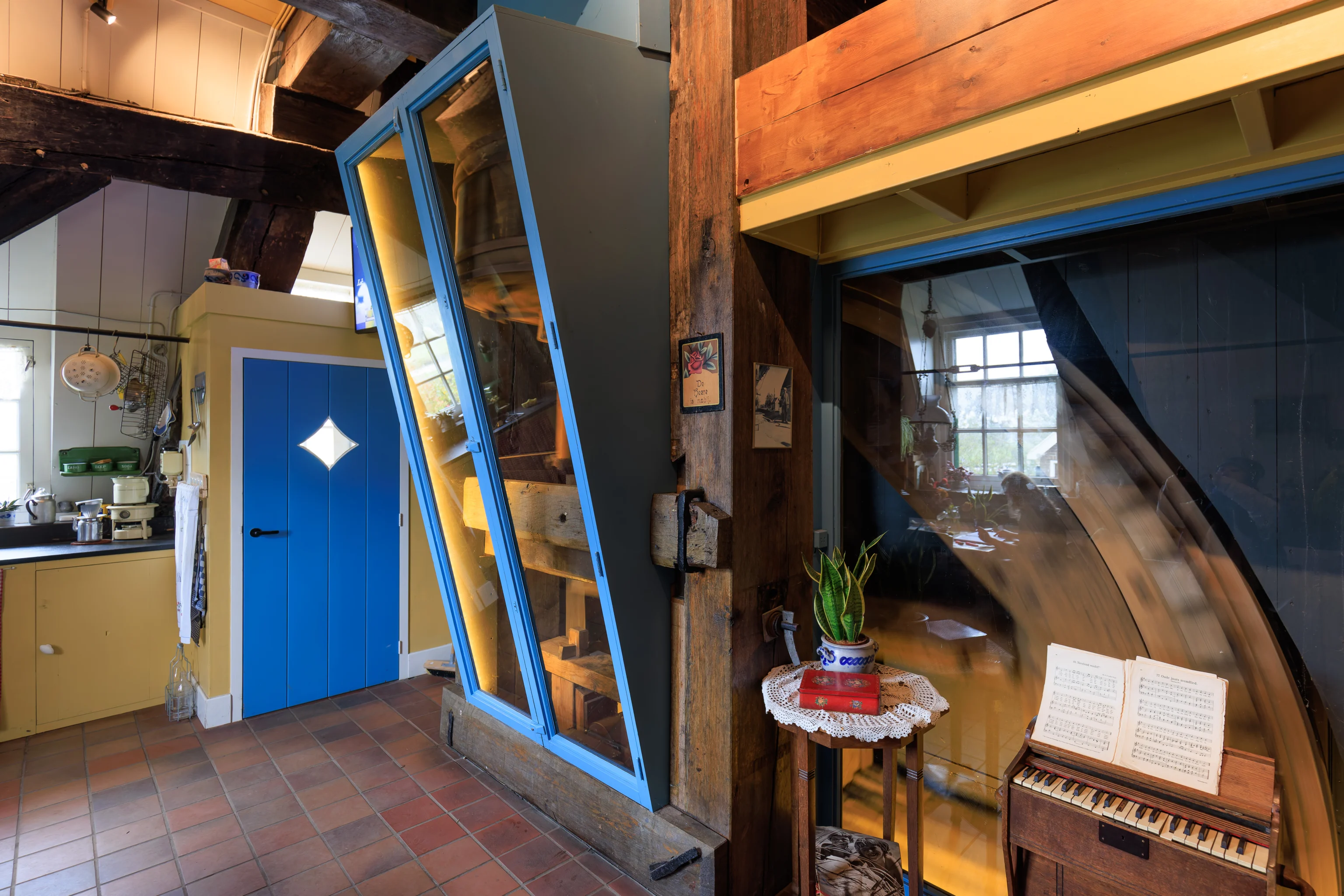
Only the ground floor is accessible to visitors in this windmill. The interior is relatively spacious with a modern kitchen installed. The windmill gears are blocked off by large glass panels.
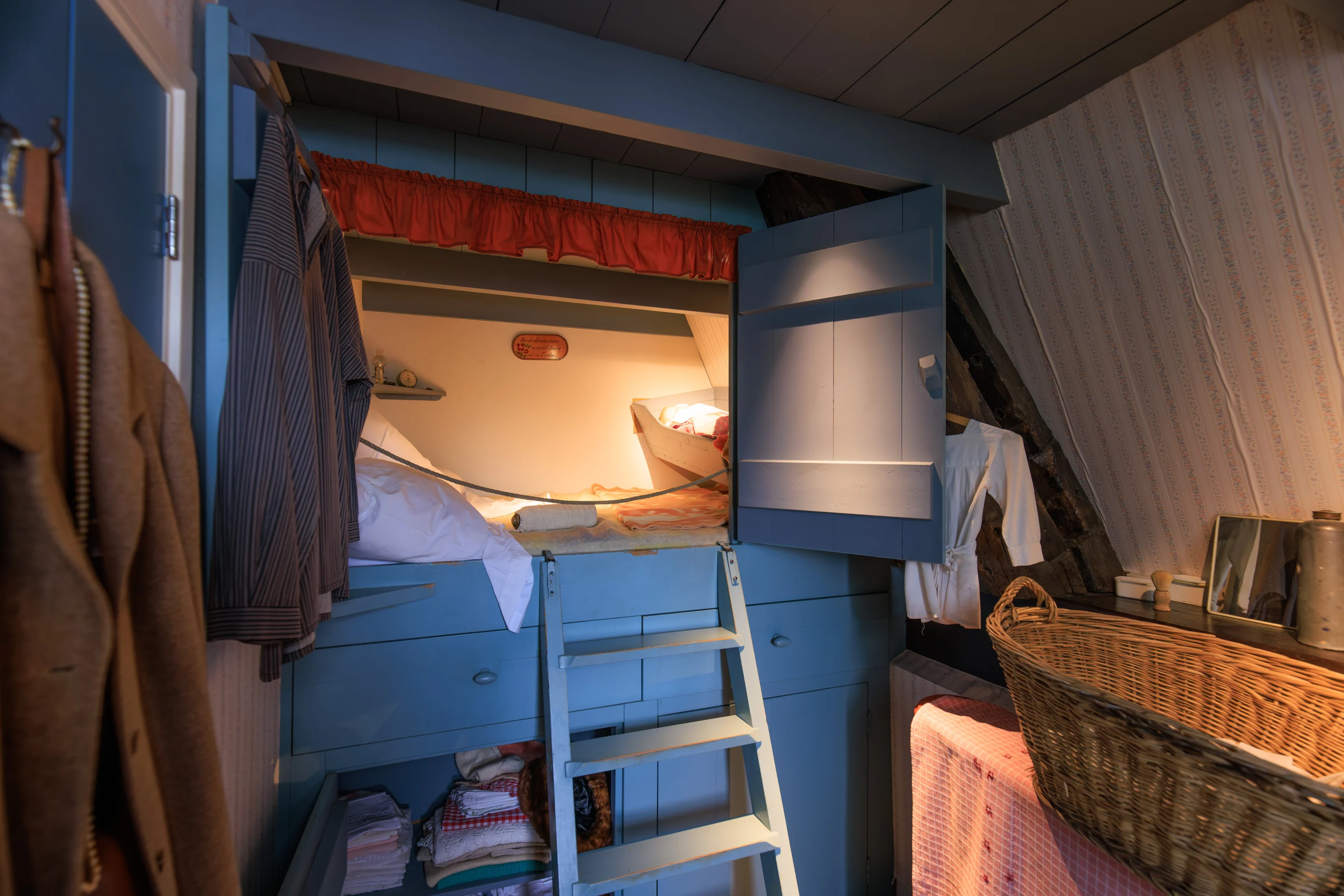
The sleeping areas are still pretty small though.
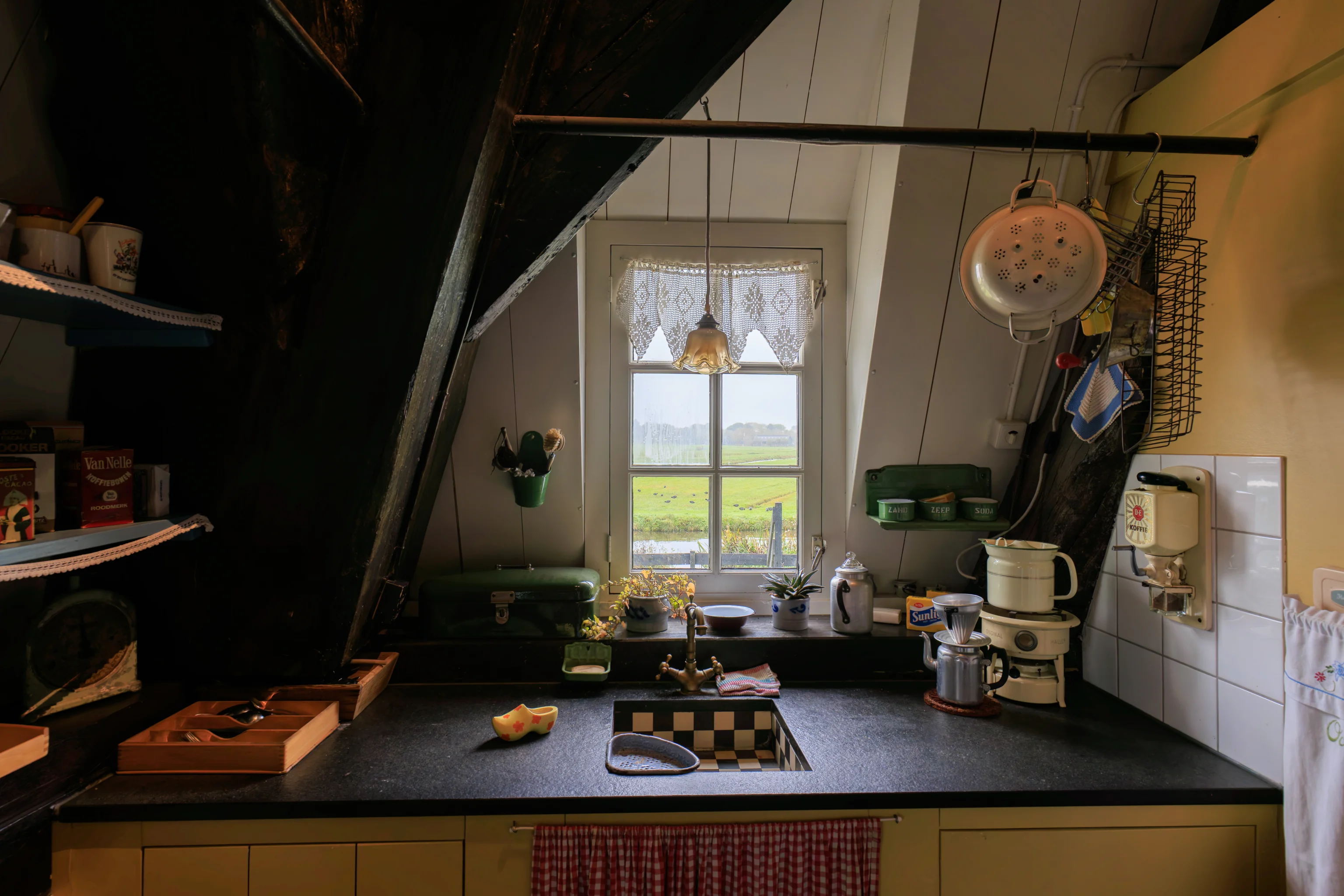
There is a window behind the kitchen sink.
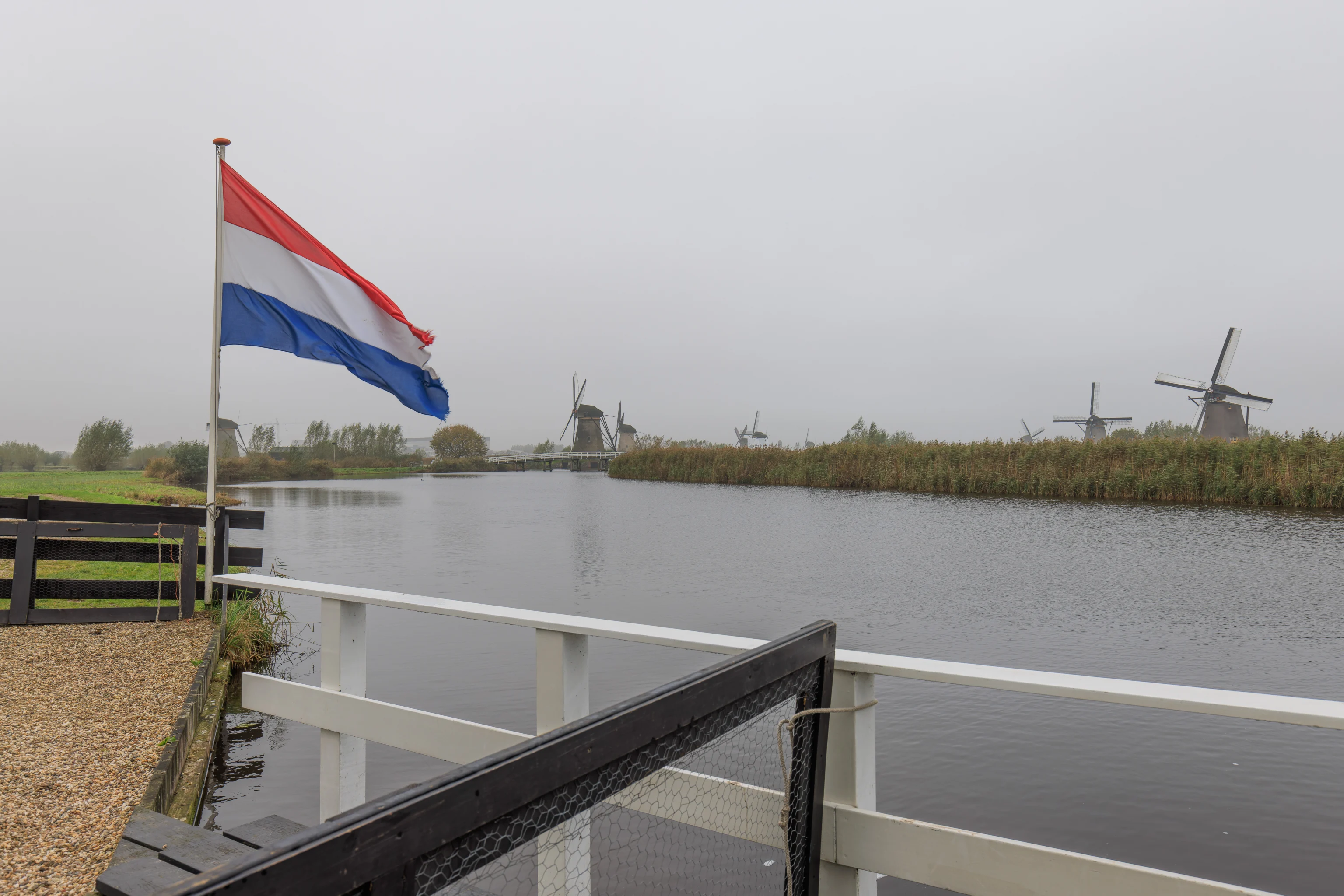
The view to the north by the windmill with the bridge we crossed over on the left.
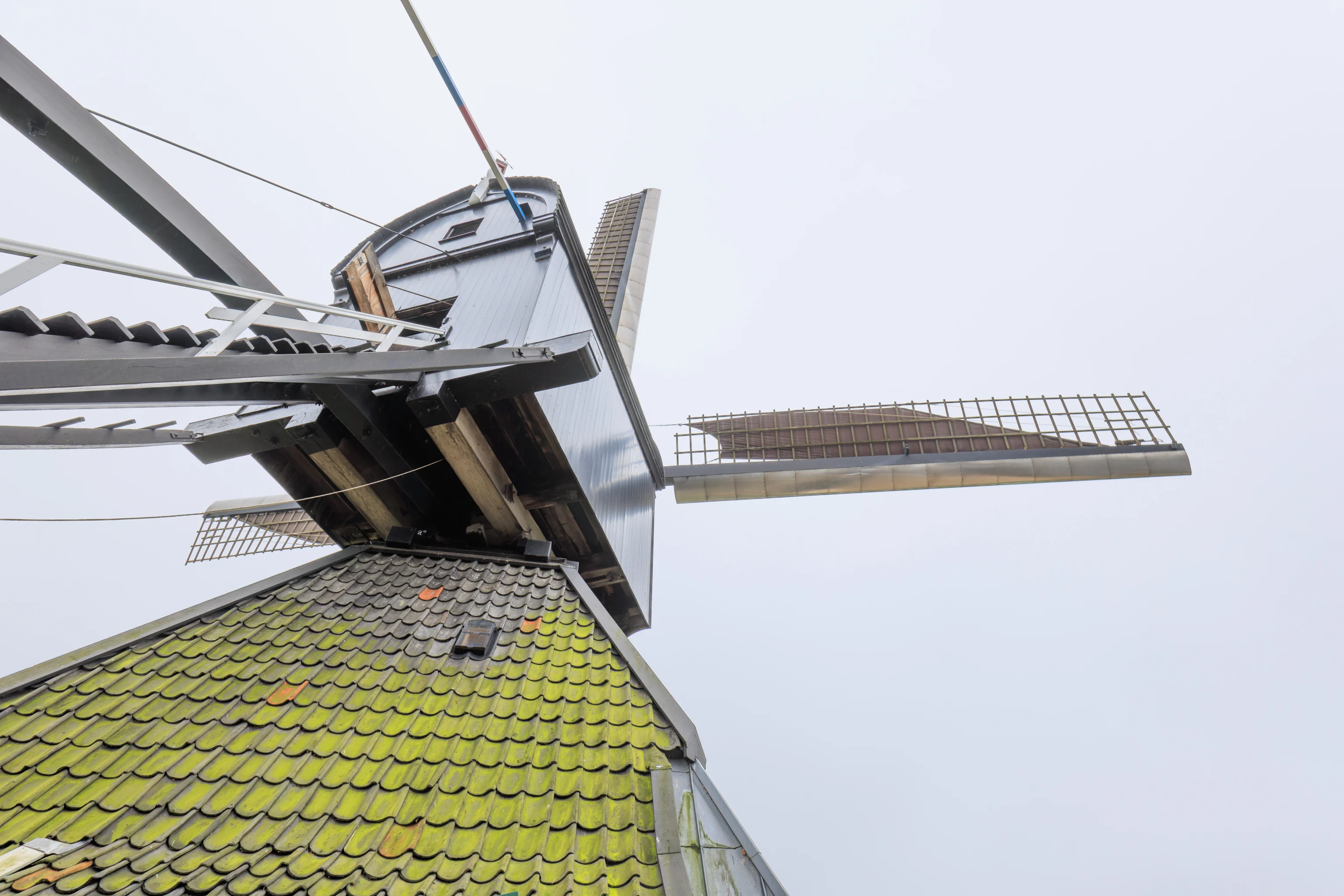
The upper rotating part of the windmill can be accessed by exterior stairs, though it wasn’t open to visitors.
The windmill wasn’t rotating as fast as it was before we entered.
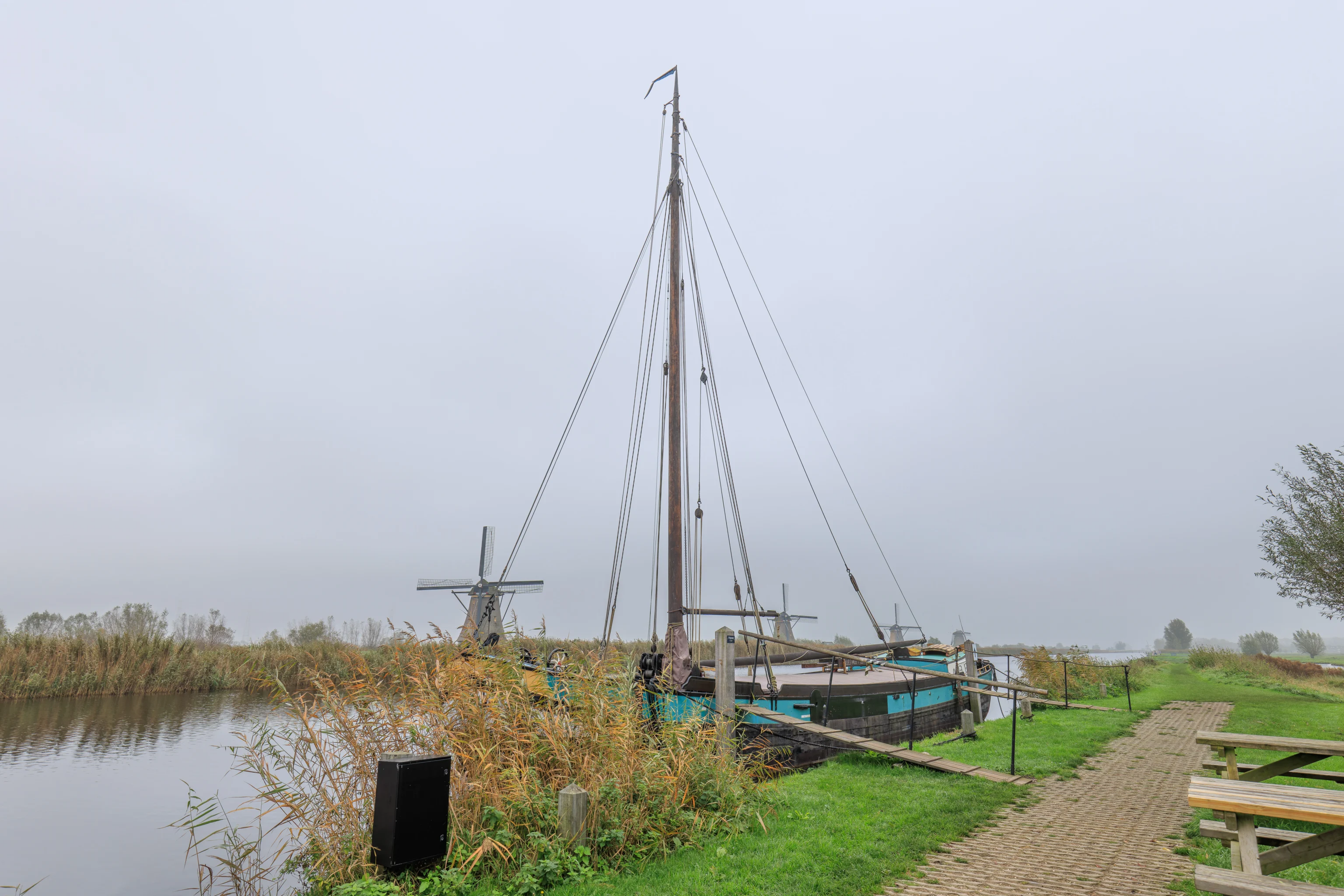
This barge, the Alles Heeft een Tijd (Everything Has A Time), was moored next to the windmill.
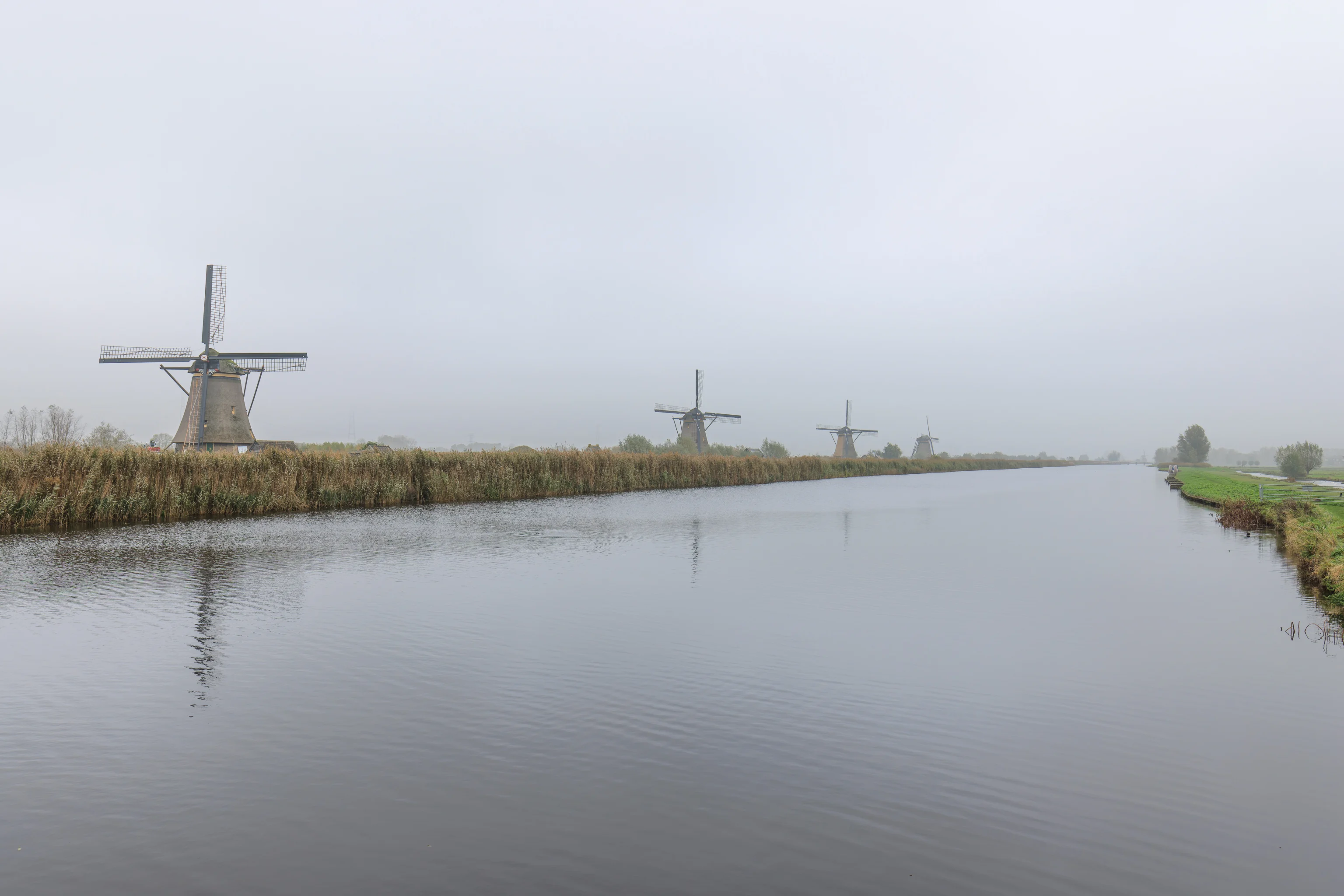
The view to the southeast from the barge.
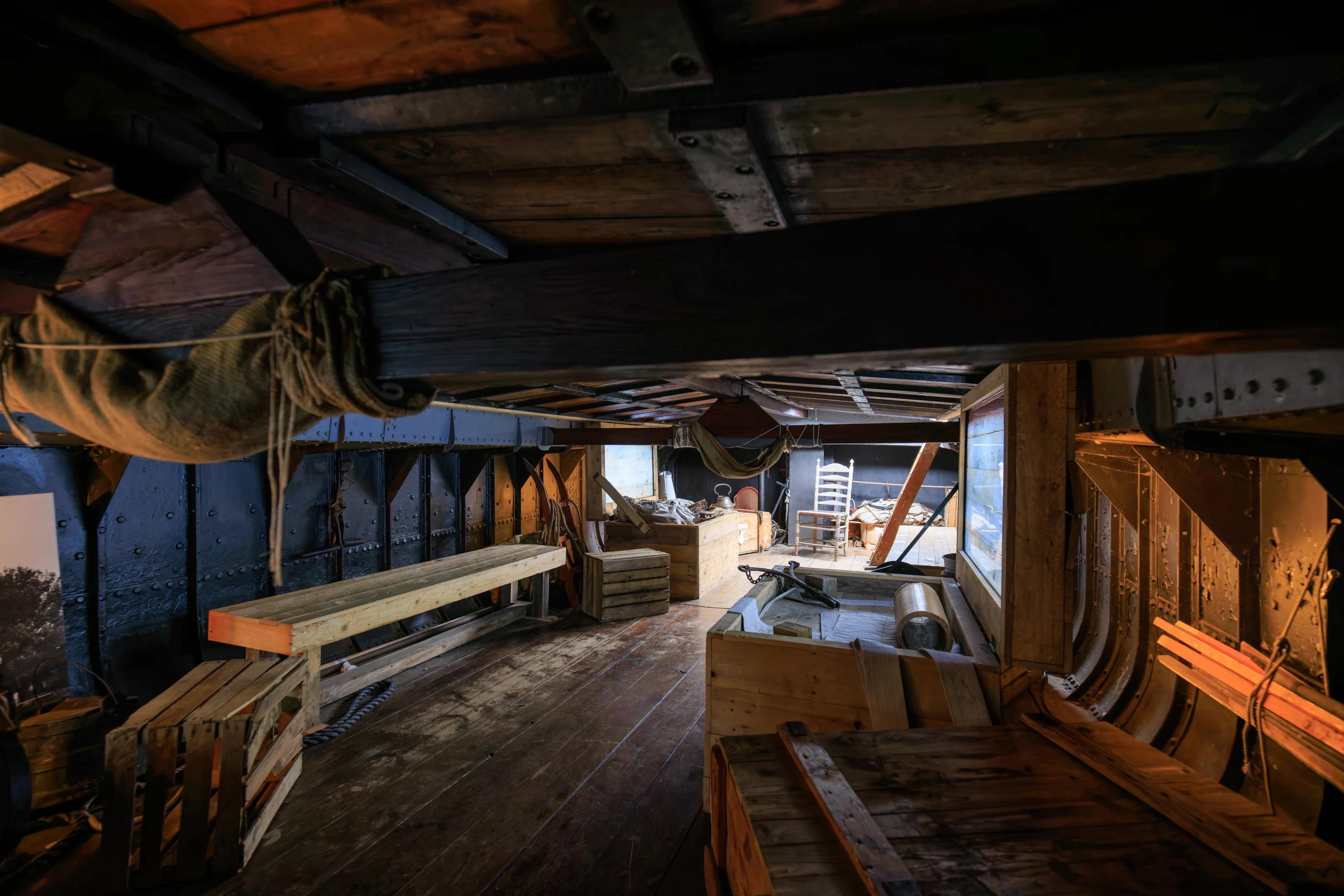
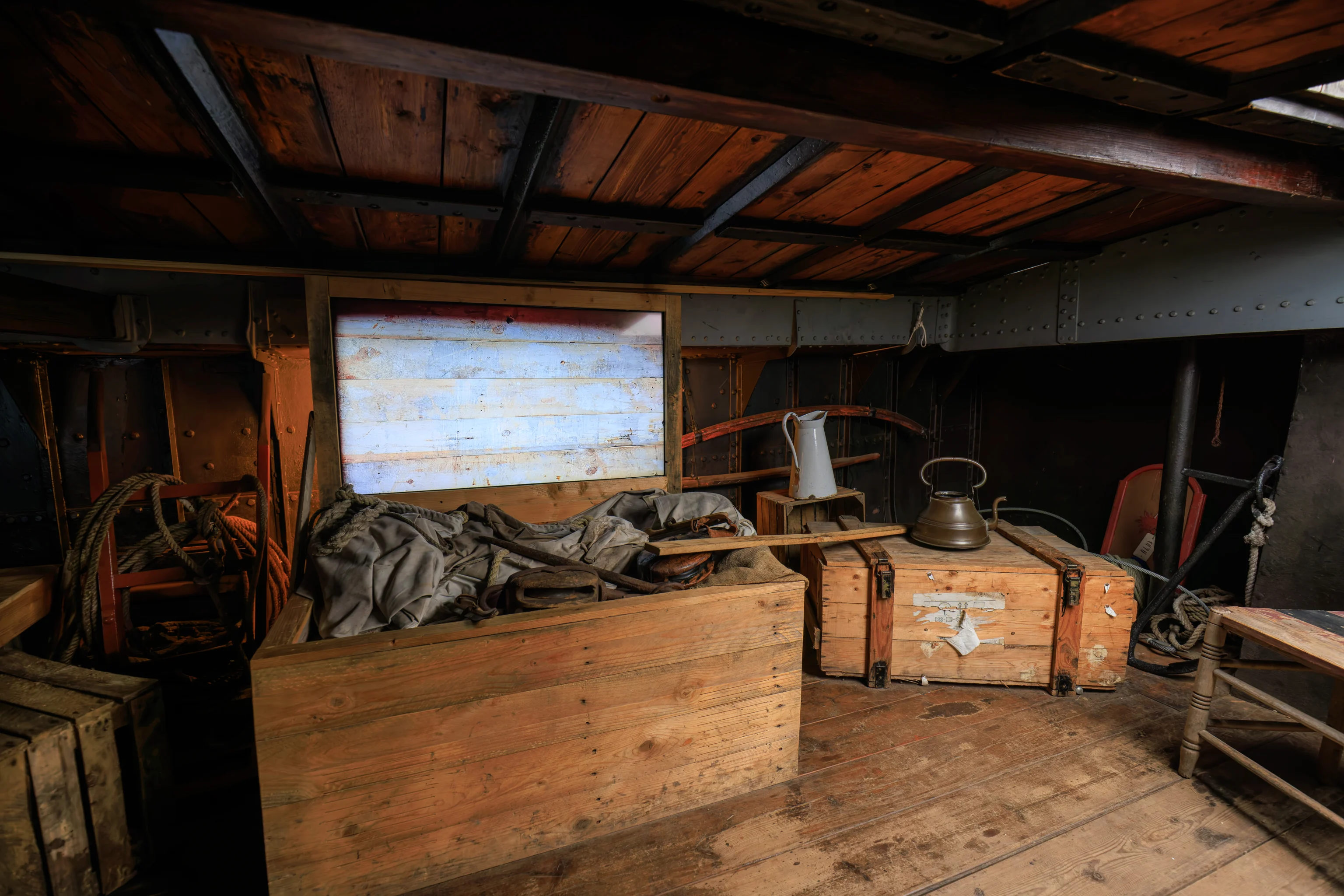
It is possible to go down into the barge. There are video displays setup which provide information about water management here and climate change.
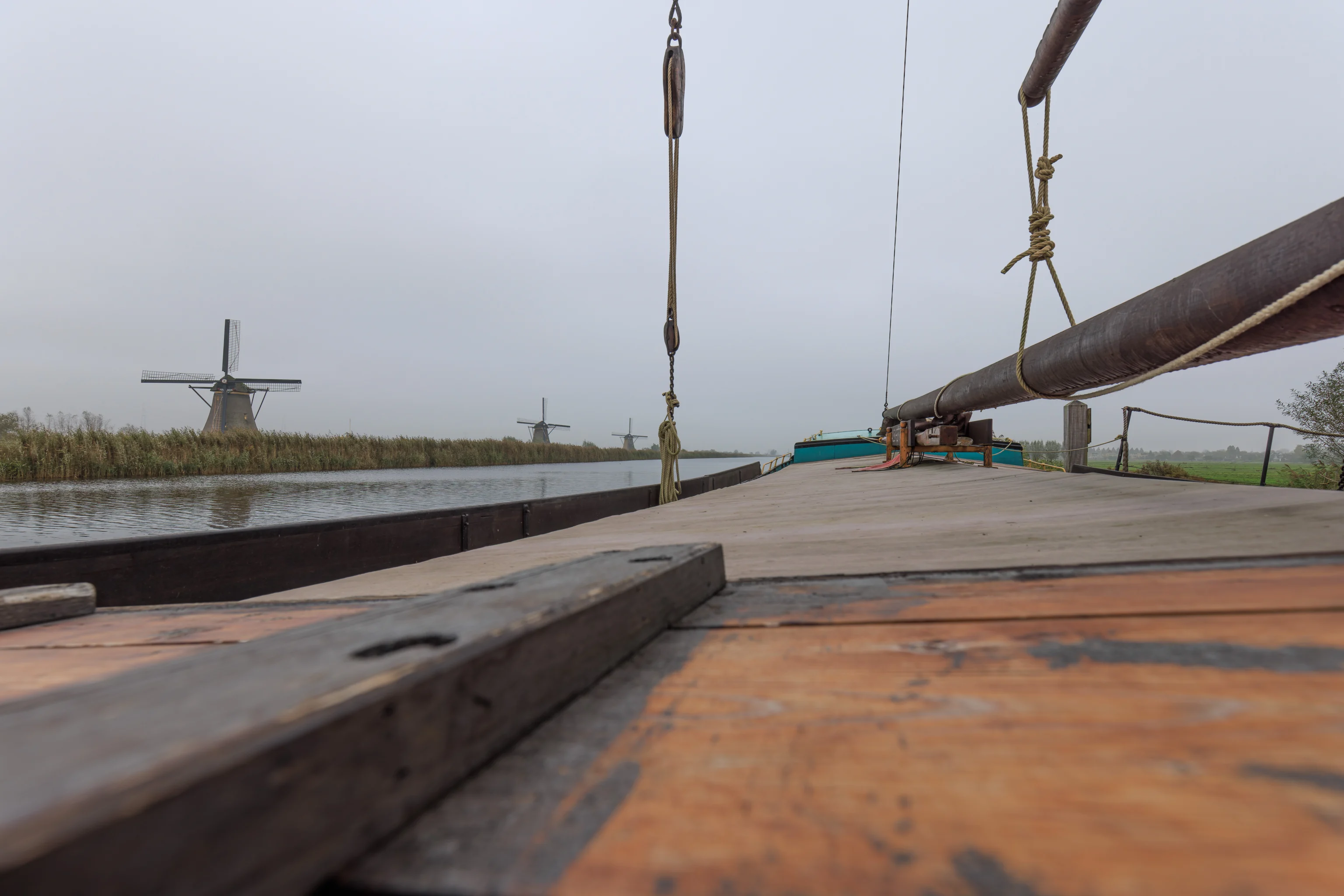
The view of the barge’s deck as we climbed up the stairs to exit.
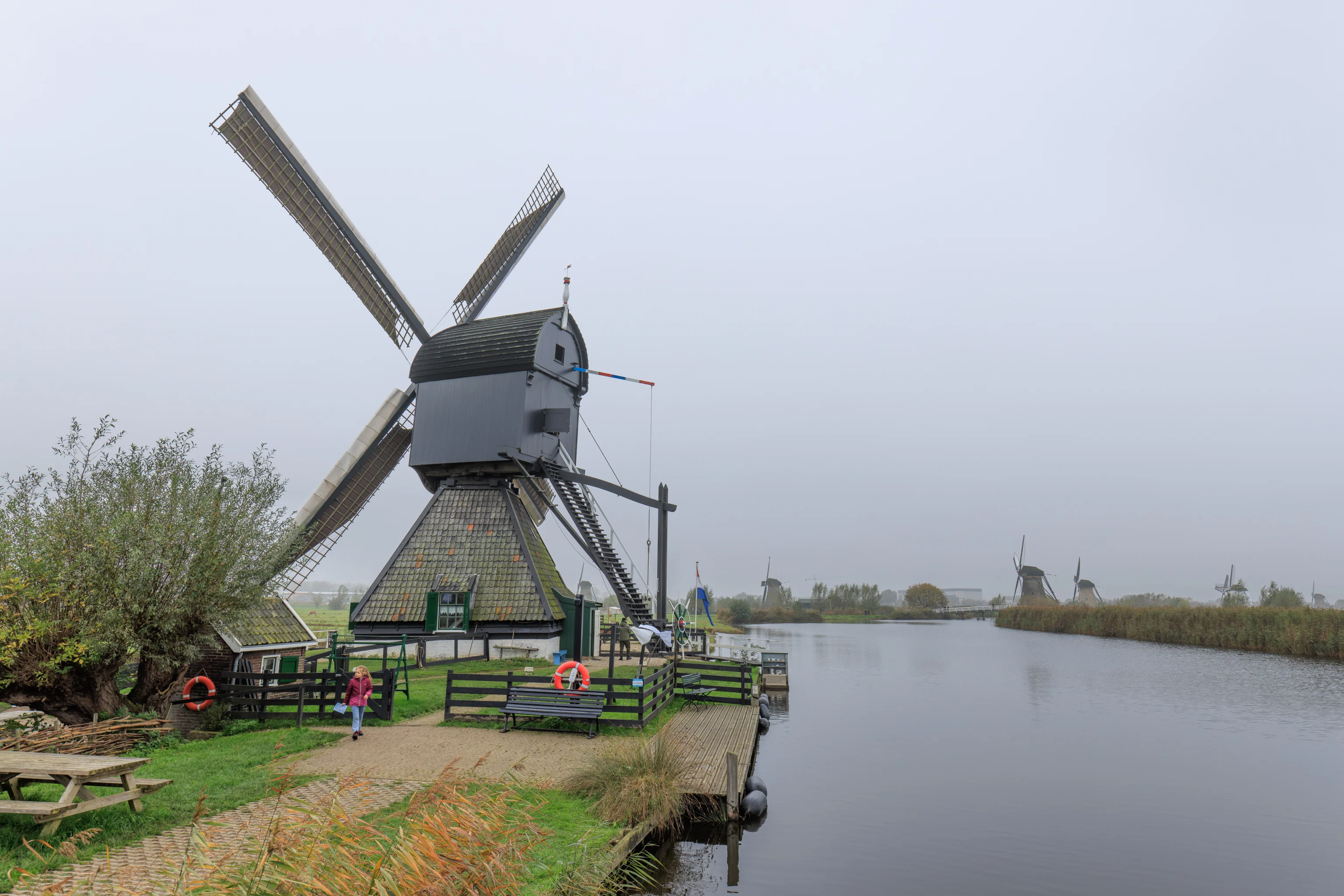
This perspective corrected photo shows the Blokweer Museum Windmill from the barge. The exterior elements of the windmill are visible here. Like the other more common style of windmill, it has a mechanism to allow turning the windmill so that it faces the wind.
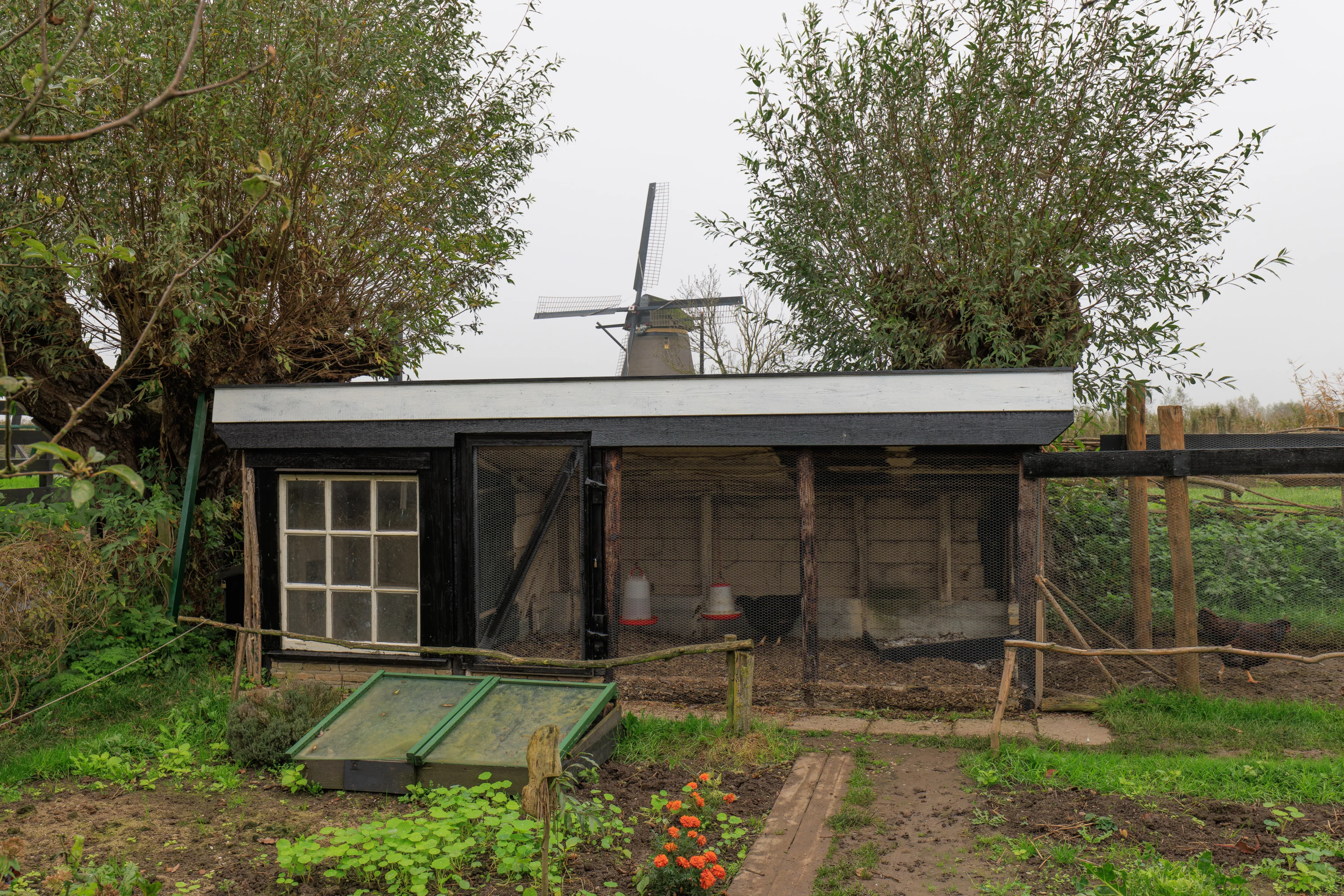
While the other museum windmill had geese, this one has chickens.
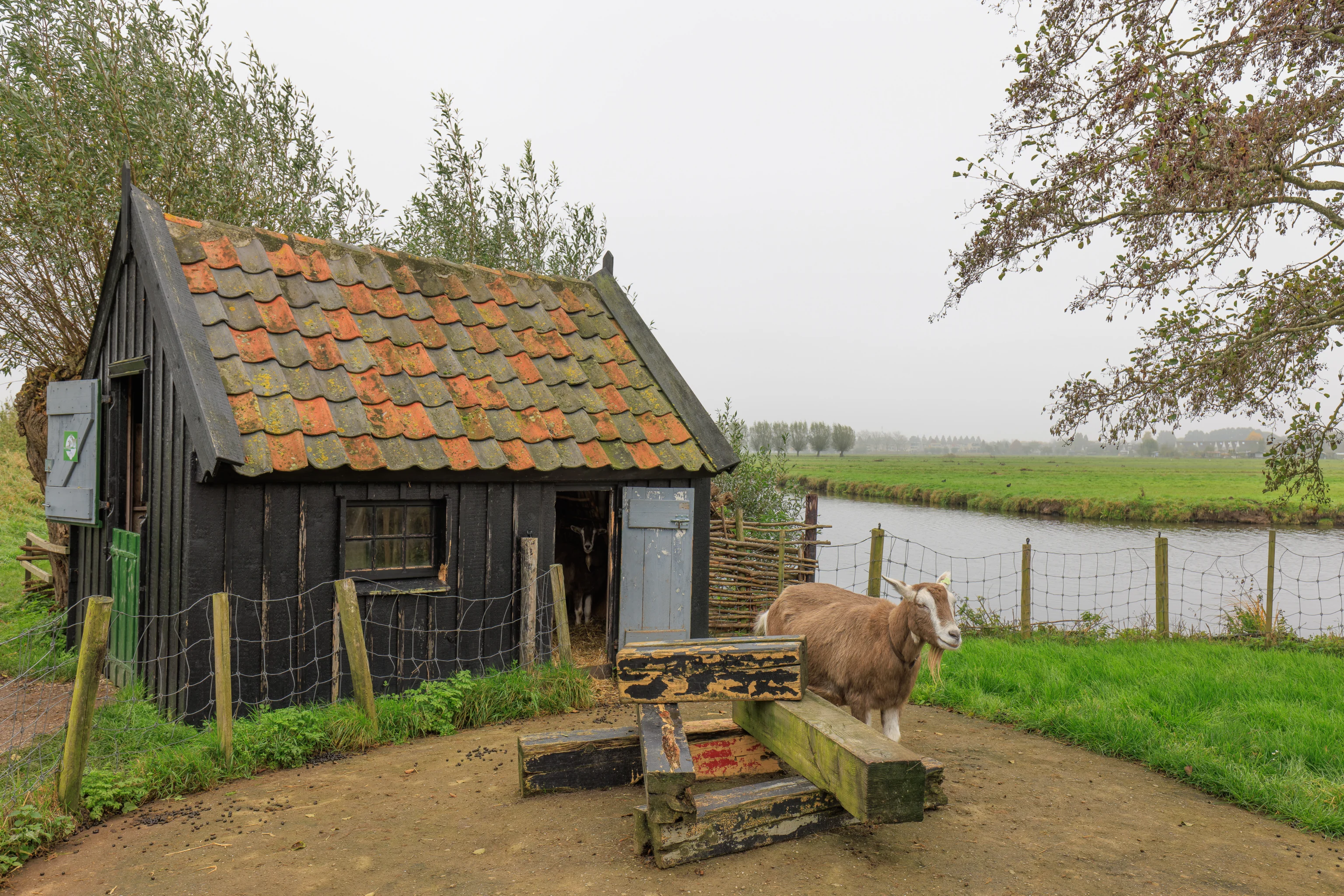
There were also two goats. One was outside while the other was inside the little building.
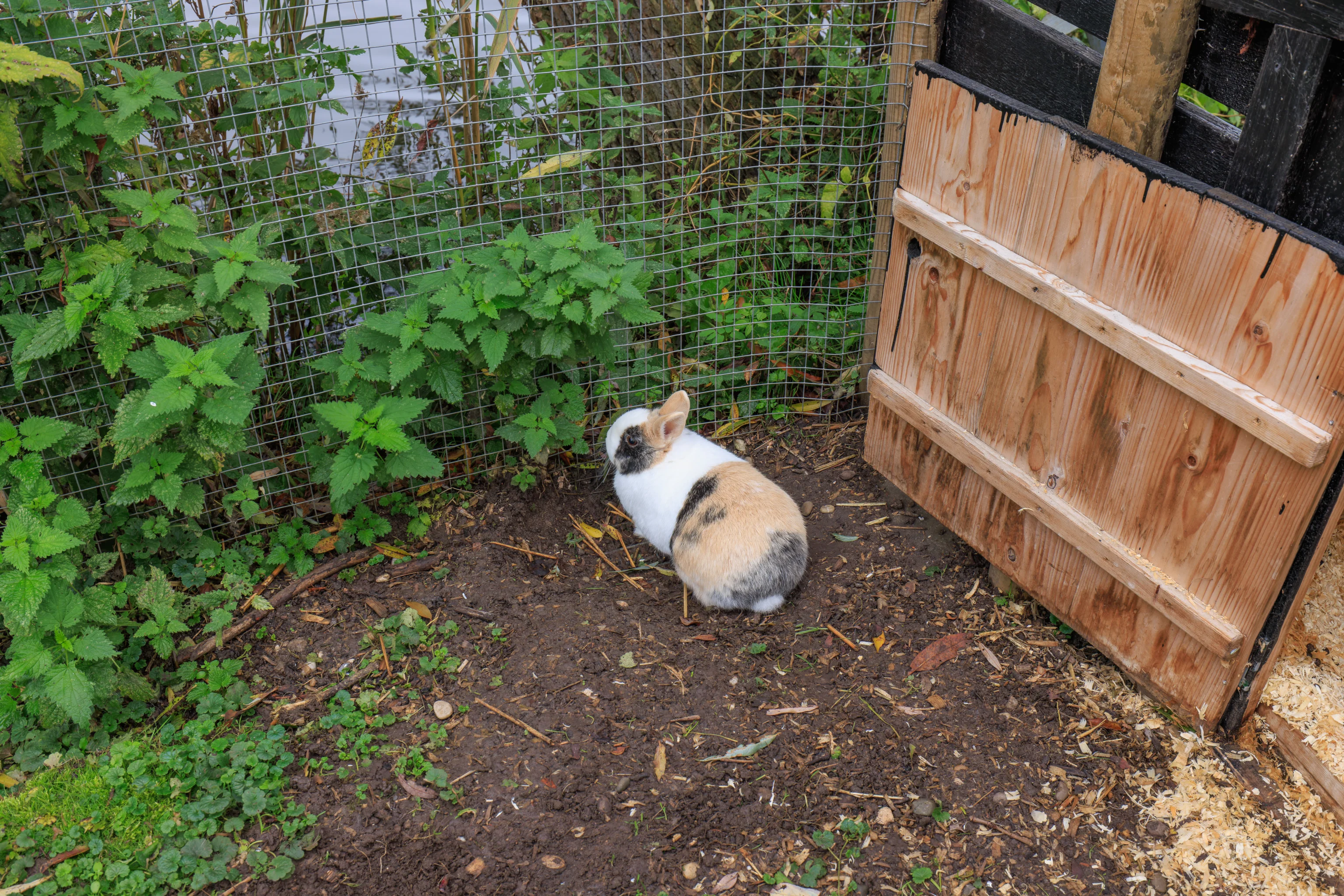
There was also a rabbit.
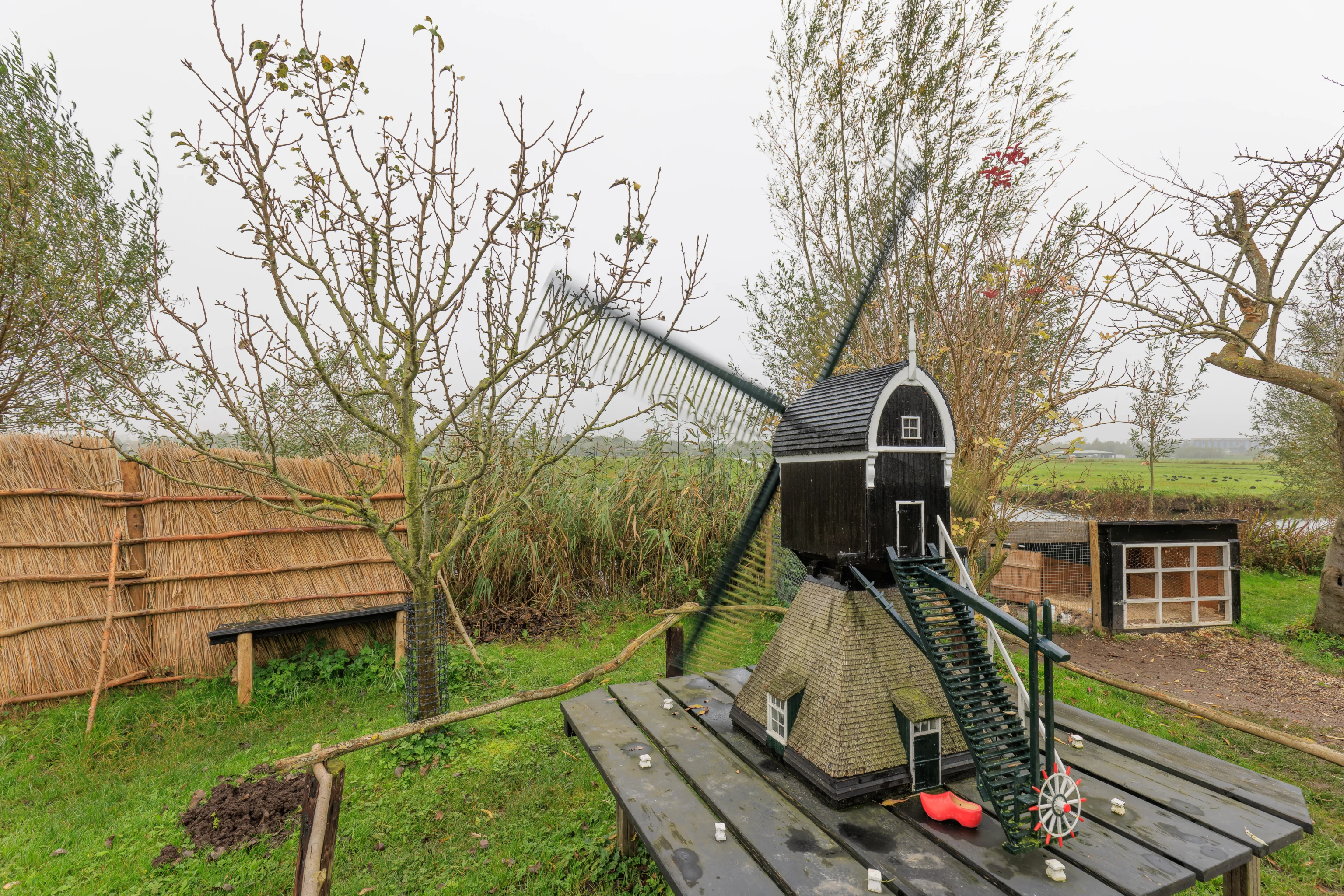
There was also a model of the windmill. It was turning, though not from the wind.
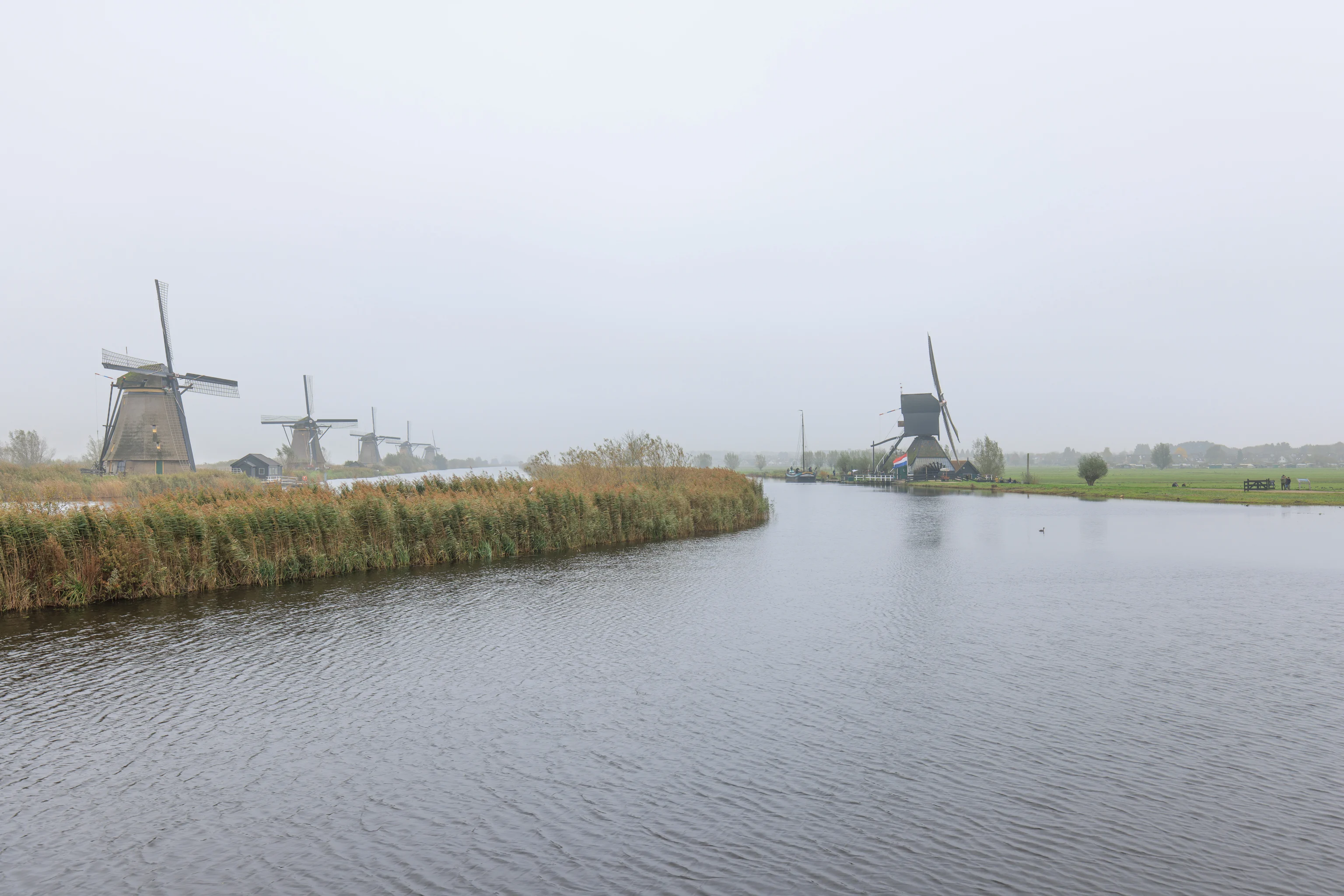
After leaving the windmill, we started to backtrack. We looked back at the Blokweer Museum Windmill from the nearest bridge, the same one that we crossed over earlier.
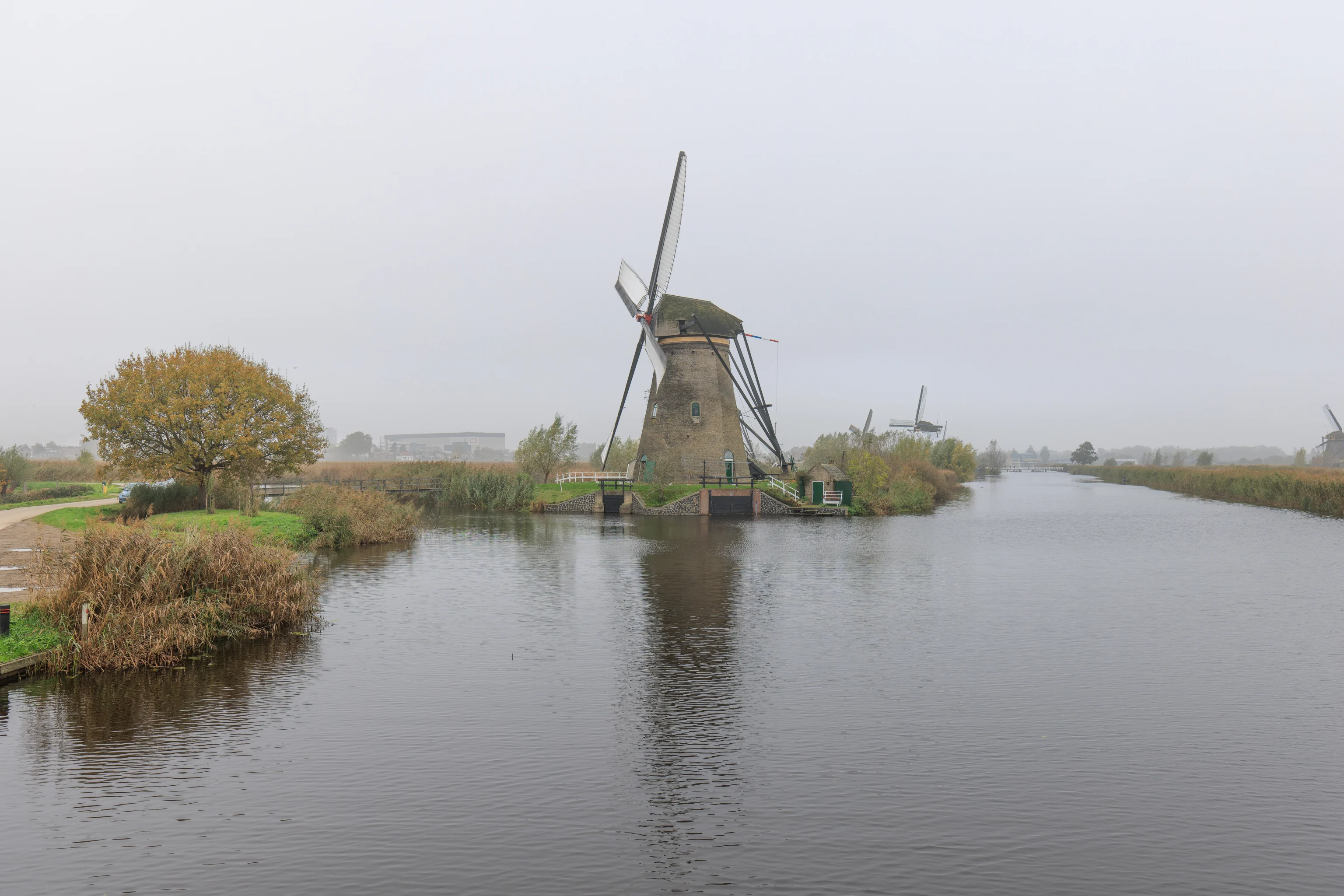
This windmill, Nederwaard #5, is to the northwest of the bridge.
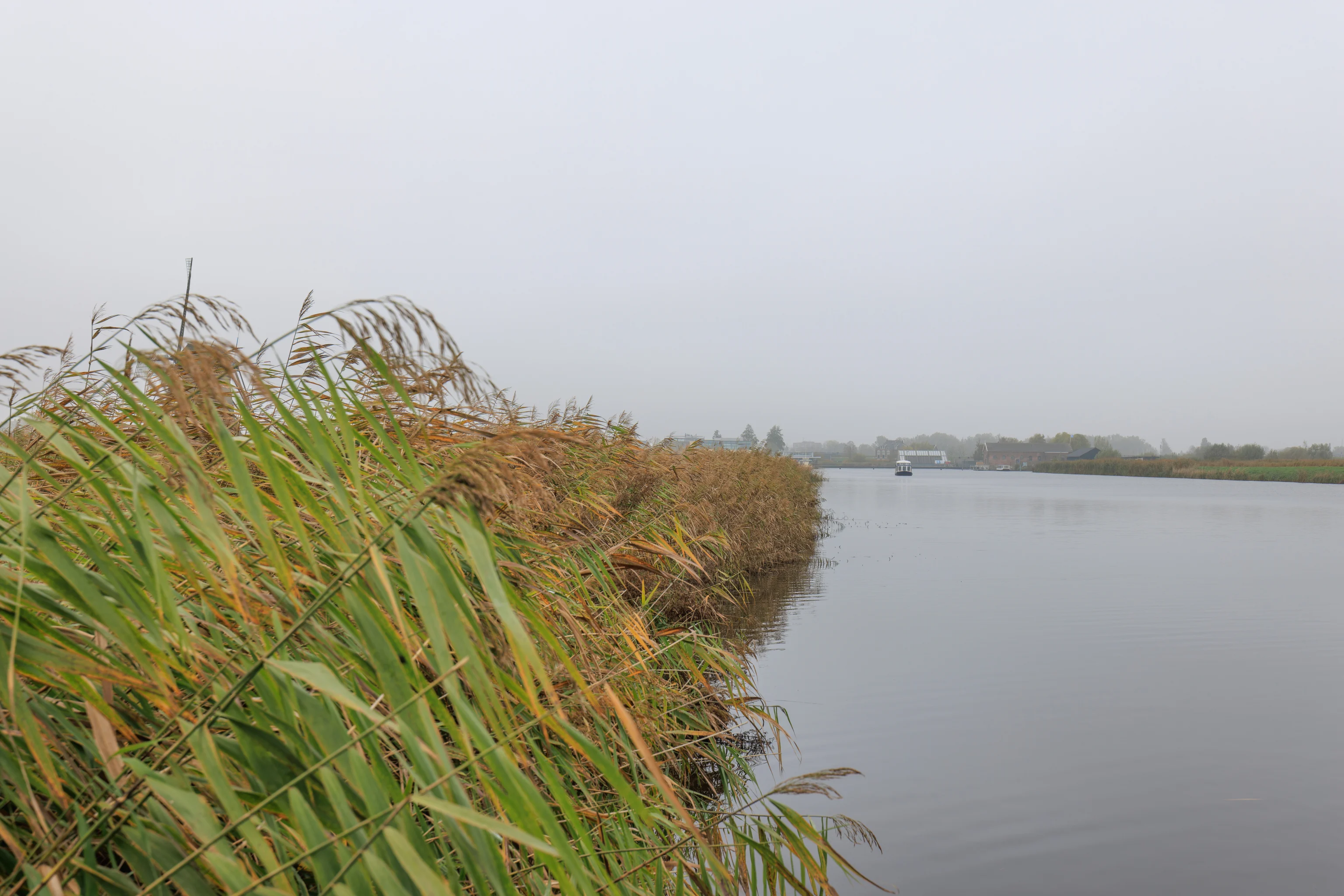
We wanted to ride on one of Kinderdijk’s small tour boats for a different view of the windmills. The Hopper route operates in a loop with three stops. We had missed the boat from the southernmost stop near the bridge we were at. So, we decided to walk back to catch the next one at the middle stop near the Nederwaard Museum Windmill. Here, we can see the small boat approaching.
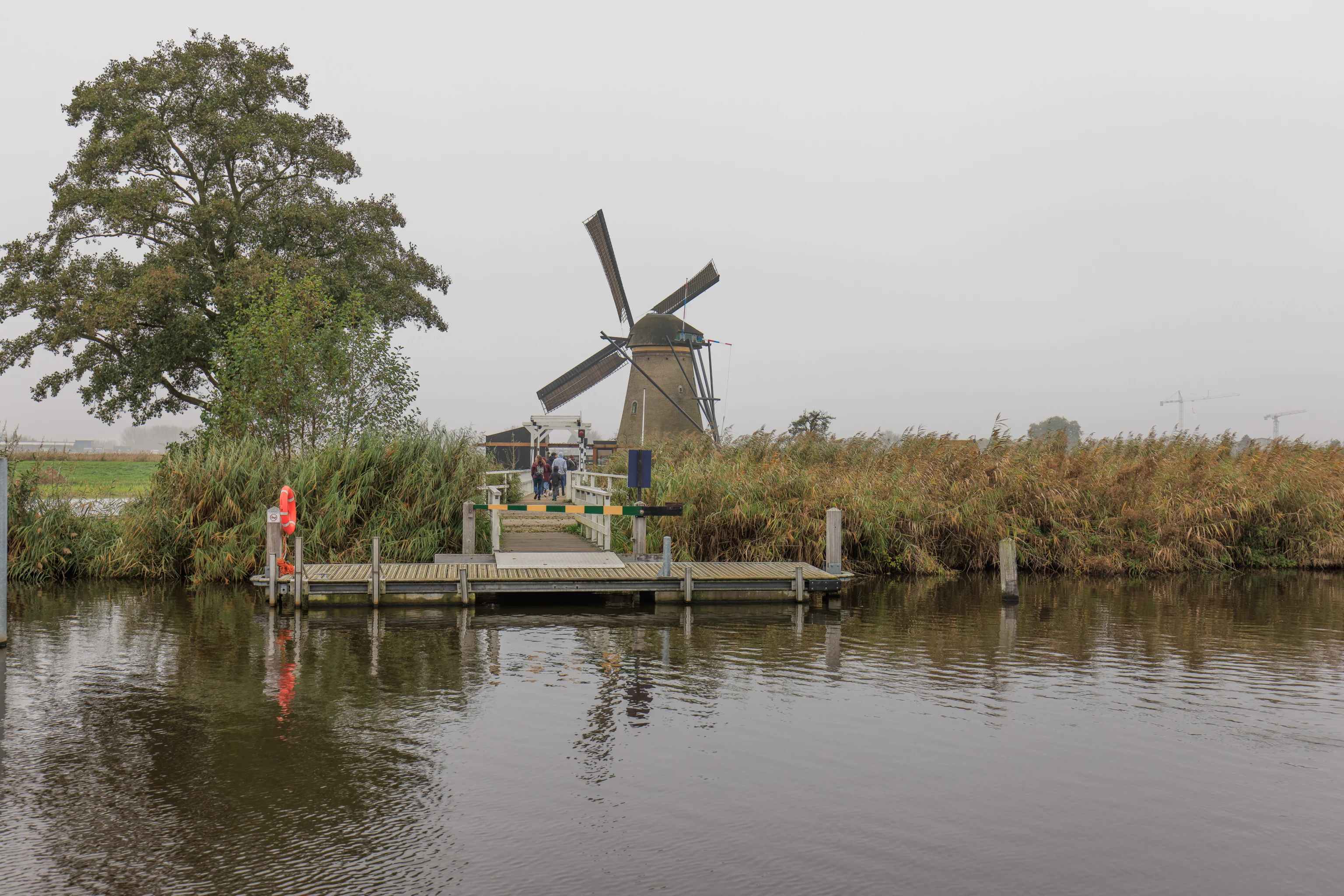
We boarded the boat as it began heading to the south. Here, we see the pier that we boarded on as well as the Nederwaard Museum Windmill in the background.
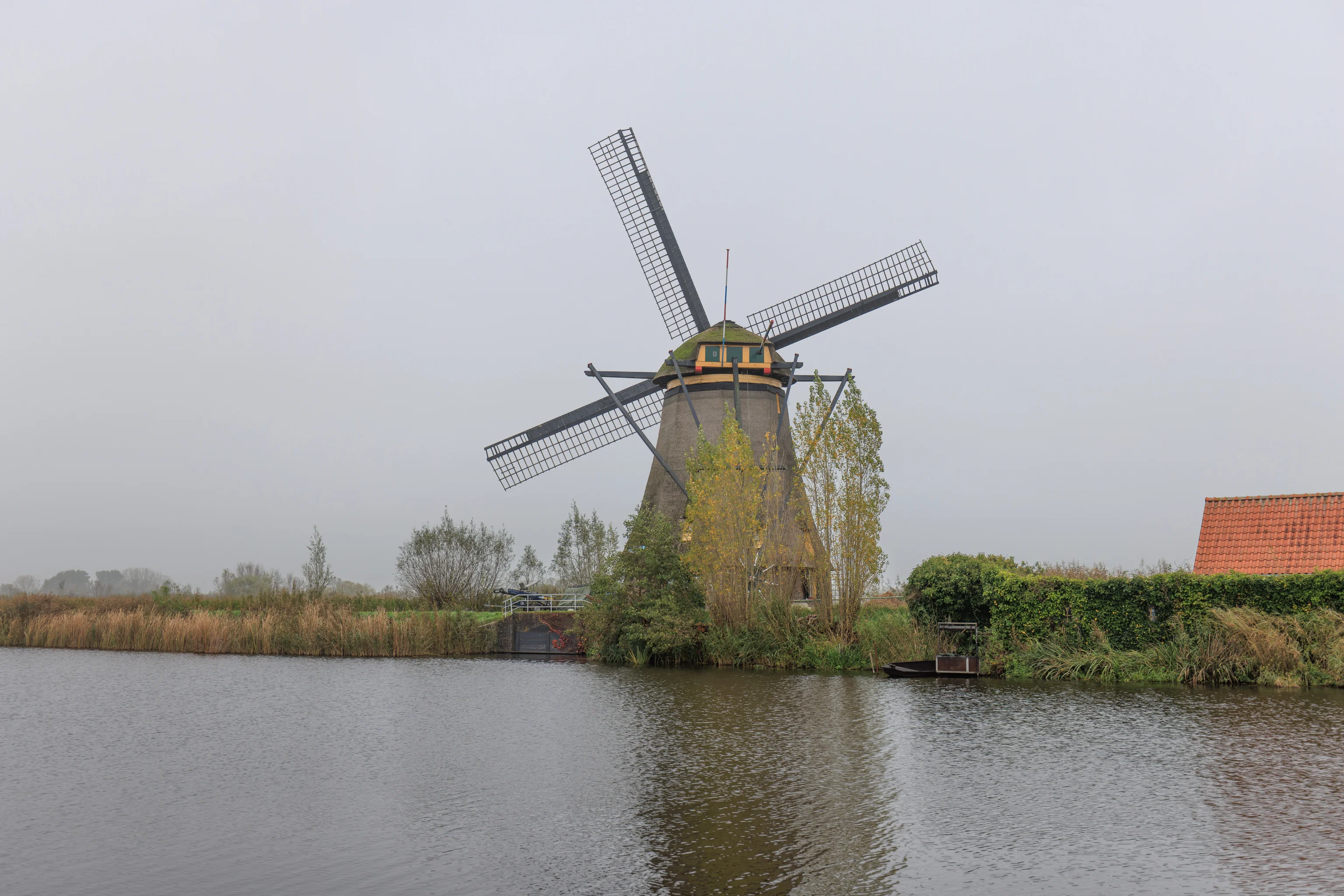
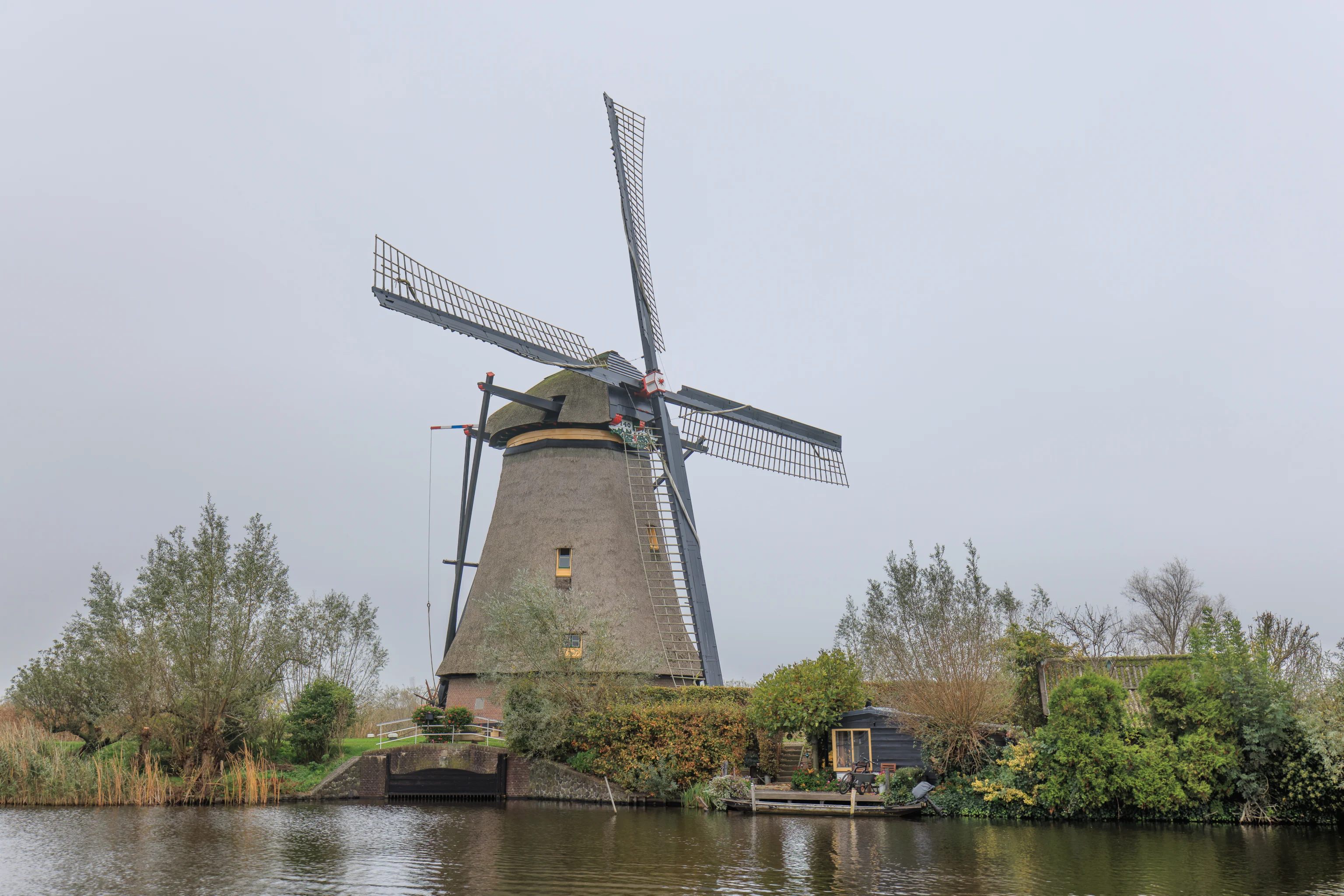
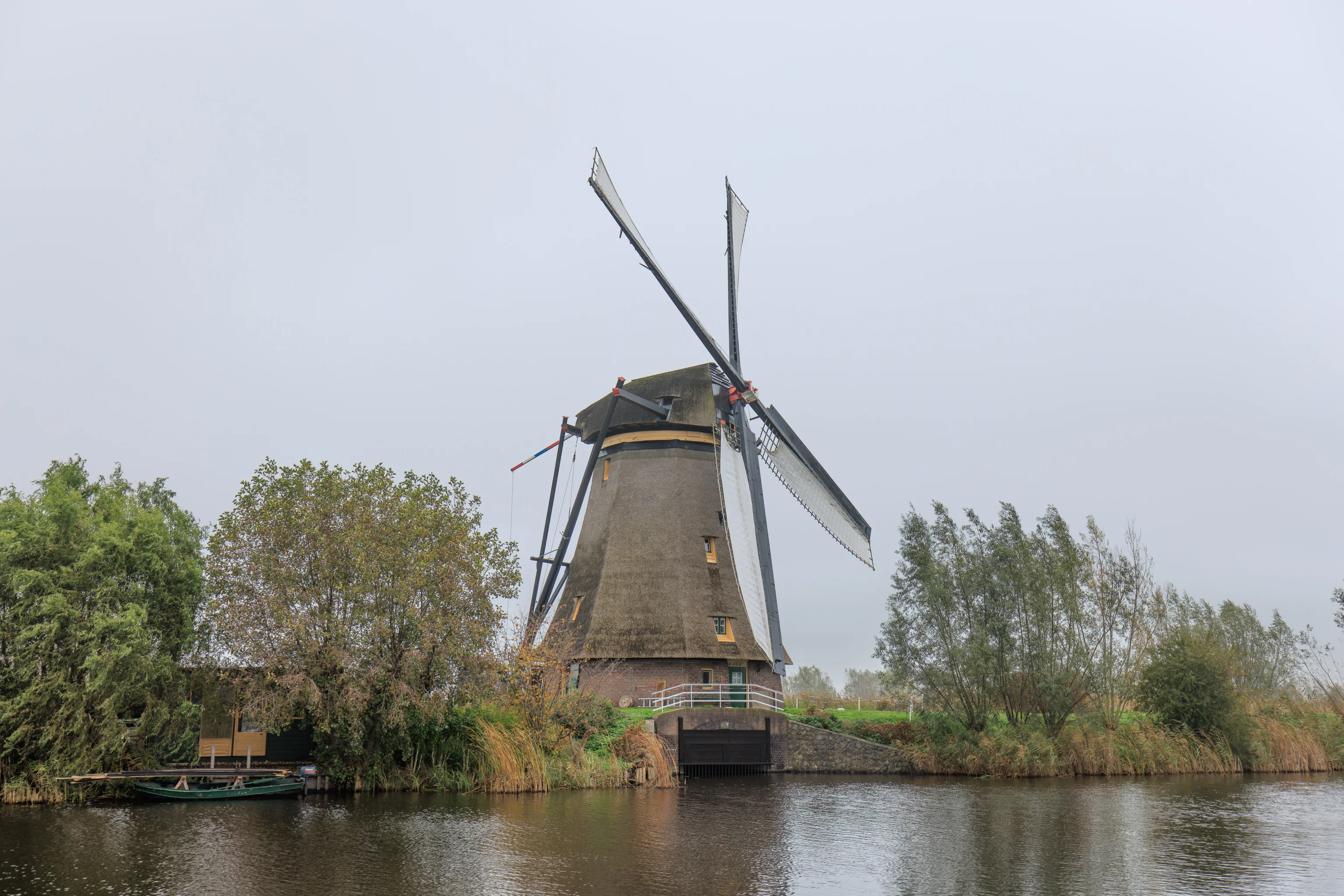
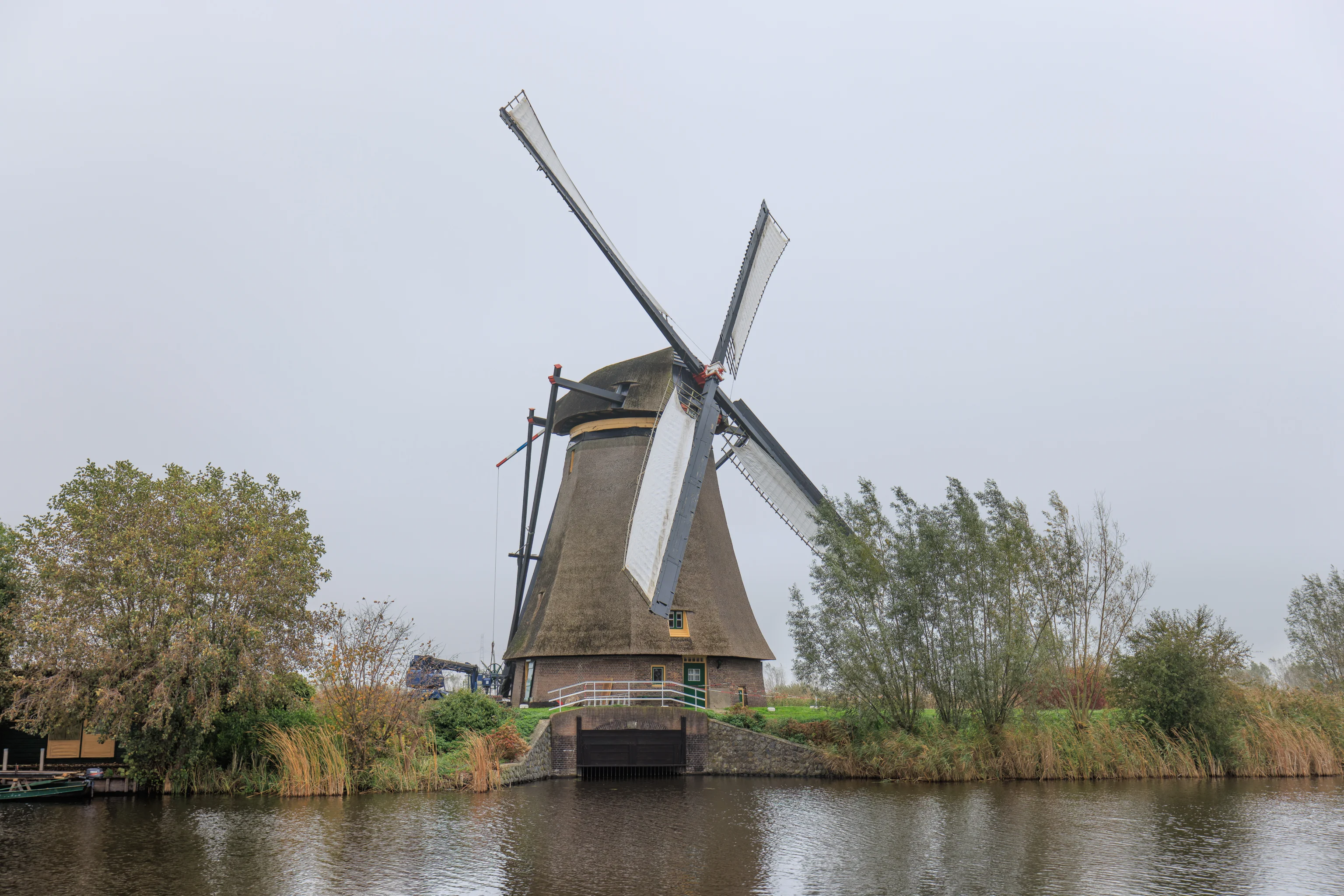

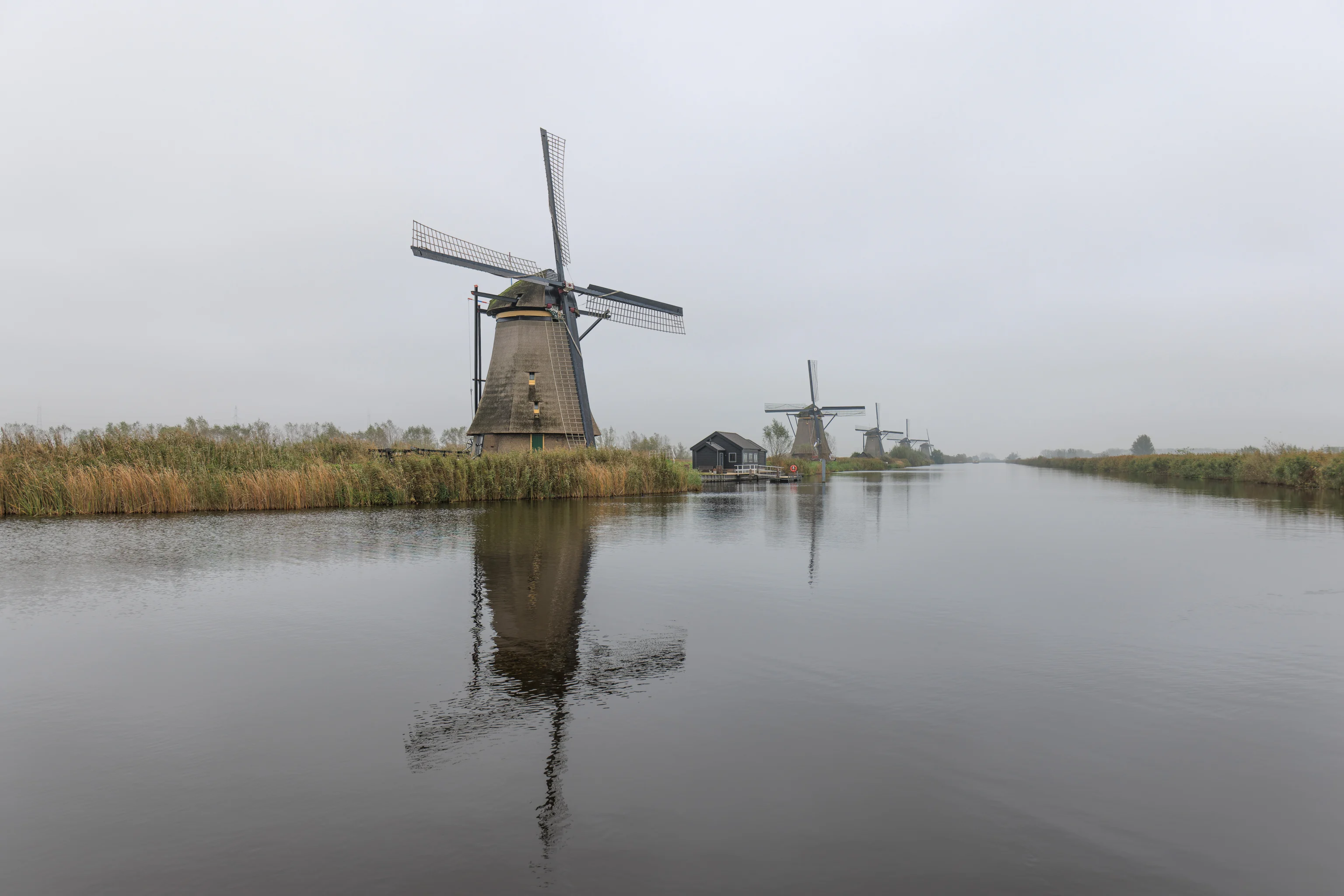
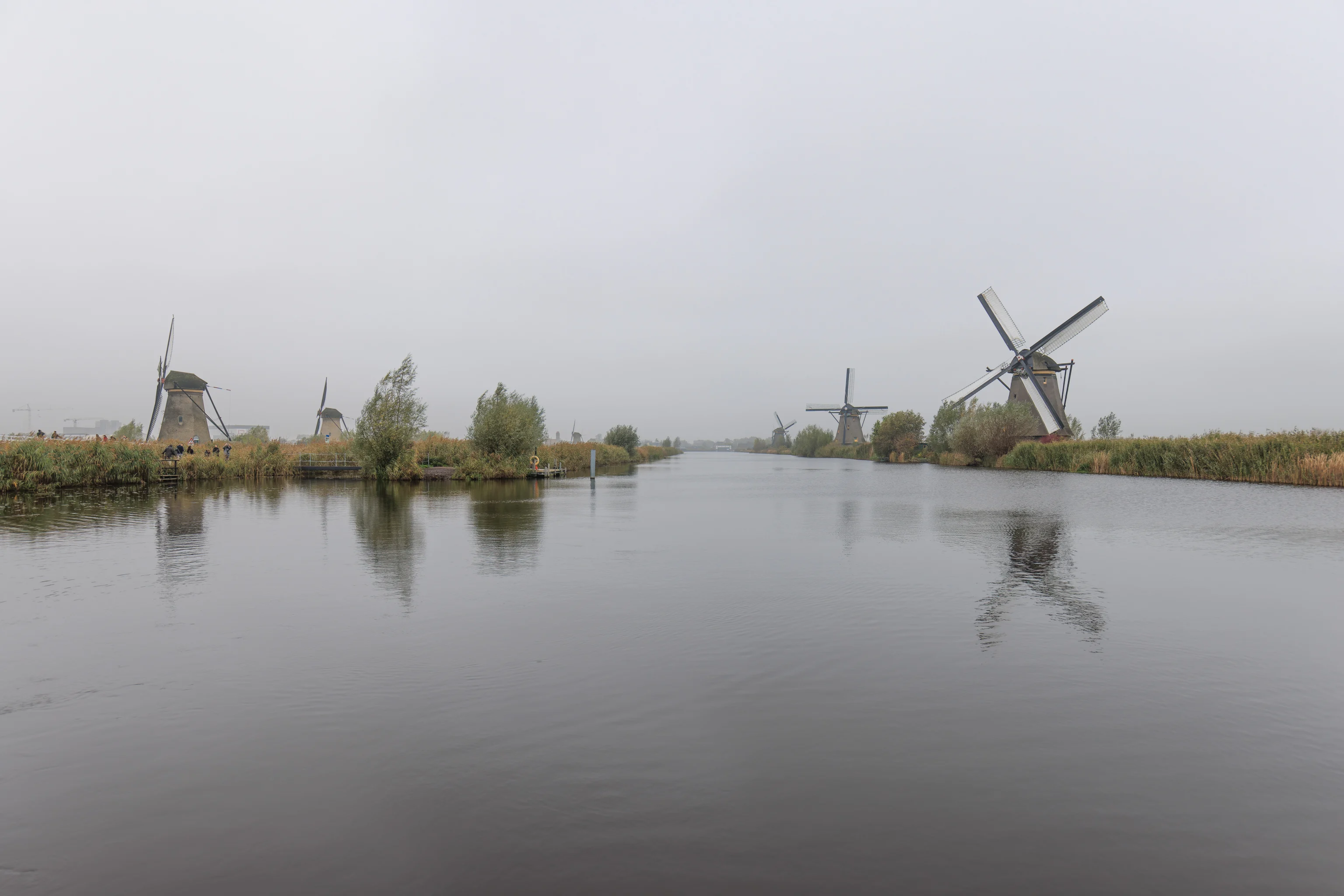
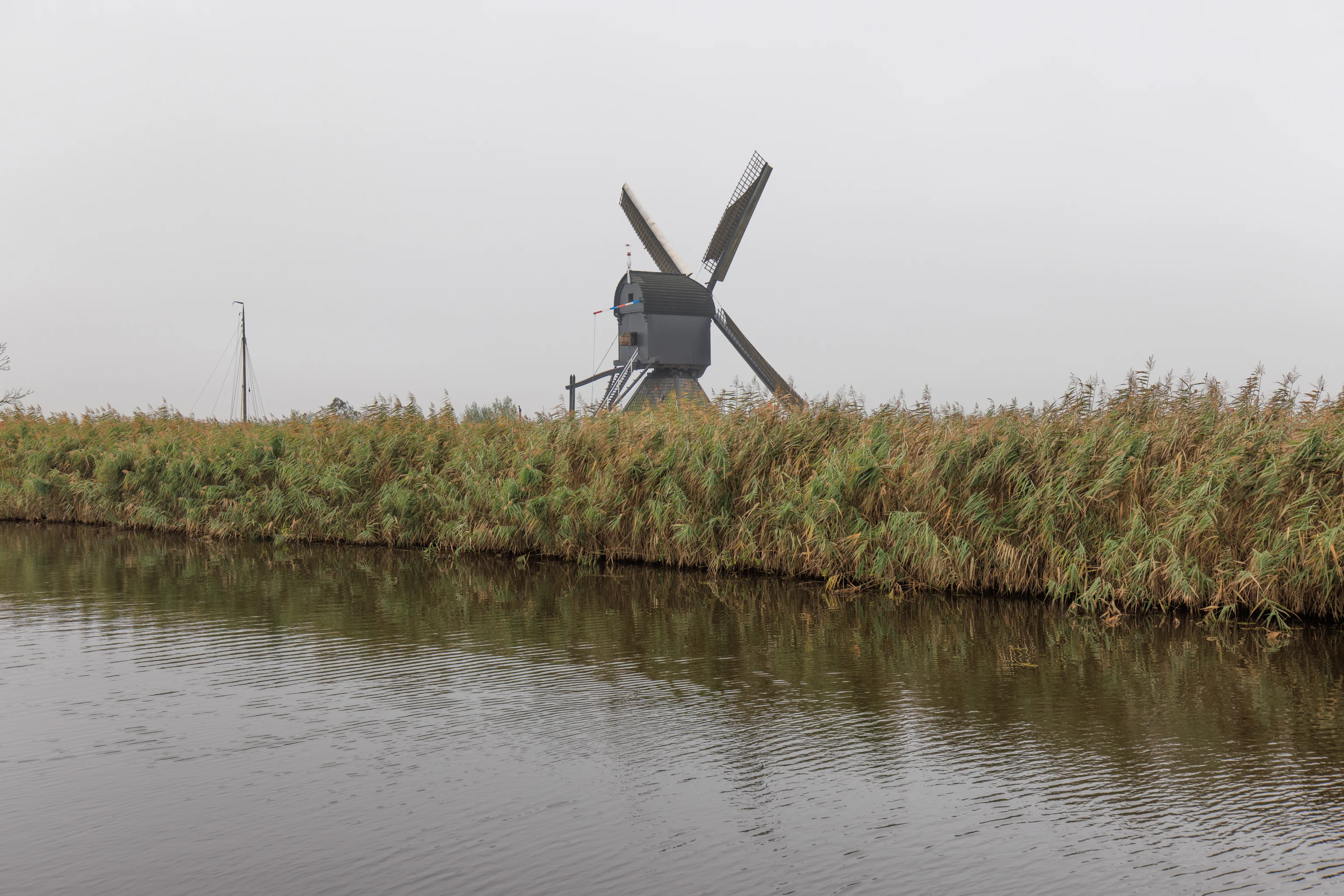
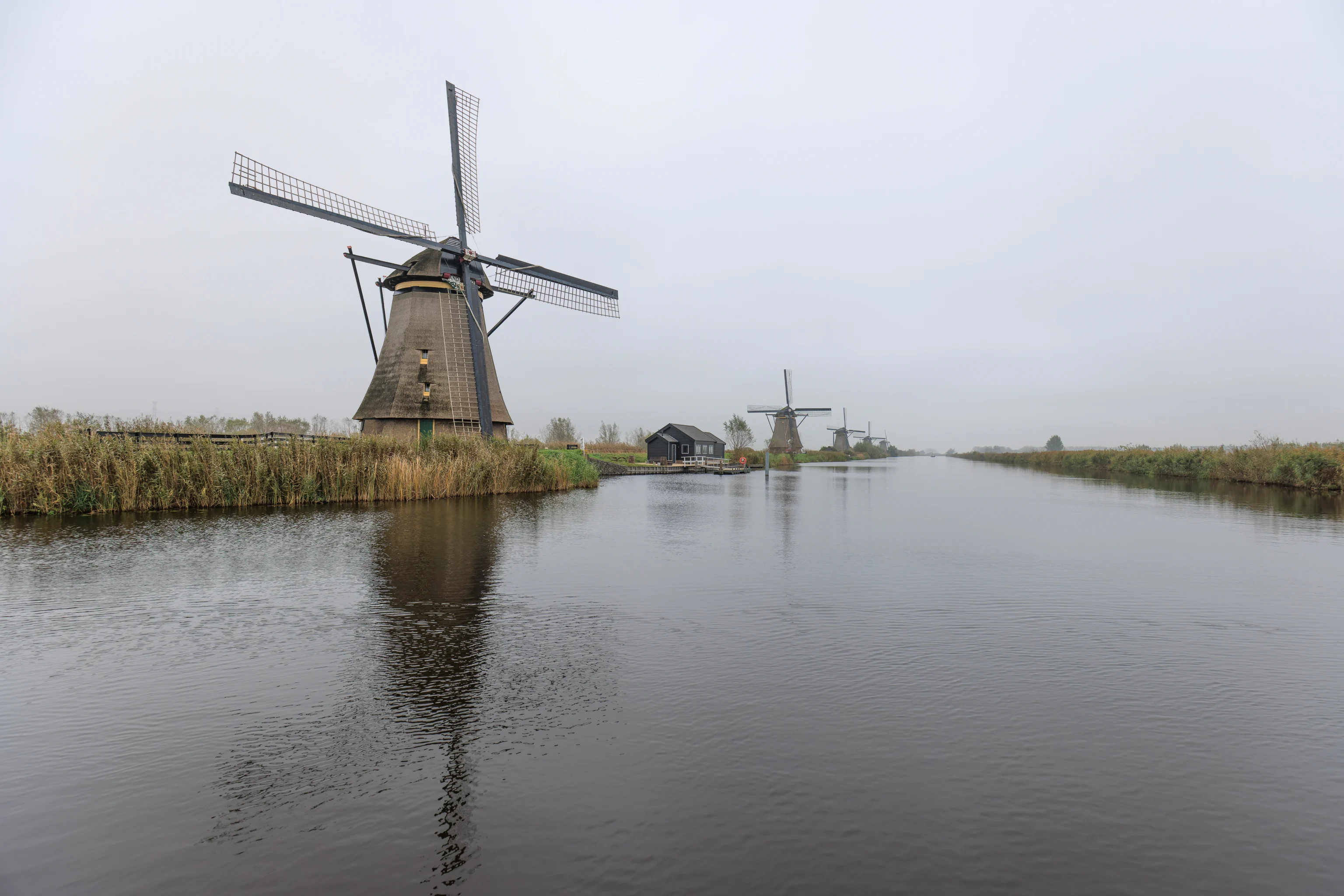
The small boat is pretty slow! We had a good view of the Overwaard #4 through #8 at far end of the boat’s route. There is another boat, the Cruiser, that goes further.
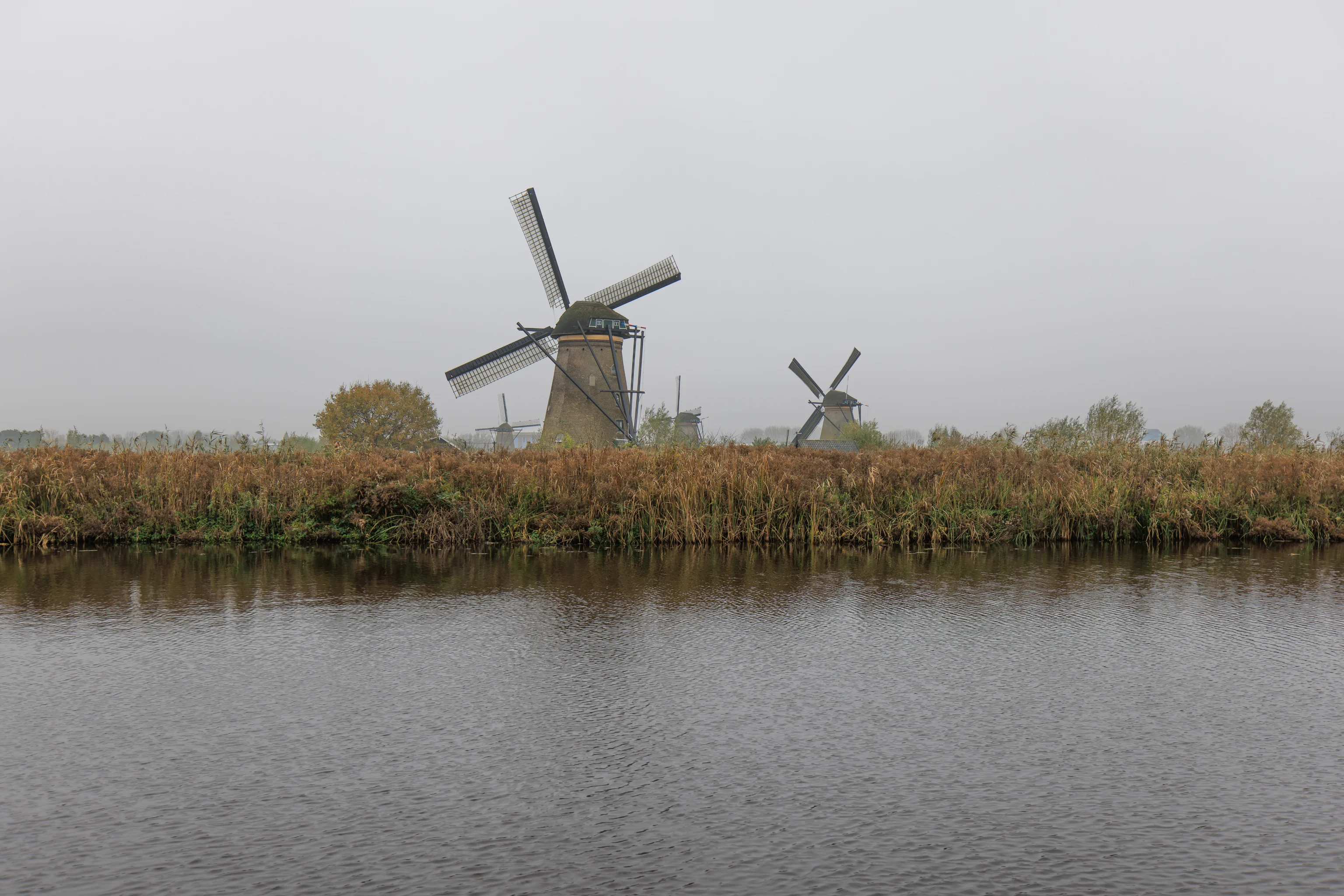
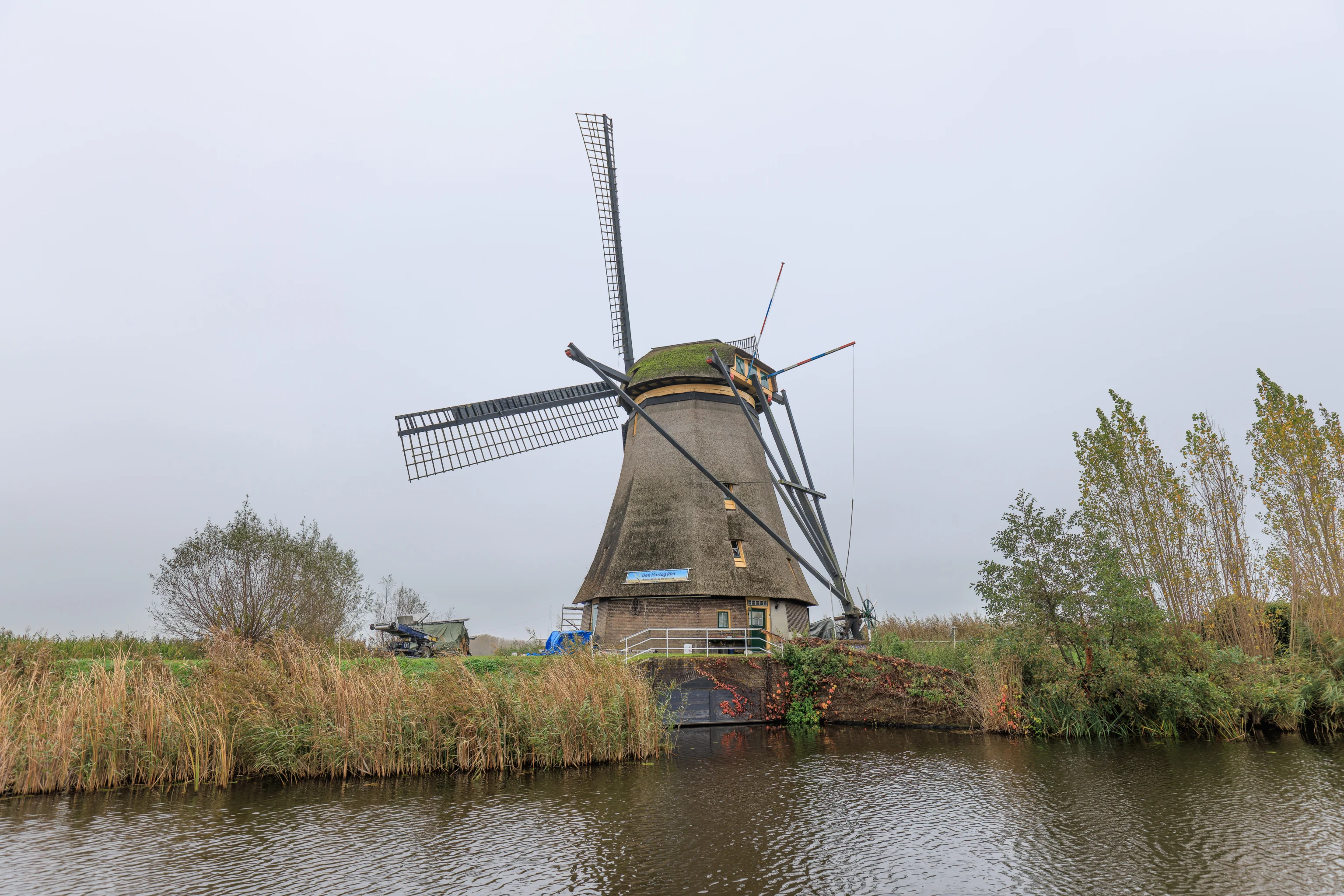
We stayed on the boat until it returned to the beginning of the route near the visitor services building.
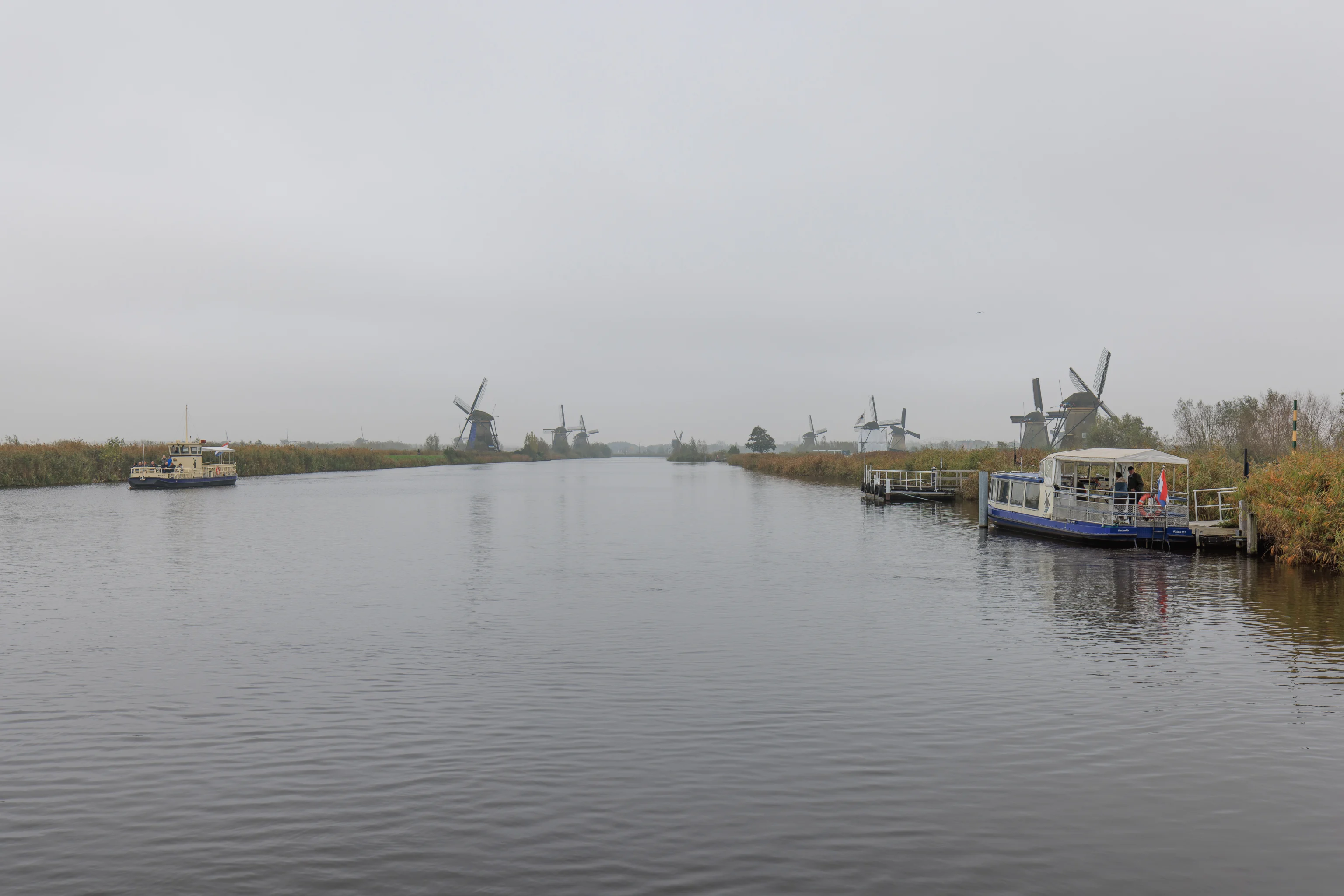
We decided to cross the bridge to reach the buildings on the other side of the main canal. Looking down the canal, we could see the Hopper on the right and the Cruiser on the left.
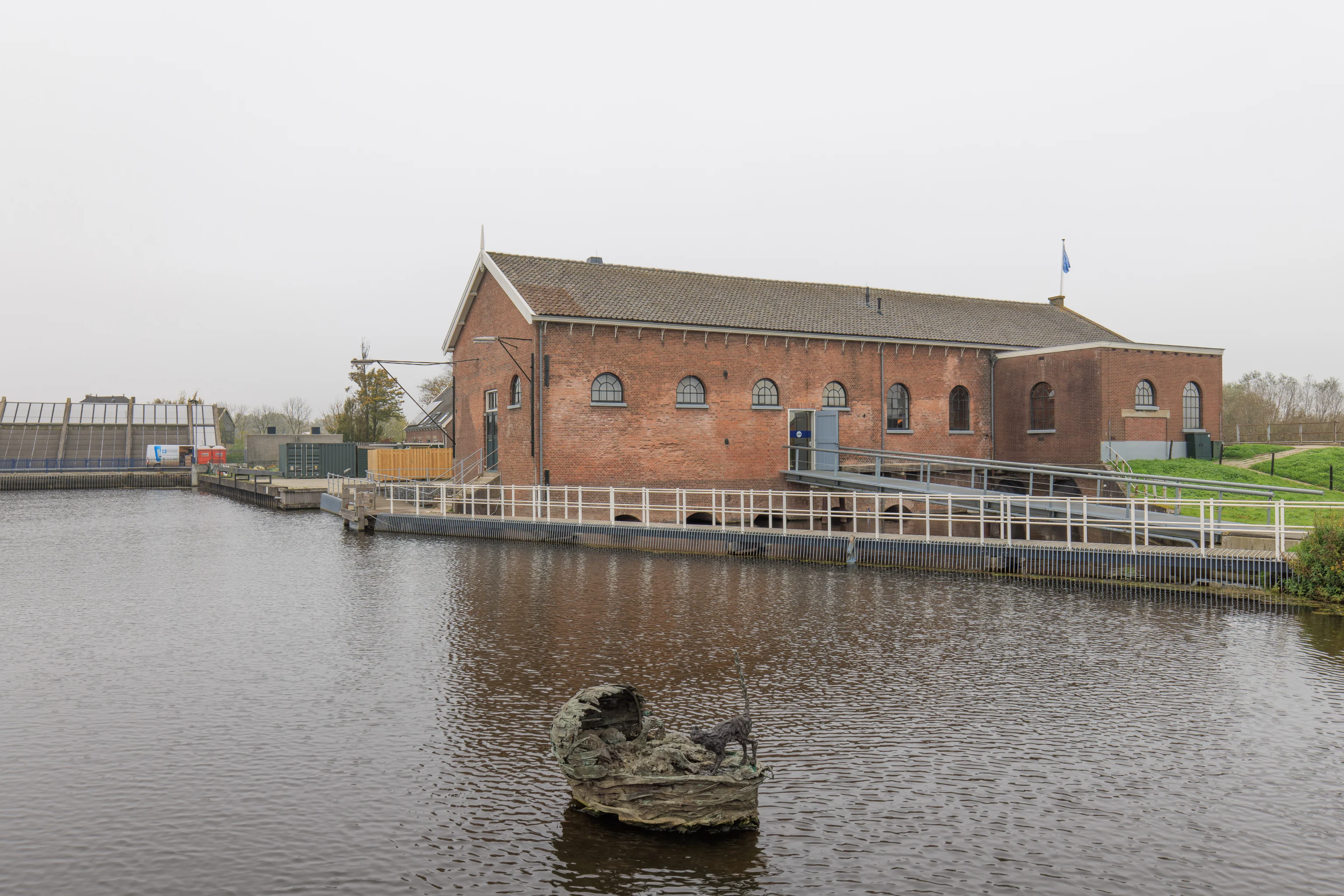
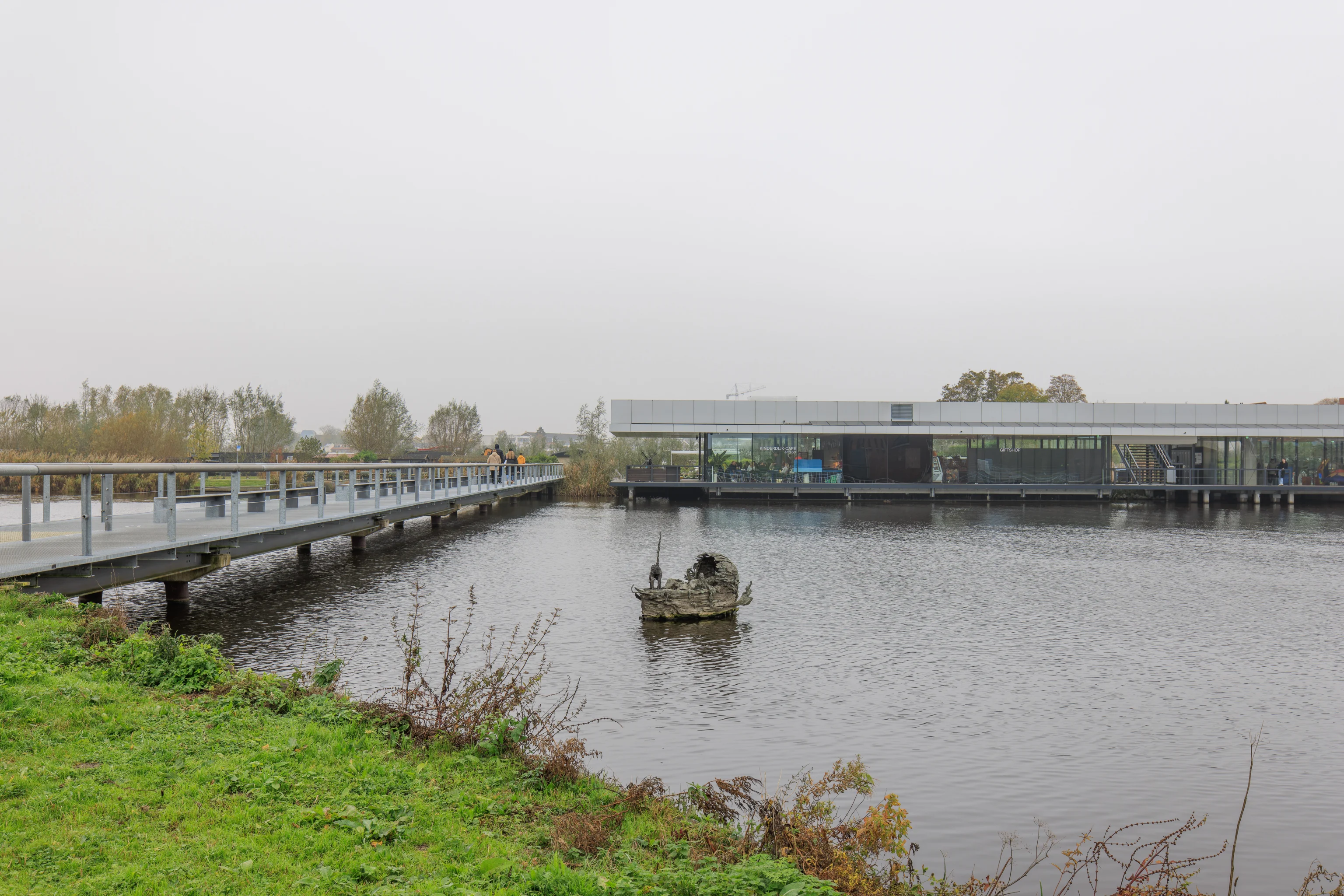
The sculpture in the canal, Beatrice’s Cradle, illustrates the legend that gave Kinderdijk its name:
On 19 November 1421, the St. Elisabeth's Flood took place.
Inextricably linked to this disaster and the village of Kinderdijk is the legend about the child called Beatrice, whose cradle washed up on the riverbank near the dyke in what is now called Kinderdijk.
The cradle also contained a cat that kept the cradle balanced by jumping back and forth.
This artwork, by the artist Roel Teeuwen, depicts the legend's story.
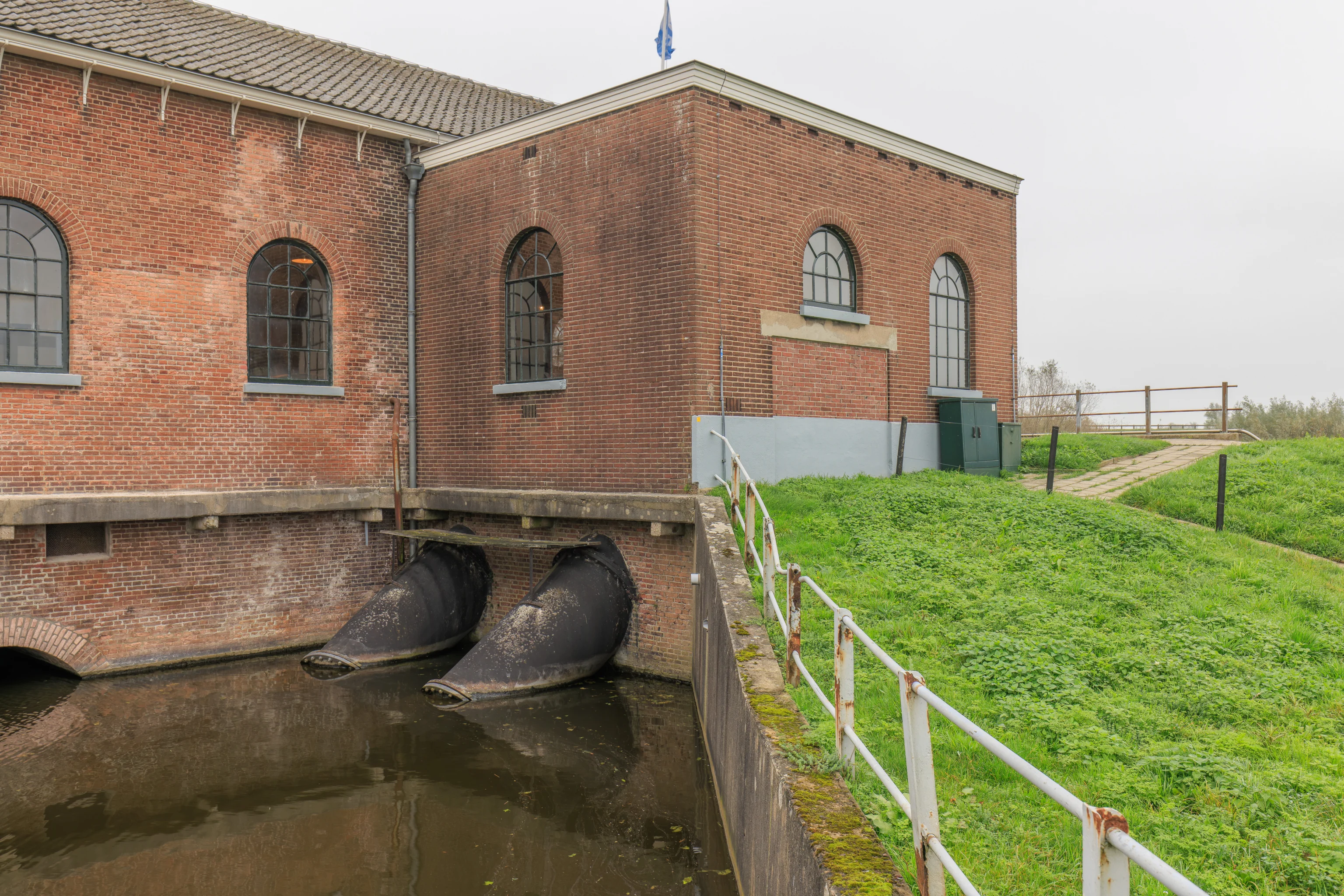
This building is the Wisboom Pumping Station, a relatively modern replacement for the Kinderdijk windmills.
Dating back to 1868, the Wisboom pumping station was originally built as a steam engine until it was converted into an electric pumping station in 1924. This national monument, a true gem of industrial heritage, was decommissioned in 1996. Step inside to taste the atmosphere of the building and dive straight into the history of Kinderdijk!
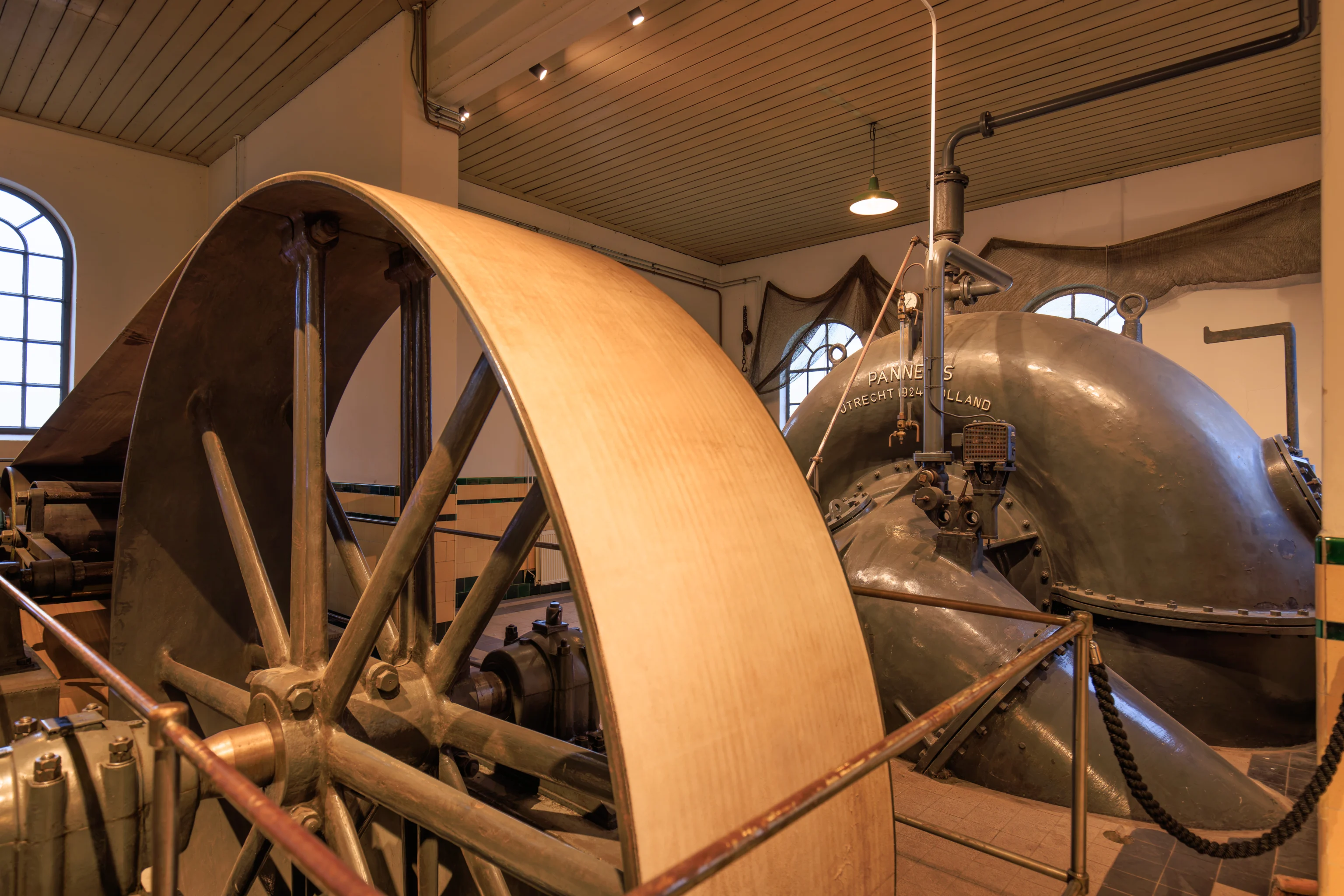
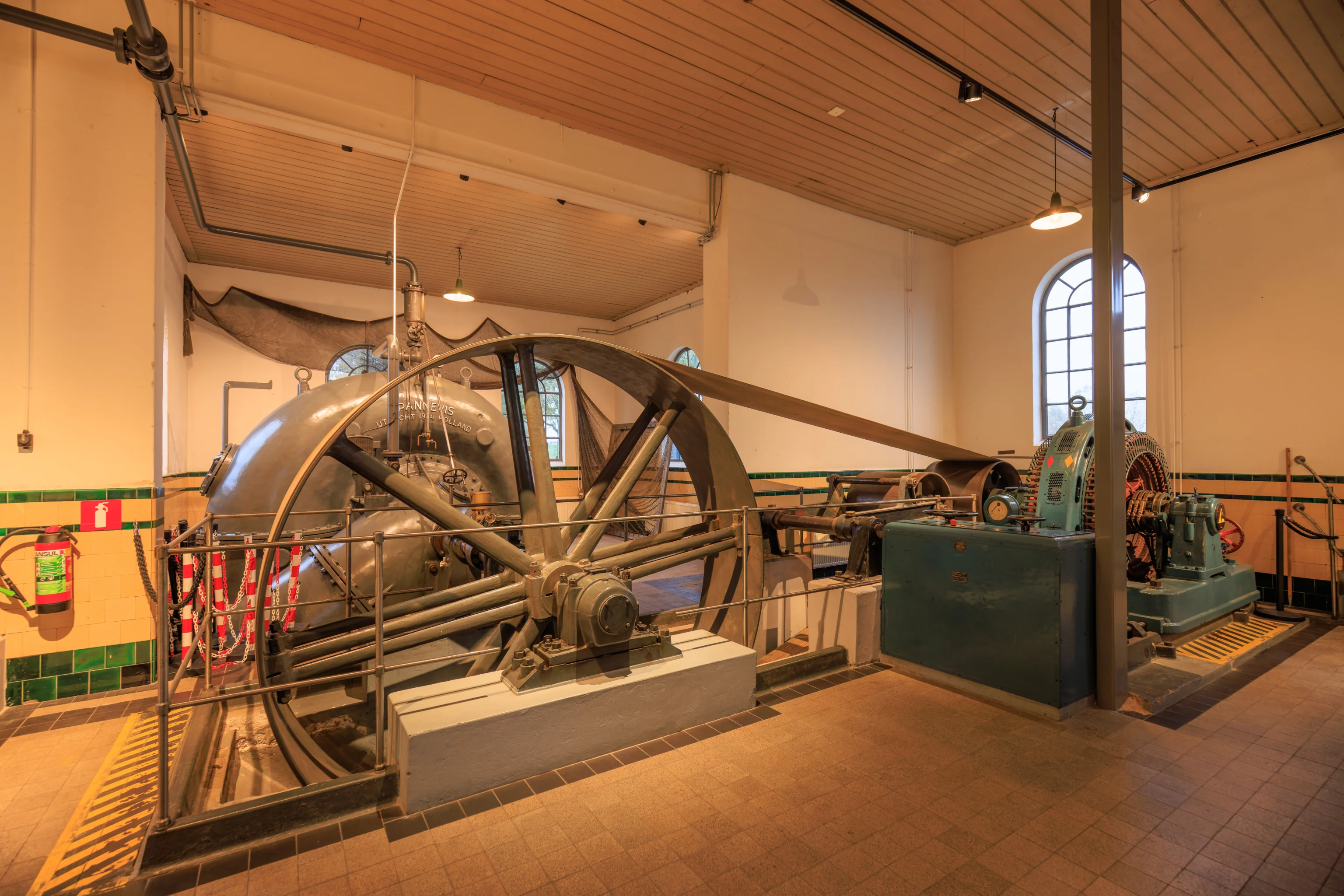
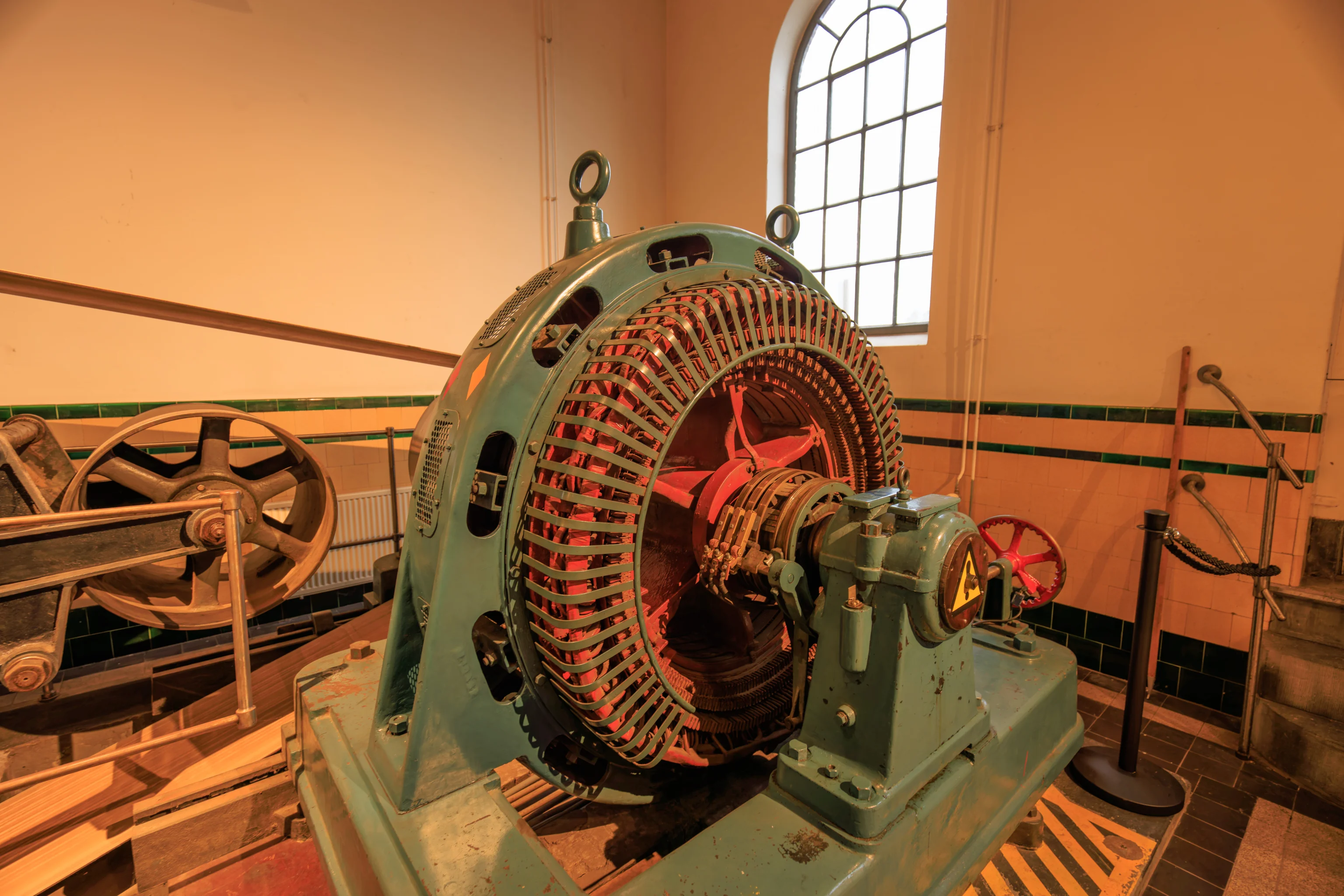
The electric pump machinery is visible inside, though it no longer functions.
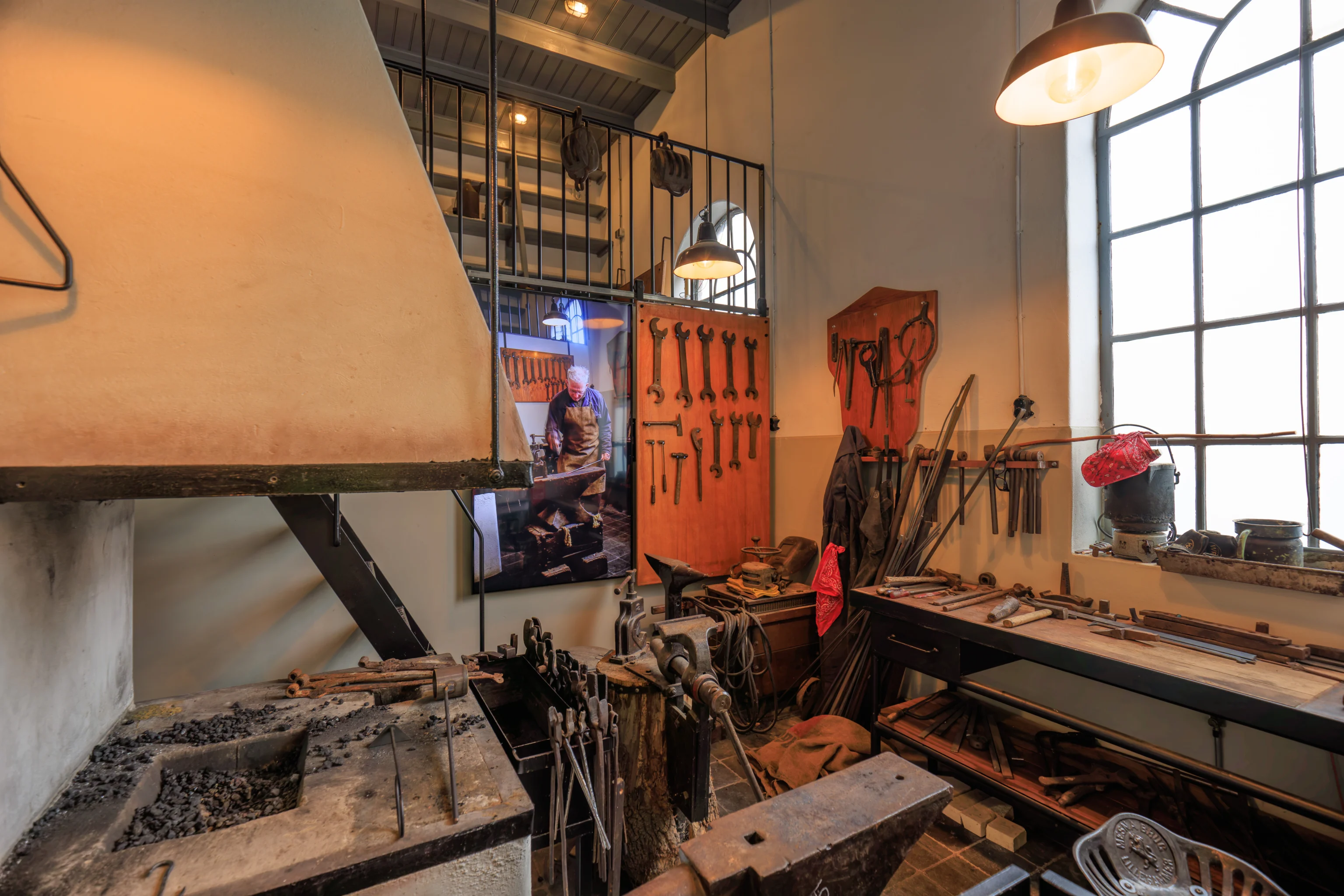
There is also a small workshop for repairing damaged equipment.
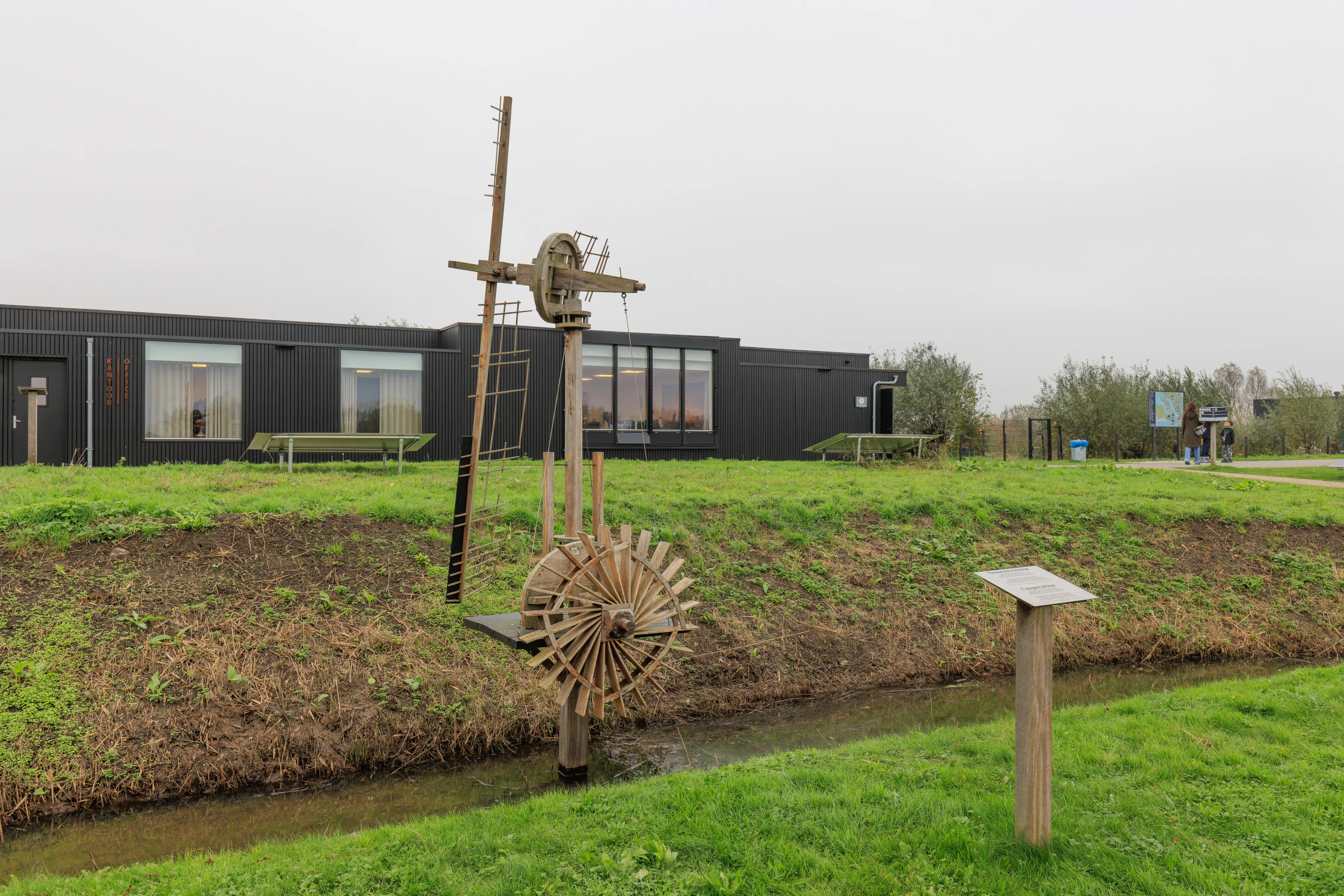
This wooden model shows the internal workings of the windmills here at Kinderdijk. The small sign in front of it reads:
Cooperation
Through the combined efforts of sails, gears, and scoop wheels these lands were made inhabitable.
Through the cooperation between volunteers, staff and management our heritage is revealed to the world.
Presented by the volunteers of World Heritage Kinderdijk foundation
January 2020
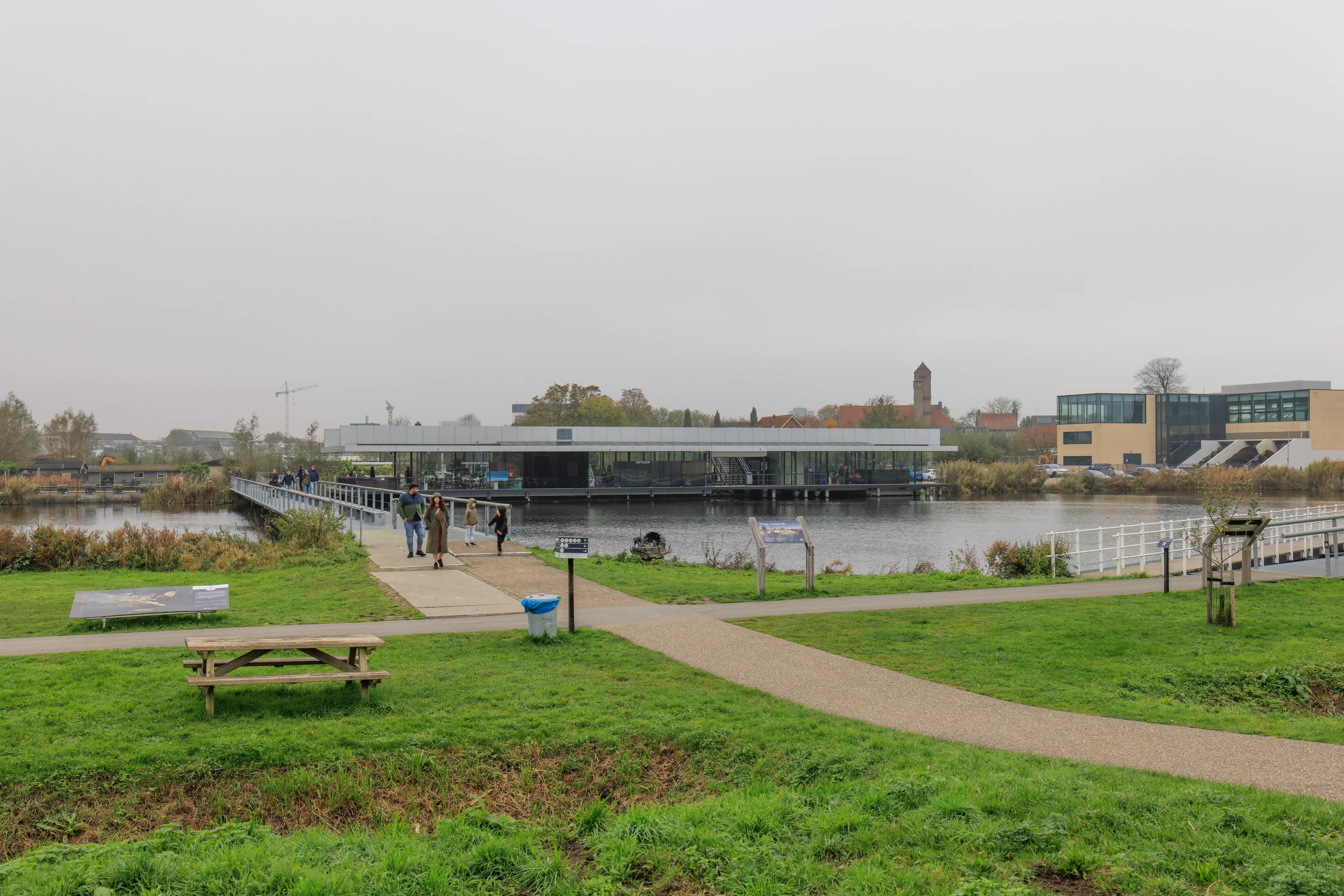
Here, we see the bridge that we walked across as well as the large visitor services building at center. The modern pumping station, which replaced the Wisboom Pumping Station and the windmills, is on the very right.
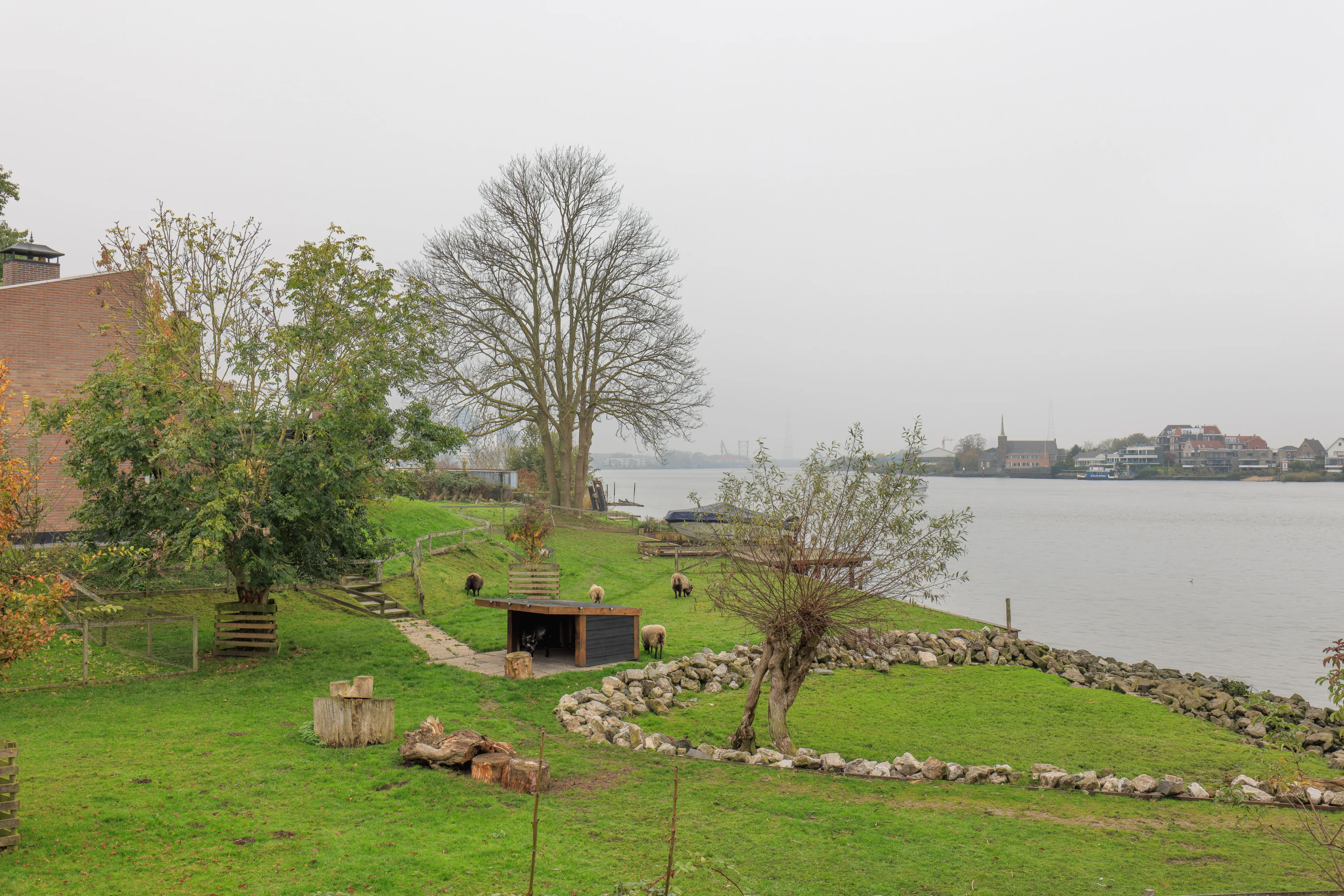
We headed back to the pier to return to Rotterdam. On the way, we spotted some sheep grazing by the river.
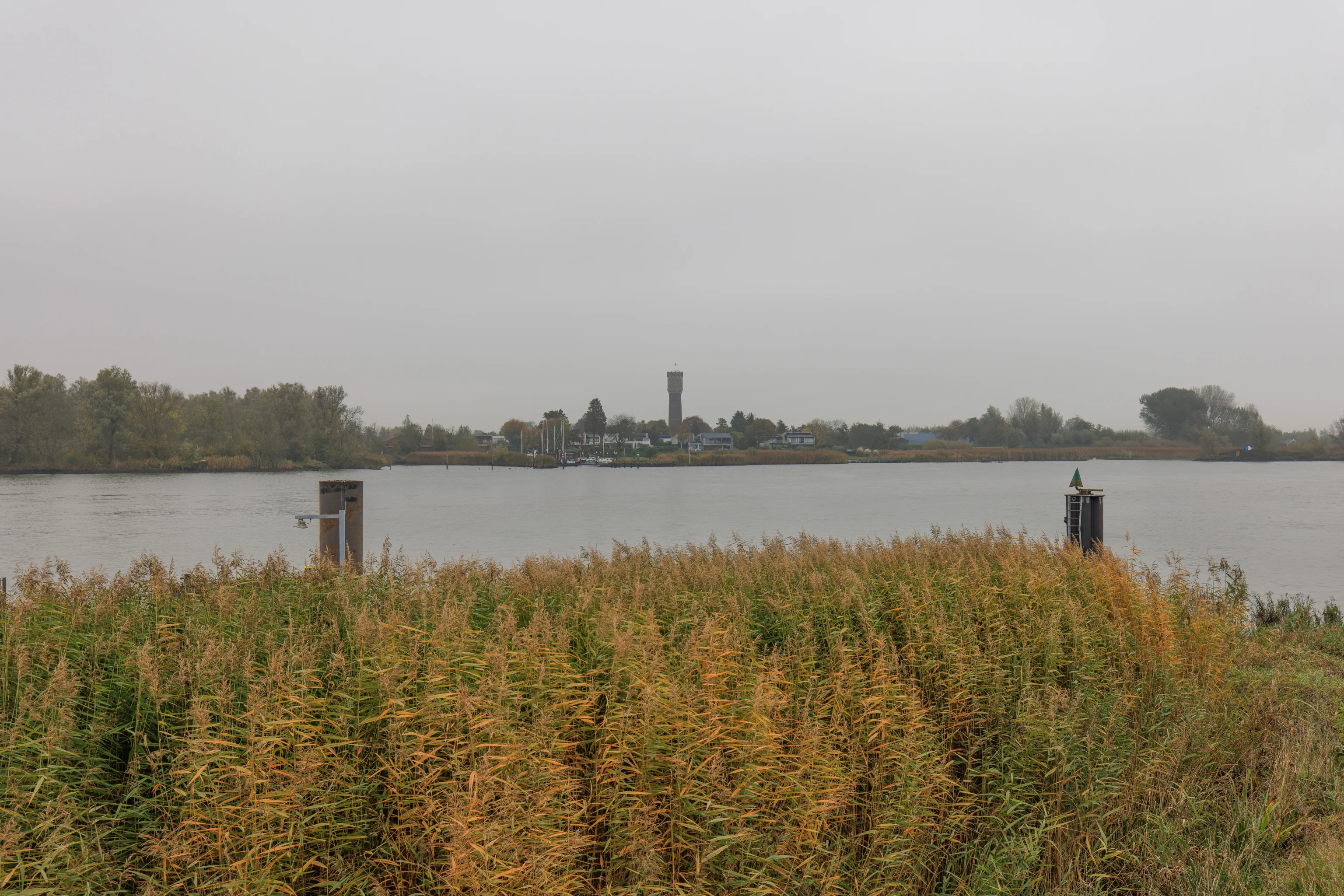
It turns out that the next ferry would not be for a long time. We decided to take the bus instead as it would get us to Rotterdam around when the ferry would depart from Kinderdijk! The bus, #489, runs every 30 minutes from the Kinderdijk Molenkade stop right by the ferry pier. It goes to Rotterdam’s Kralingse Zoom station which has metro and other bus connections.
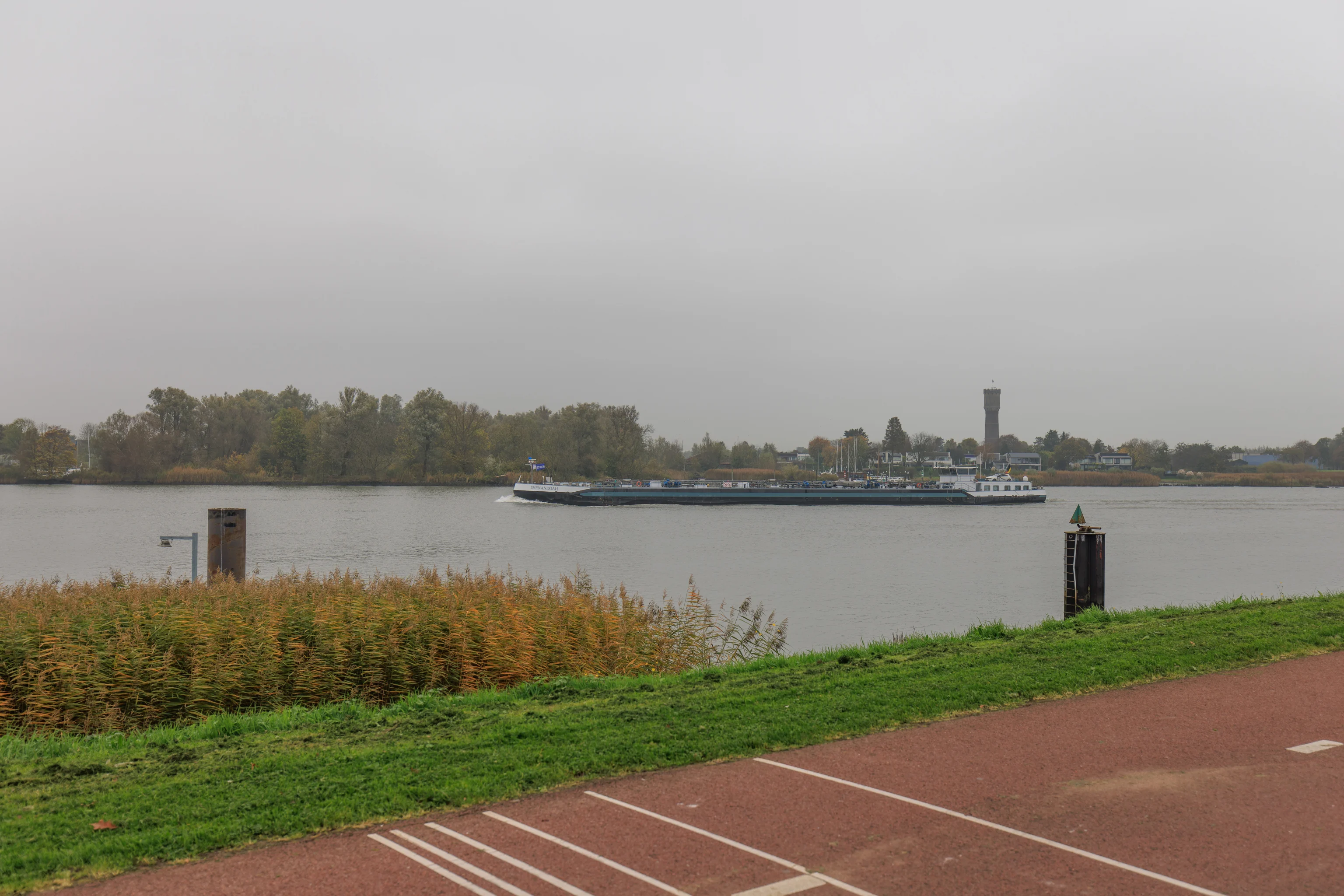
While waiting for the bus, we spotted this river cargo boat. It is named the Shenandoah! While we don’t actually live right by Shenandoah National Park, it is still pretty local to us.
Rotterdam
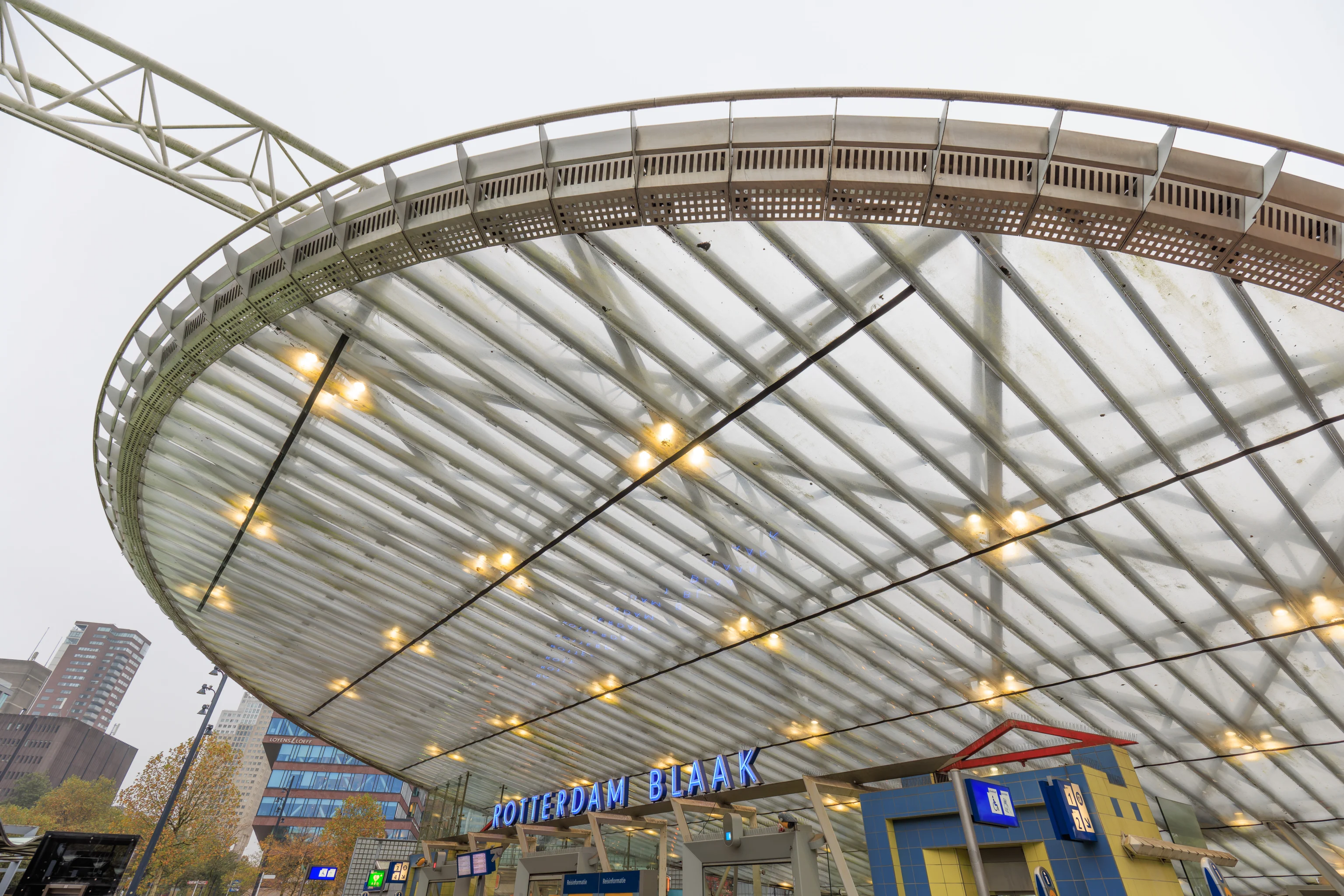
After arriving by bus at Kralingse Zoom, we took the metro west into central Rotterdam. We intended on transferring at Beurs to return to Rotterdam Centraal, however, we instead got off at Rotterdam Blaak as there is a large market by the station.
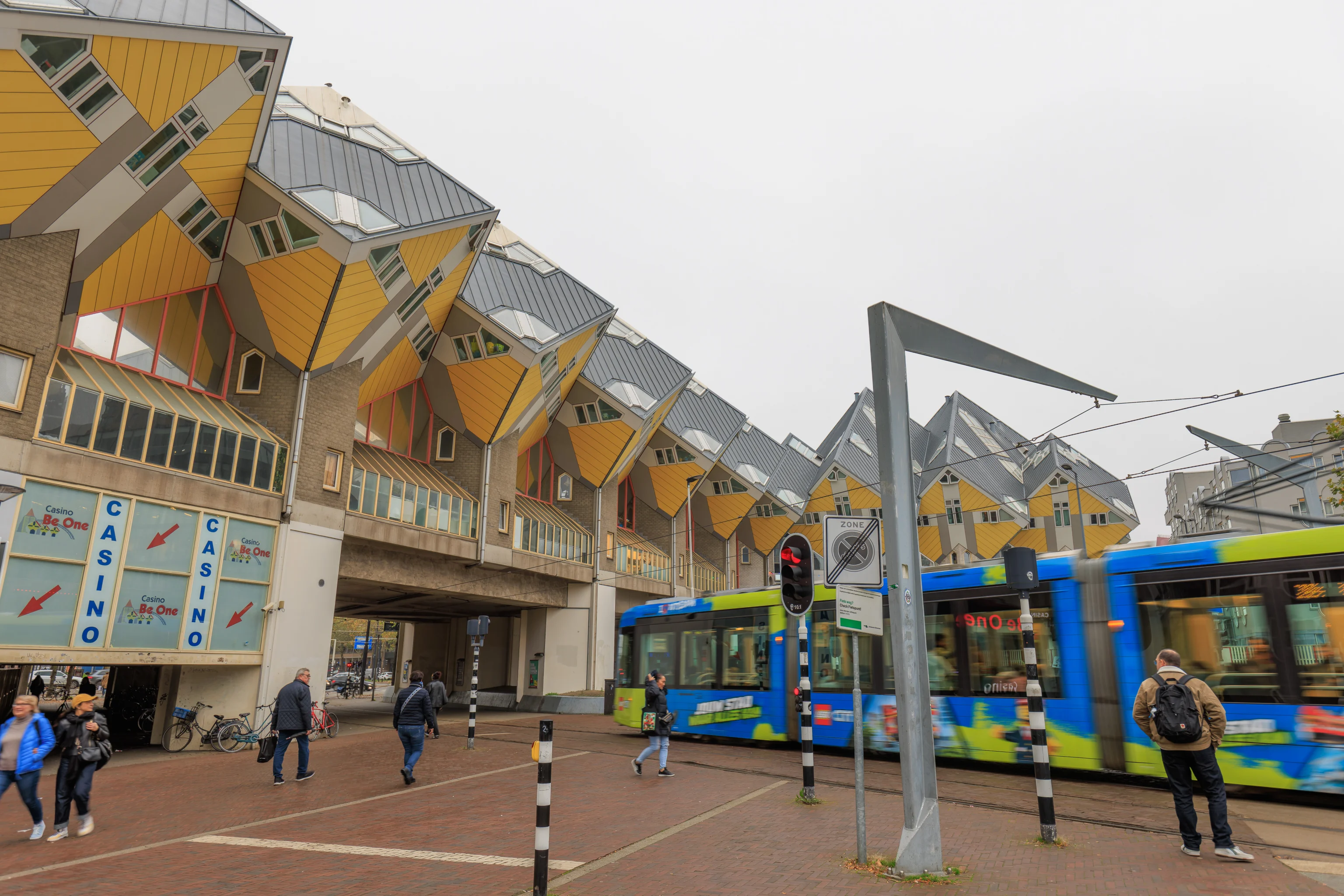
Before heading to the market, we decided to take a quick look at an interesting piece of architecture on the east side of the station.
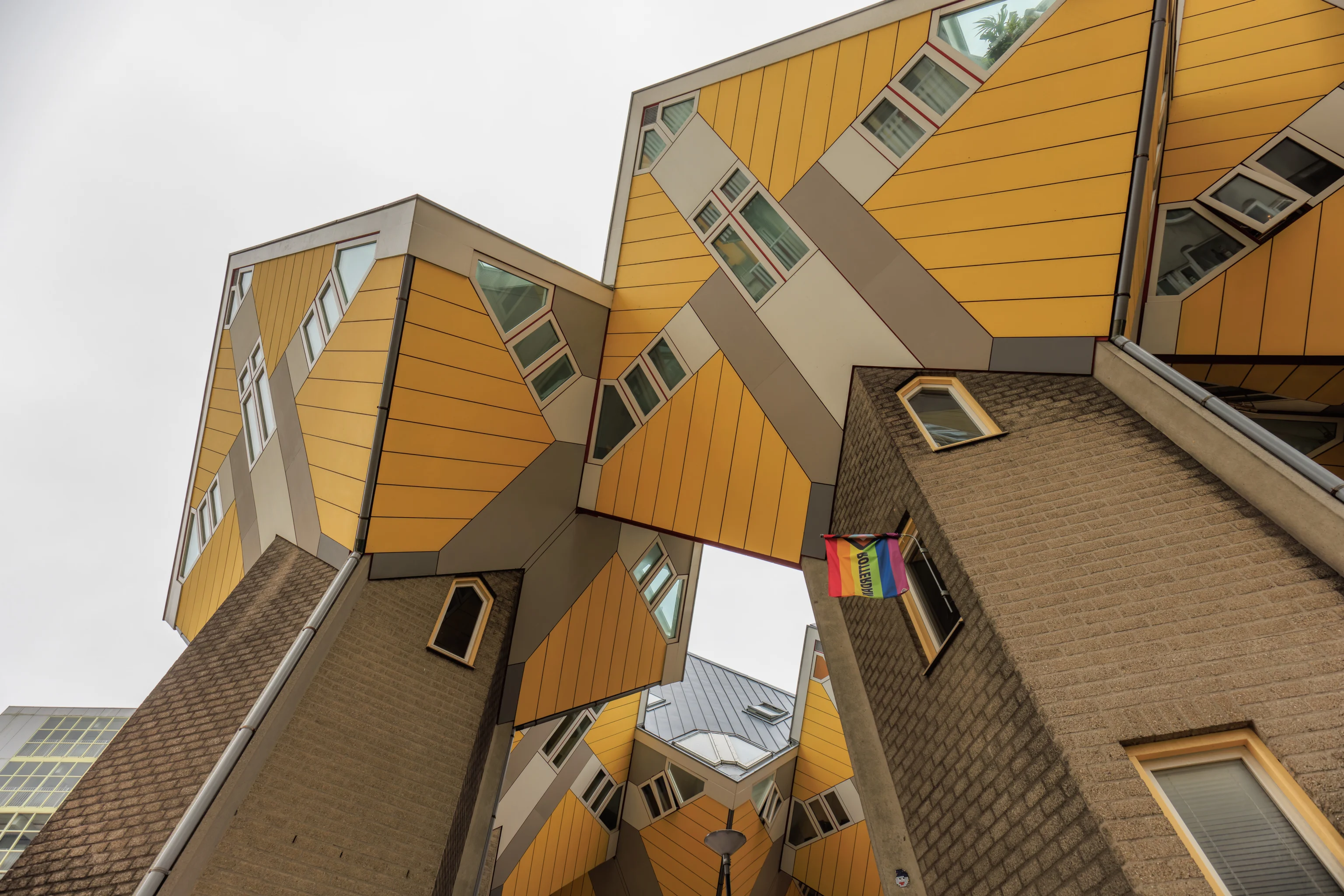
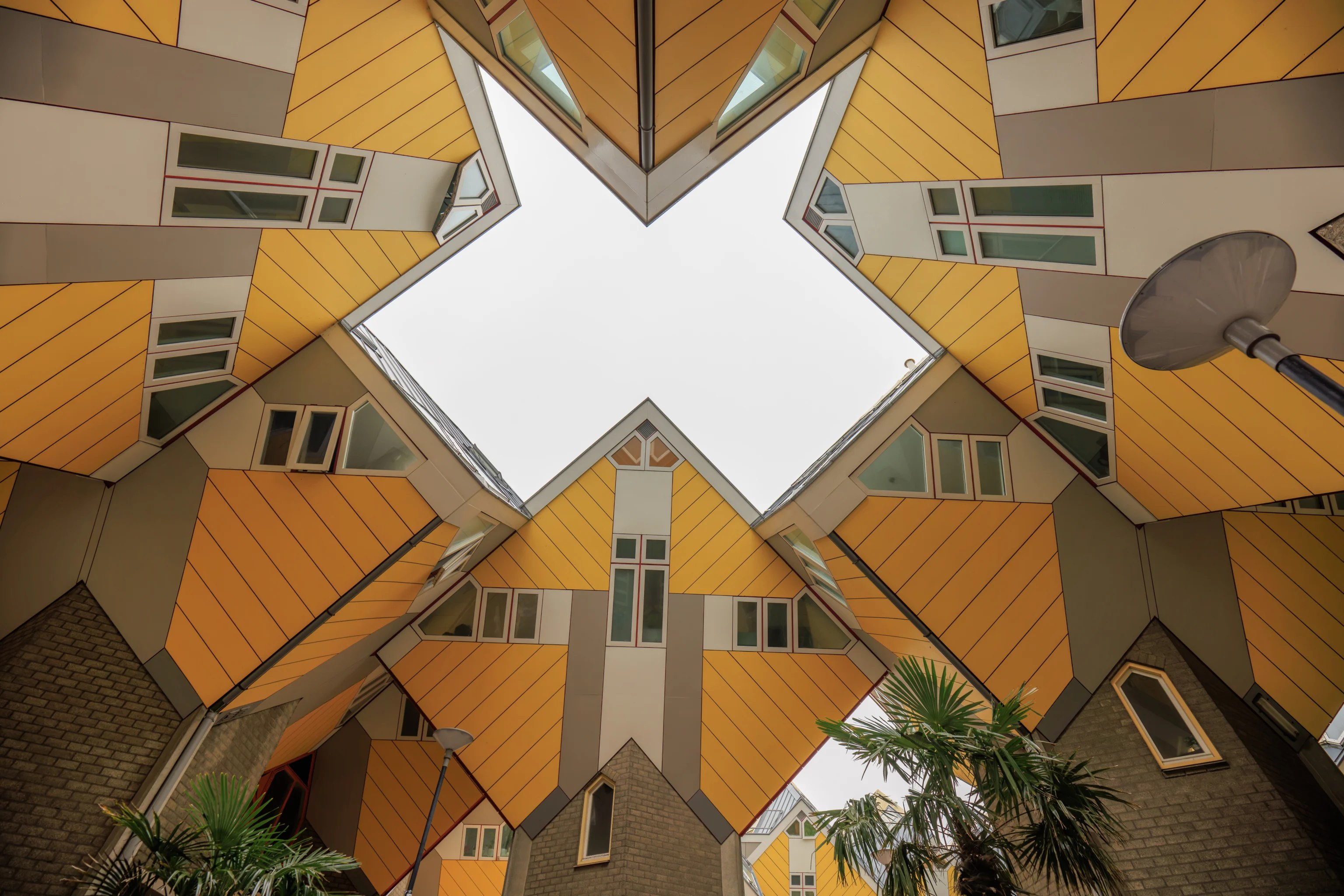
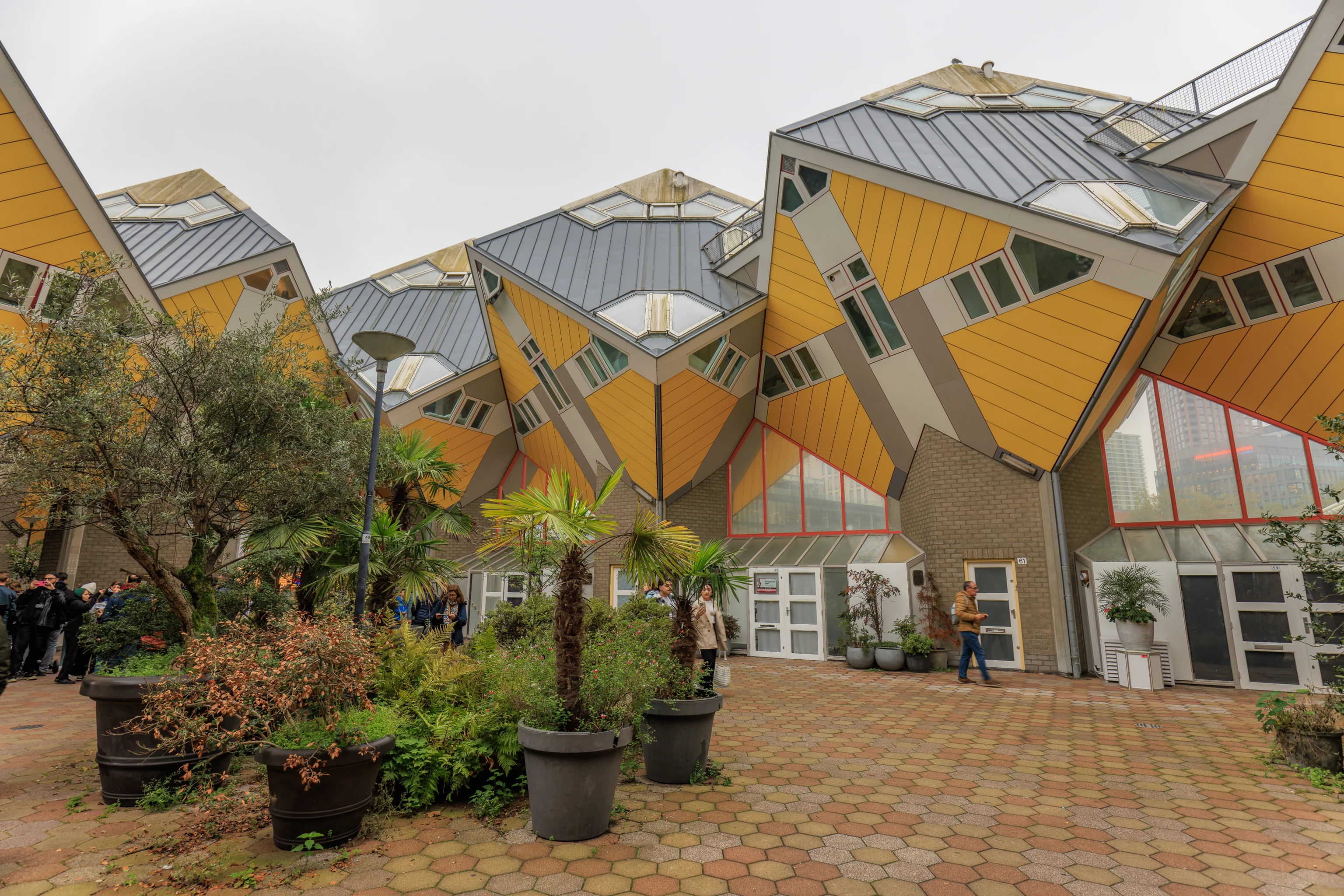
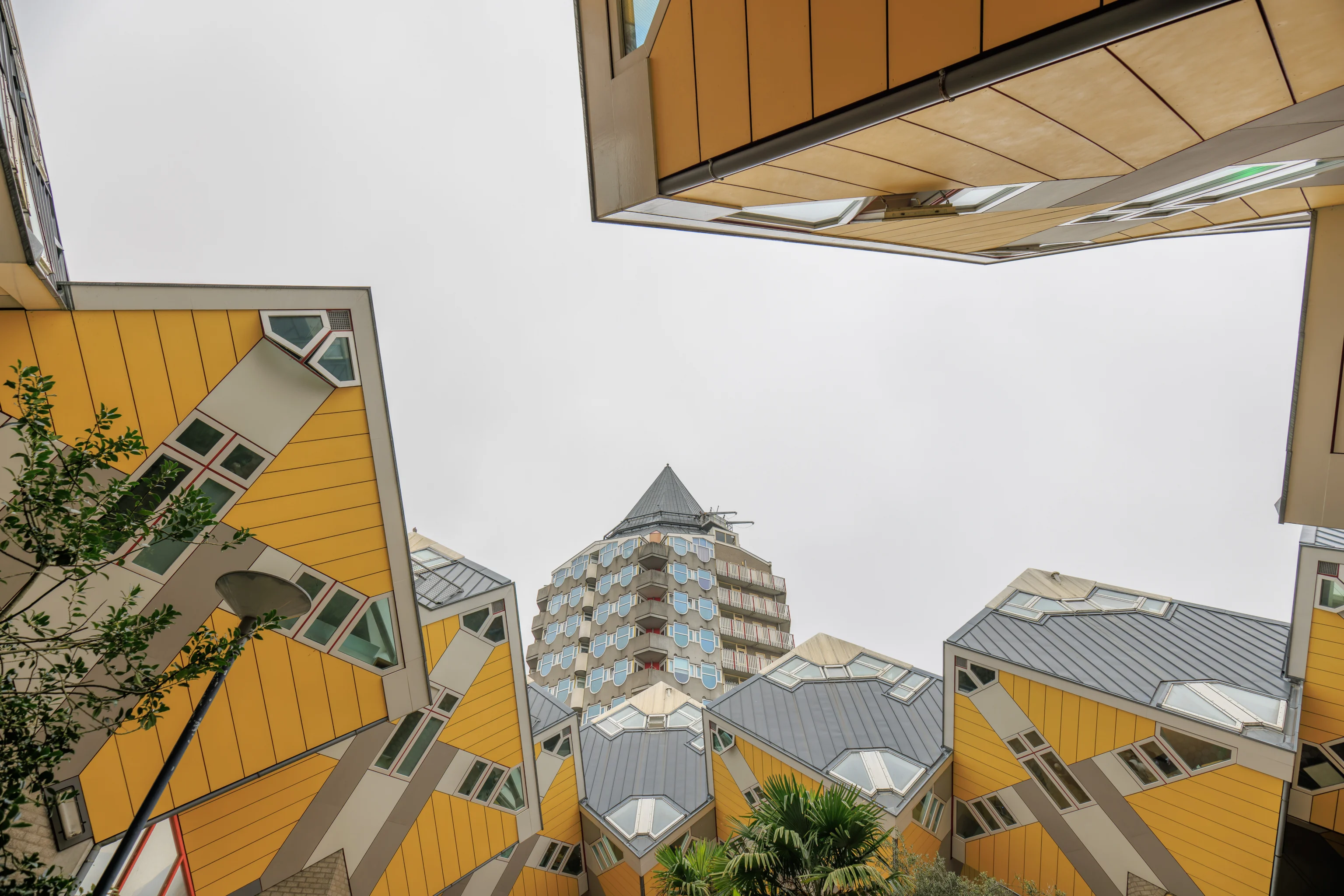
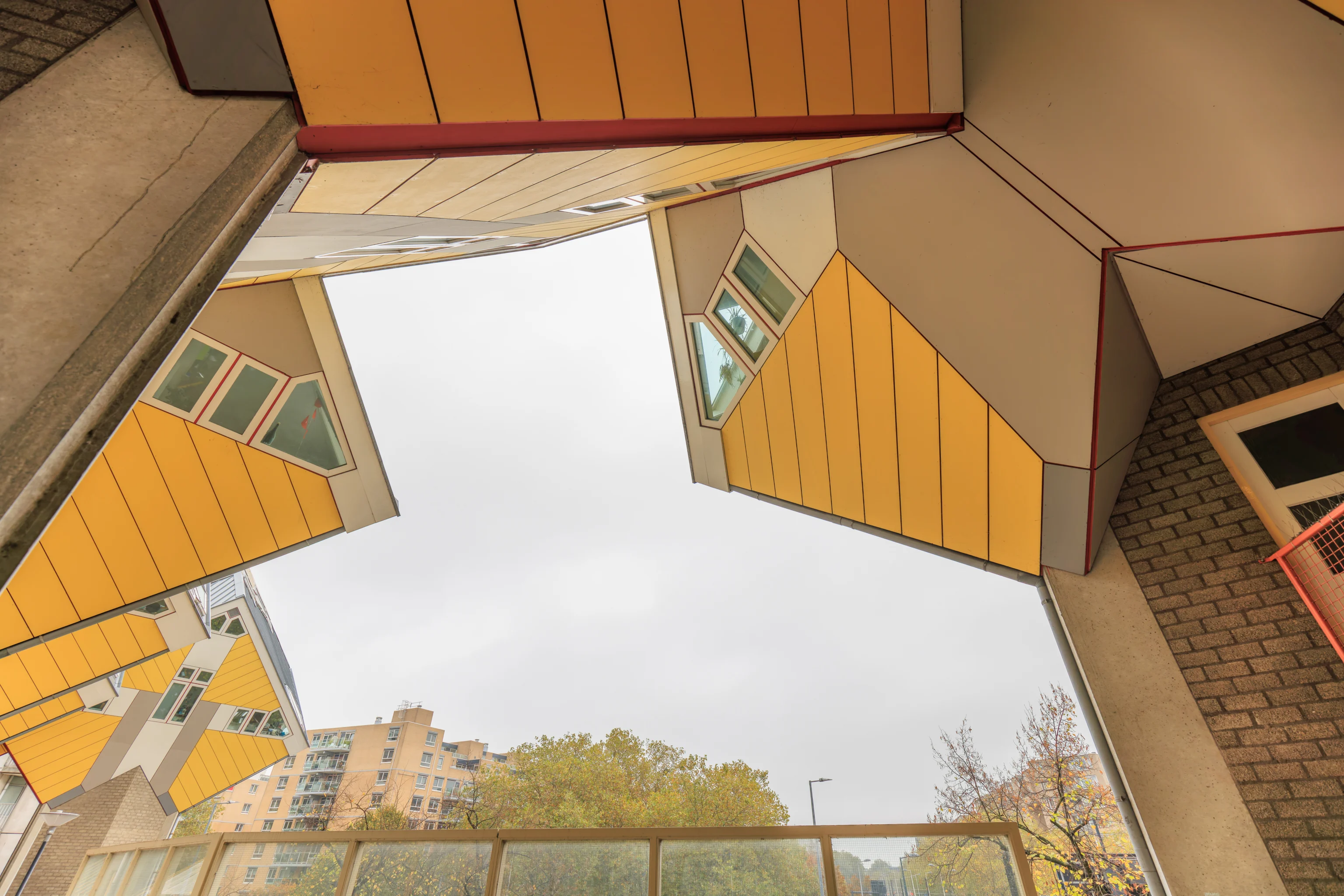
These odd cubes, installed at a 45 degree angle, are individual housing units! This development is referred to as Het Blaakse Bos (The Blaak Forest). The name comes from the architect, Piet Blom, viewing each individual house as a tree, thus making the entire complex a forest.
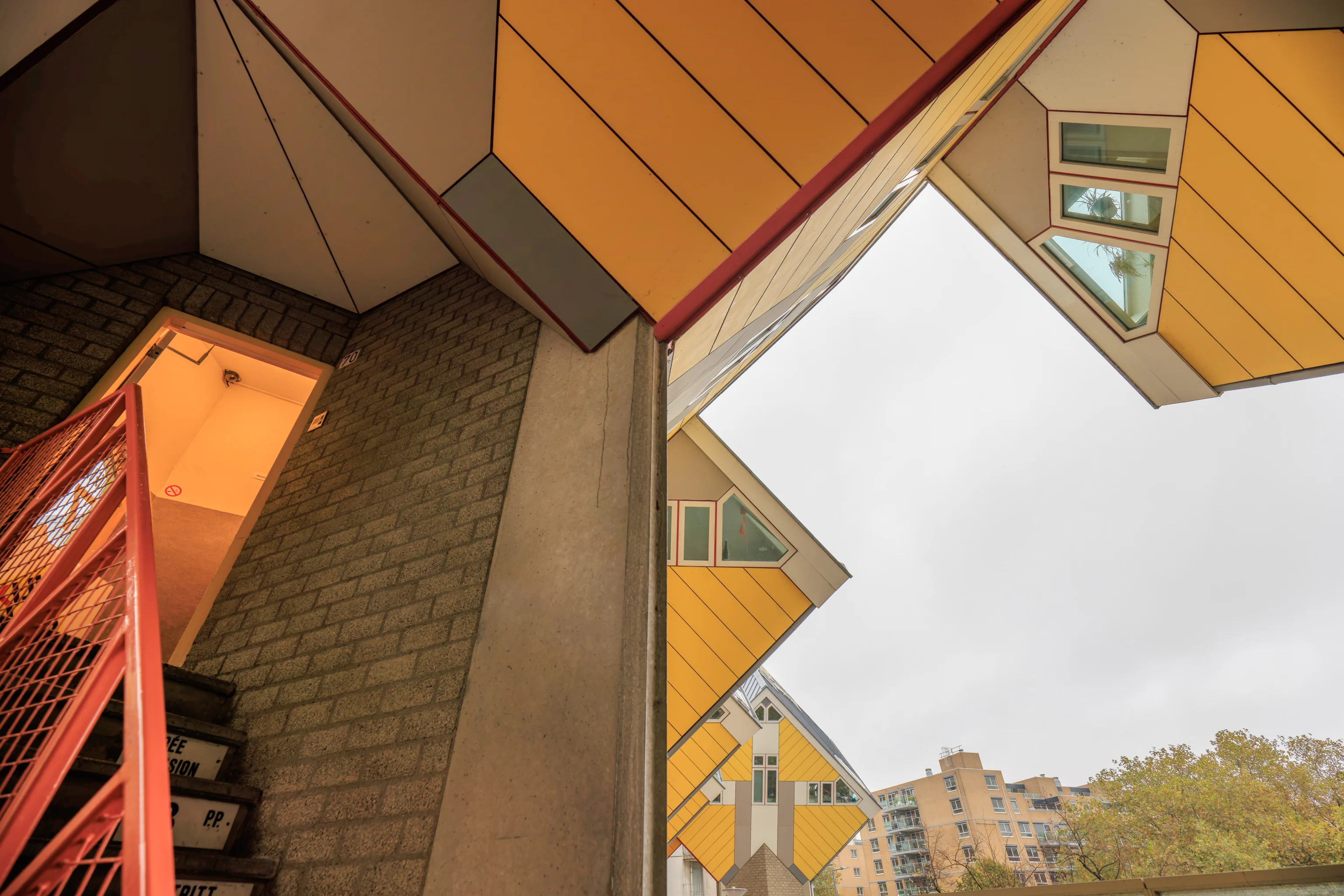
One of the cubes, the Kijk Kubus (Show Cube), has been converted into a museum. There was a lengthy queue to enter. They admit batches of people into the museum at a time. Once you enter, you can stay inside as long as you’d like. The stairs up, seen on the left, are pretty narrow. Entry is €3, paid inside by cash or card.
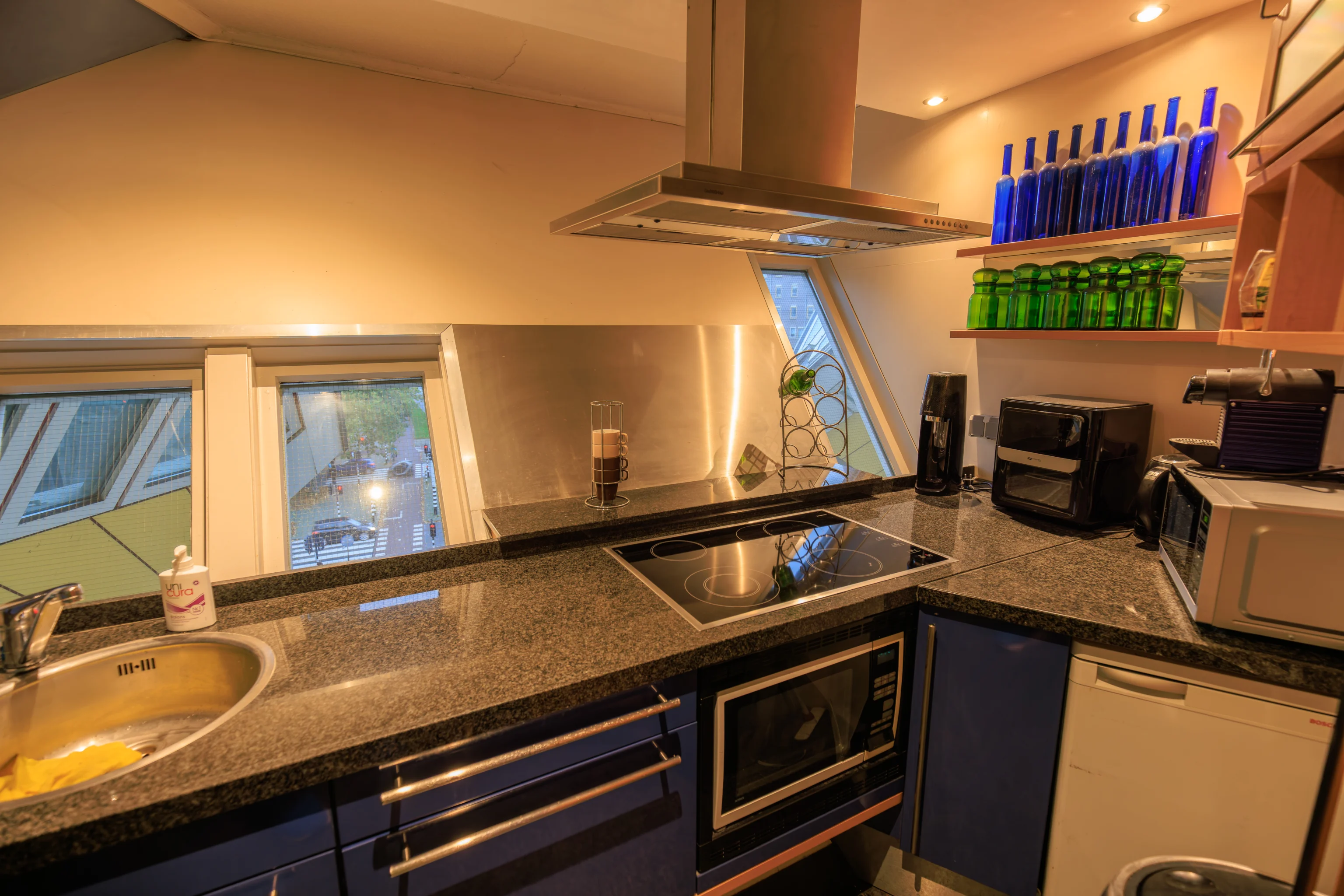
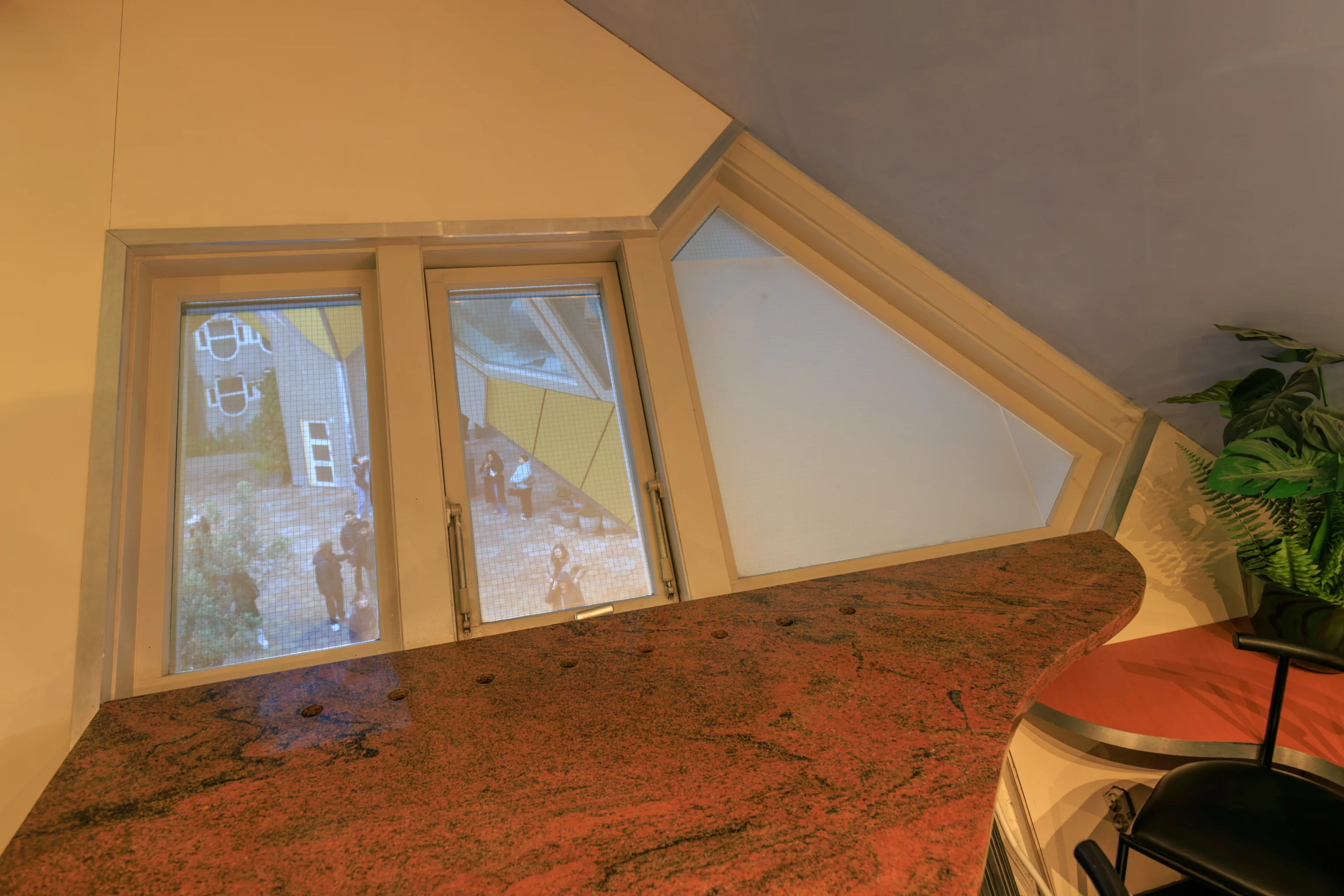
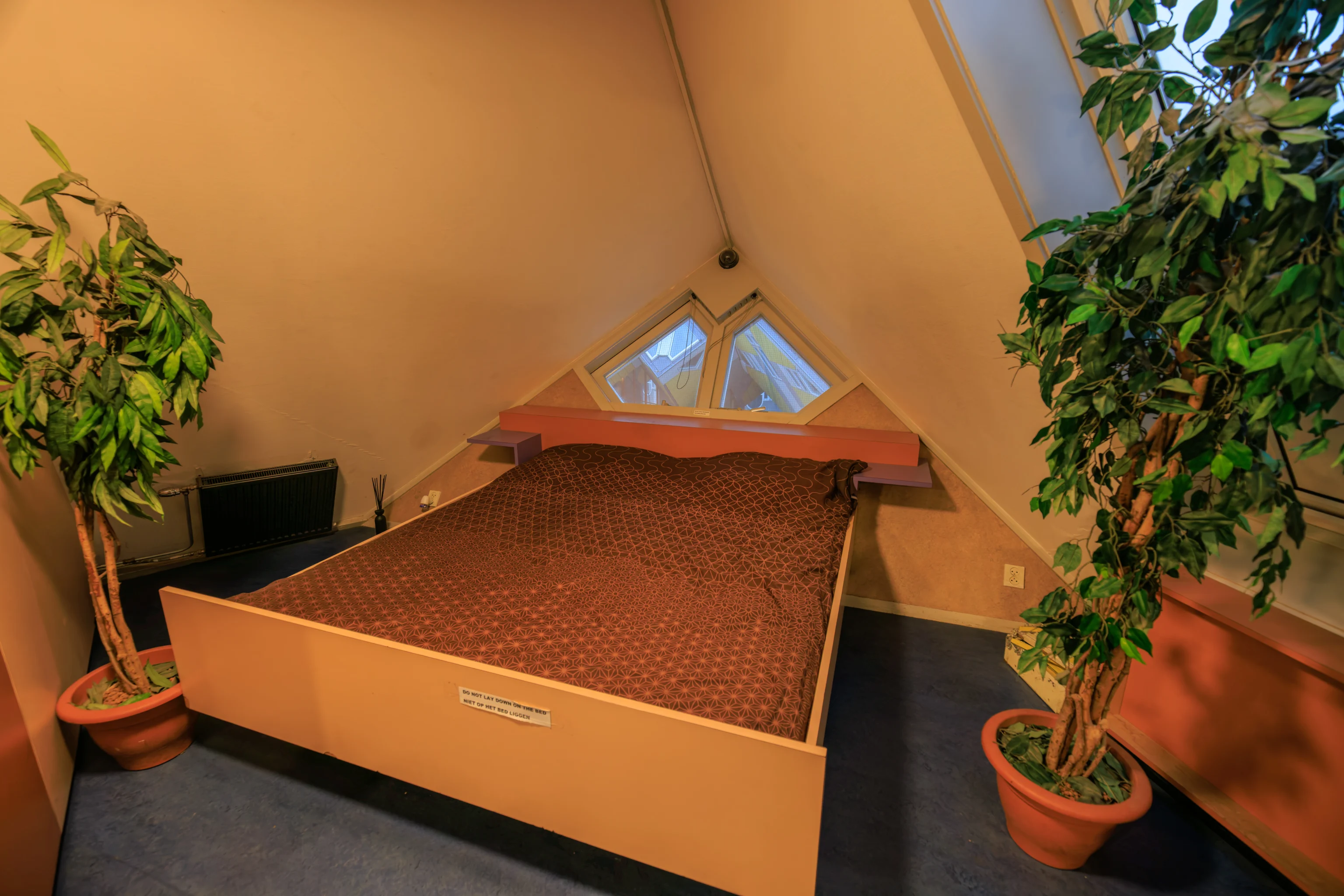
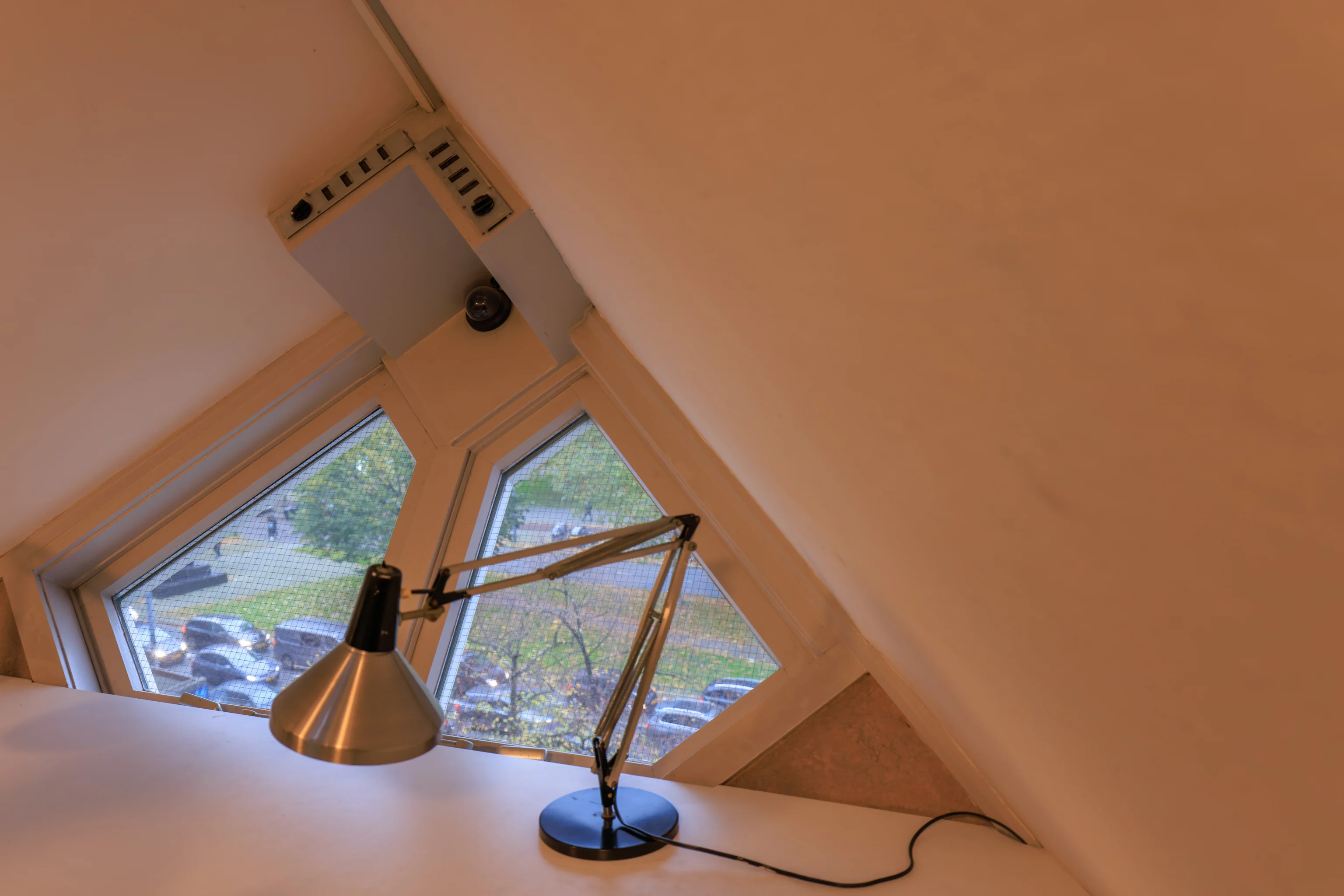
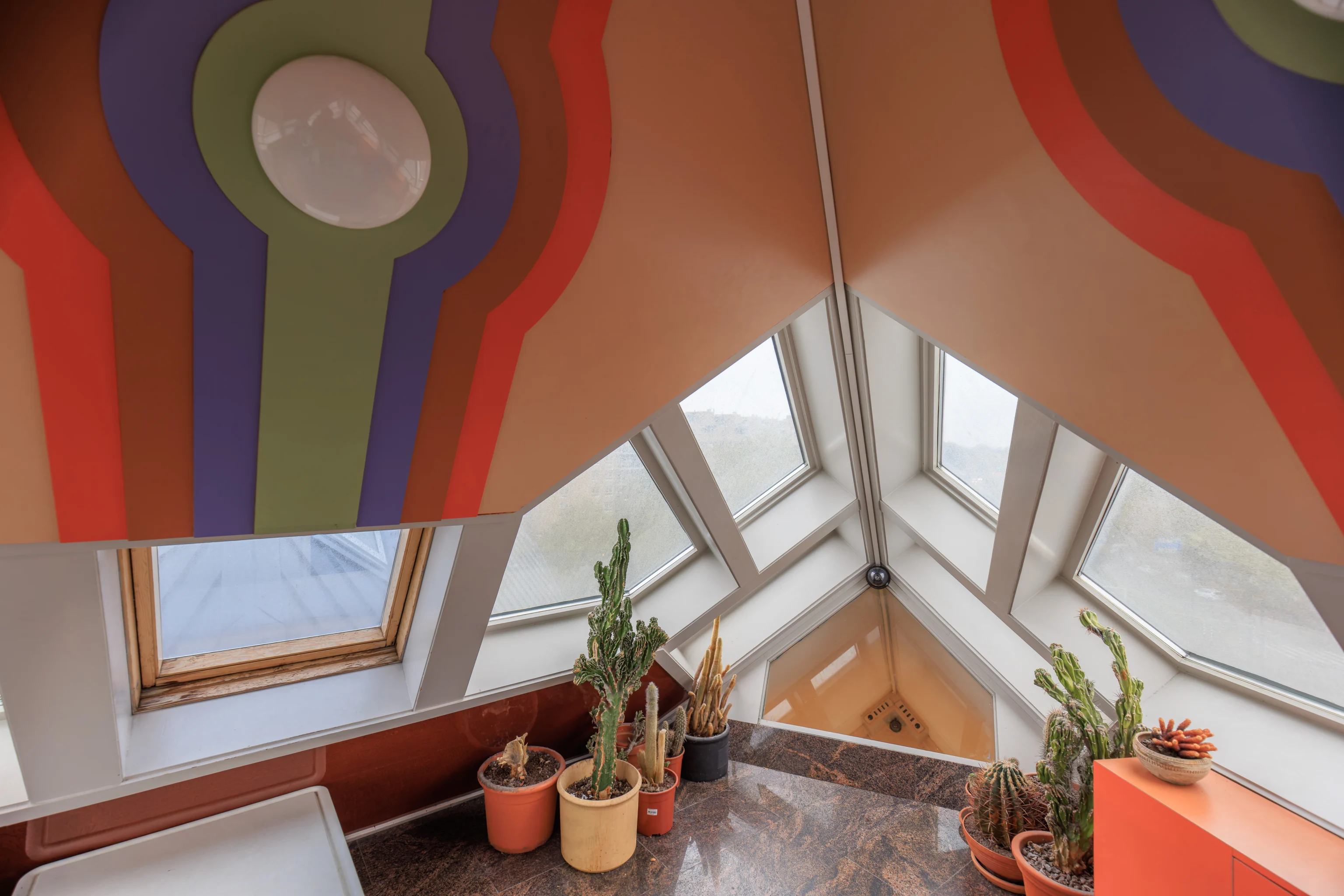
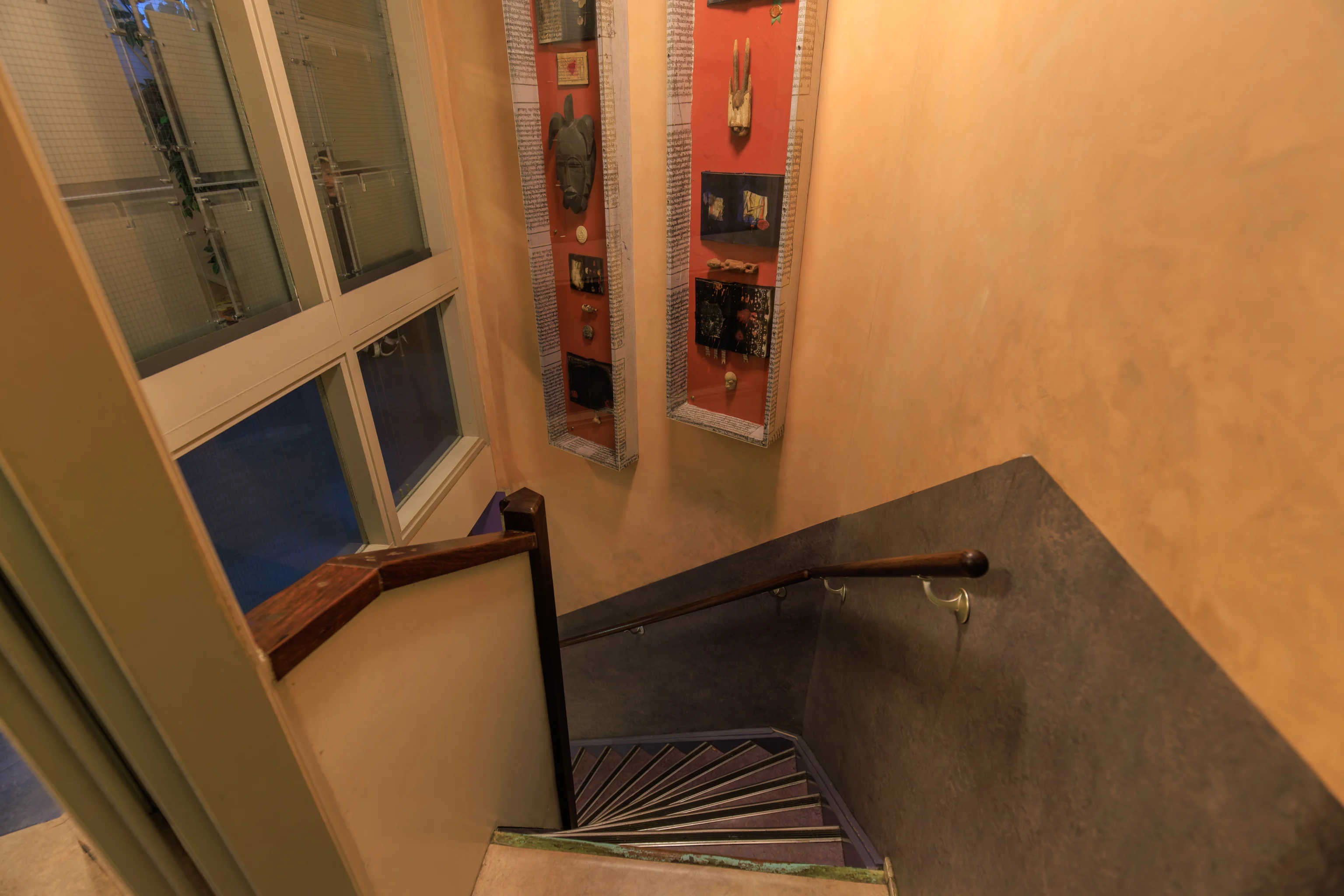
Each of the cubes has 3 floors, connected by narrow stairs. Each cube house has 100m² of floor space, or about 1,000 square feet. They are reasonably spacious but the angled walls take away from the usable space.
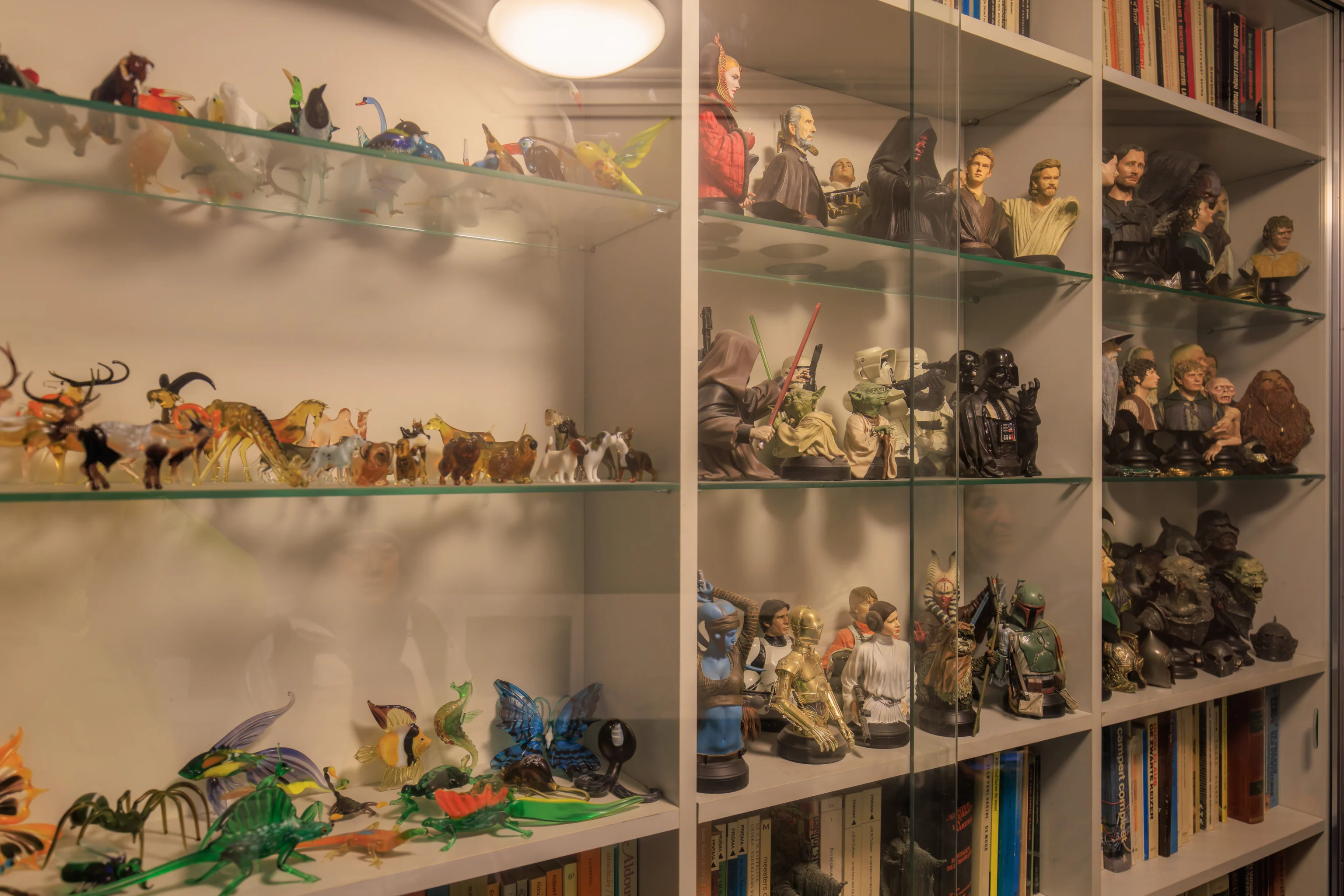
The cube house quite a collection of Star Wars and Lord of the Rings figurines! They’re actually more like busts, both armless and with arms.
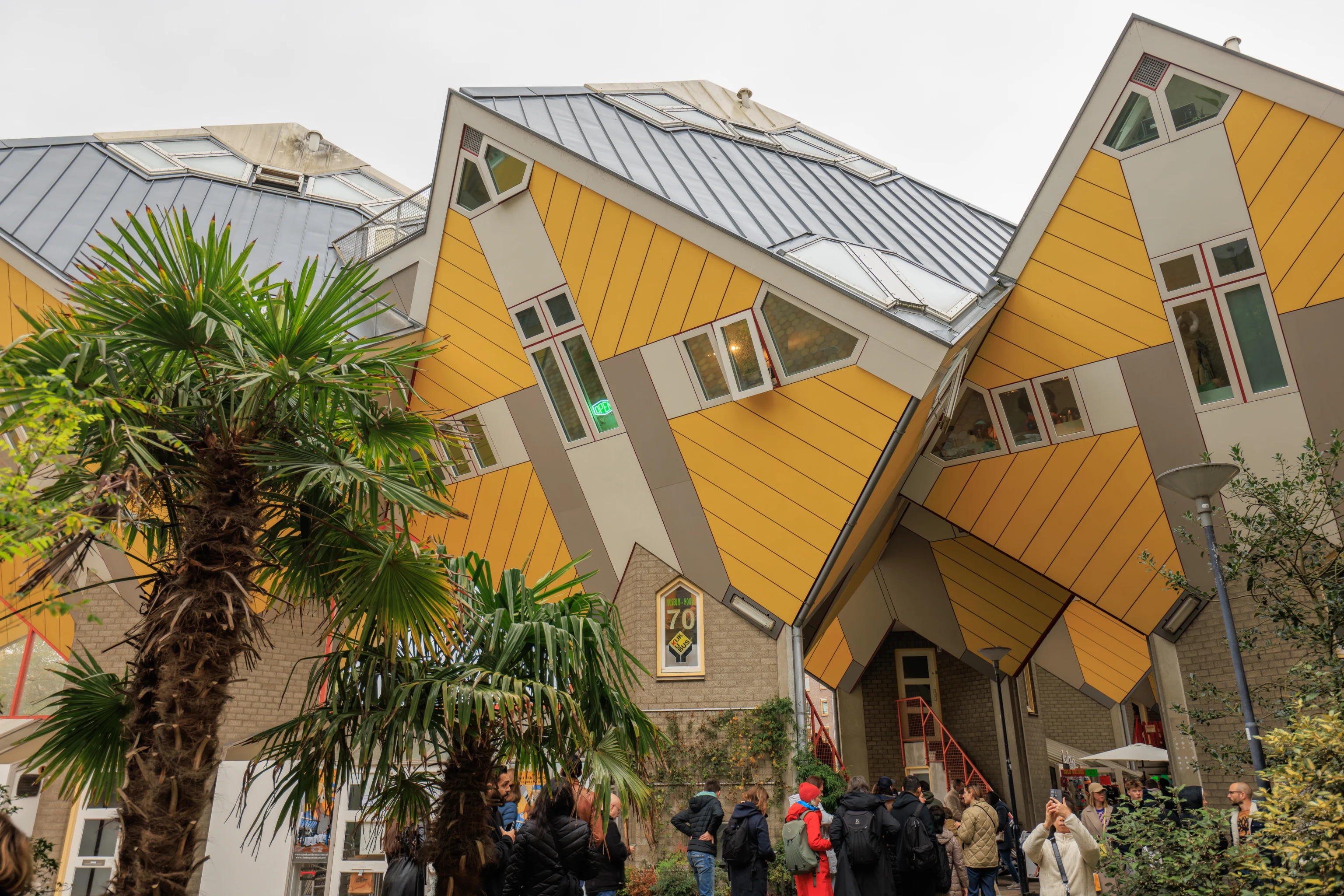
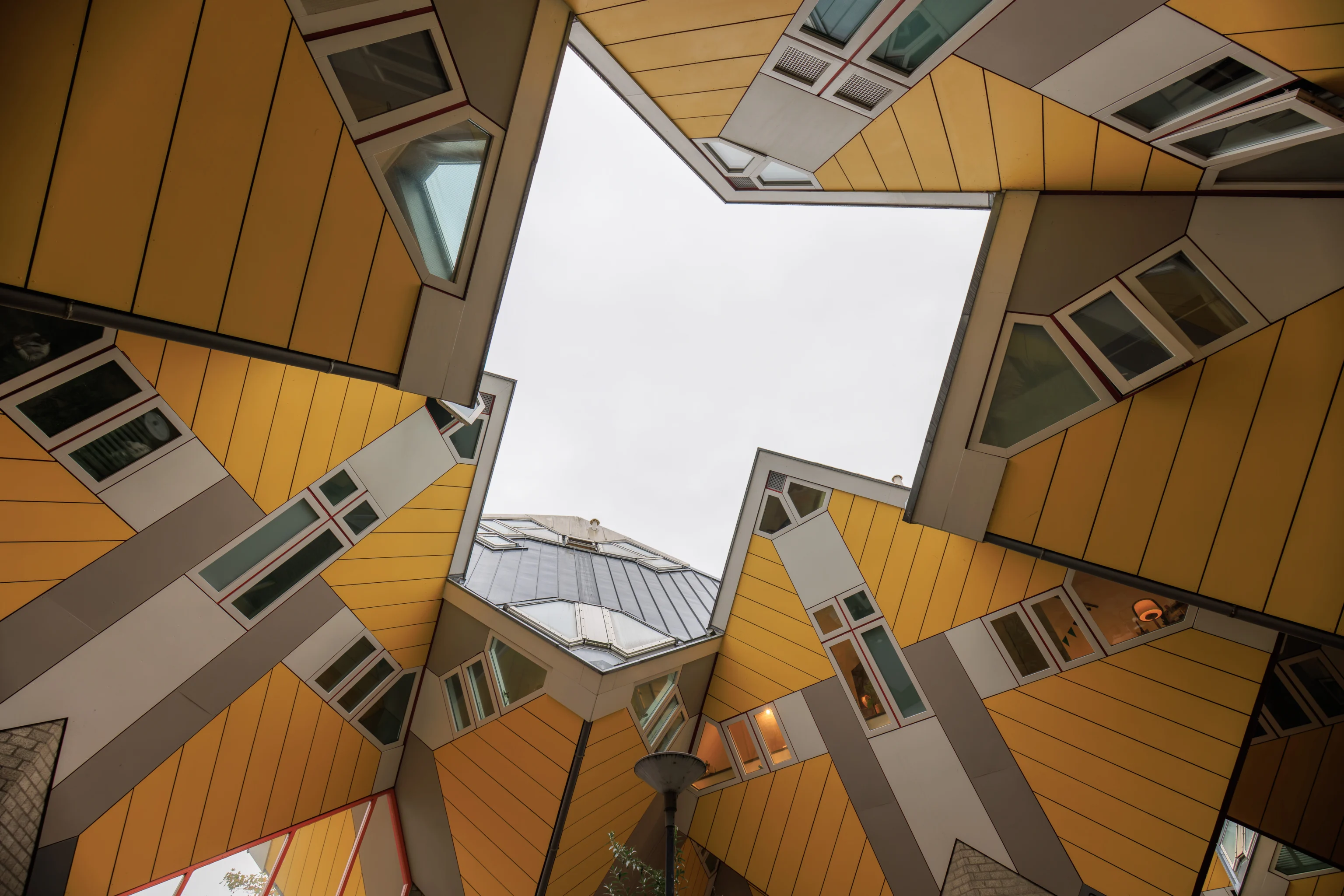
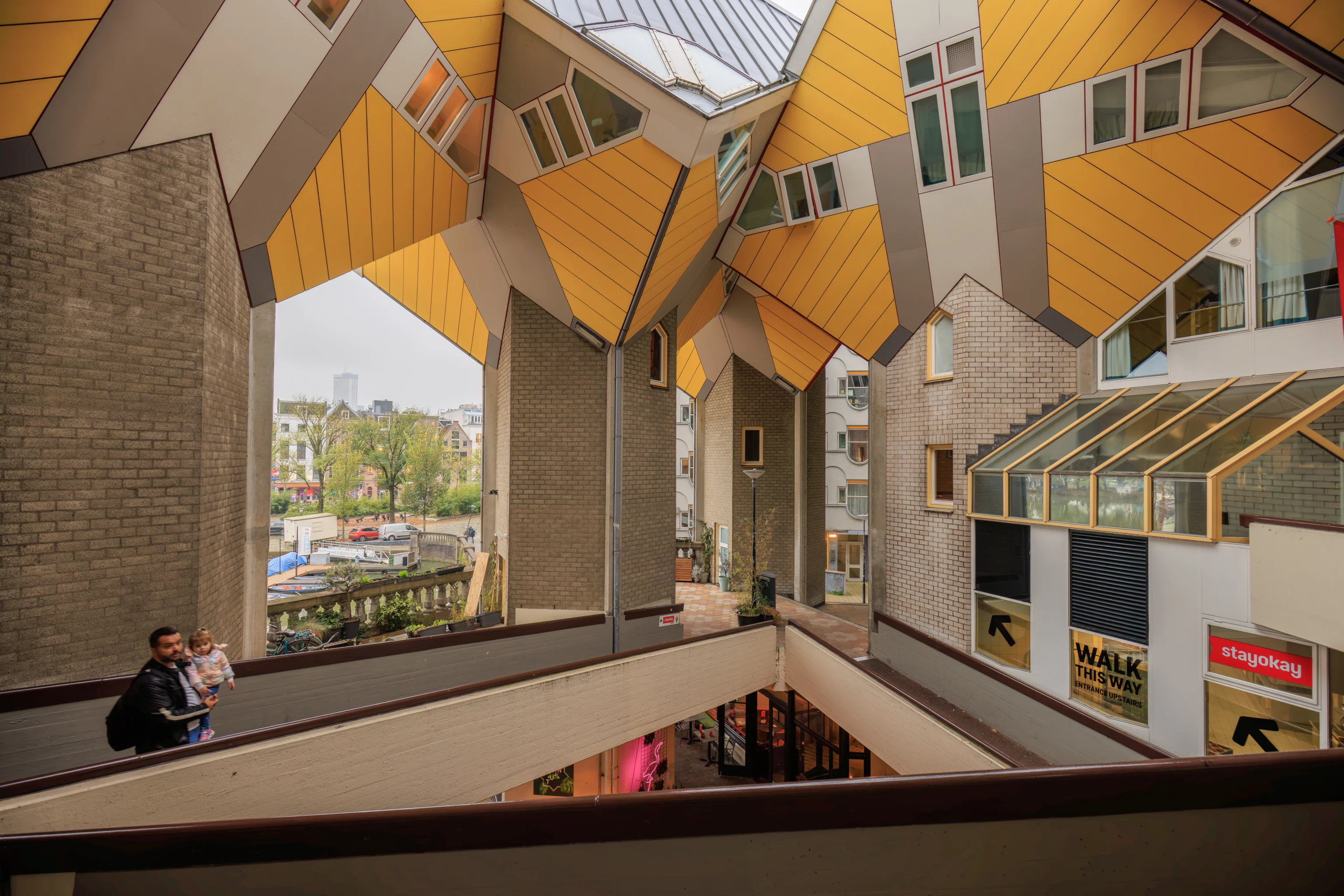
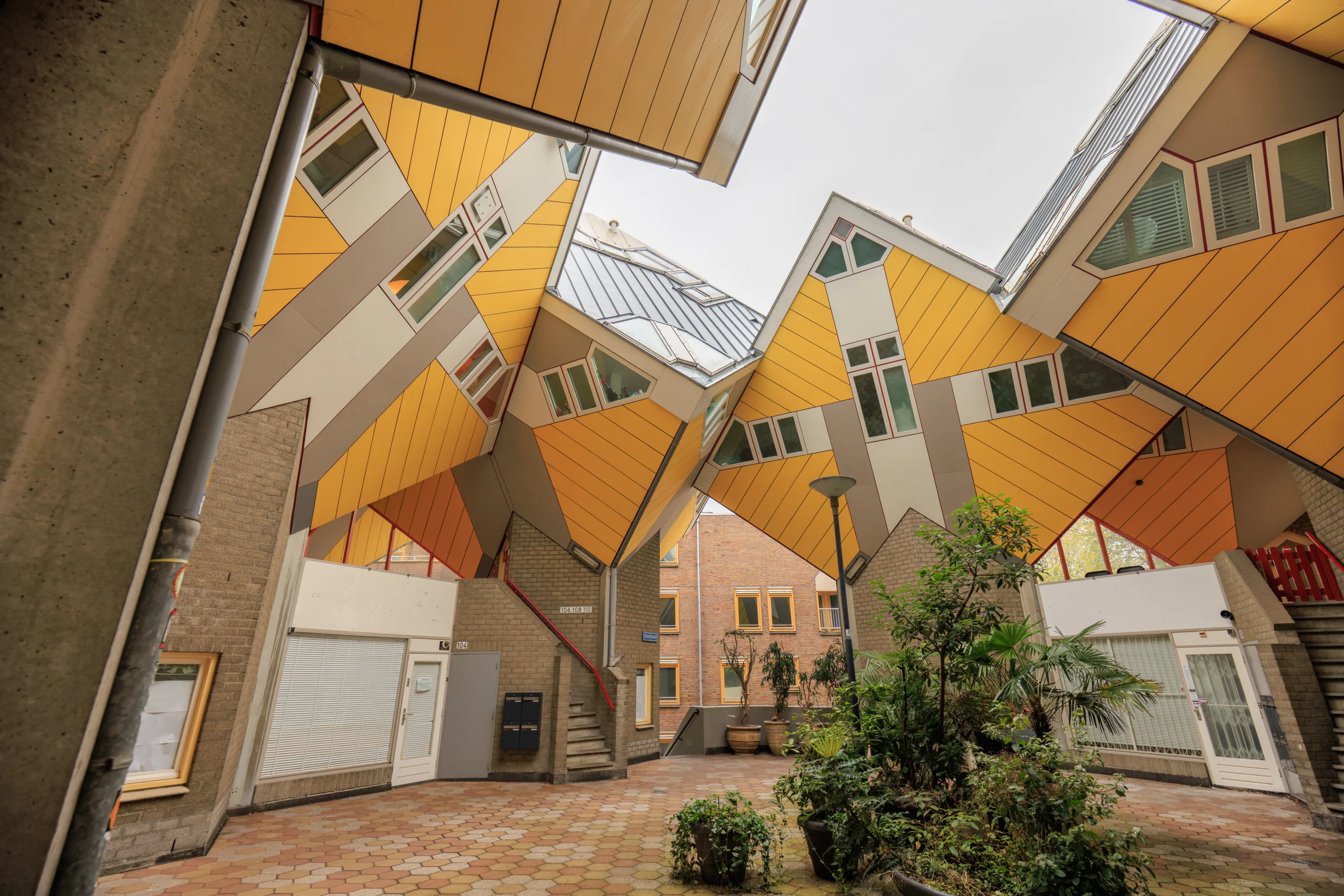
After exiting the cube house, we tried to find an alternate exit that would take us to the southeast side of the cubes.
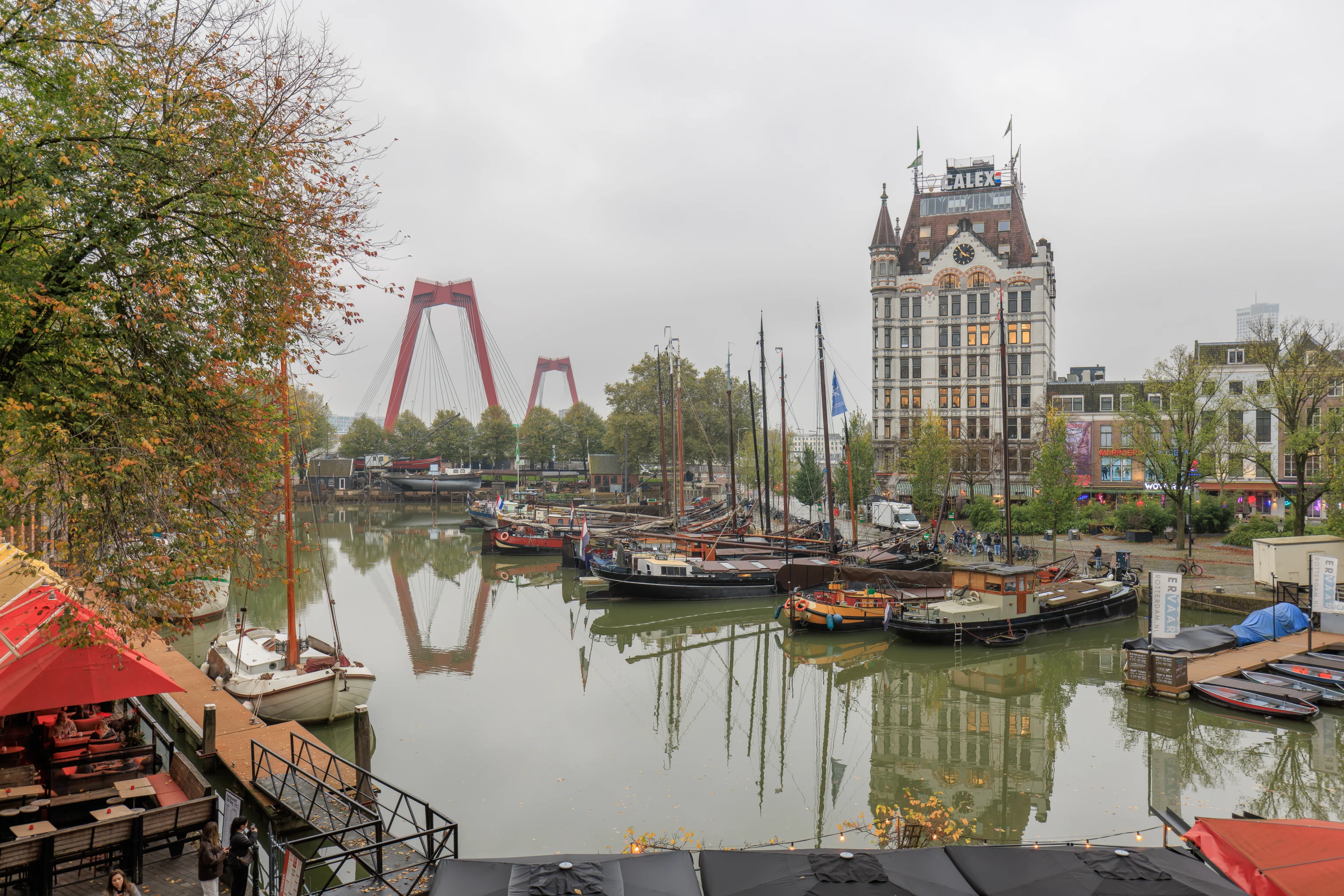
While trying to find the way down to ground level, we came across this view to the southeast. The bridge in the background is the Willemsbrug, which we passed under this morning while on the ferry. The tall building on the right is the Witte Huis (White House), the first high-rise building in Europe. It is 141 feet tall with only 10 floors and was built in 1898.
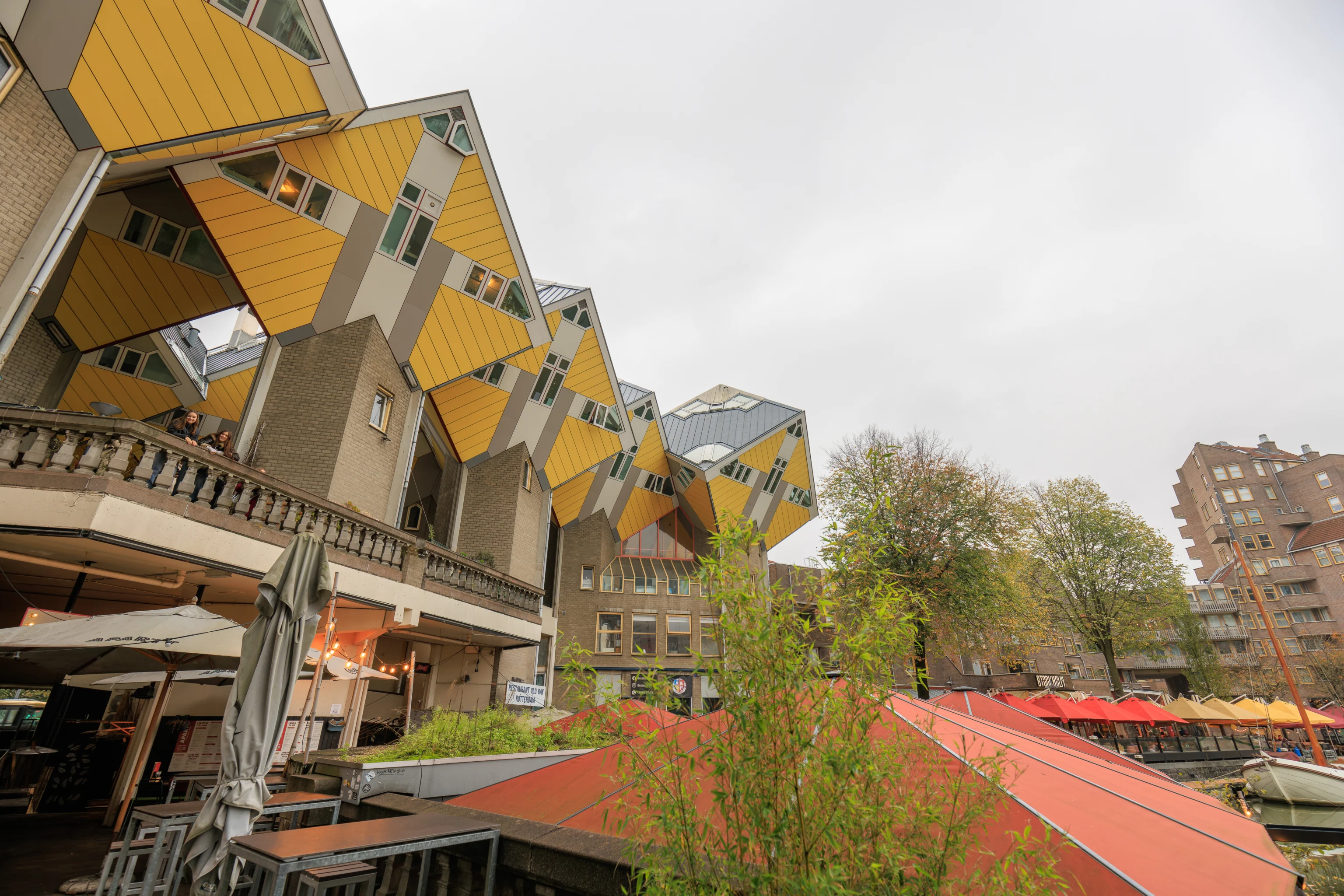
We decided to try a nearby restaurant near the cubes, only to find out it wasn’t open. So, we backtracked a bit.
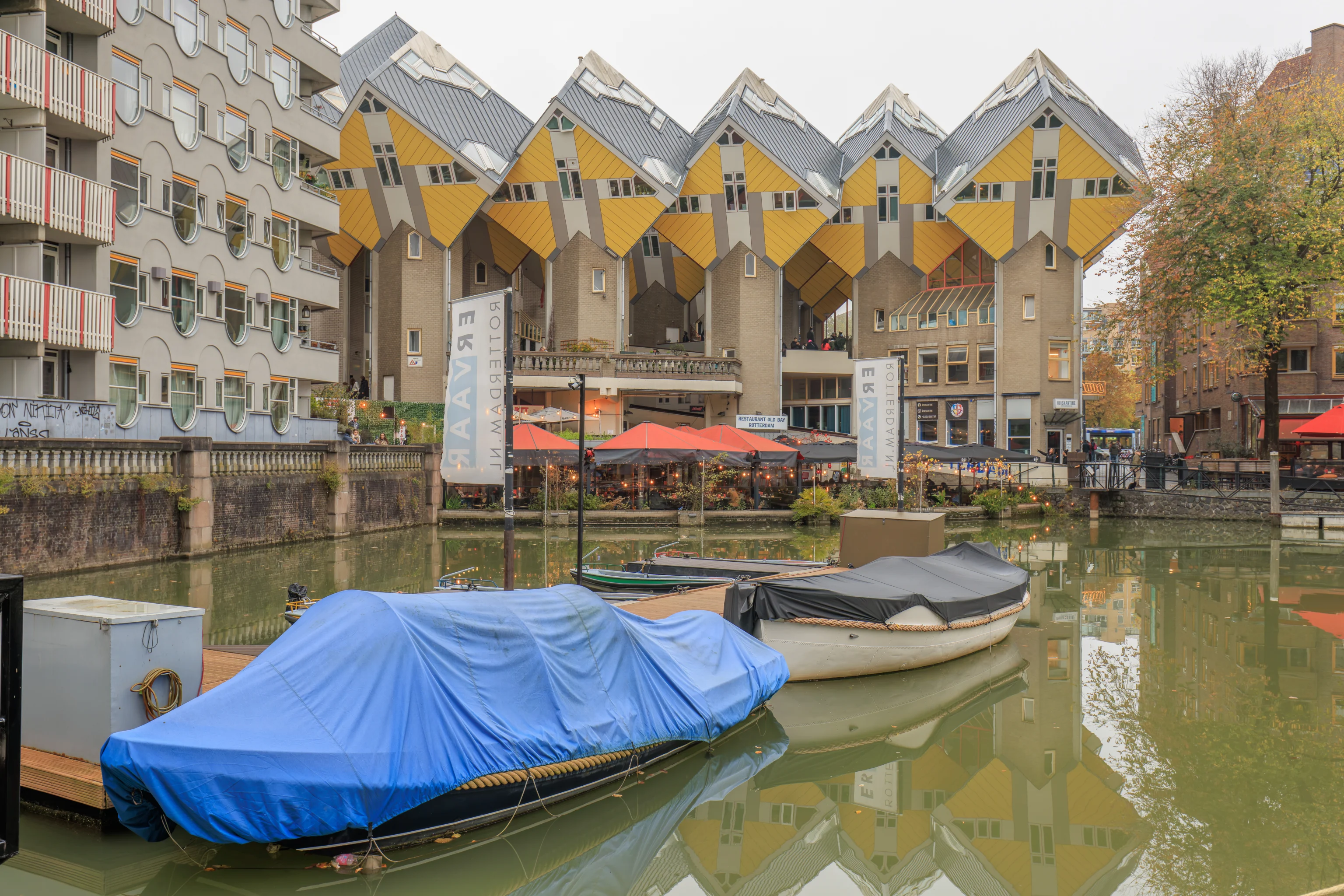
We walked through a small marina area to the southeast of the cubes.
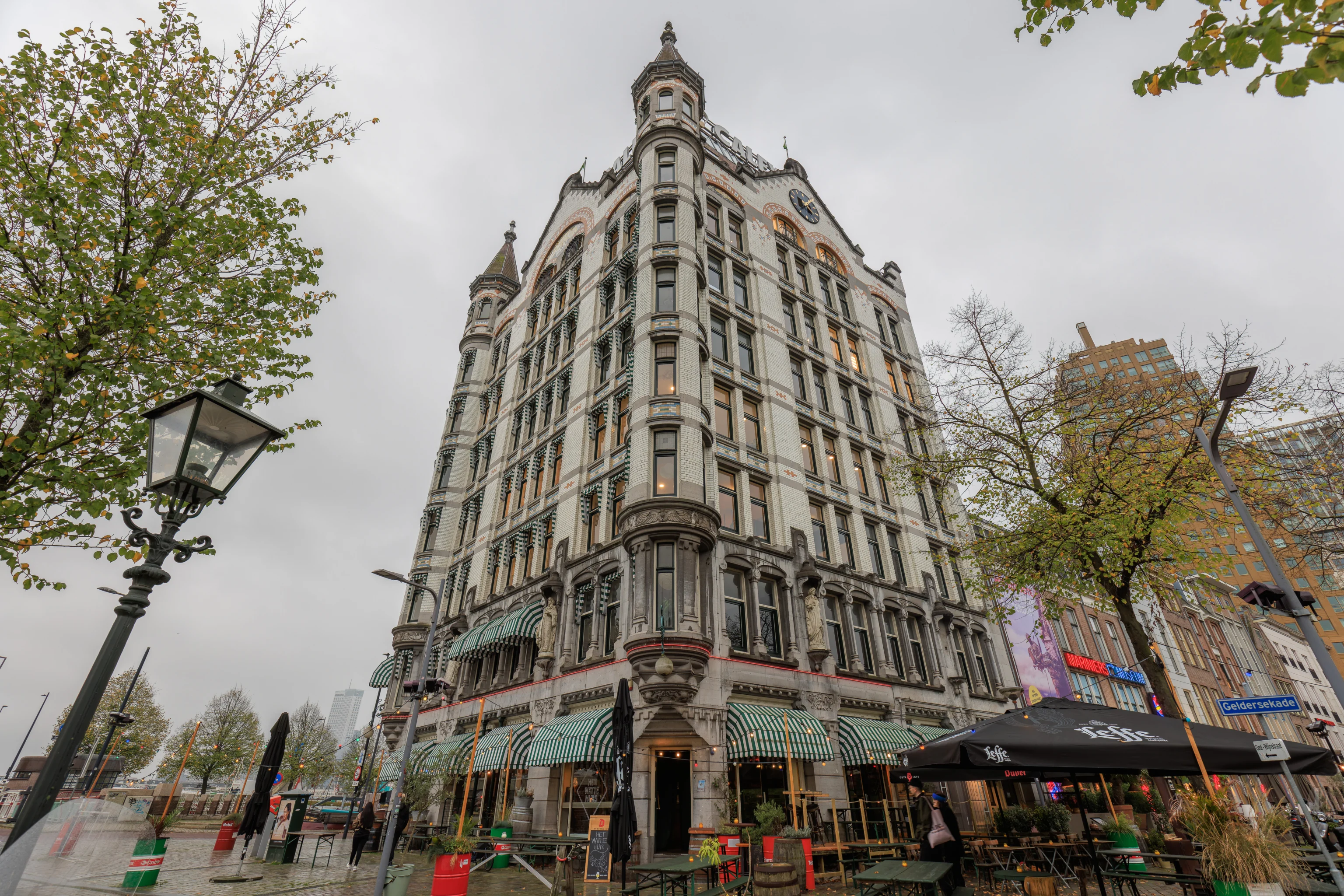
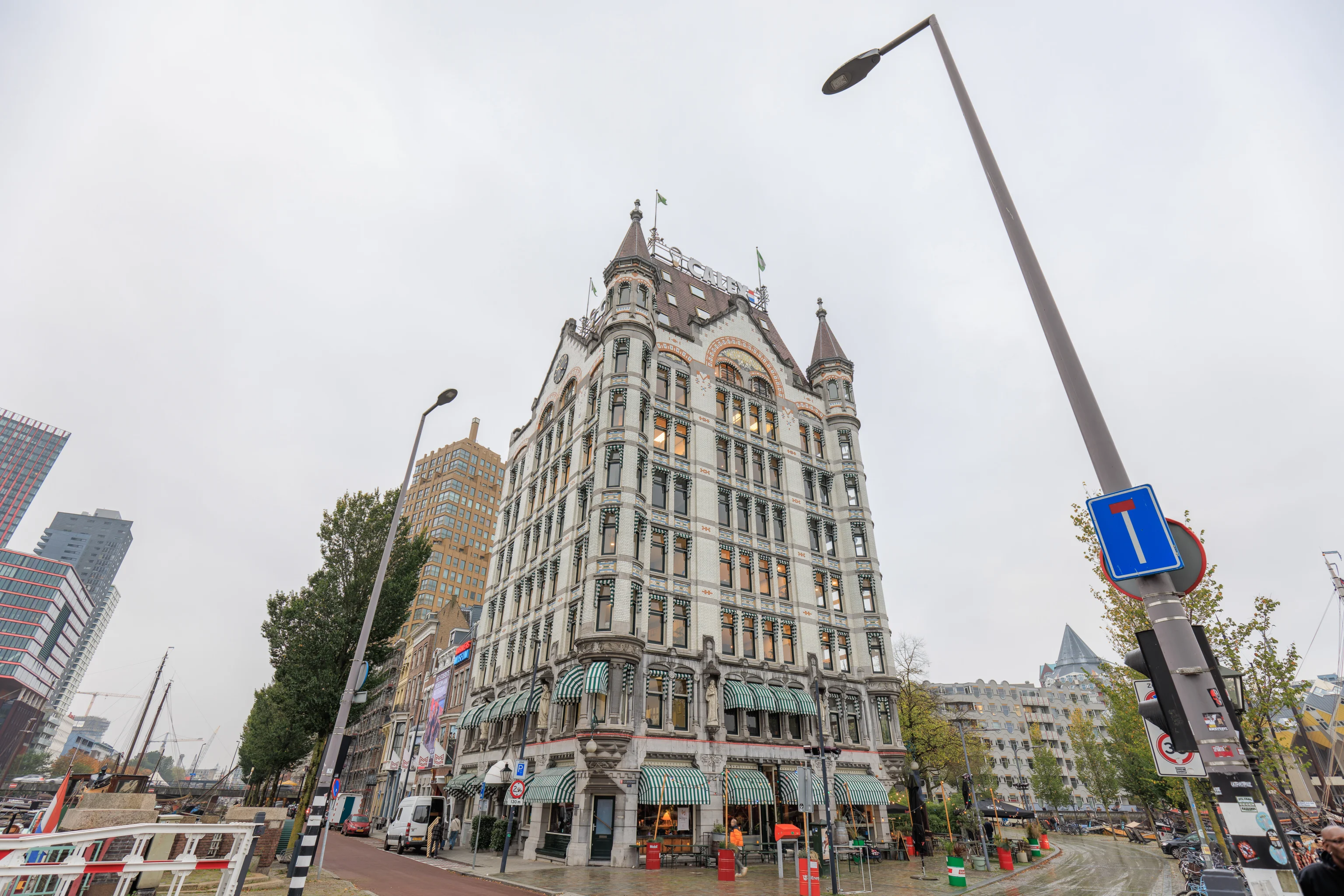
We went to the White House to take a closer look. There is quite a bit of detail in the building’s exterior.
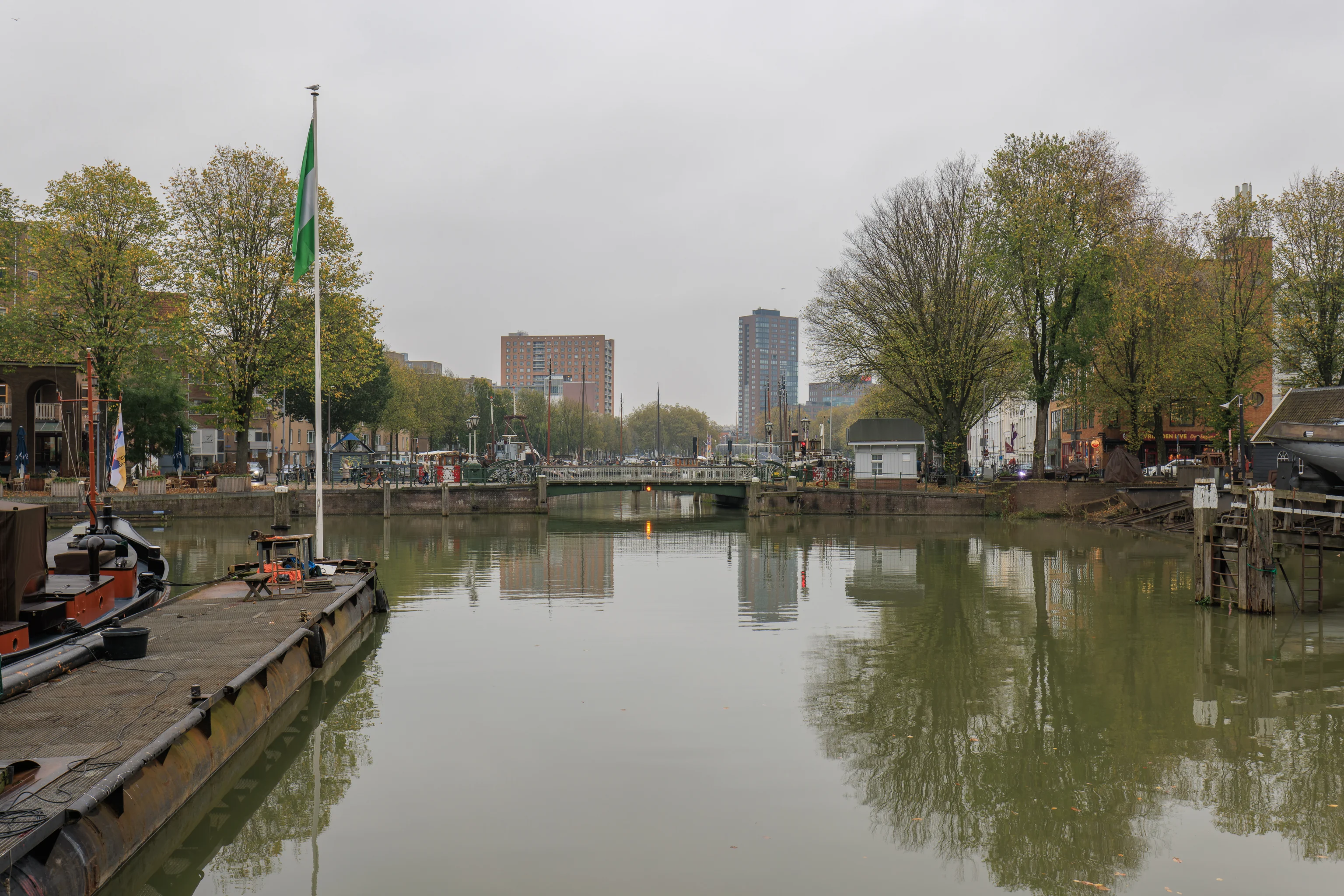
This canal more or less runs parallel to the Nieuwe Maas.
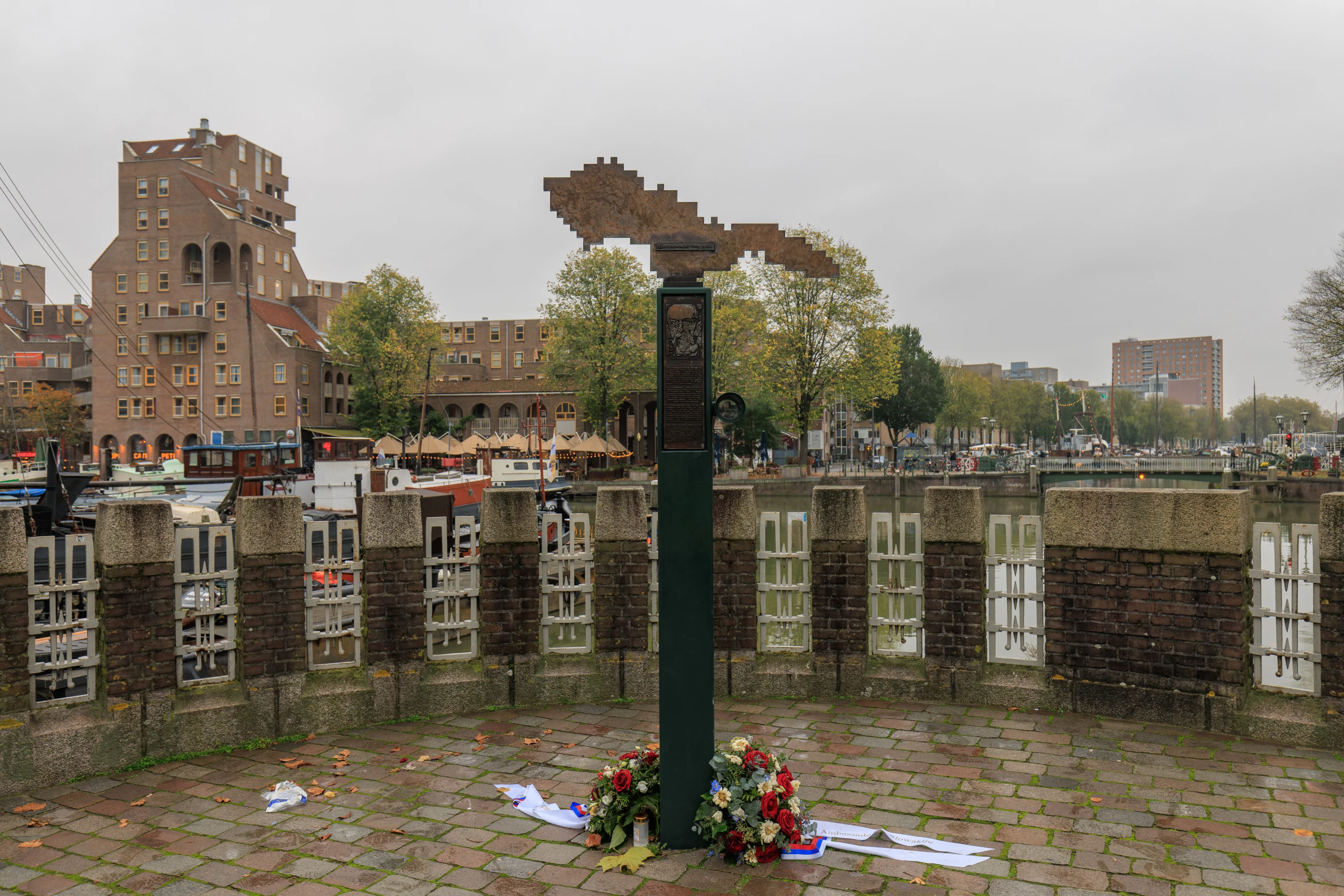
This monument got our attention as it looks kind of like pixel art. English text on the column reads:
Hotel Weimar was situated opposite from here until it was destroyed during the bombing in 1940. From this hotel philosopher and politician T.G. Masaryk passed his vision of Central Europe to the Allies in October 1914. Masaryk's ideas proved to be of prophetic significance. Czechoslovakia was founded after the First World War. T.G. Masaryk was the first president of the new republic from 1918-1395.
The pixel art looks like it is the shape of the former Czechoslovakia. It was created by Hans Citroen in 2015 and is named TG Masaryk and Rotterdam.
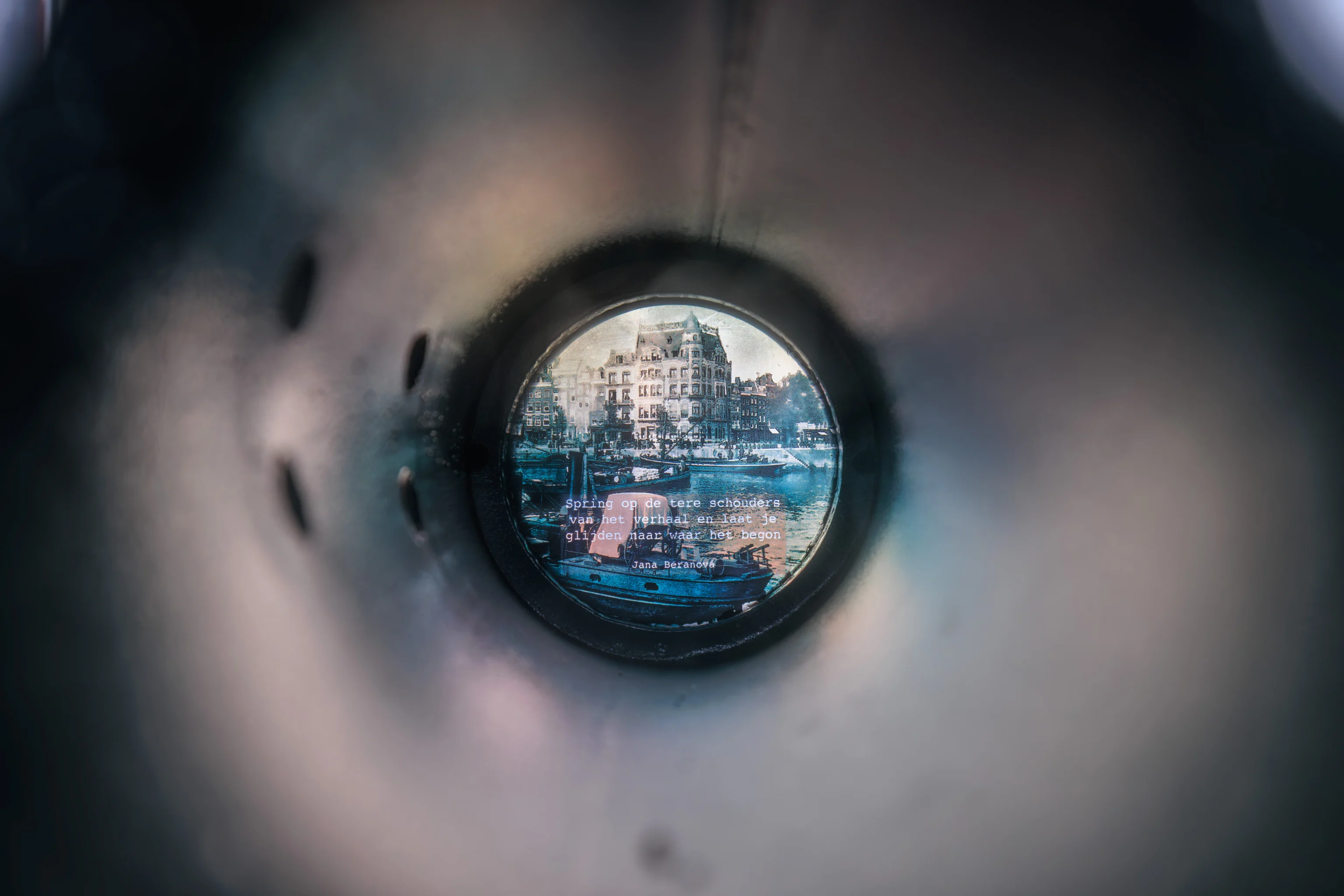
Presumably, this is what the Hotel Weimar looked like.
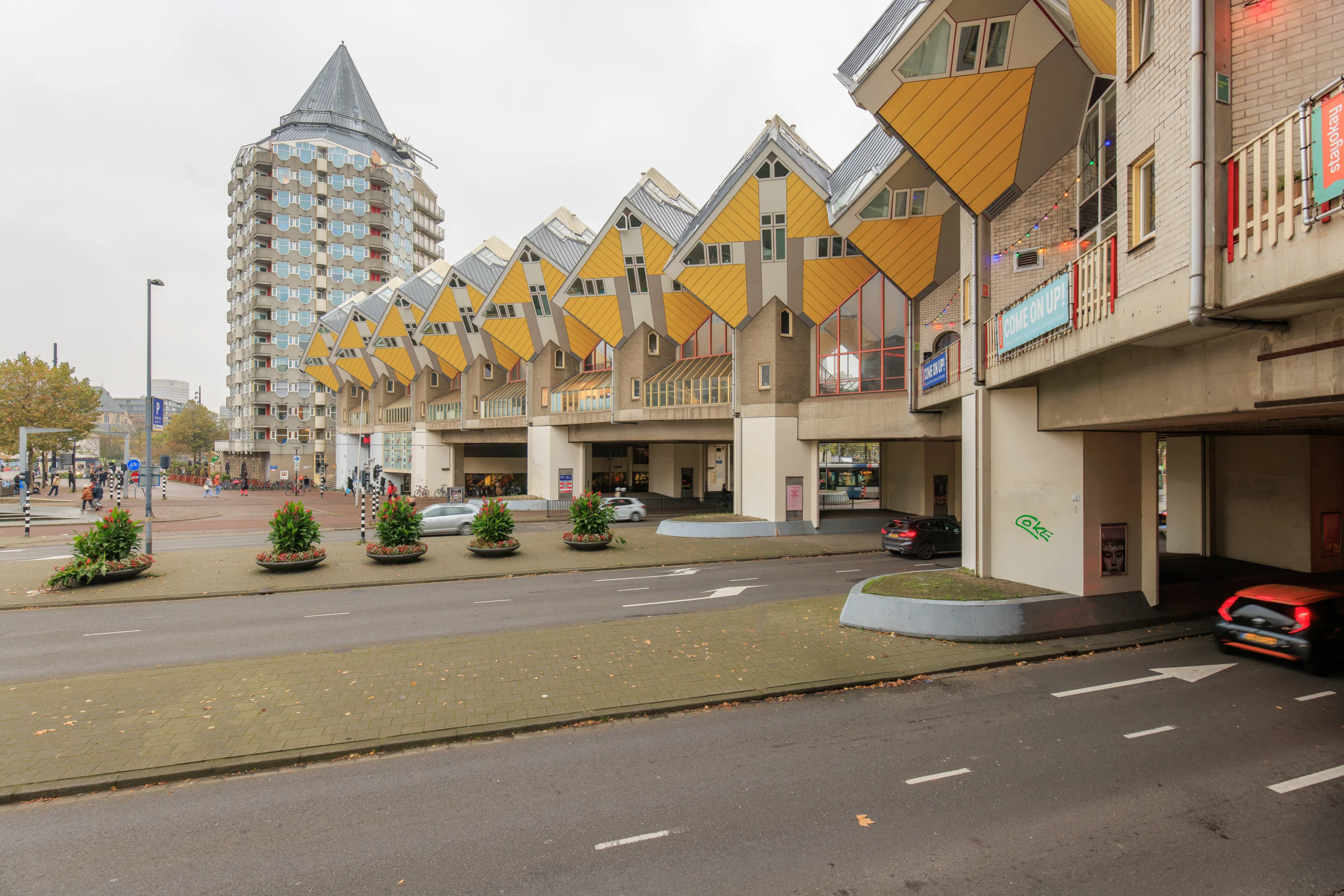
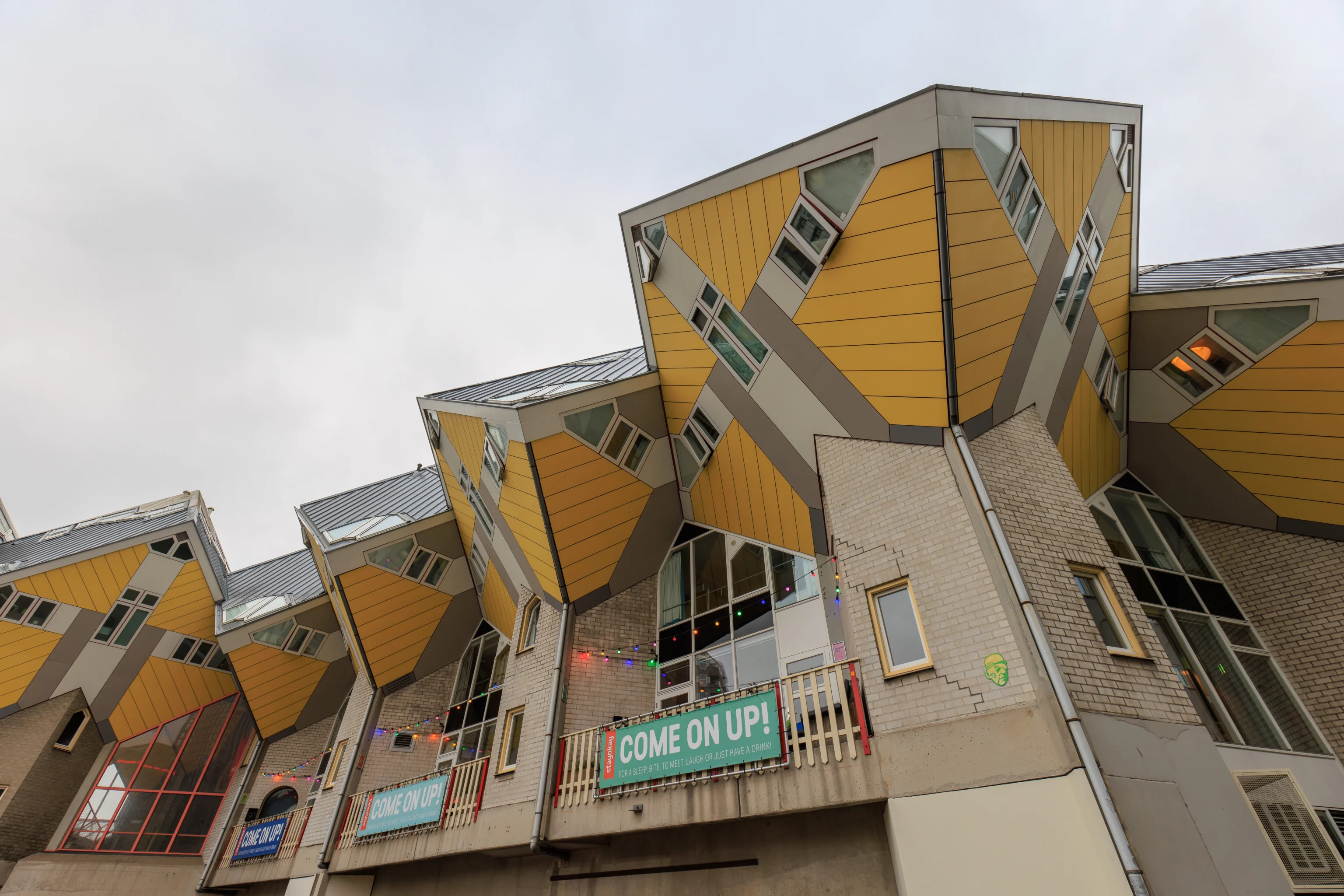
We headed back towards the Rotterdam Blaak station as the market that we wanted to visit is on the opposite side. We passed by the cubes again on our way.
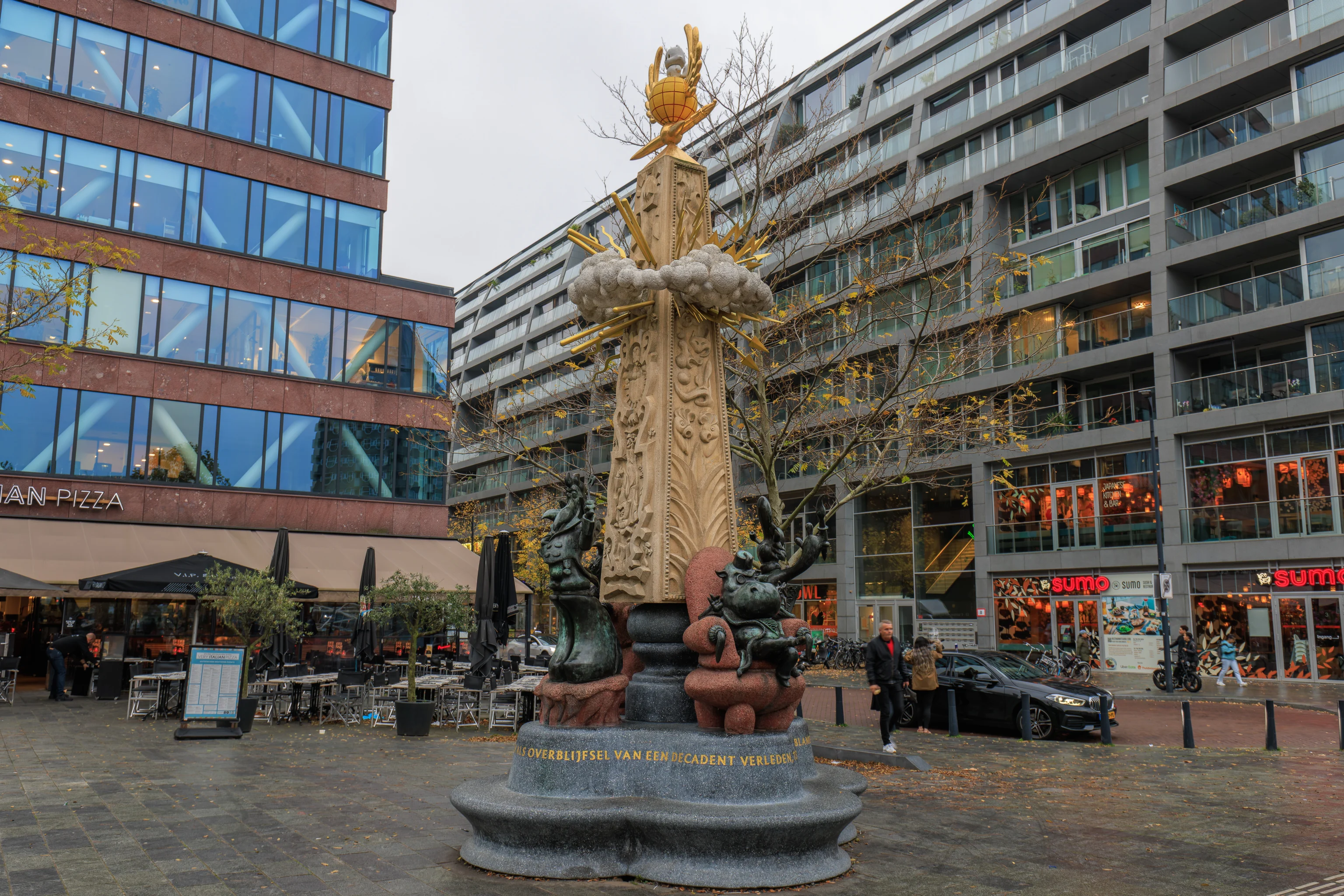
This is the Toonder Monument, which was built to honor a Rotterdam comic book artist, Marten Toonder.
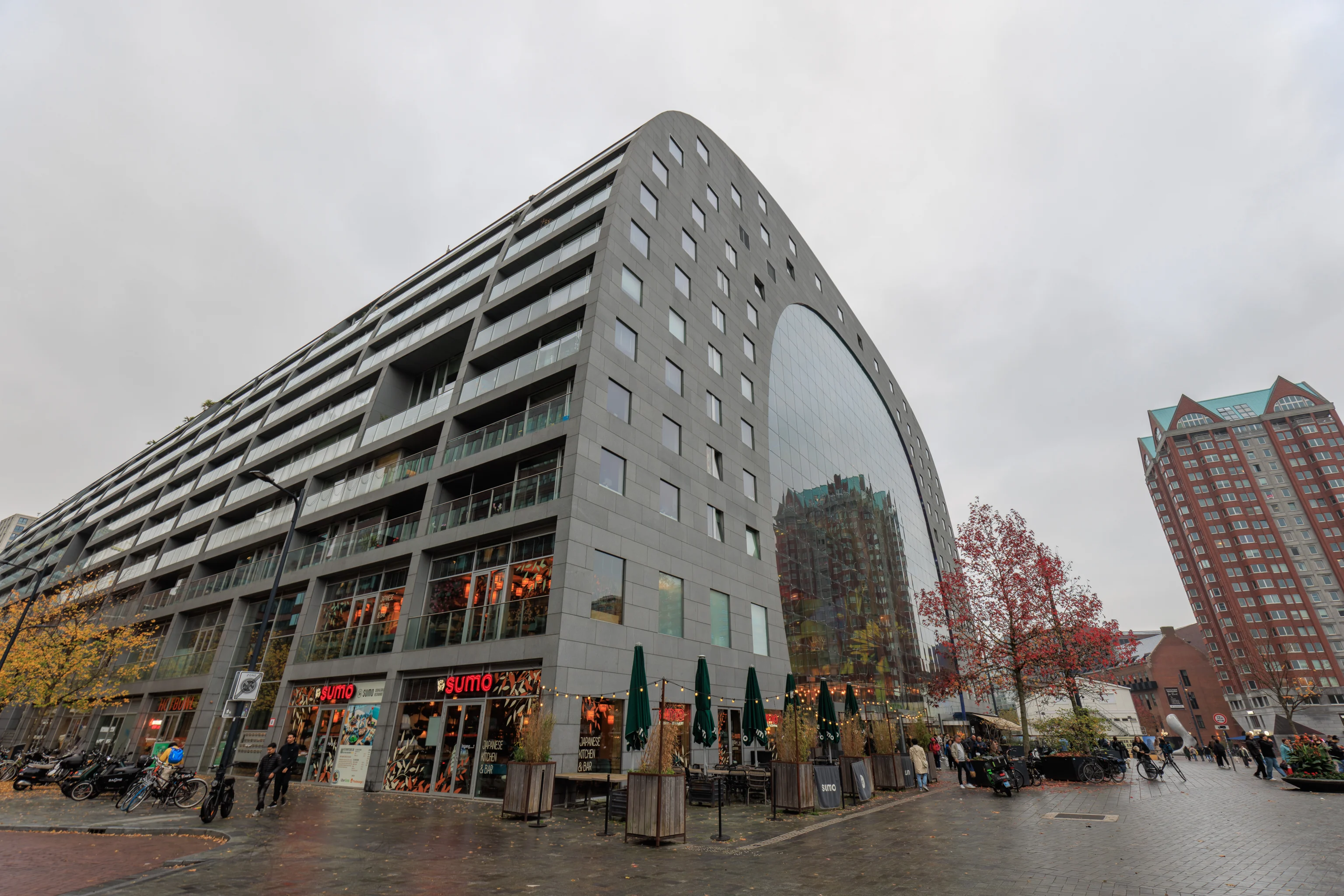
The Markthal (Market Hall) is located in a large modern building.
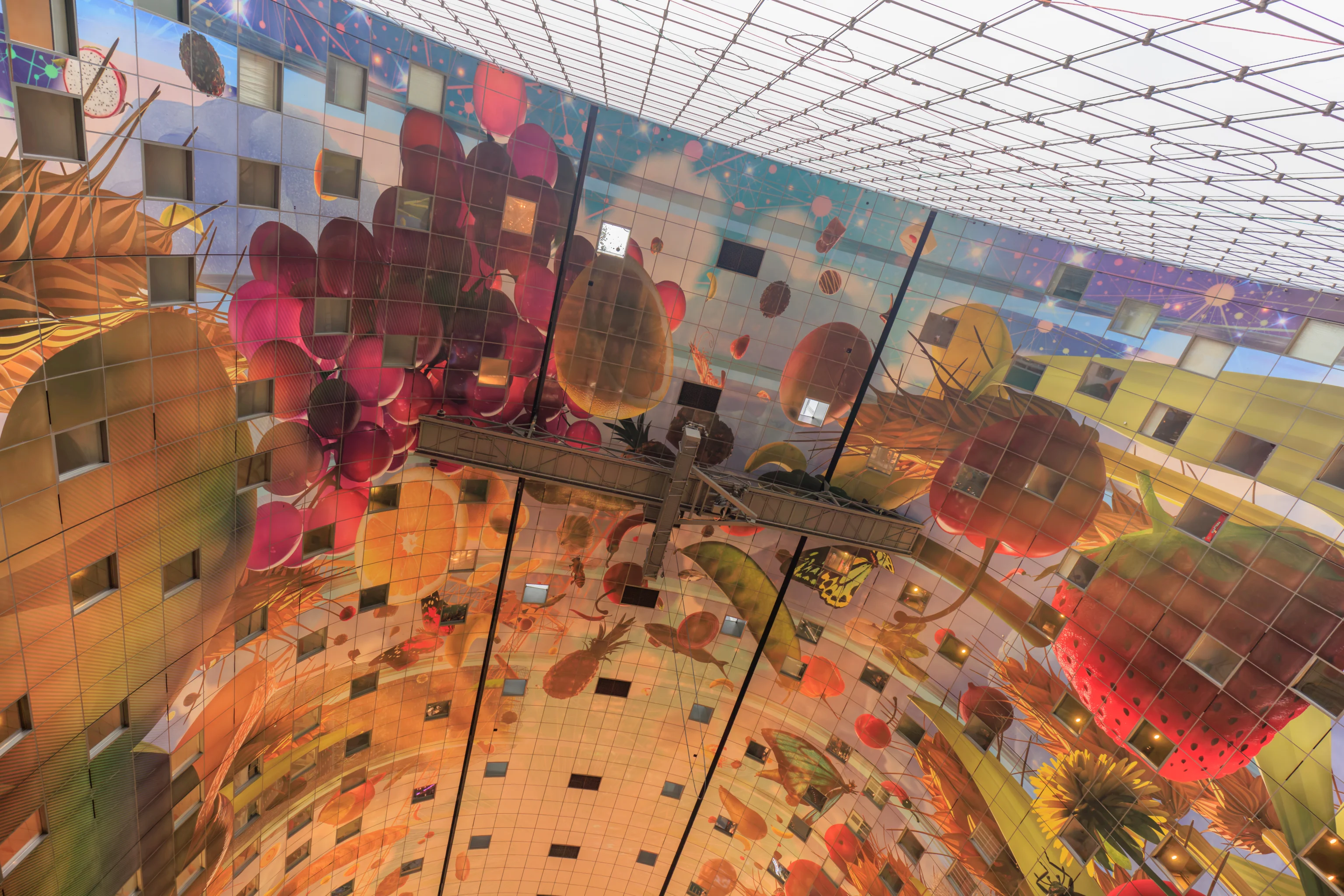
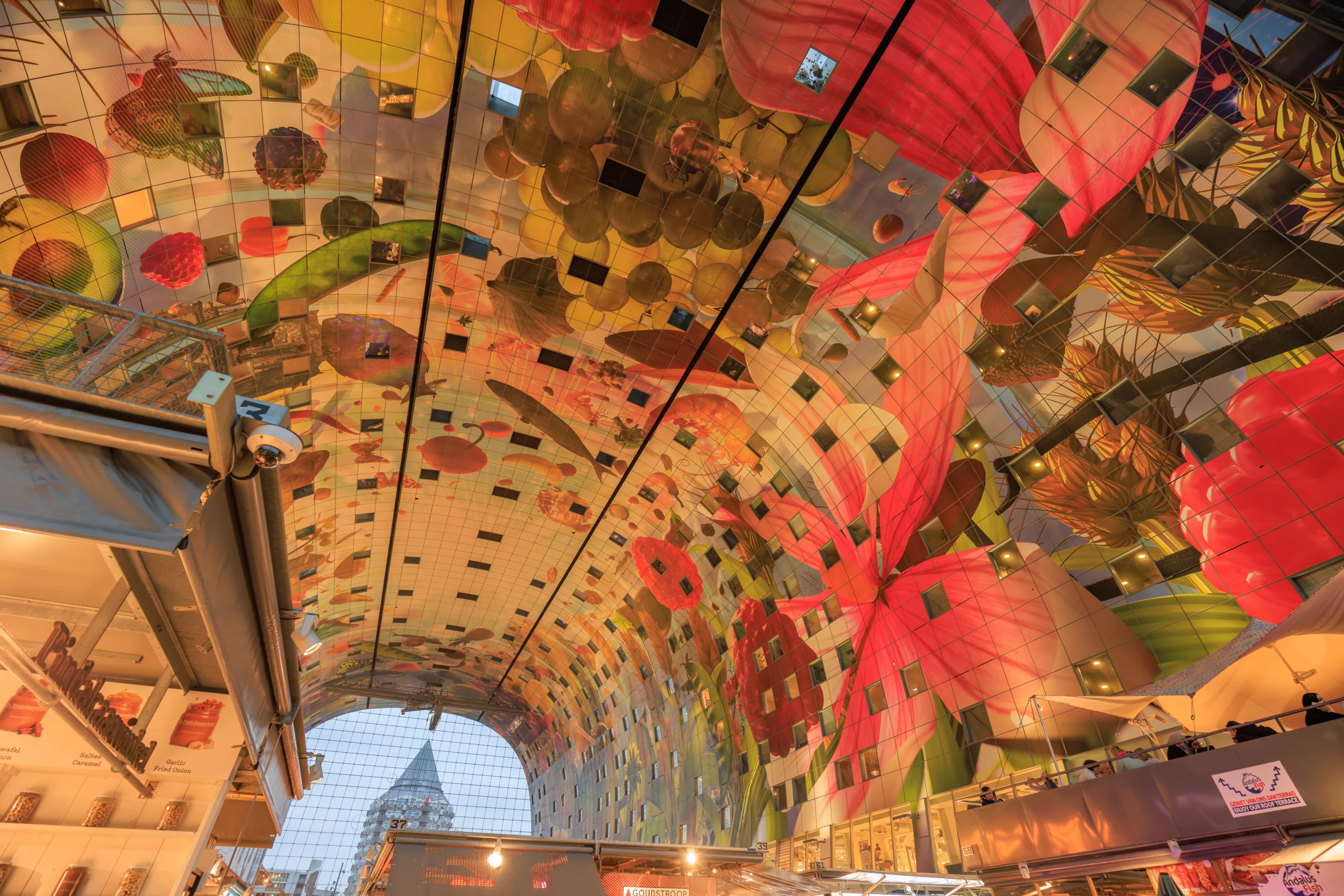
The Market Hall has an interestingly decorated interior! Also, there are windows up there! The ones at the very top seem to be skylights as well as ventilation ducts.
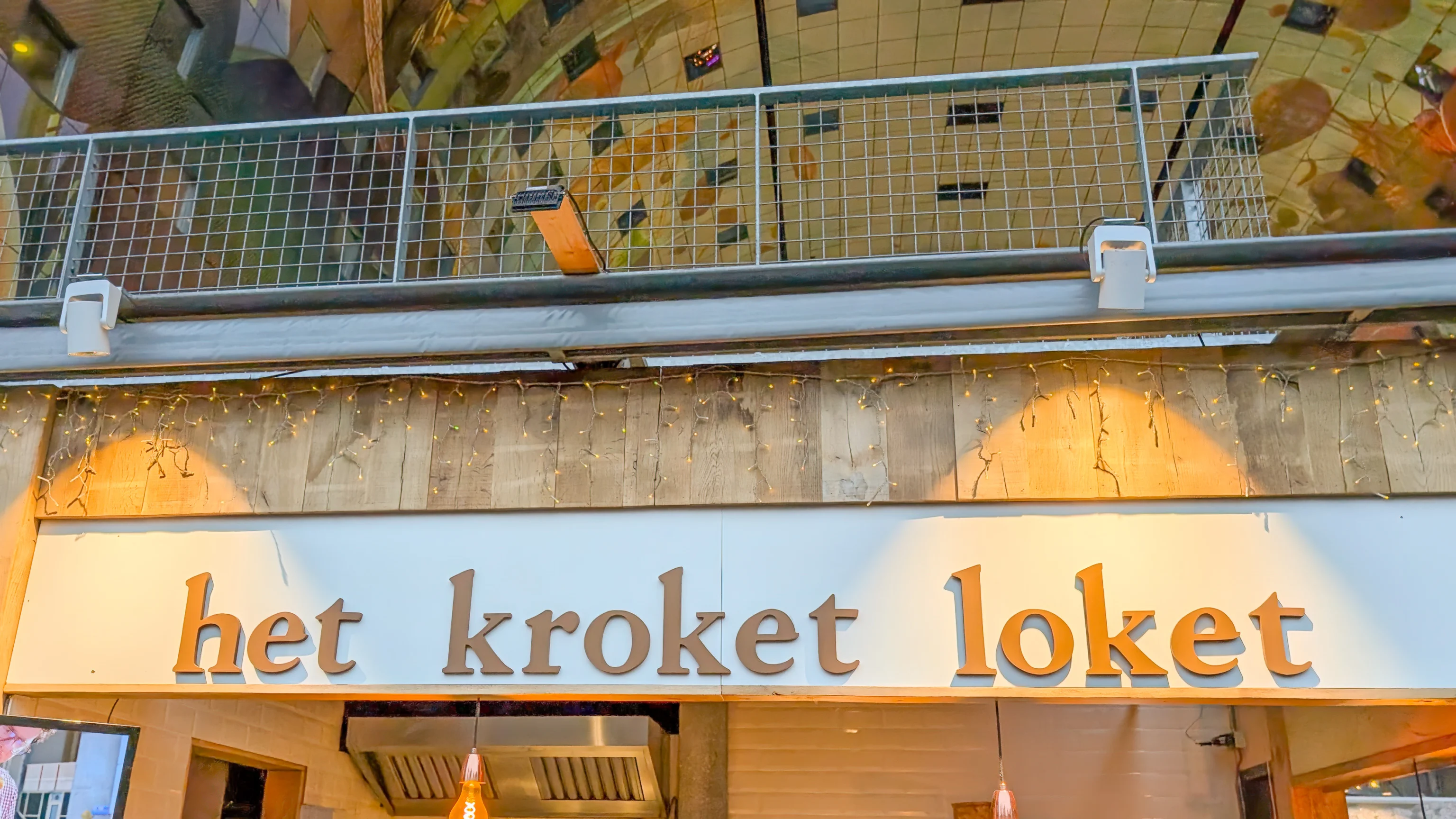
We spotted Het Kroket Loket (The Croquette Counter) right by the entrance. This counter sells Dutch croquettes.
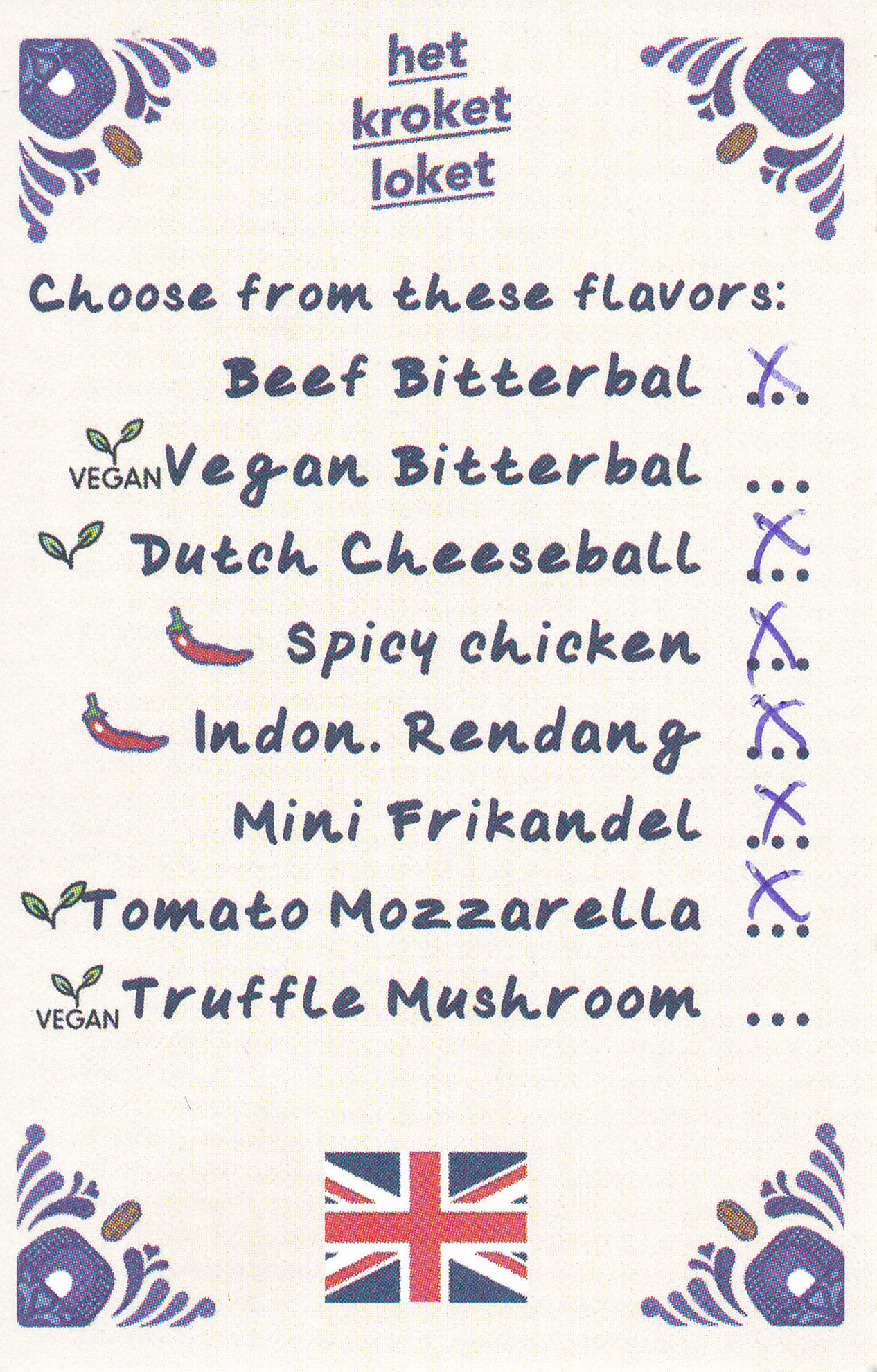
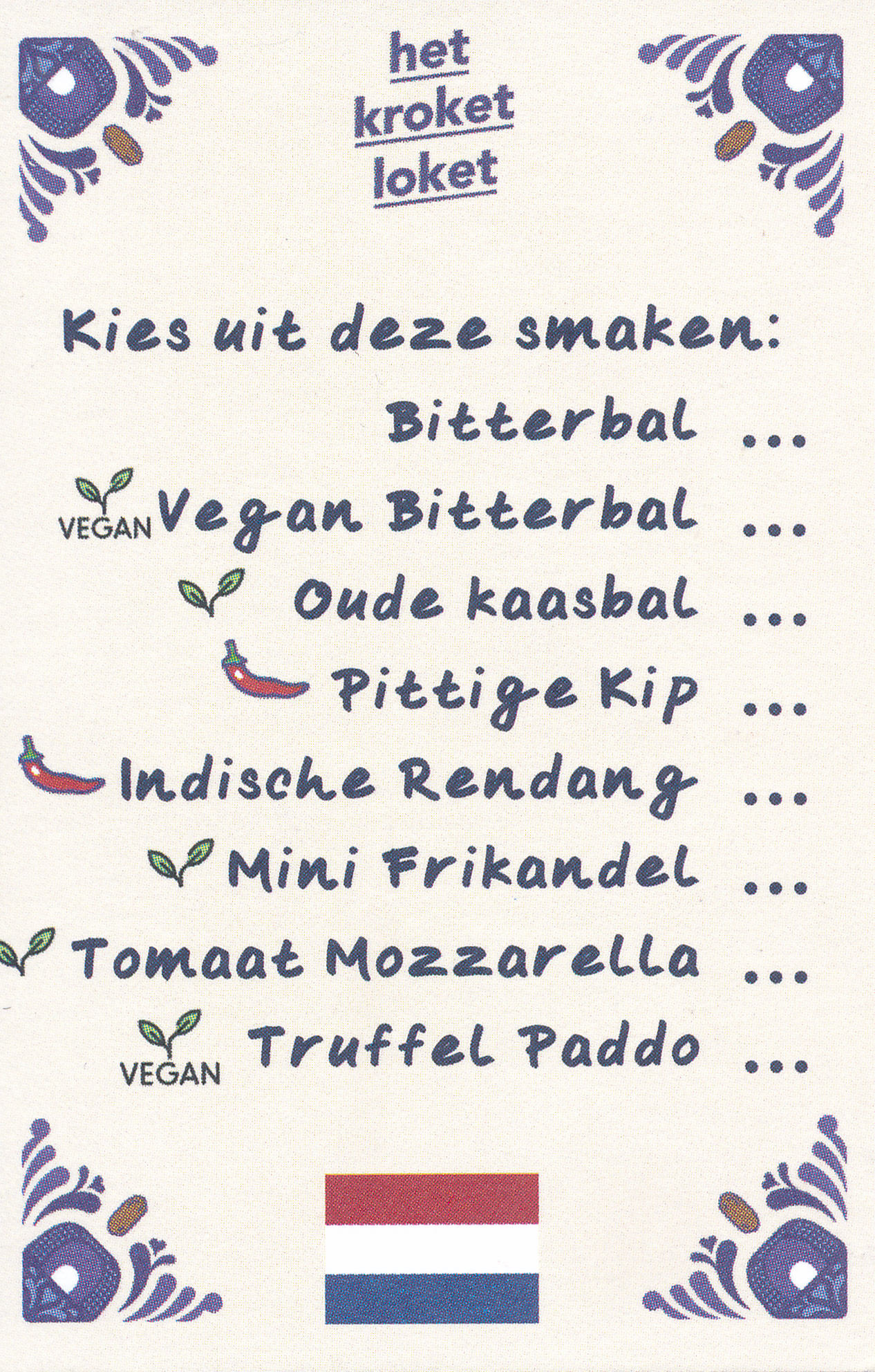
We ordered a sampler which includes any six items. Bitterballen are the standard Dutch style croquettes with a creamy beefy interior.
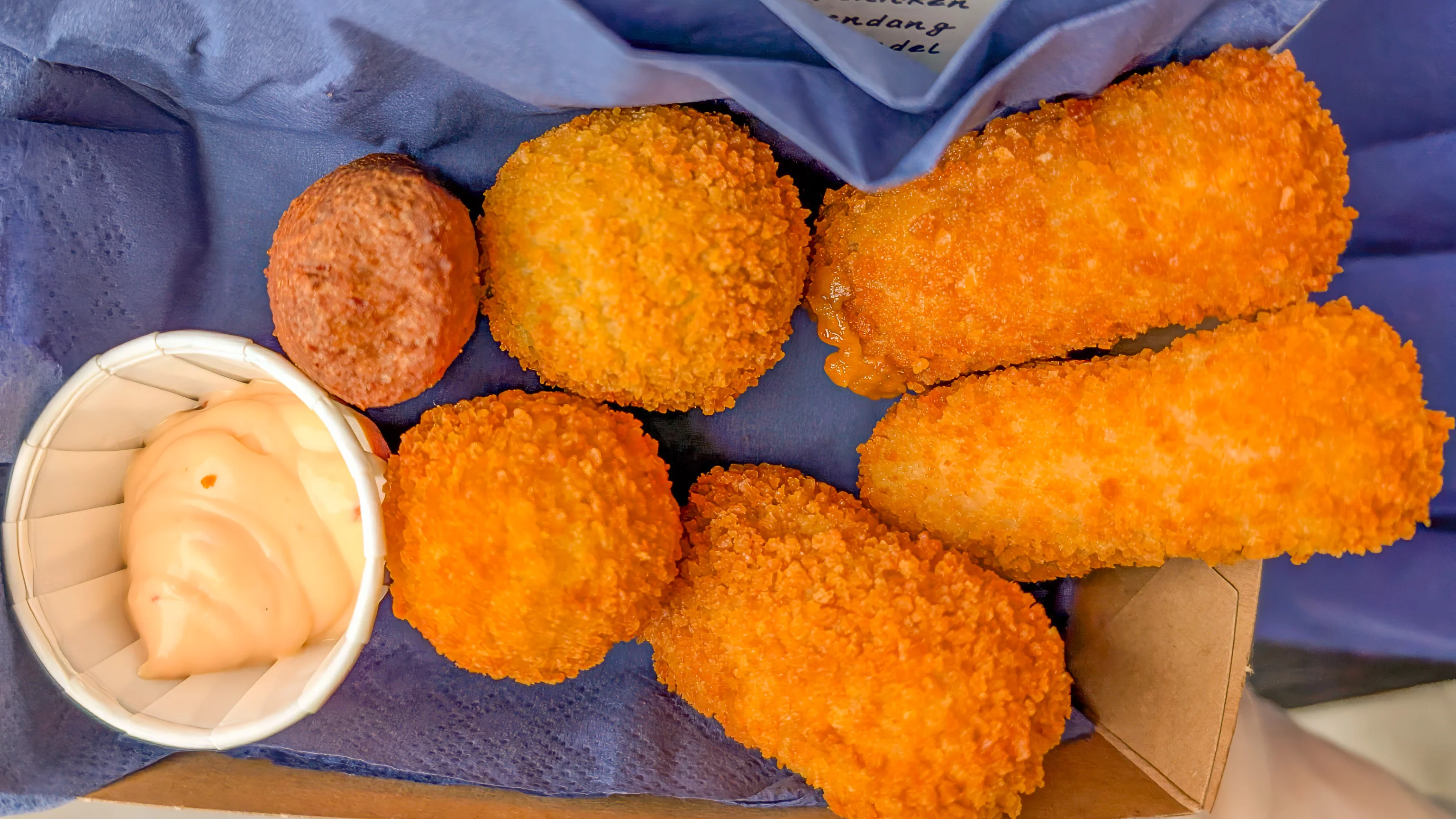
They come in a variety of shapes and sizes depending on the particular item. They were all very good!
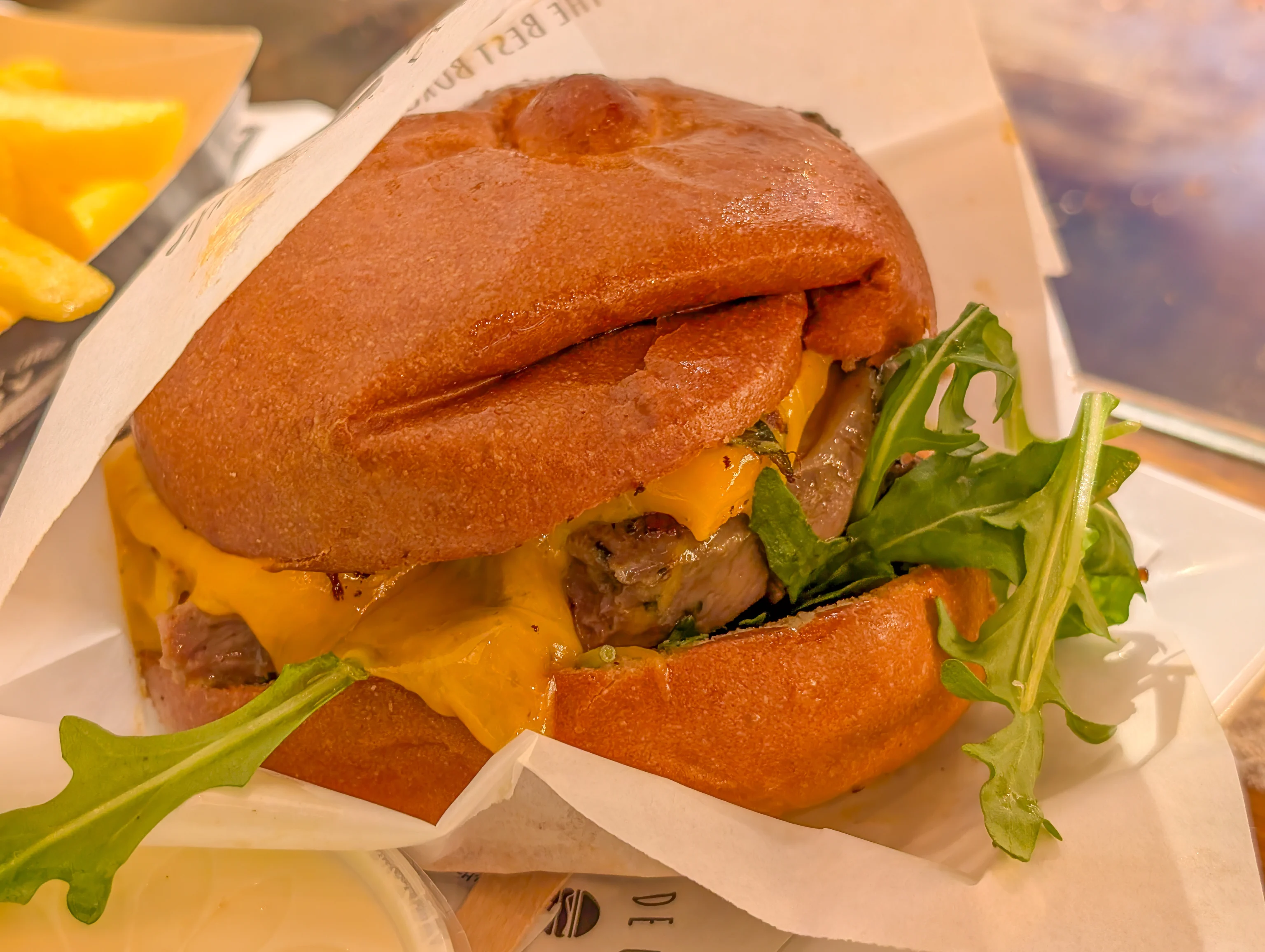
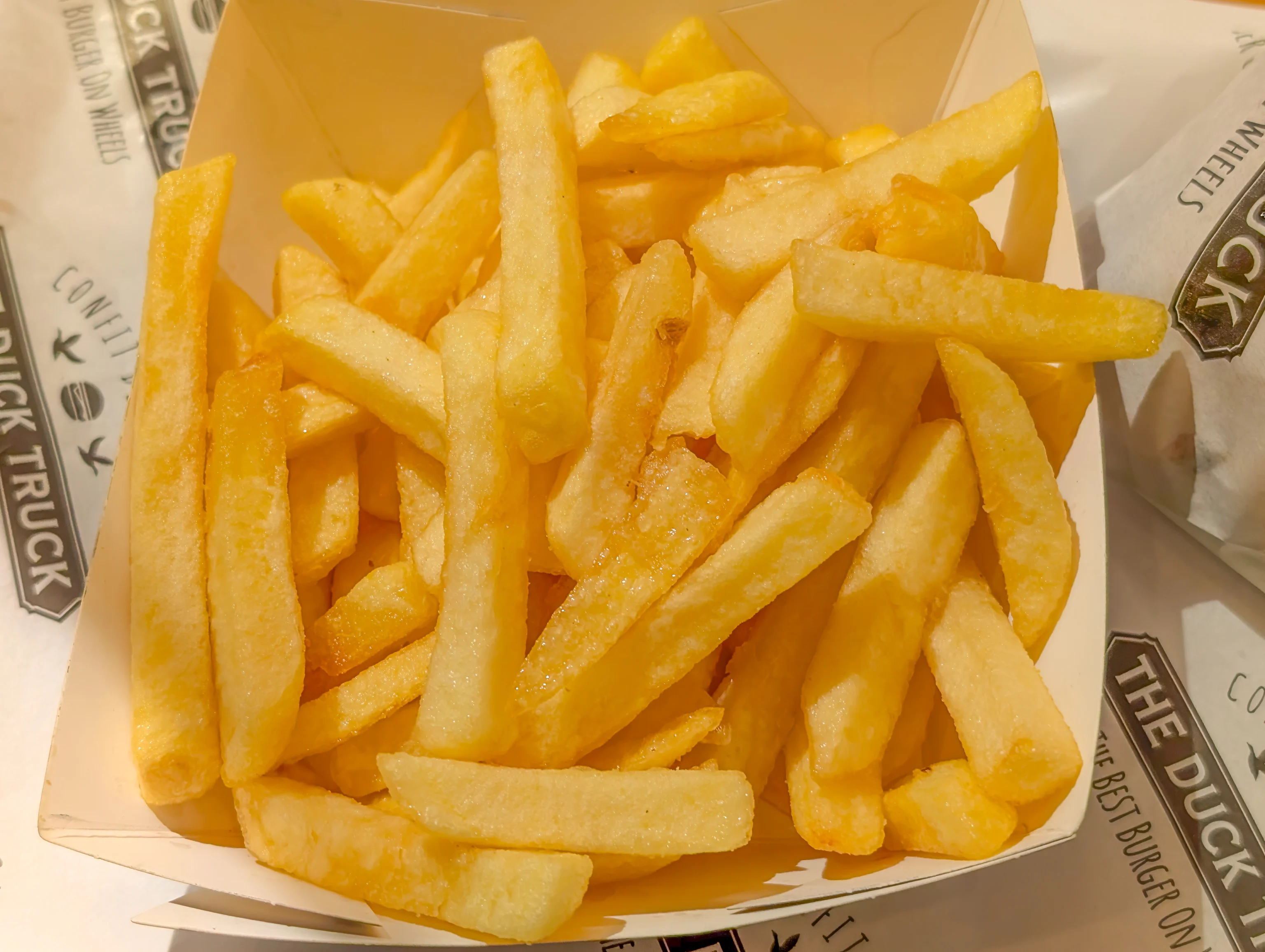
Our next stop The Duck Truck. As the name suggests, they serve duck burgers. According to their website, they have two shops and a food truck. They were pretty busy when we arrived with many customers seated and others waiting to get their orders. We got one with fries. The burger very good and the fries were very well fried.
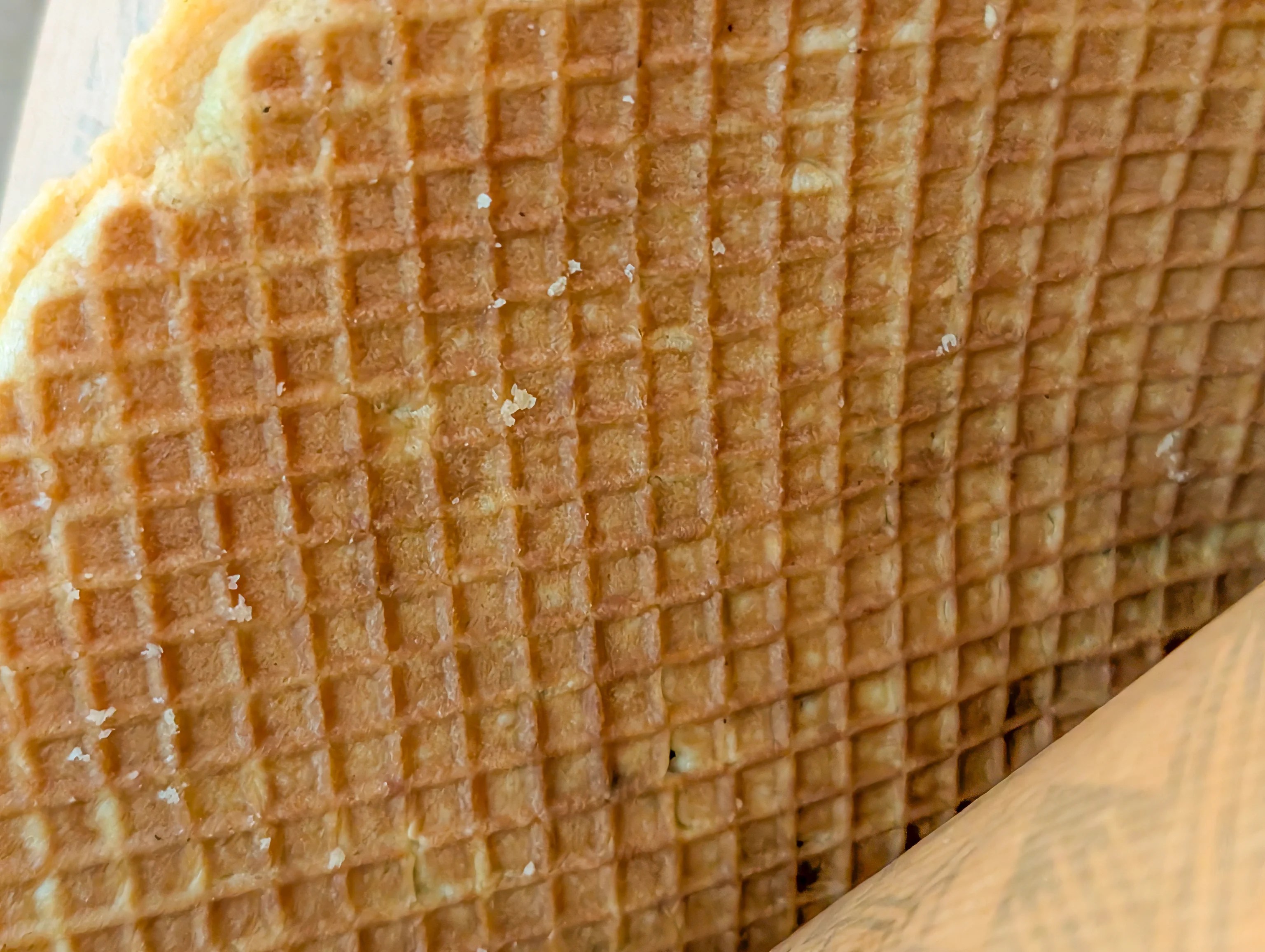
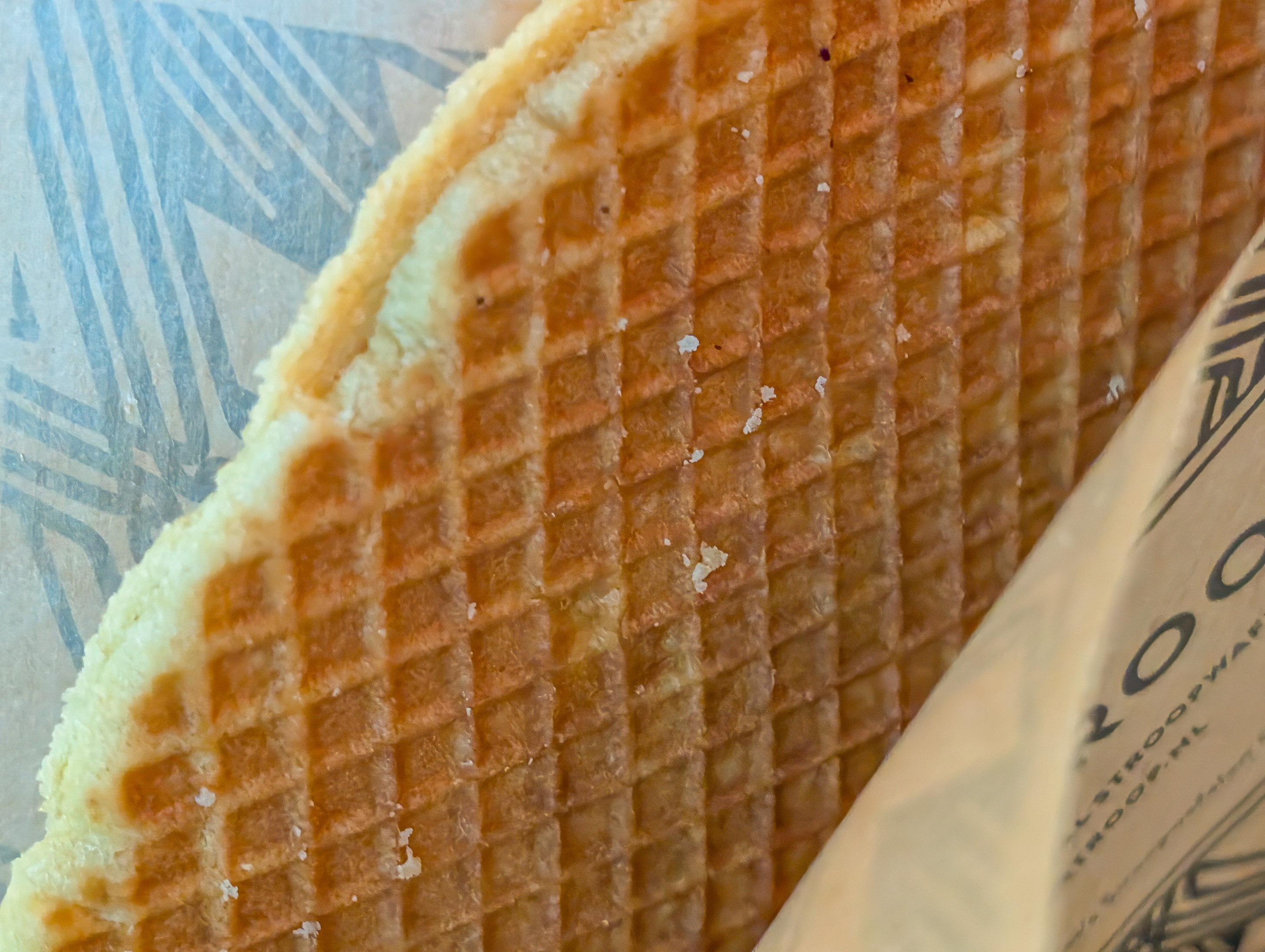
After the burger, we decided to get a stroopwafel from Goudstroop. We decided on pistachio rather than the standard caramel filling. It was different from the one we had in Amsterdam as it was pretty floppy, and the pistachio filling wasn’t well applied so didn’t go edge to edge.
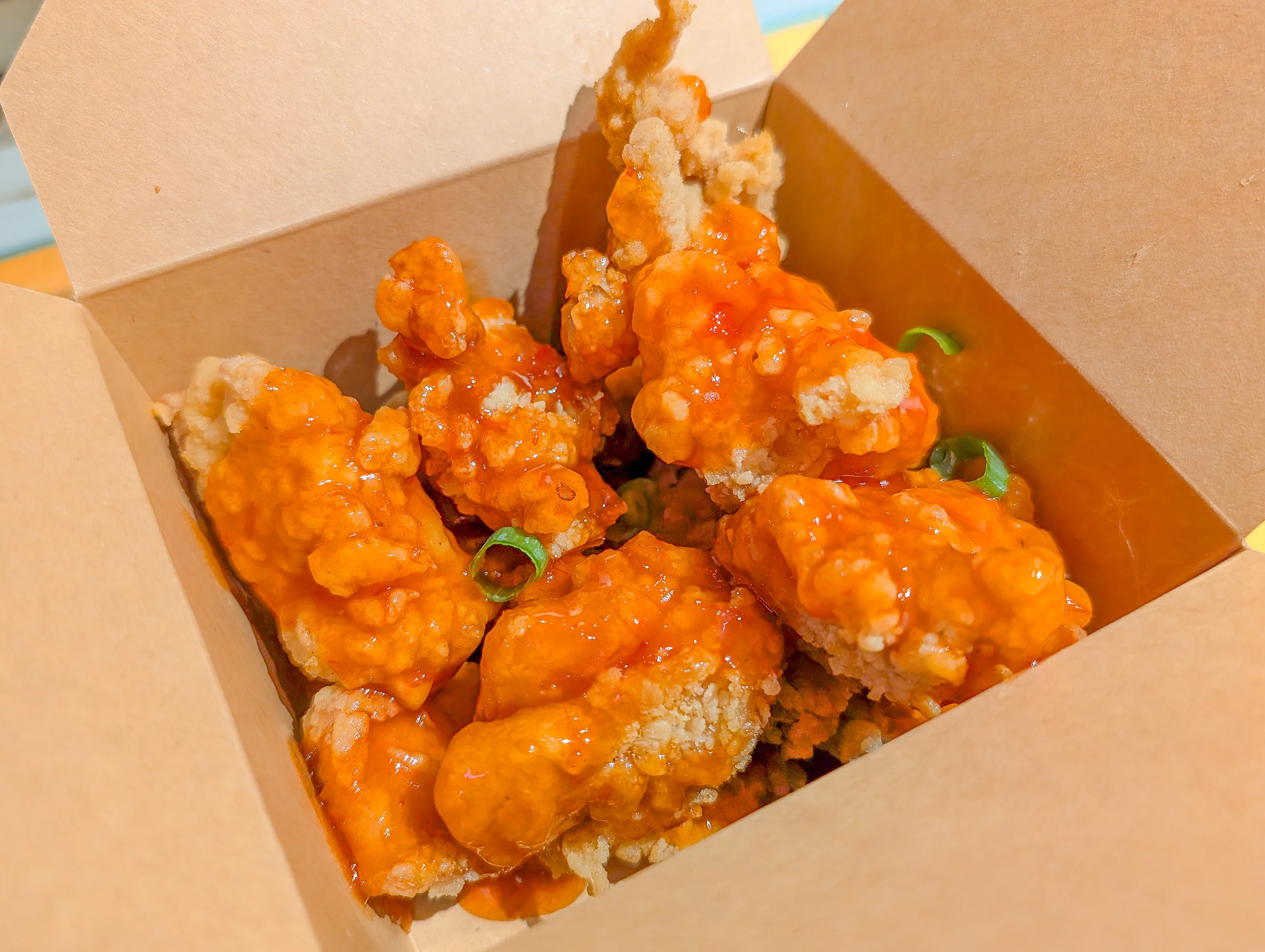
Our next stop was Miss Chara, which serves Korean fried chicken. We got the sweet chili flavor, which was very much like Chick-fil-A’s sweet sriracha sauce.
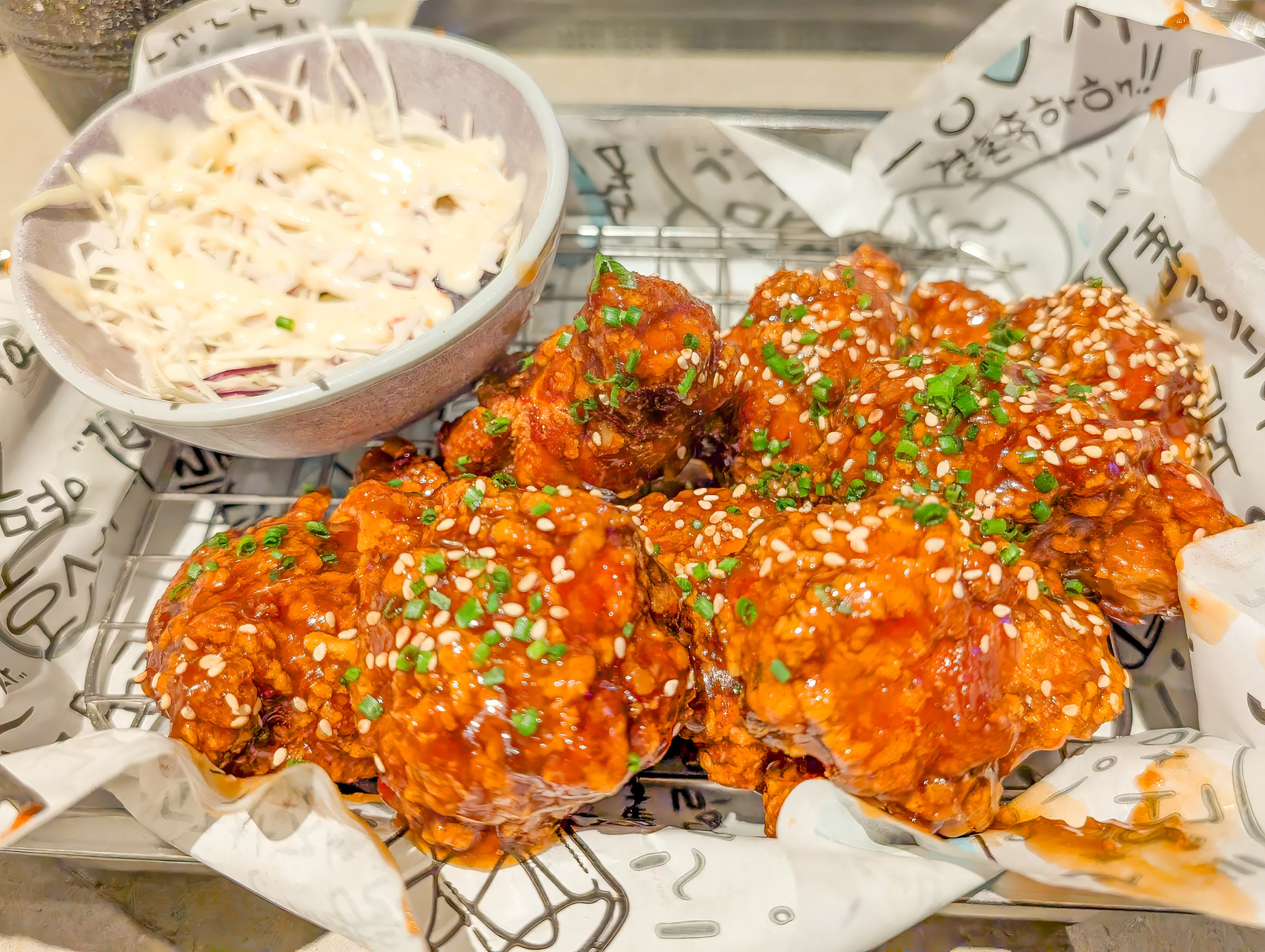
We ended our visit at Sojubar, a full sized restaurant on the side of the Market Hall. It was quite busy but we managed to get seated right away at the bar. We started with the soy garlic Korean fried chicken. It was quite a bit of chicken, particularly as we were already full!
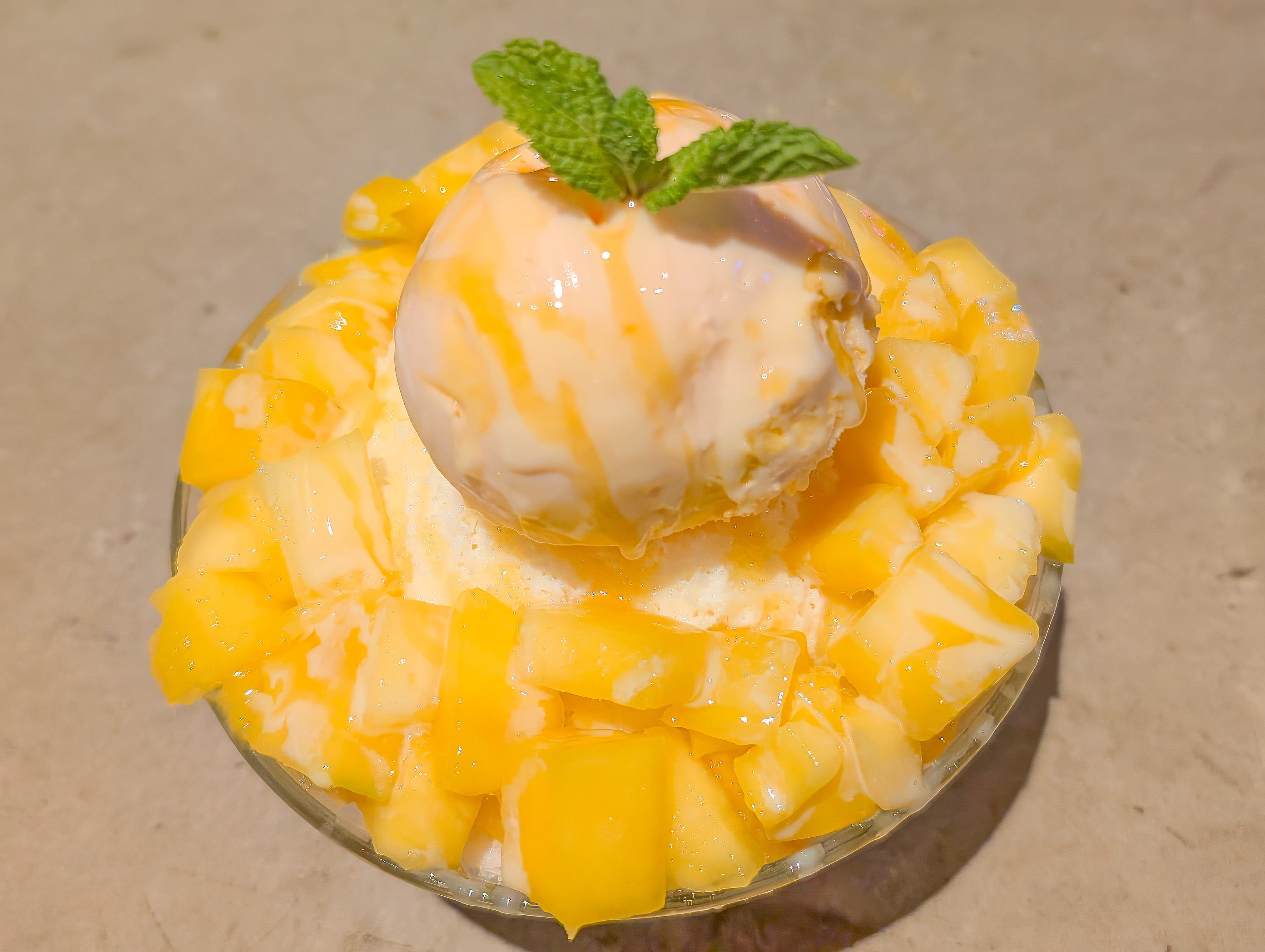
We also ordered a mango bingsoo. They had very good milk snow. The mango was decent too, not the best but better than most places we’ve been to in America which can’t seem to get good mango.
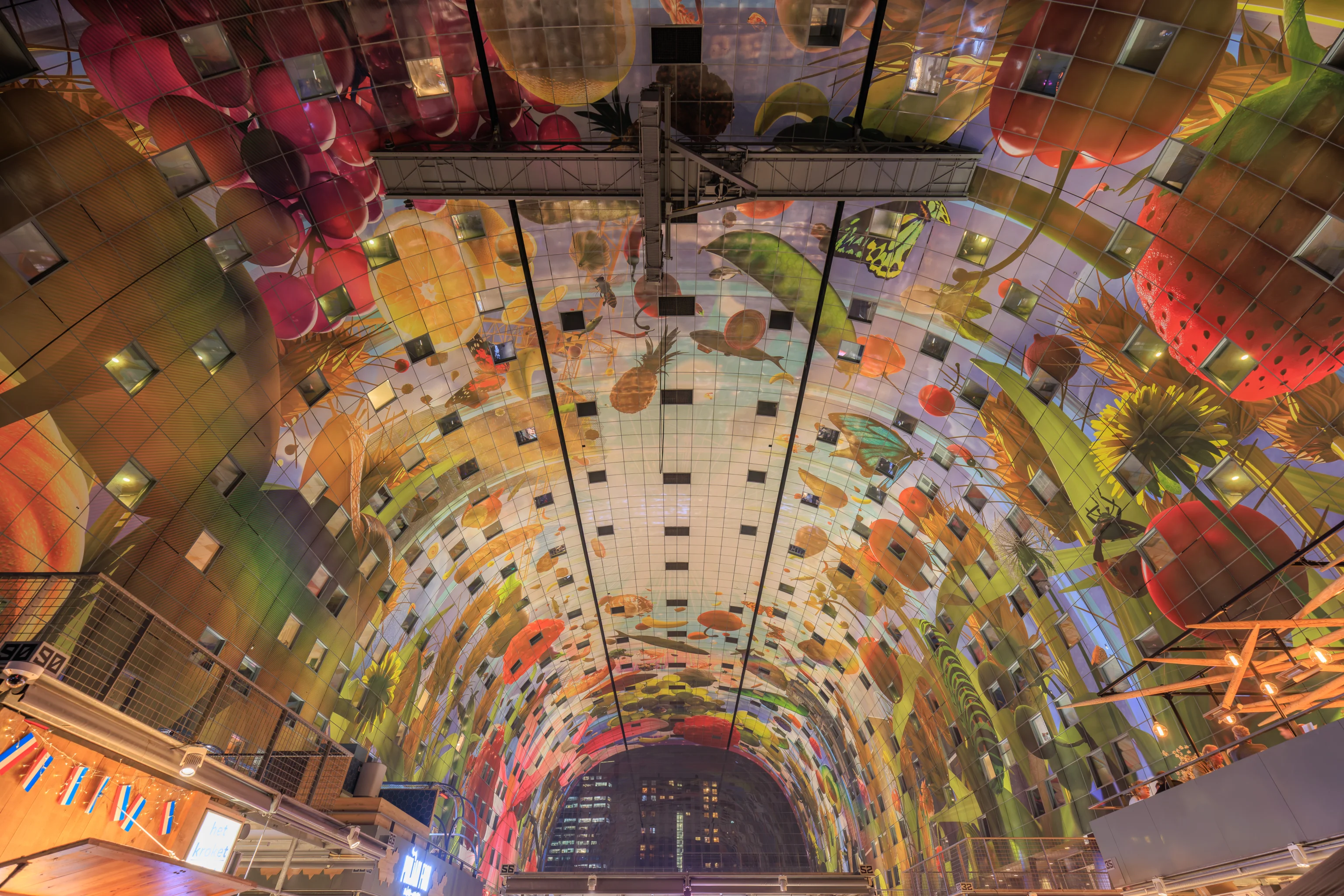
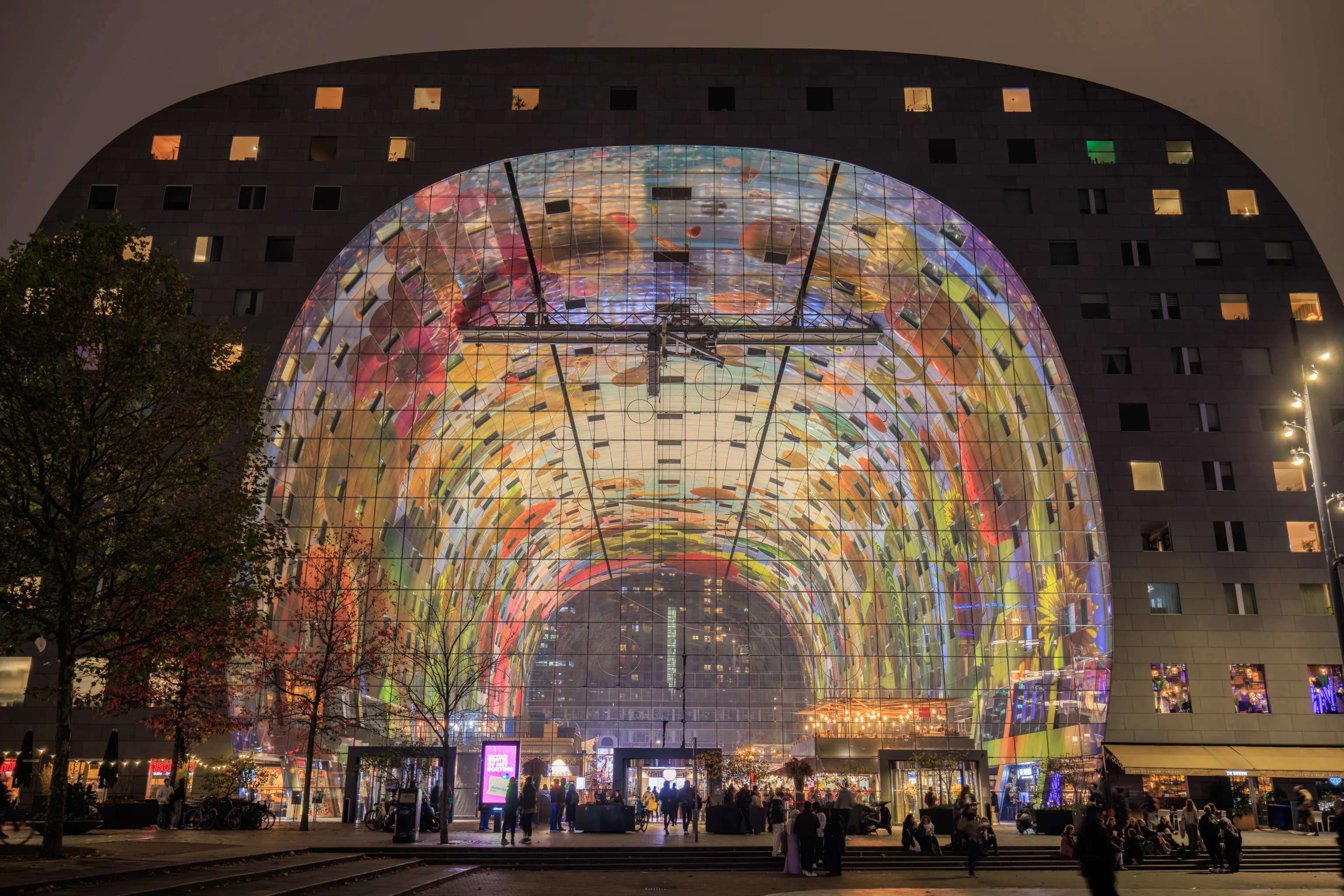
Although it was dark out by the time we finished eating, it was still only 6:15pm. We returned to Rotterdam Blaak and then to Rotterdam Centraal where we caught a train back to Amsterdam to end the day.
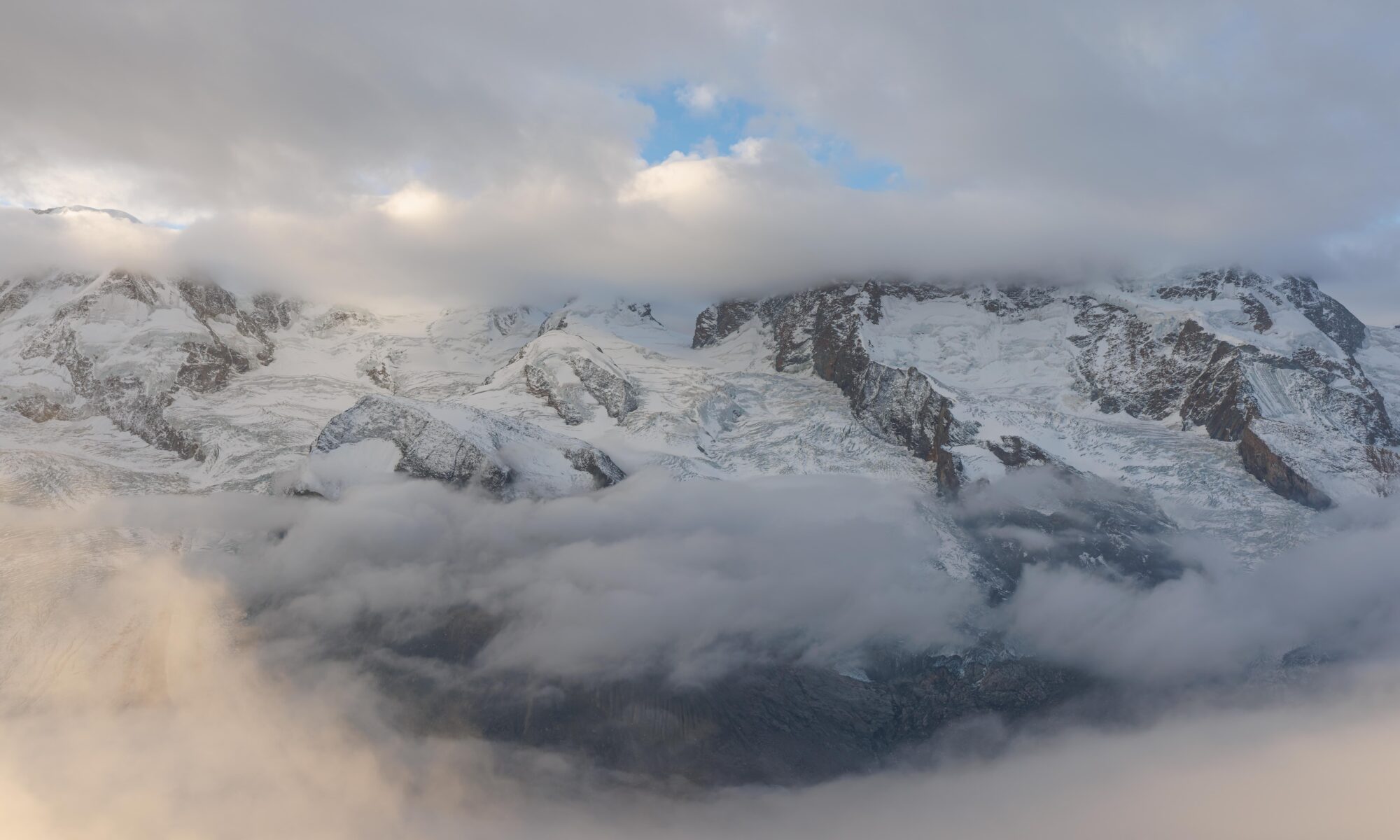
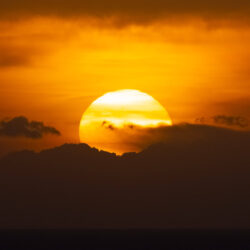
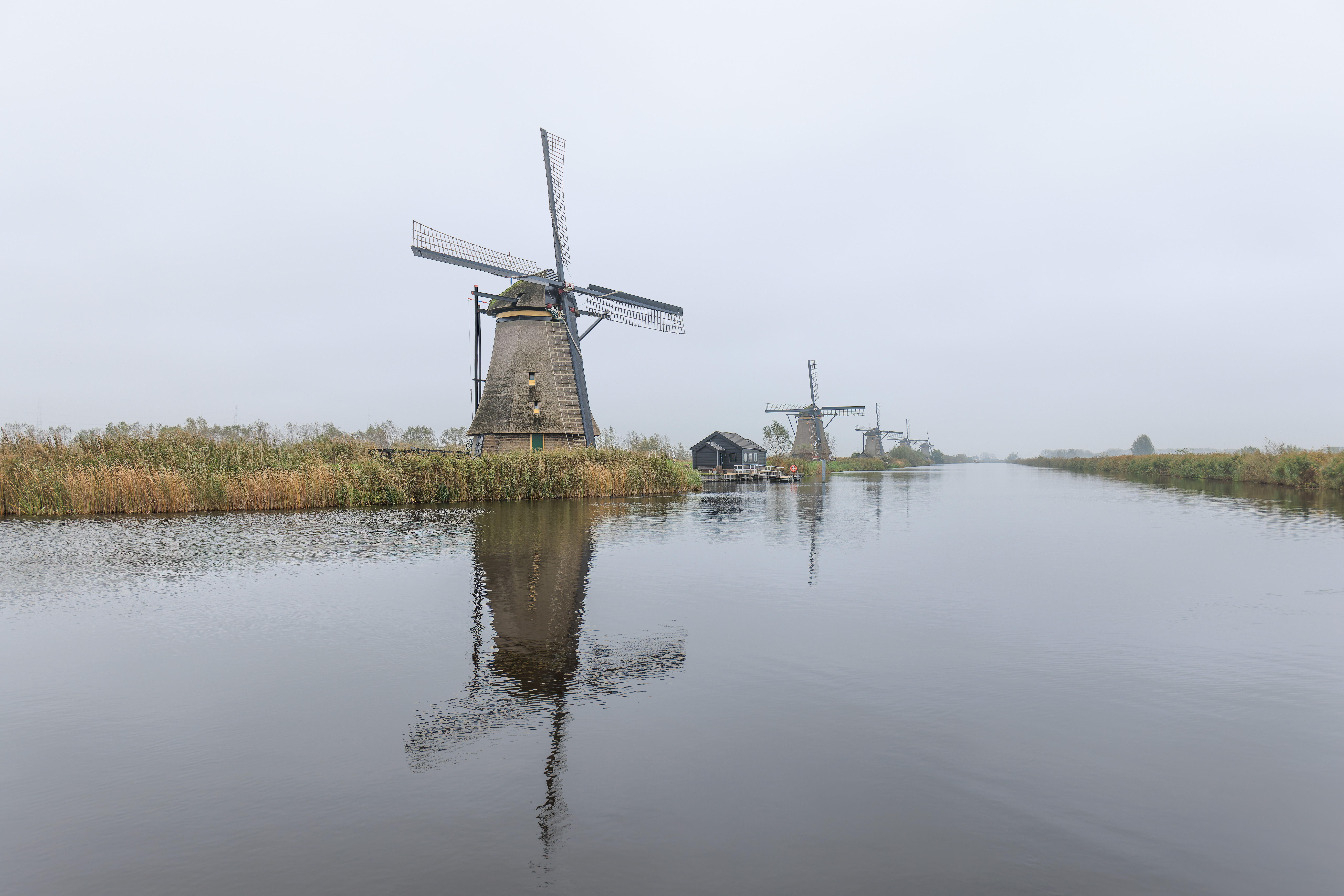
One Reply to “Kinderdijk and Rotterdam”